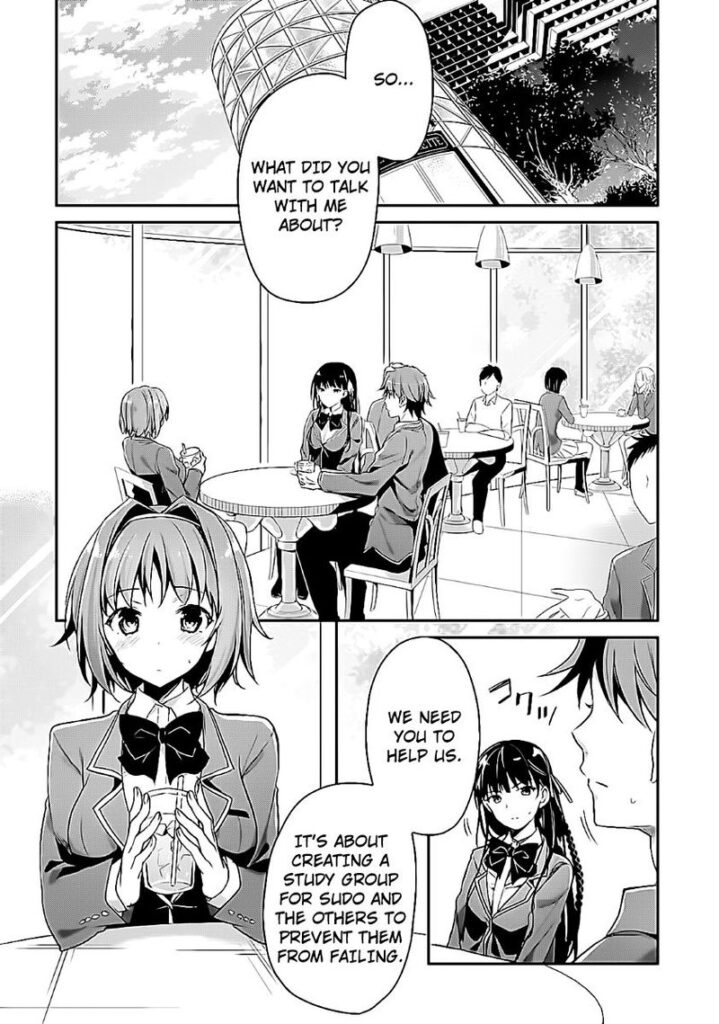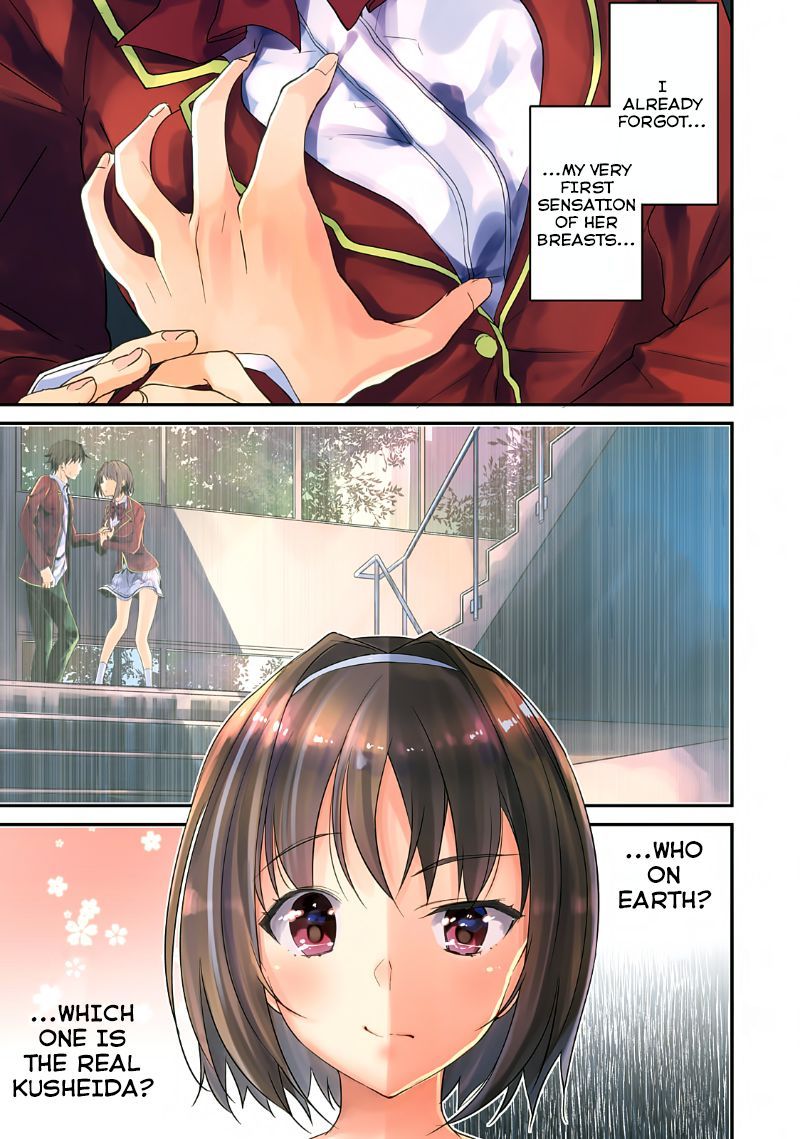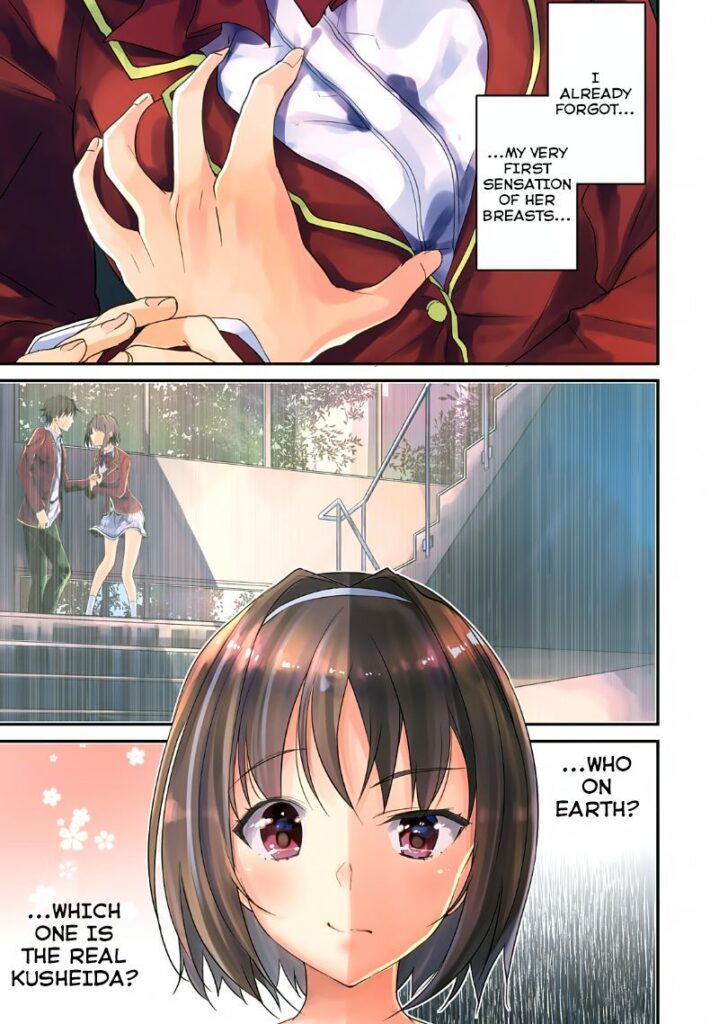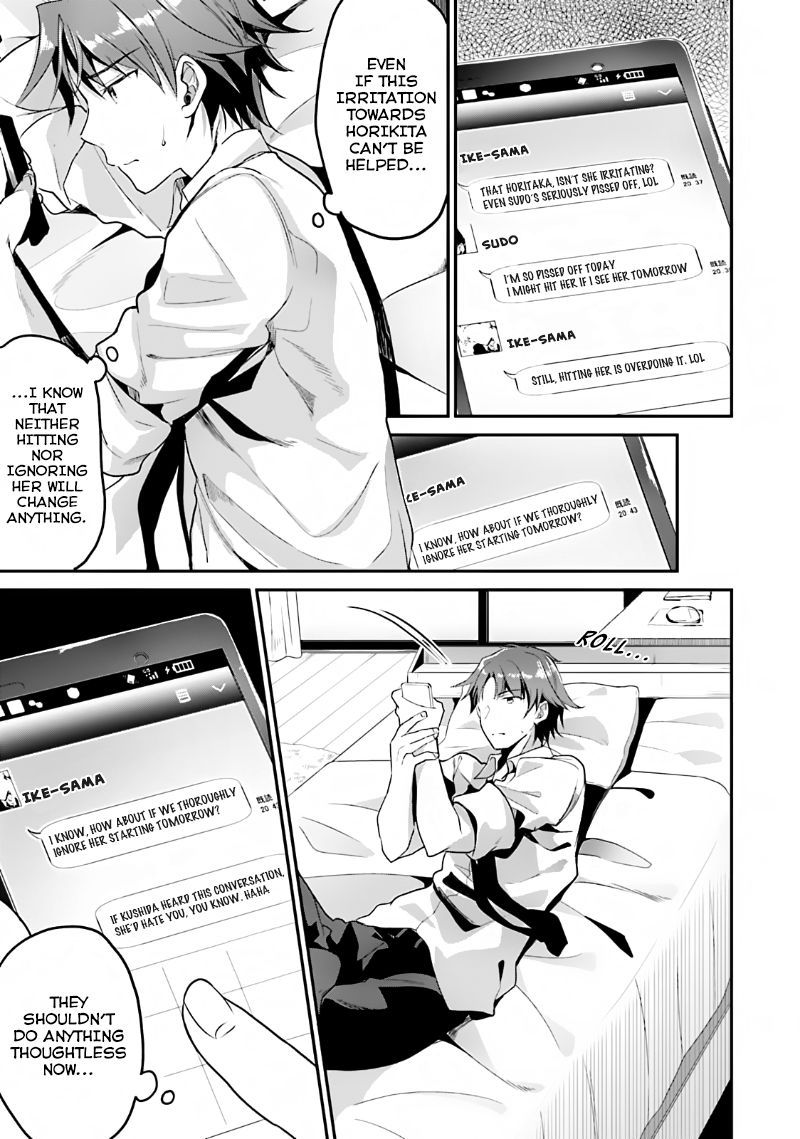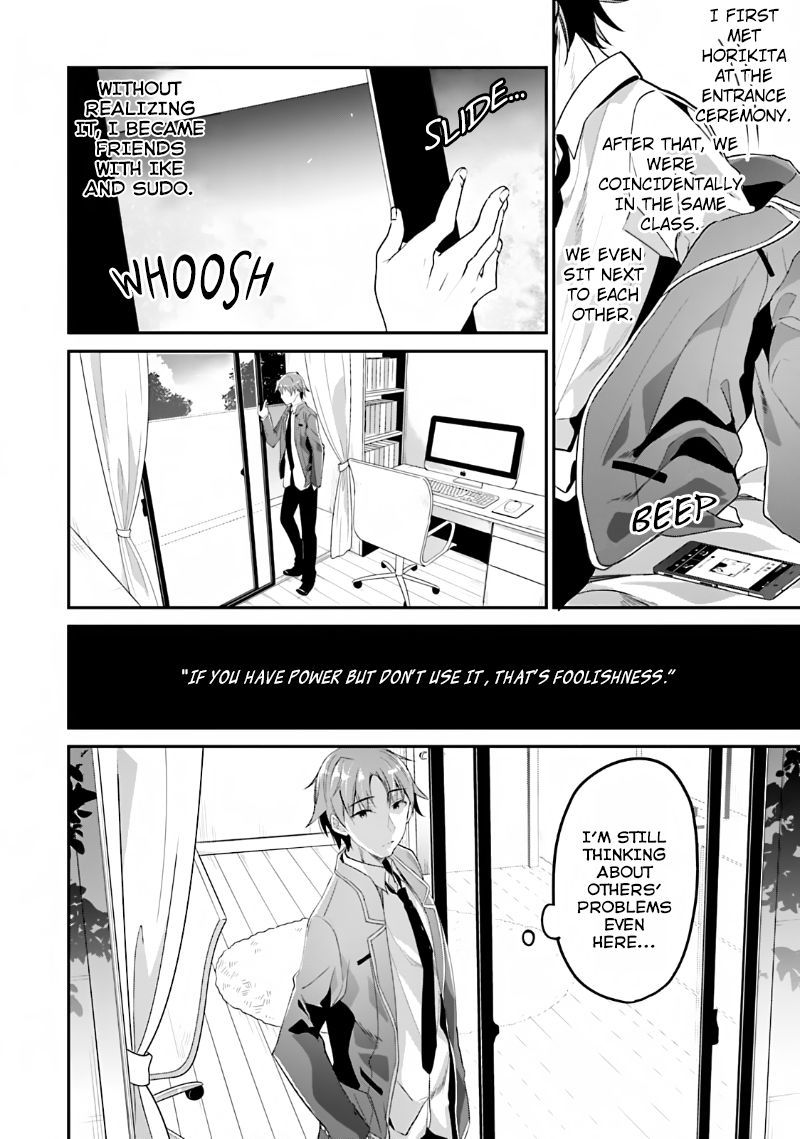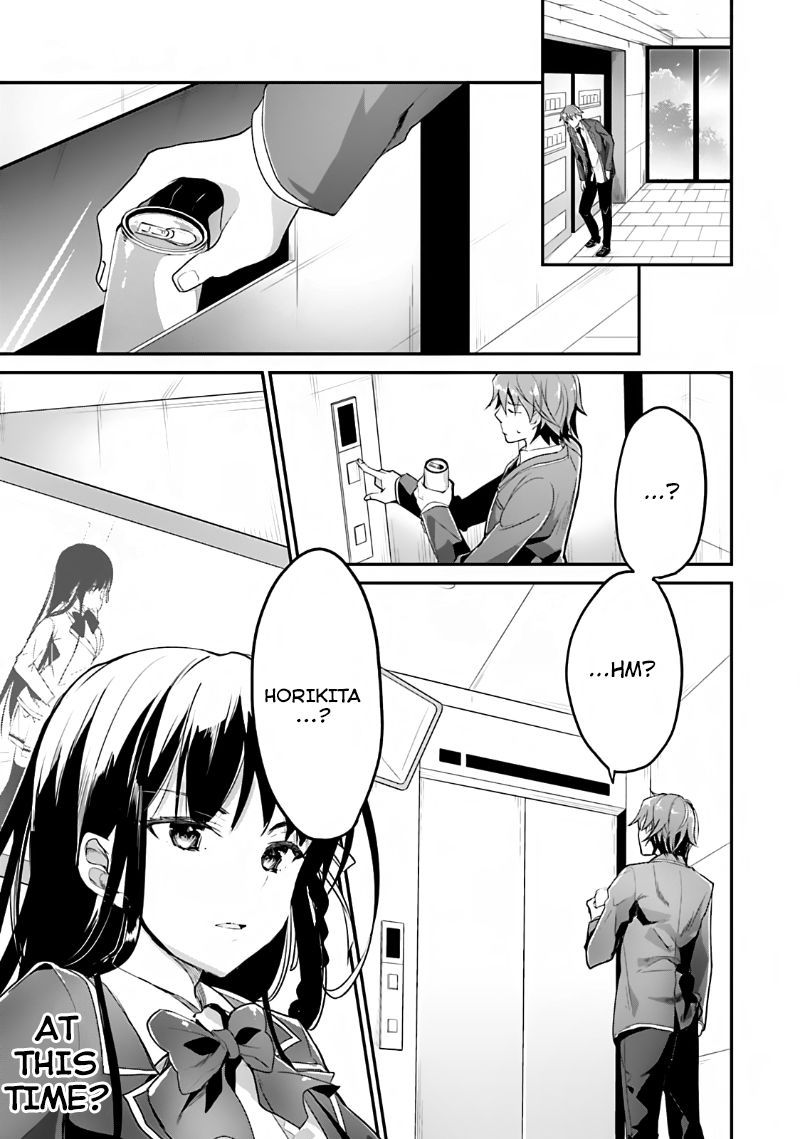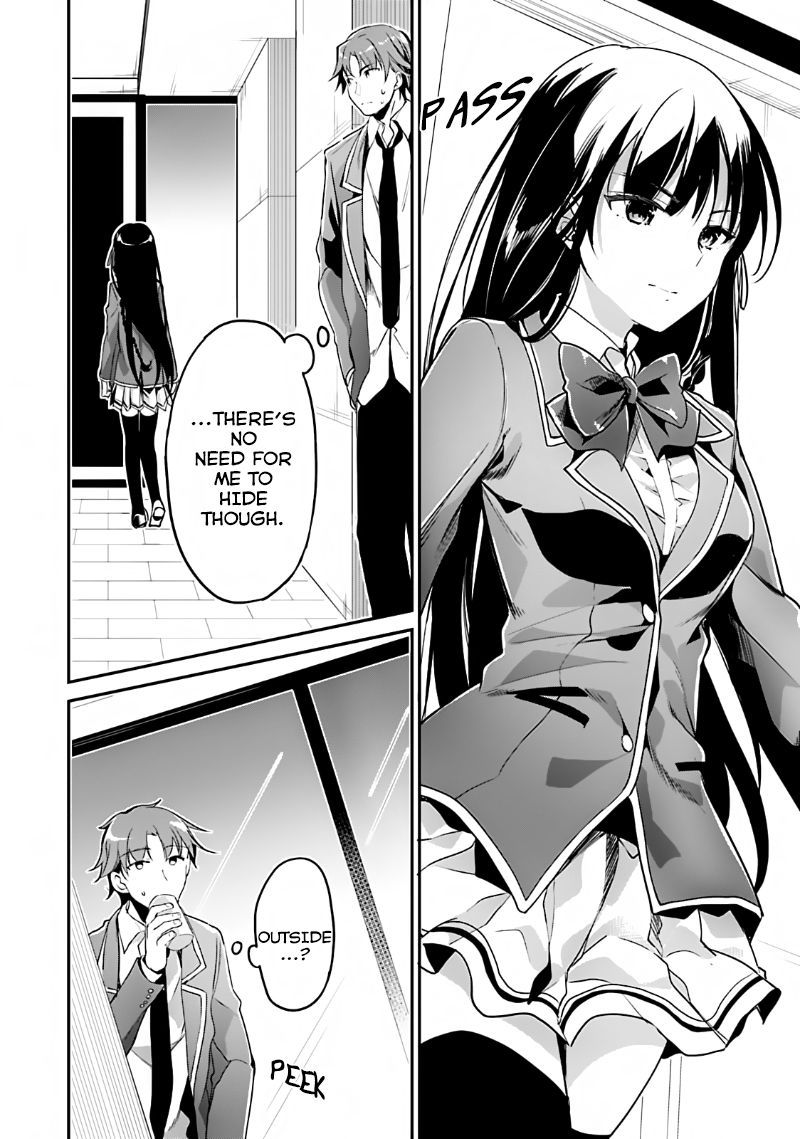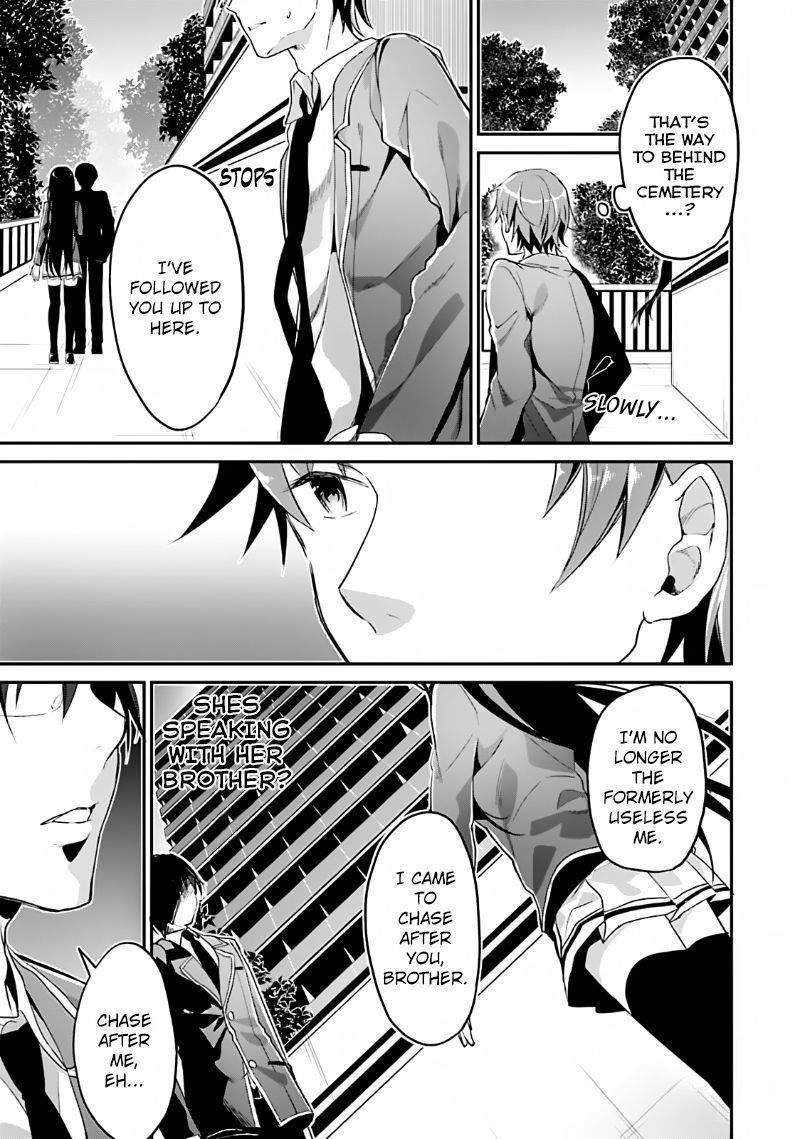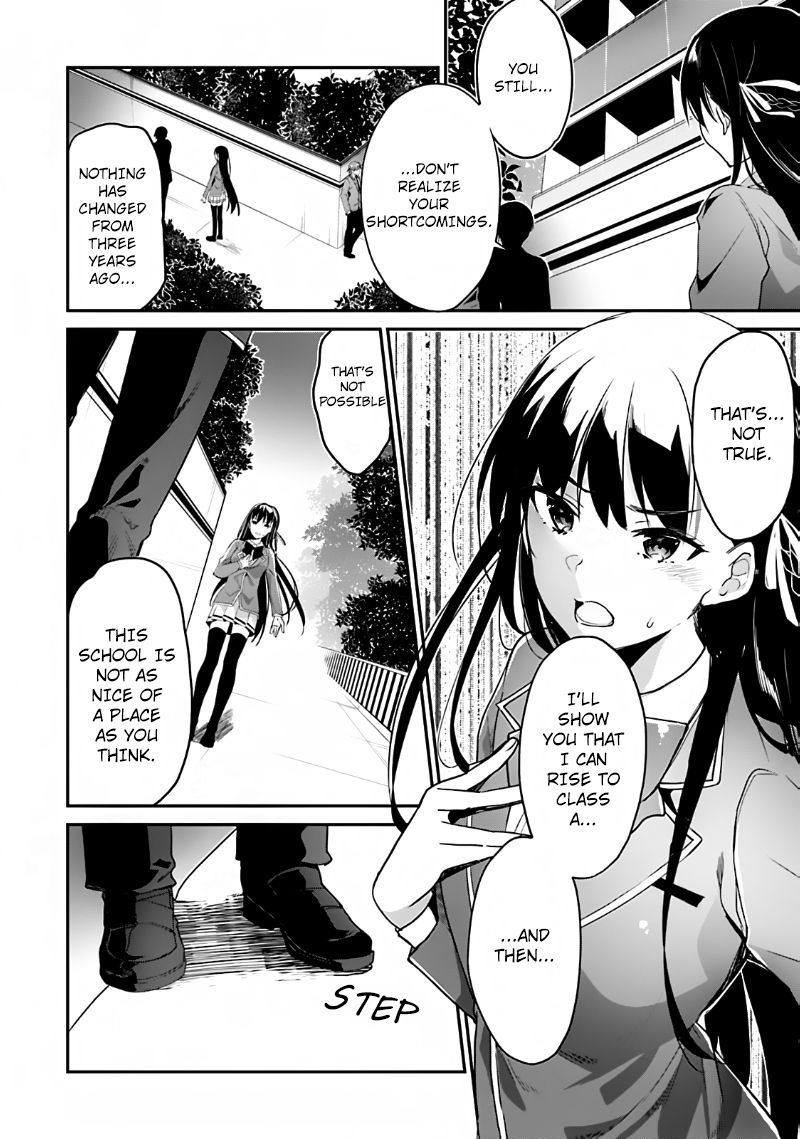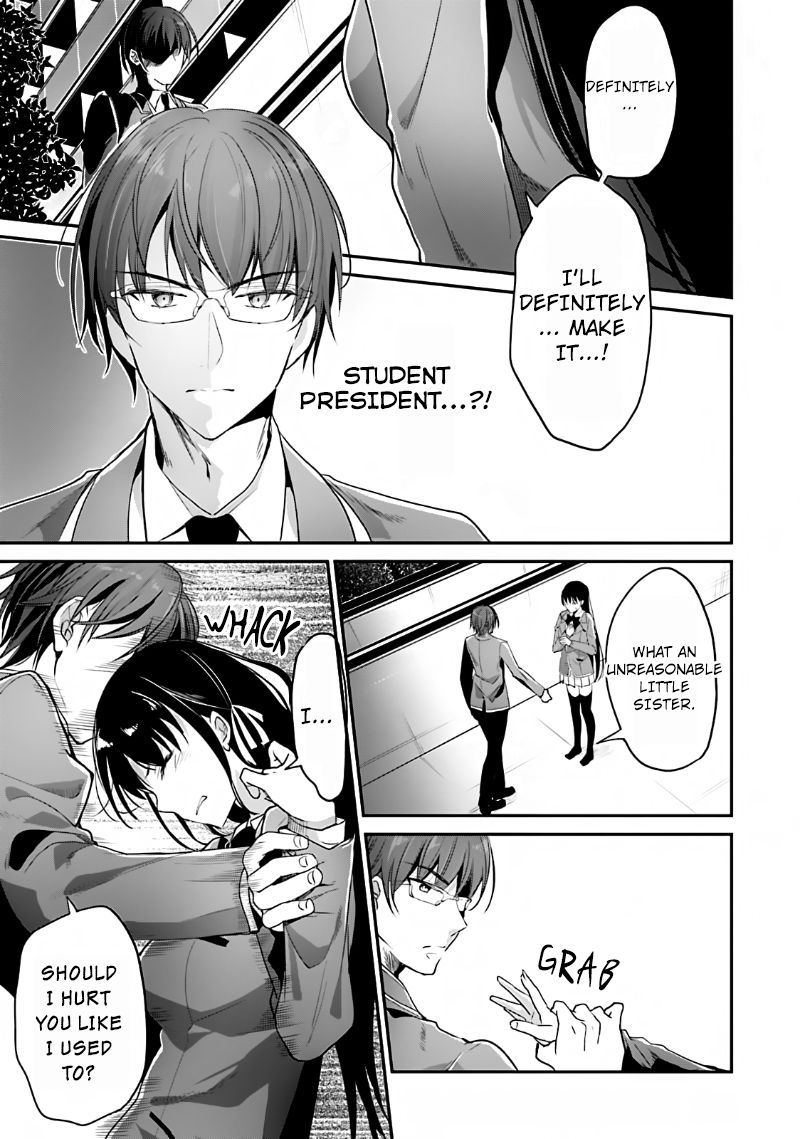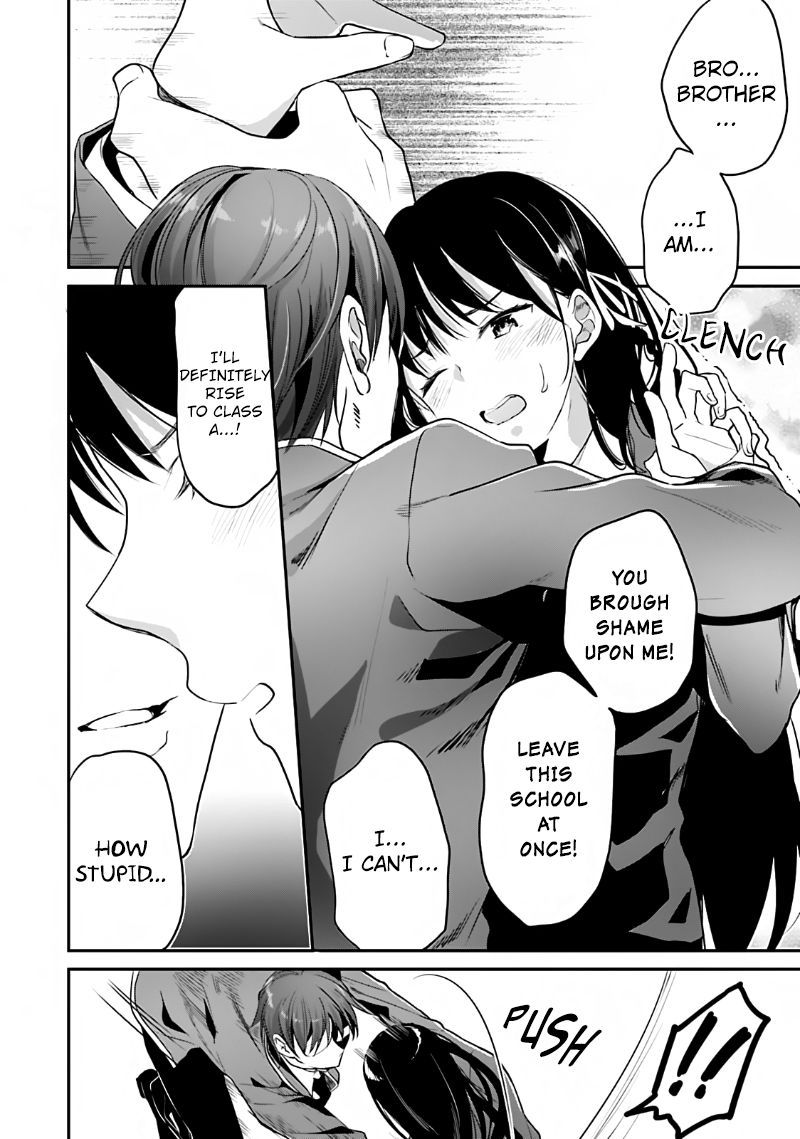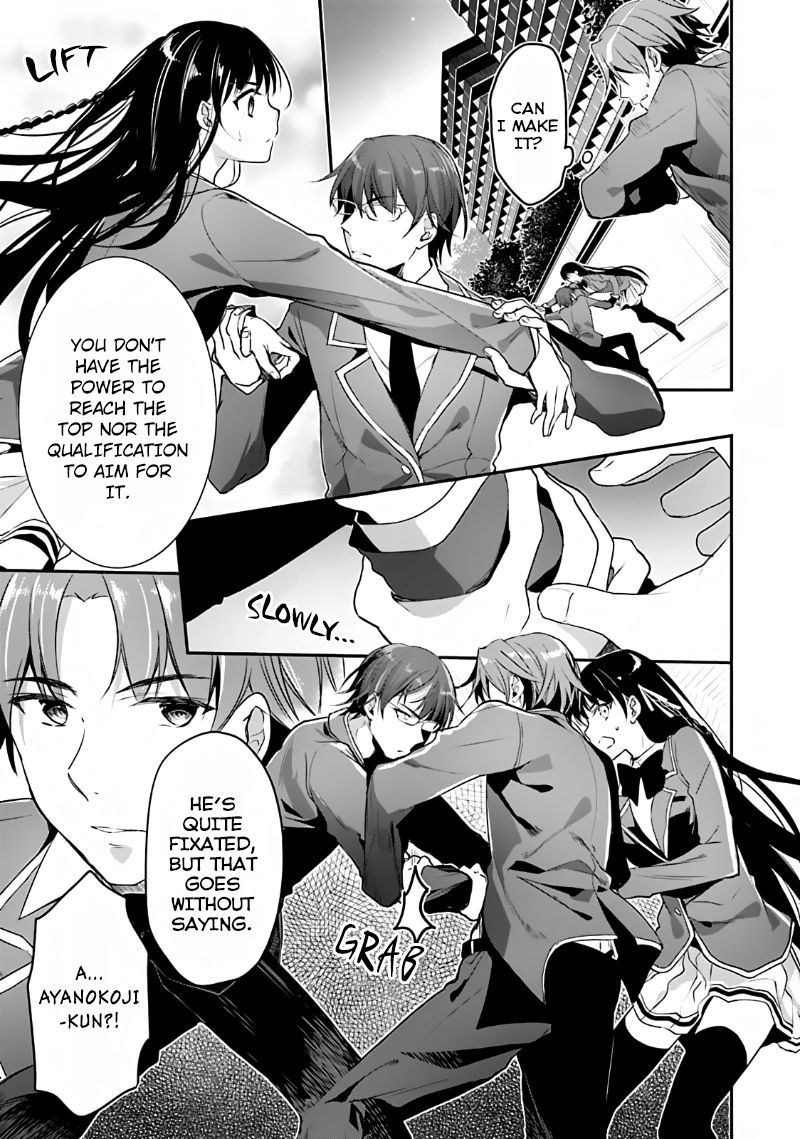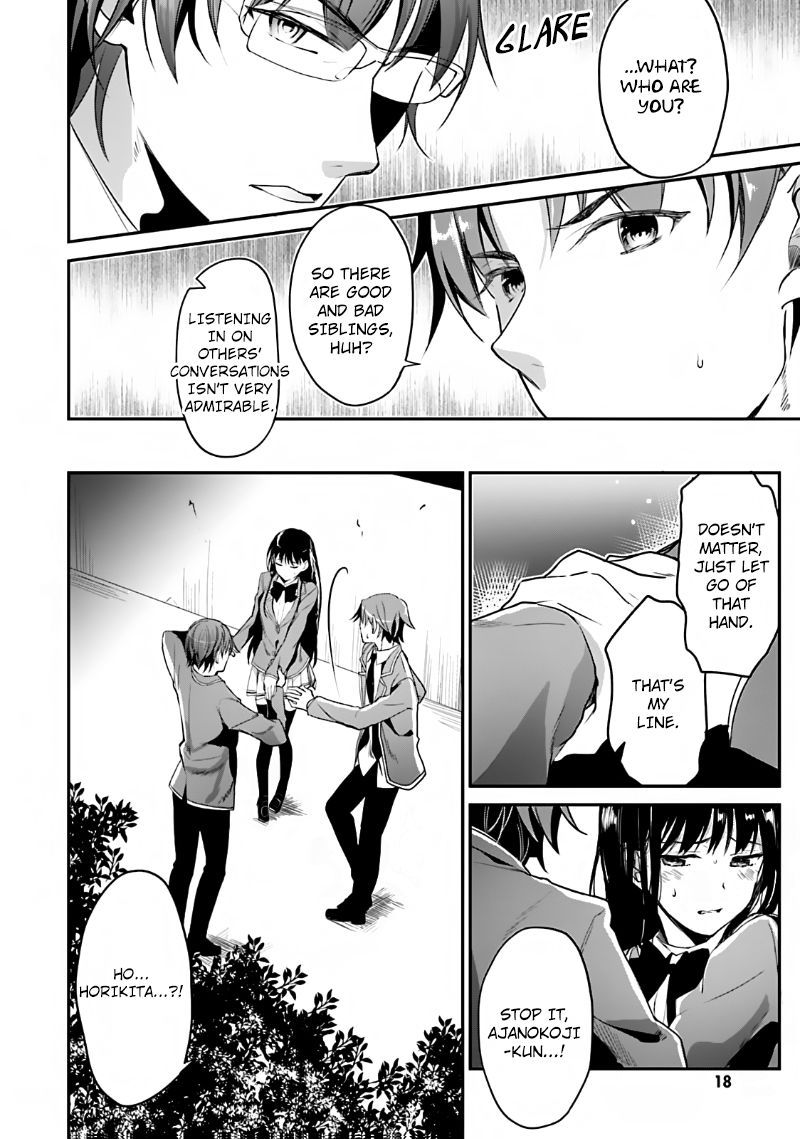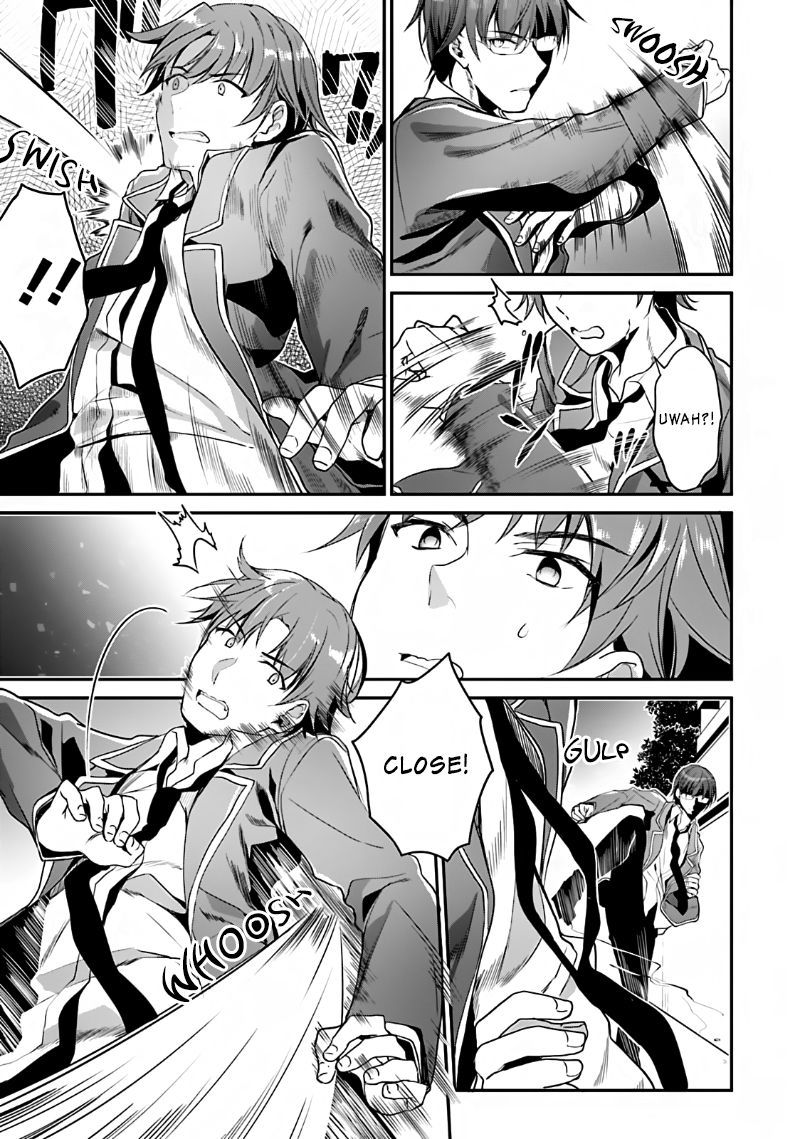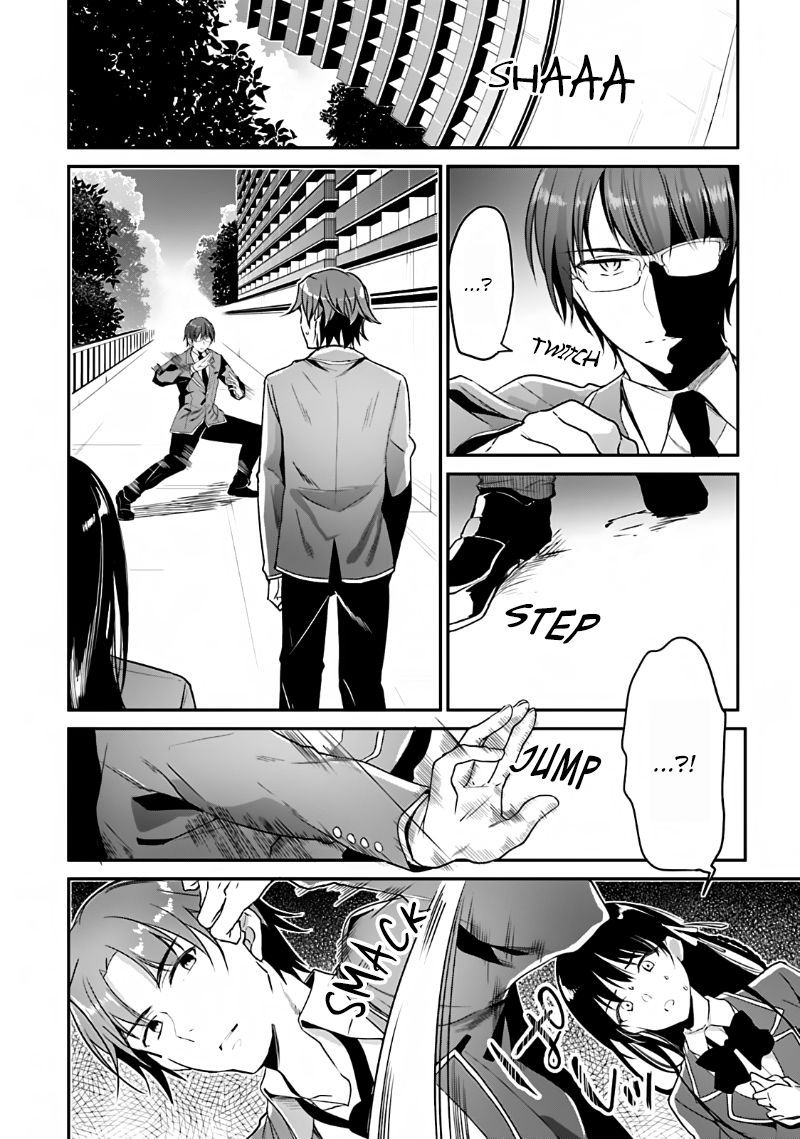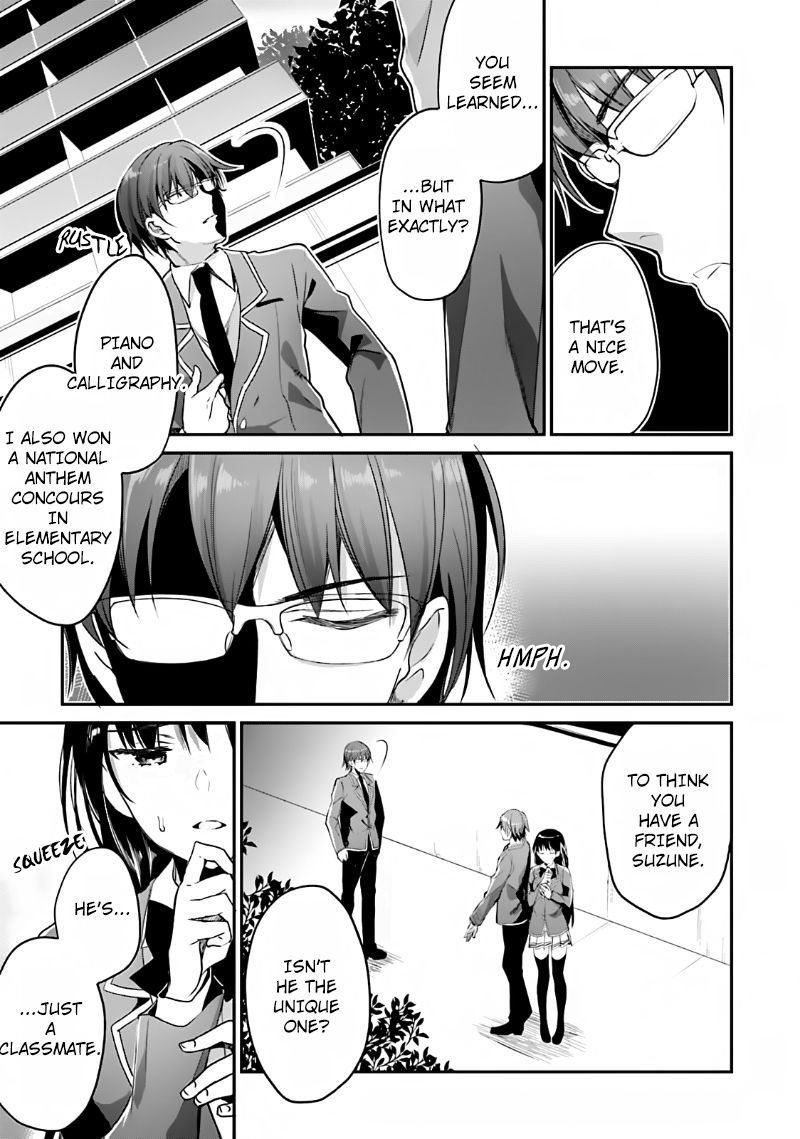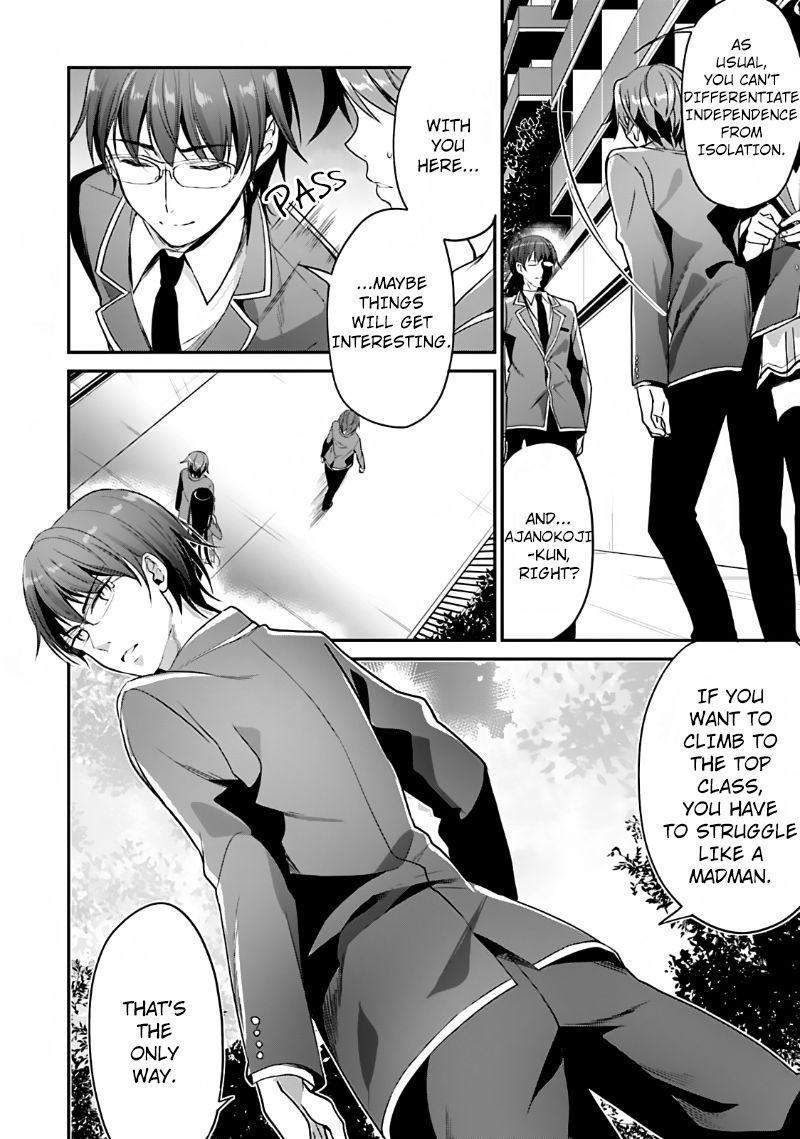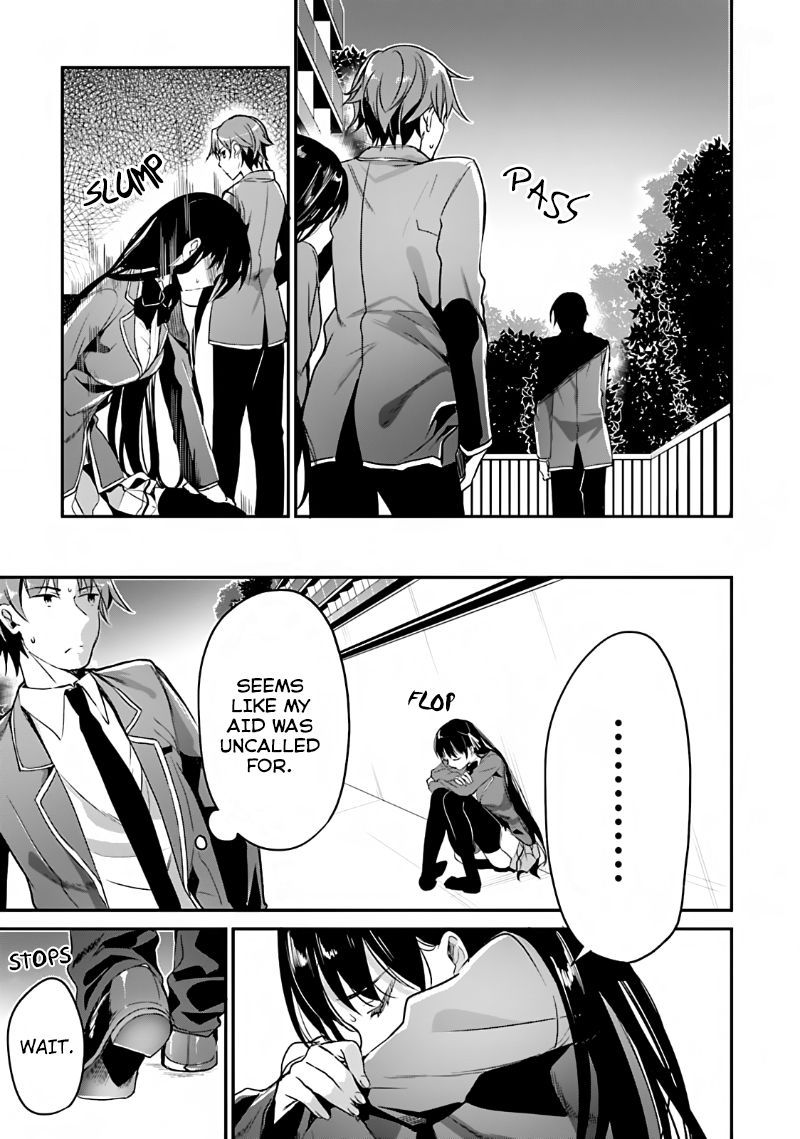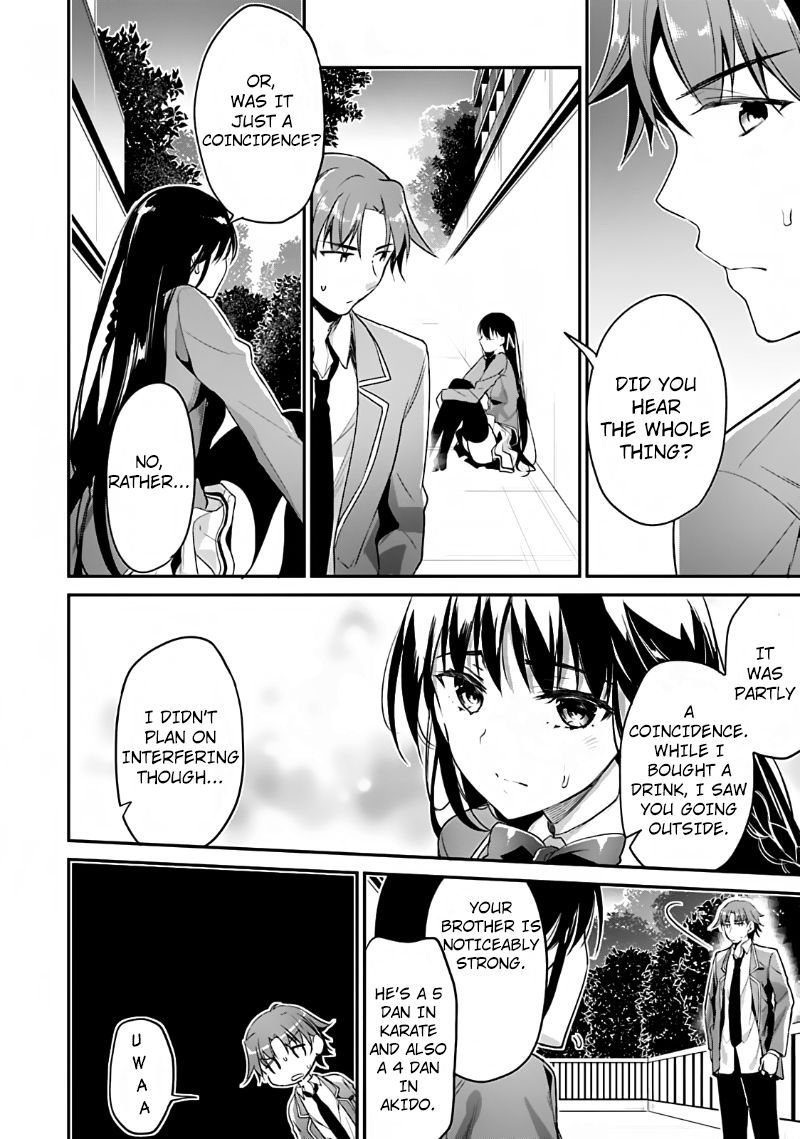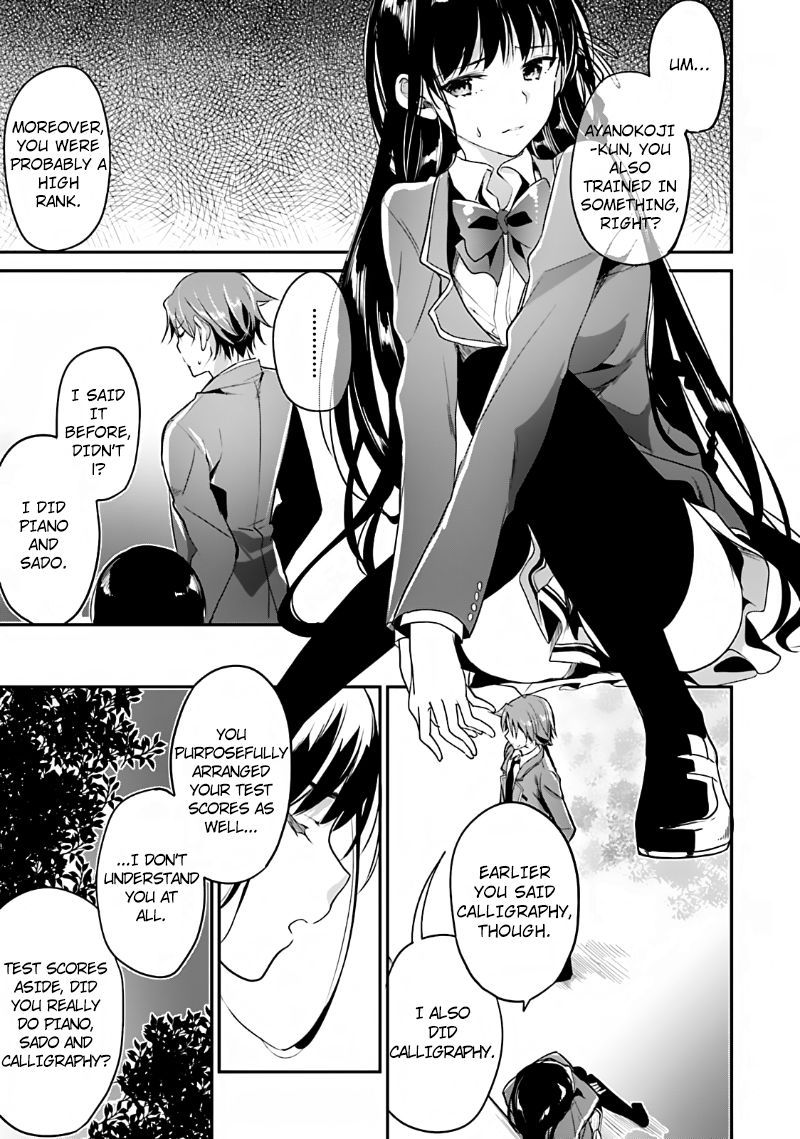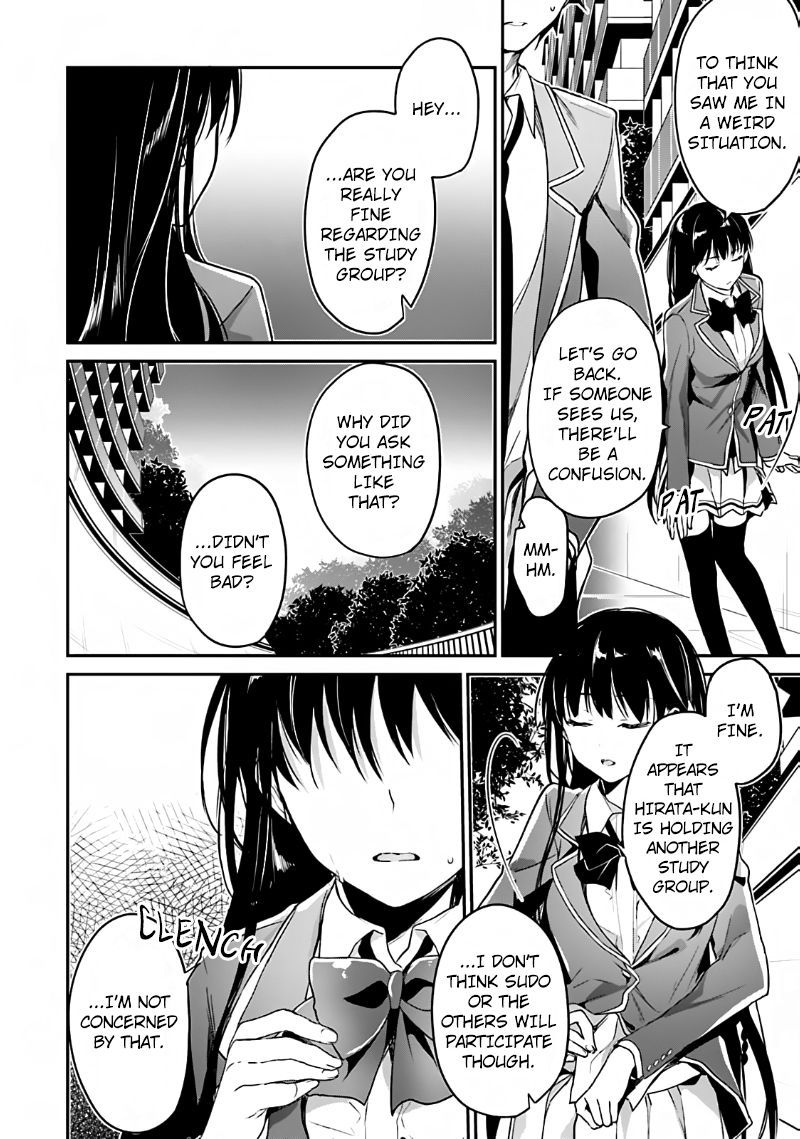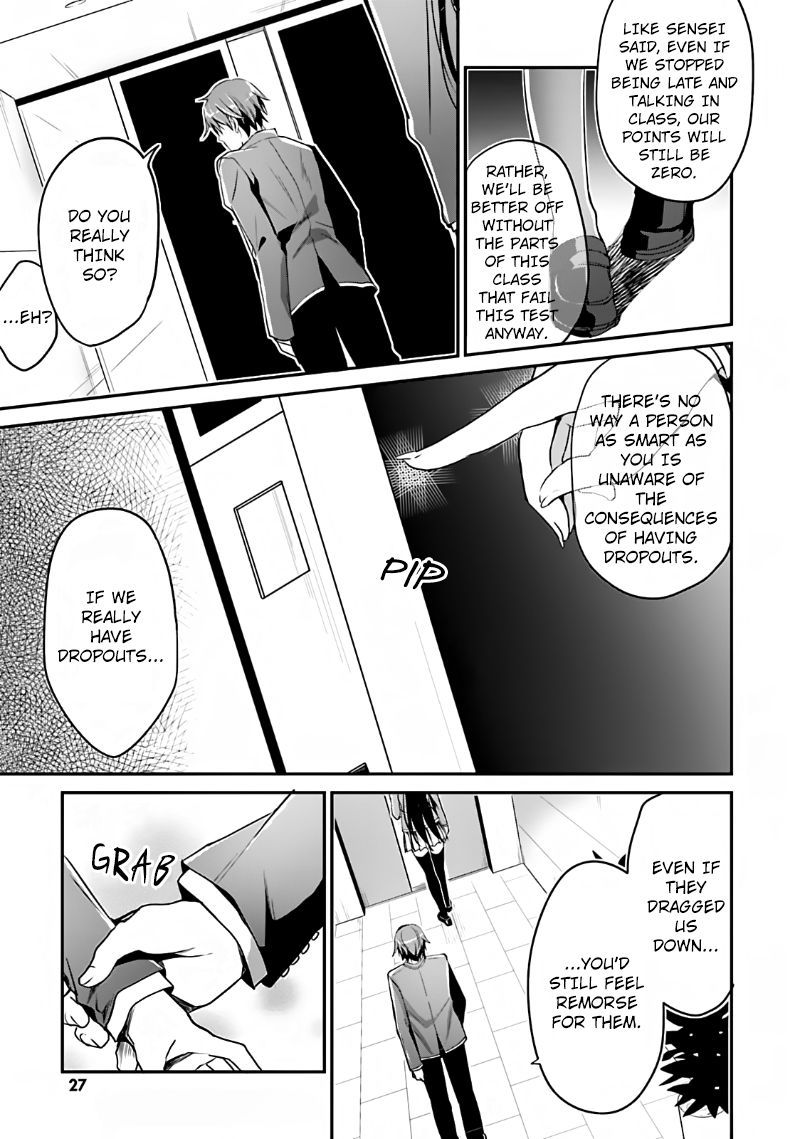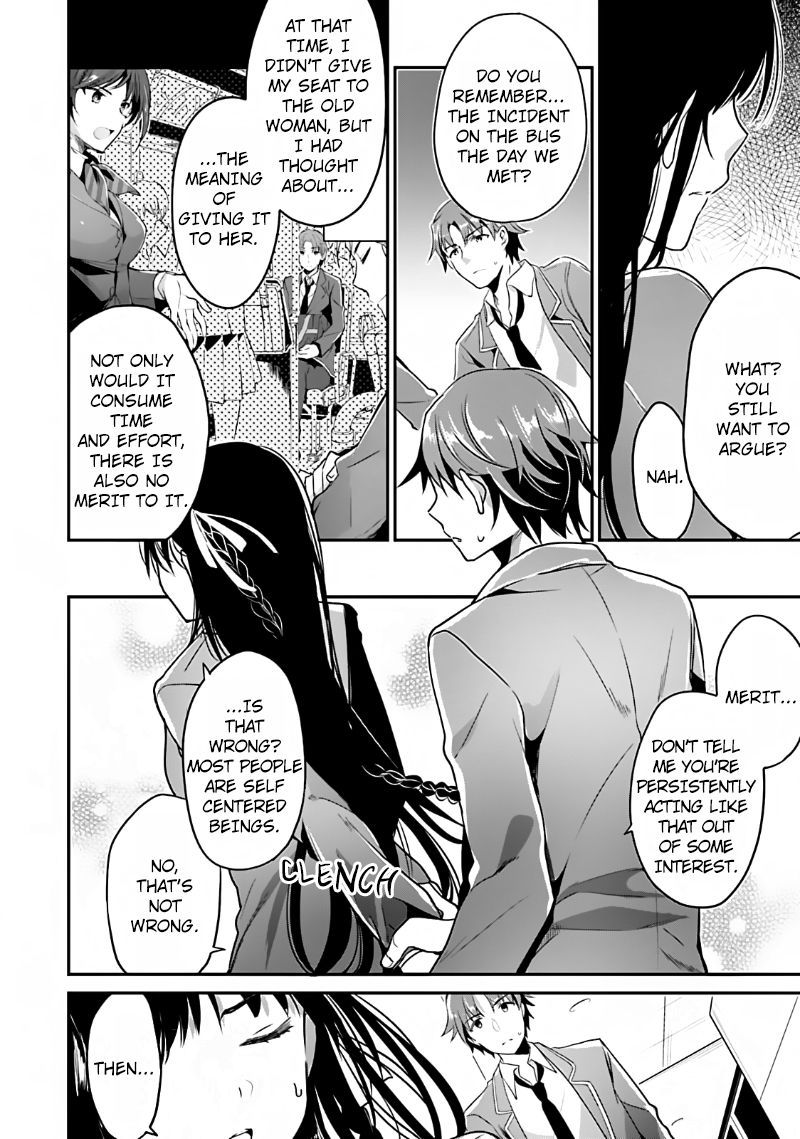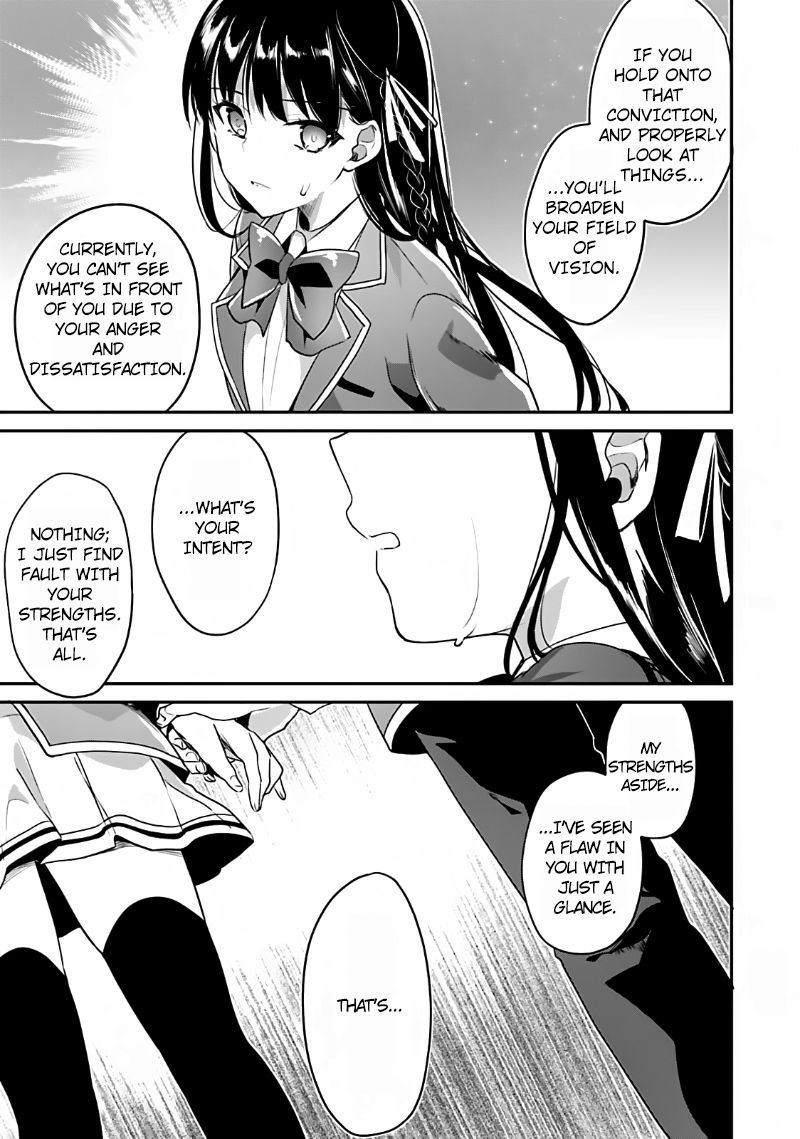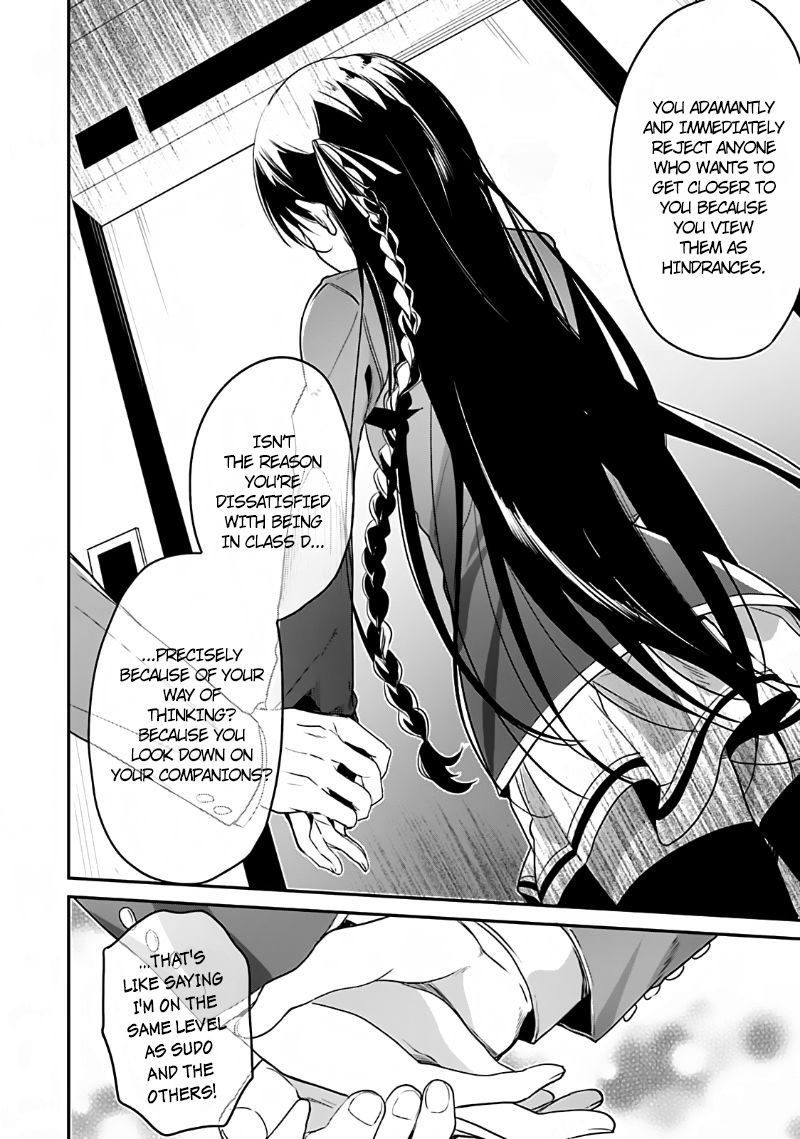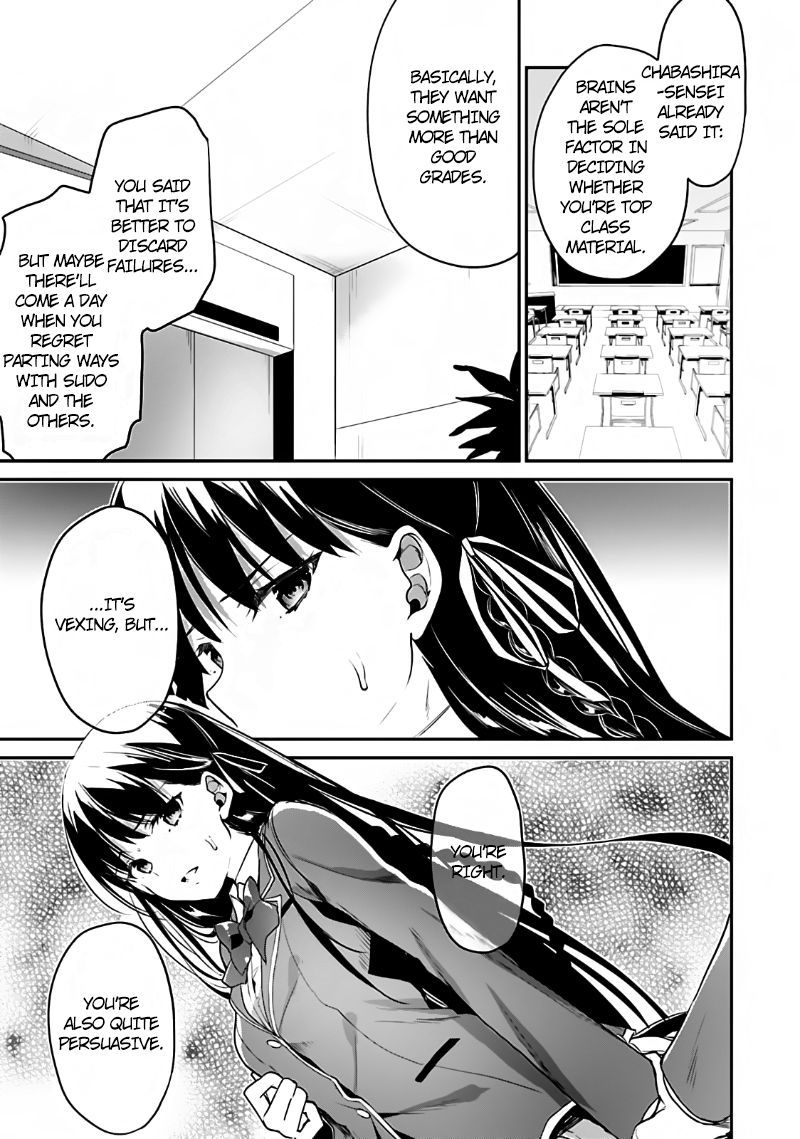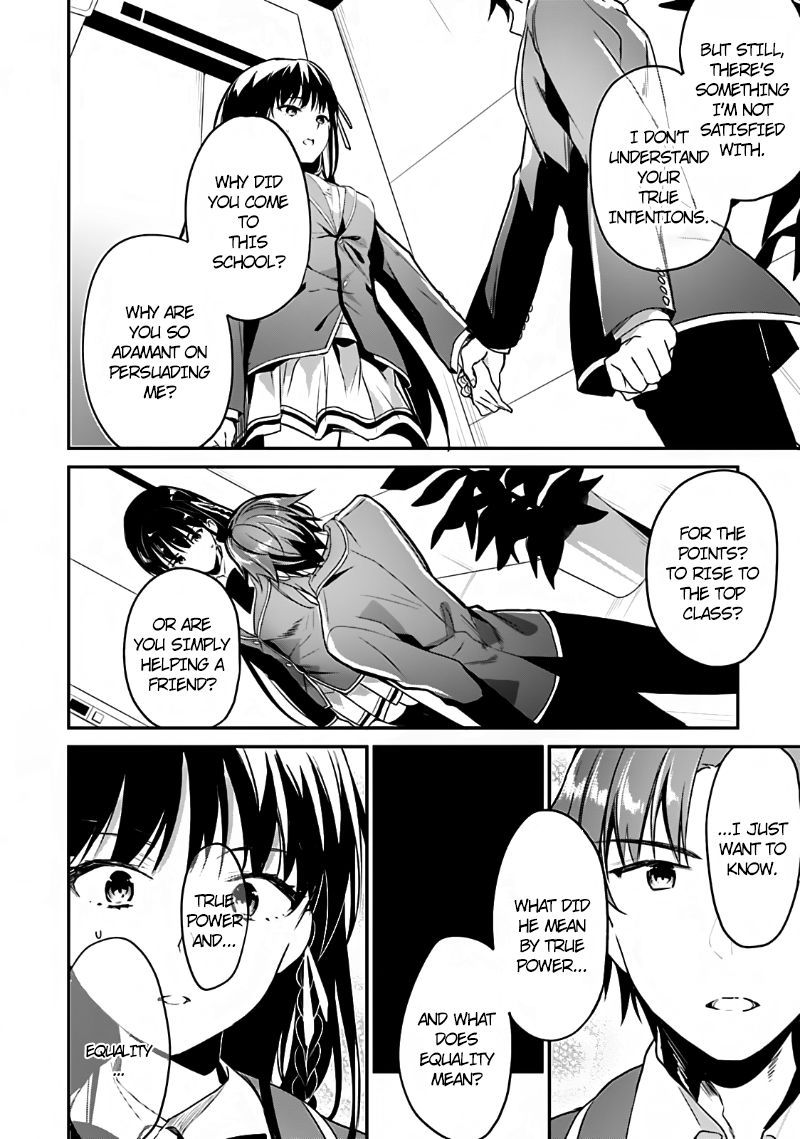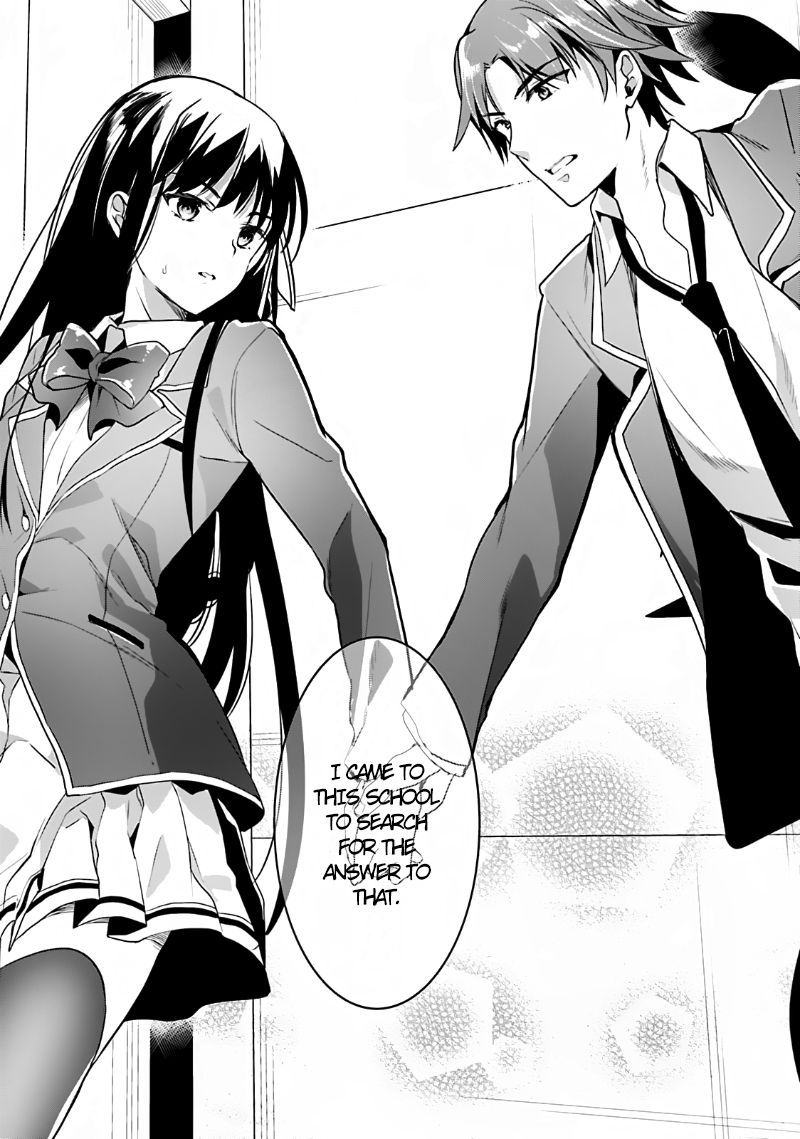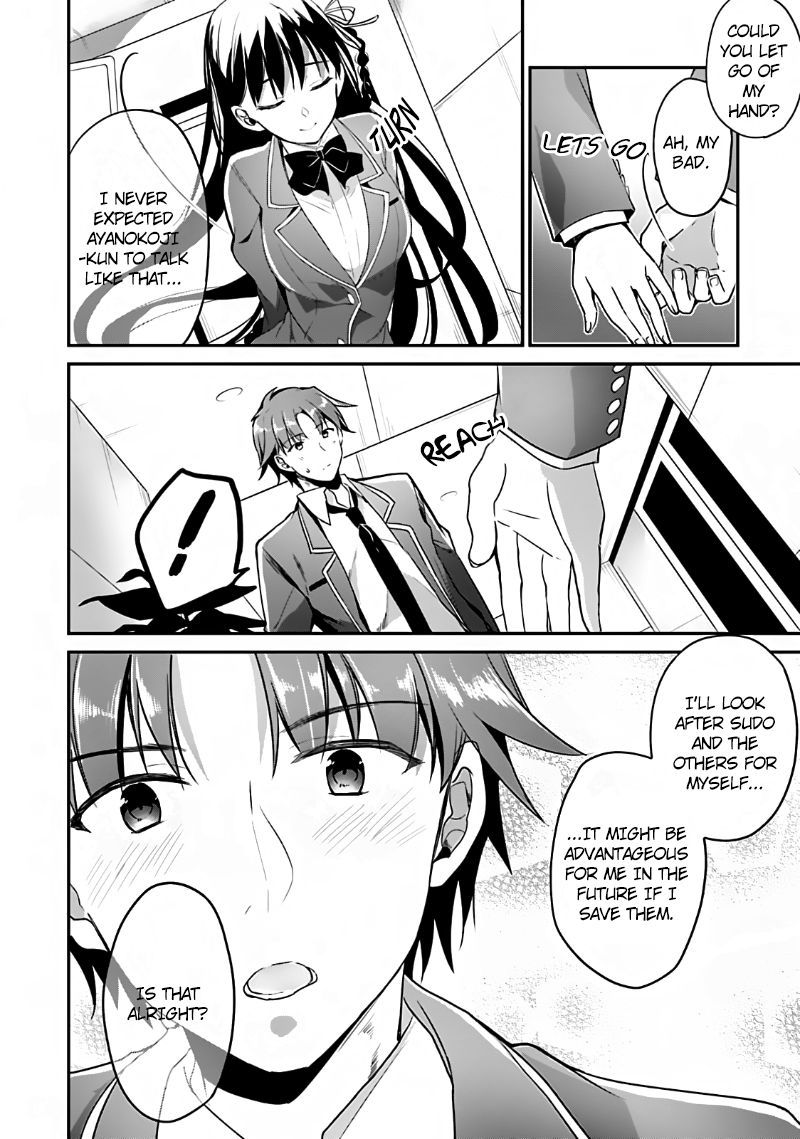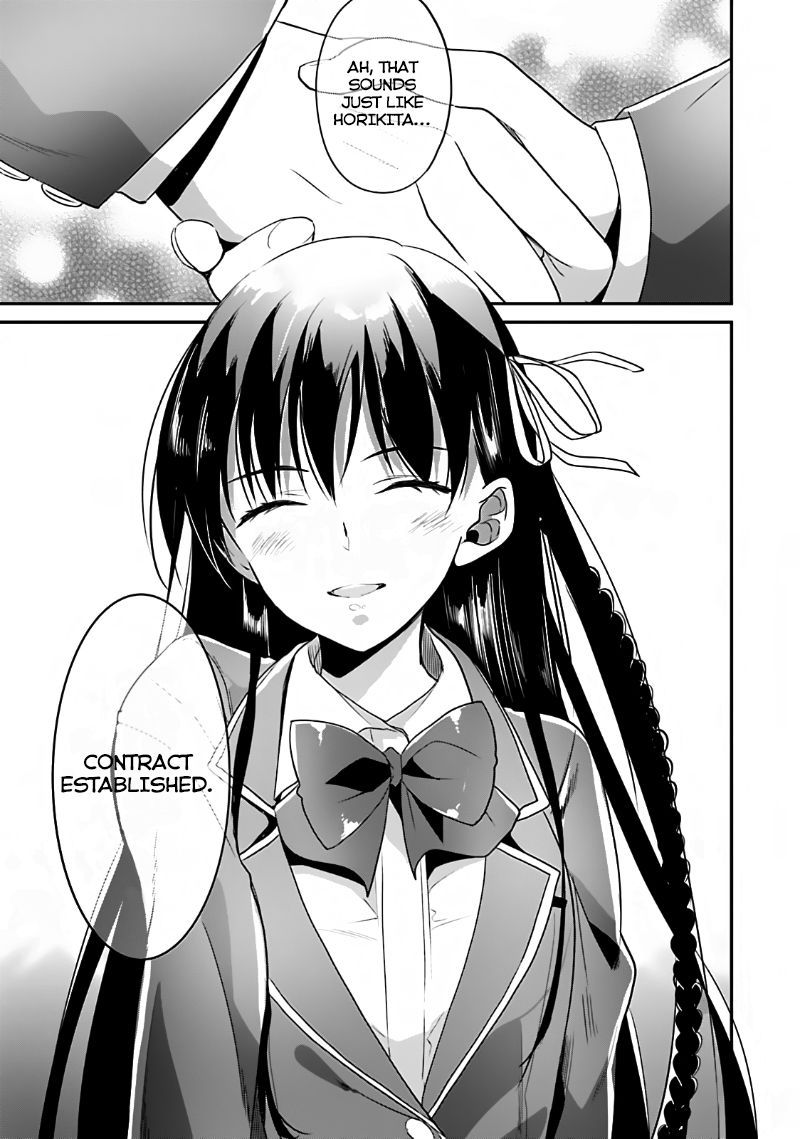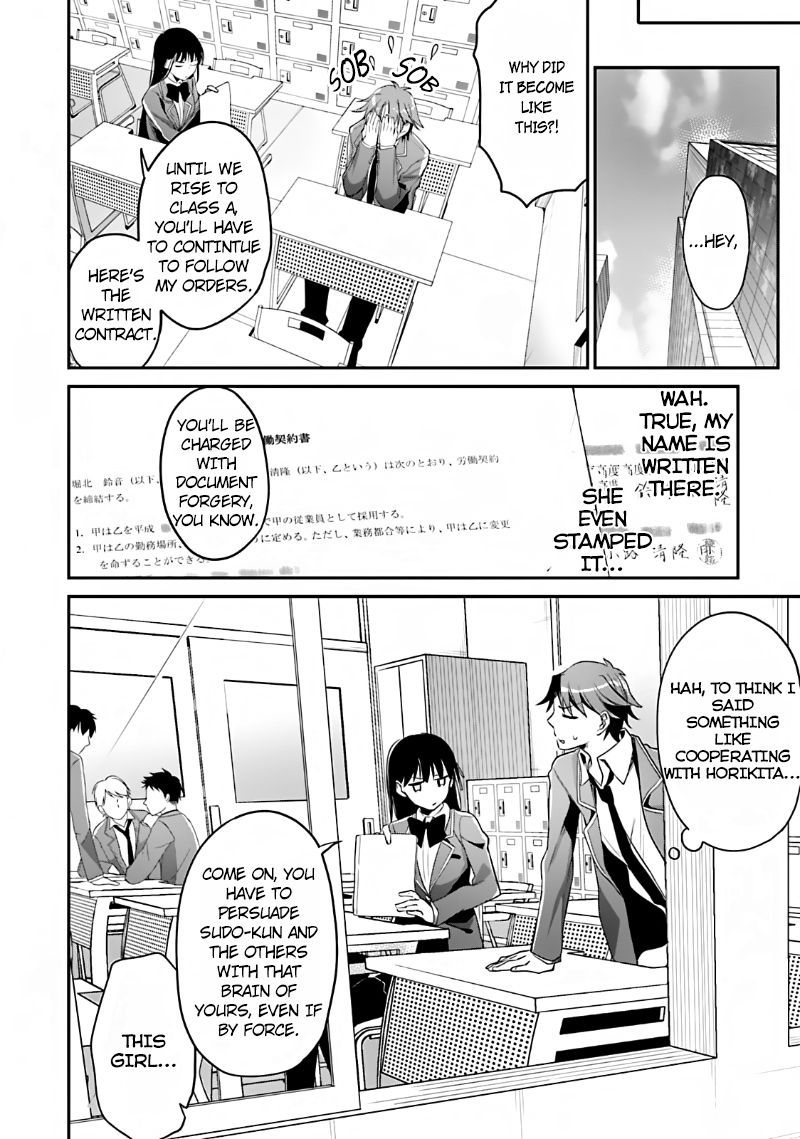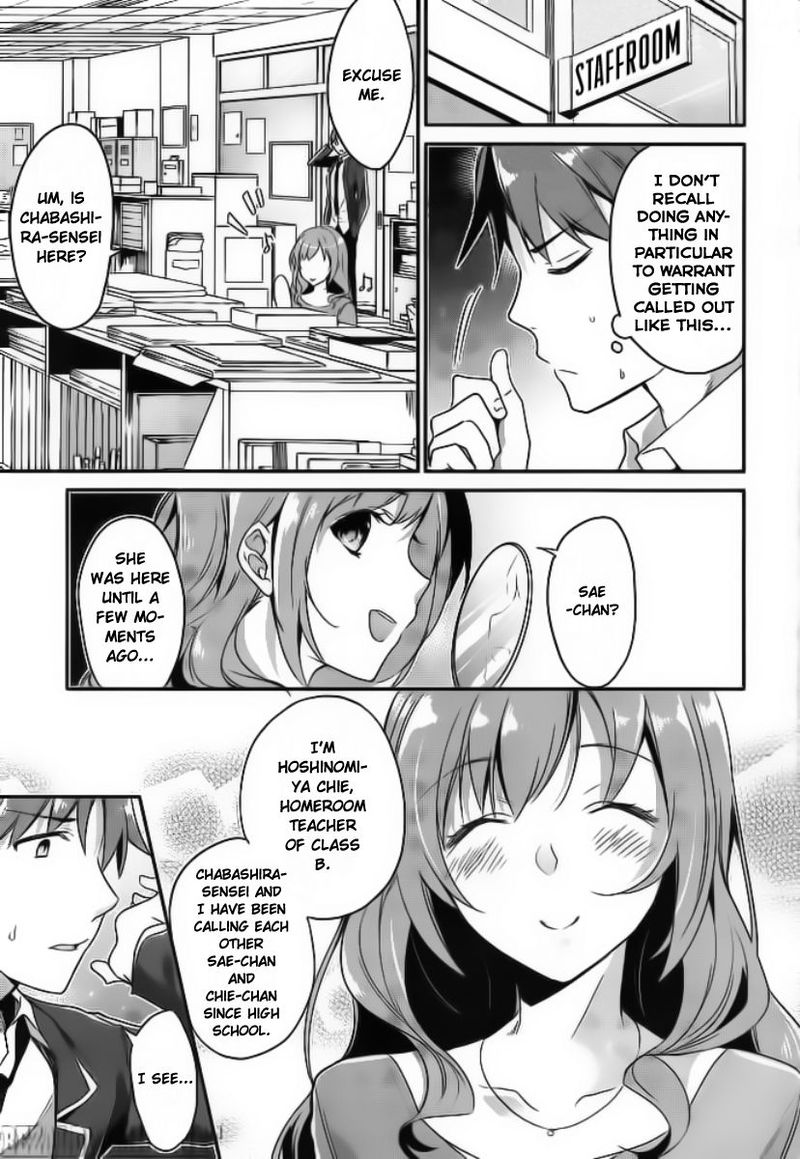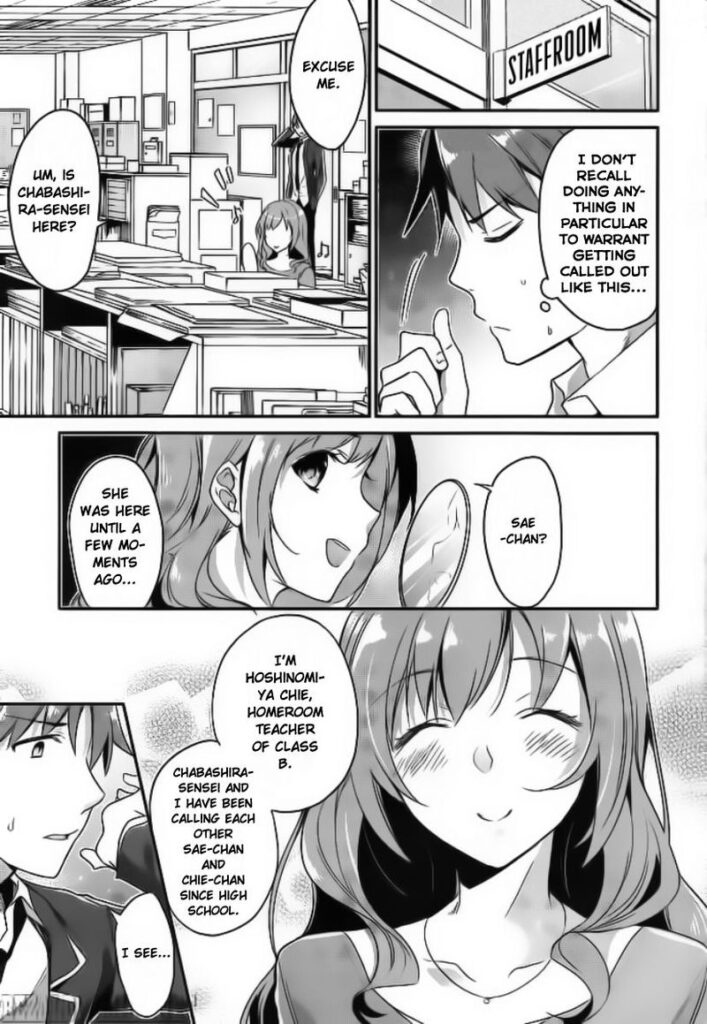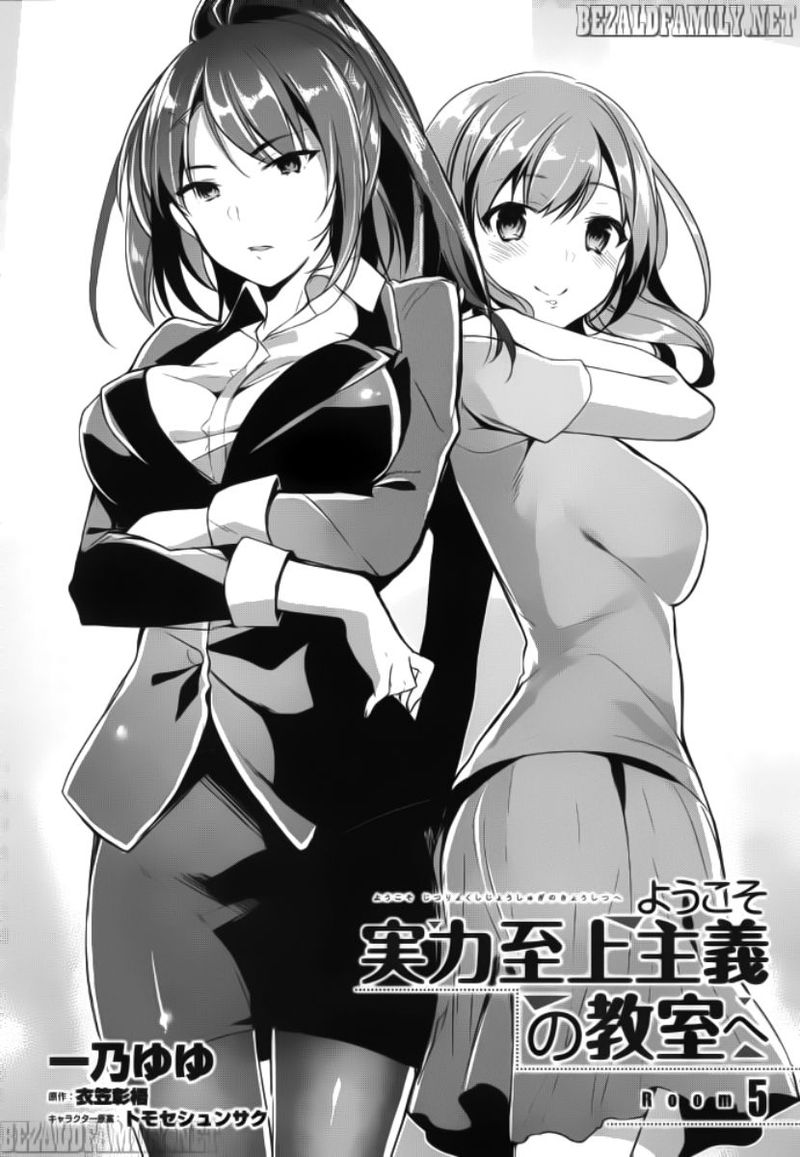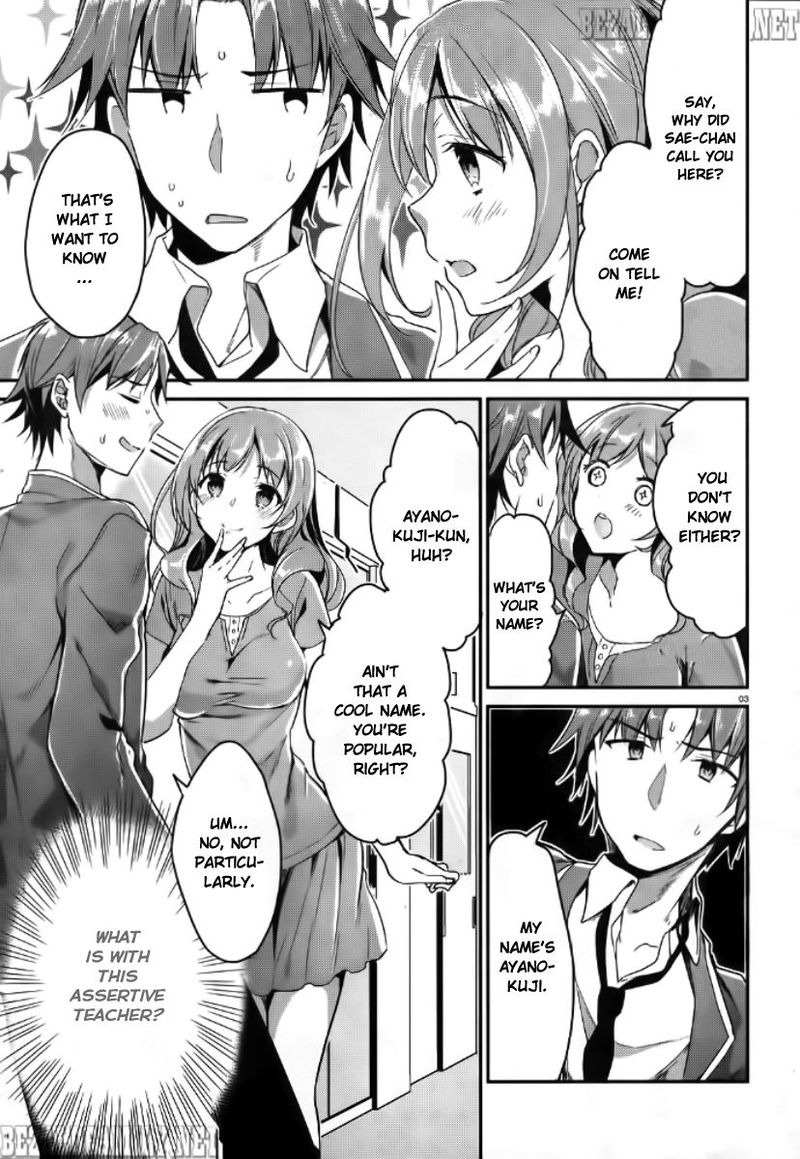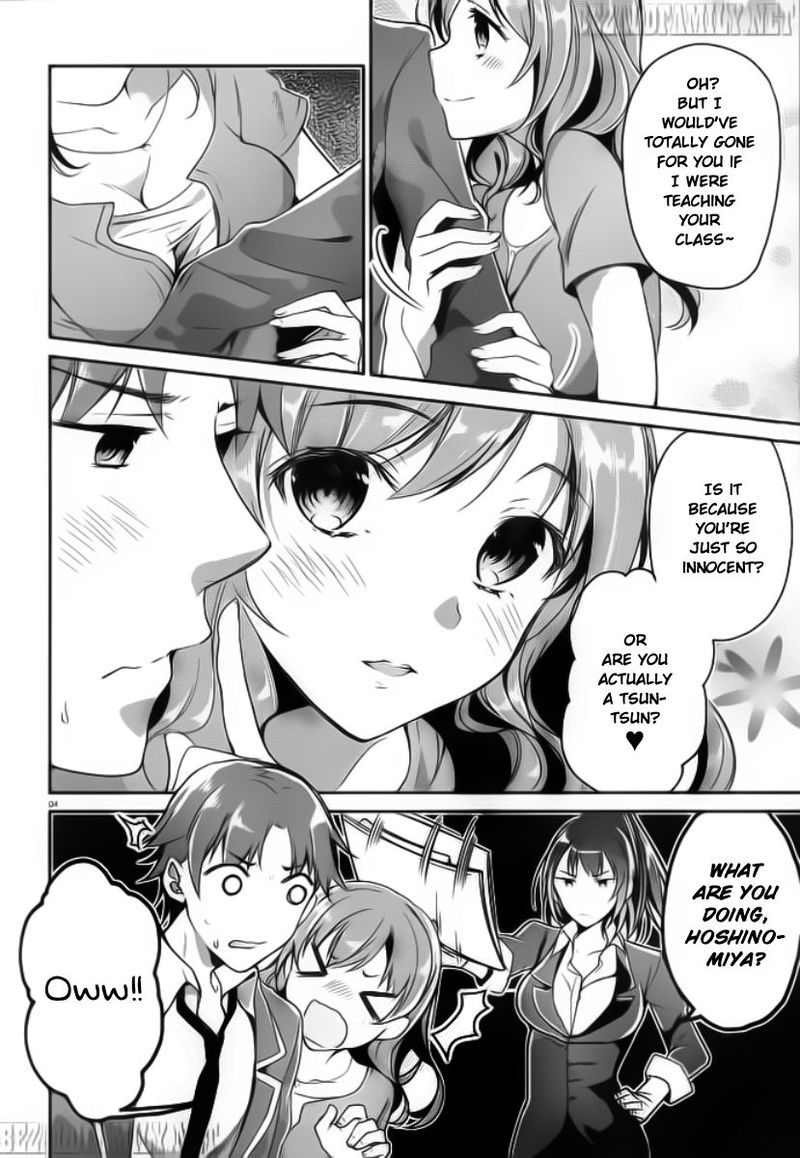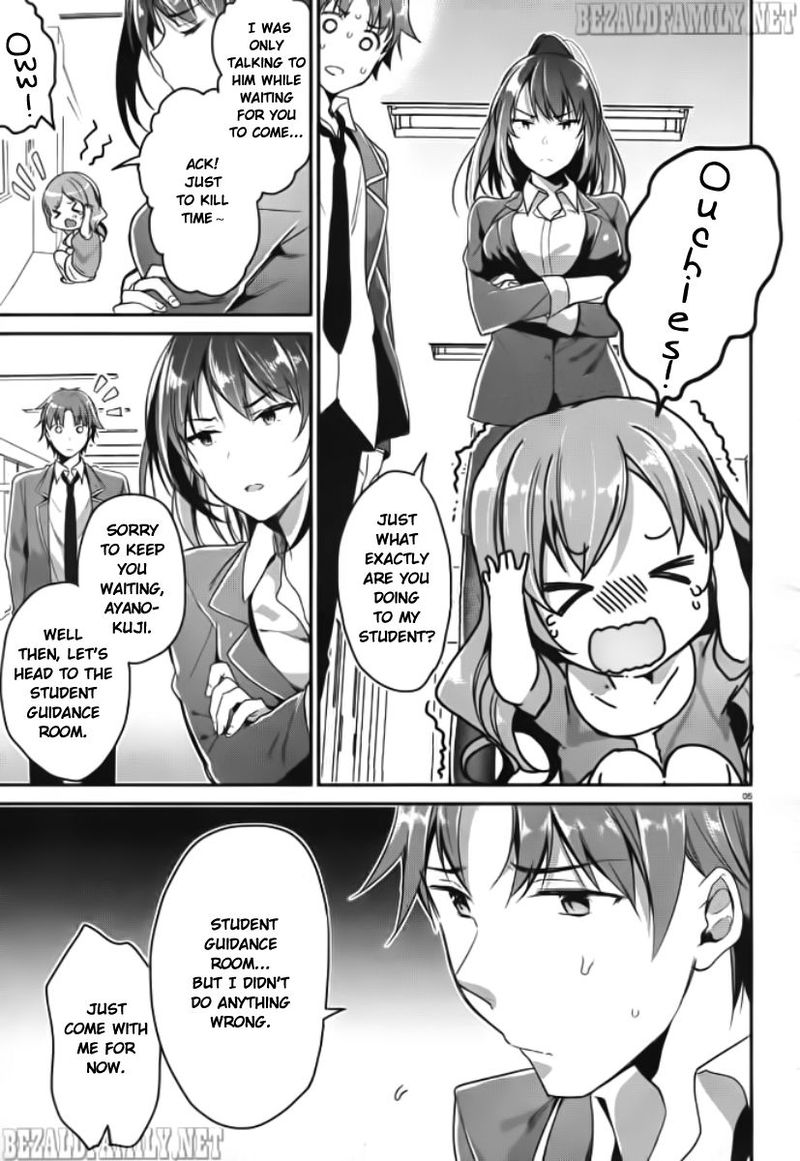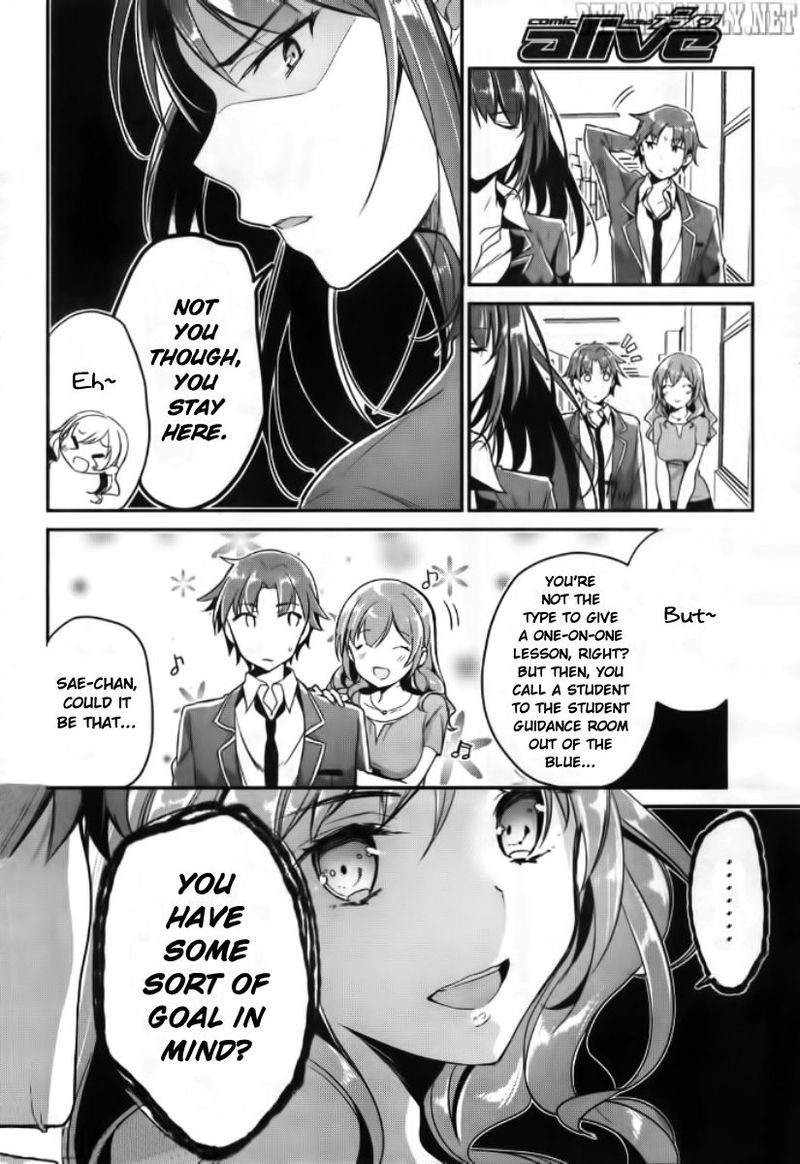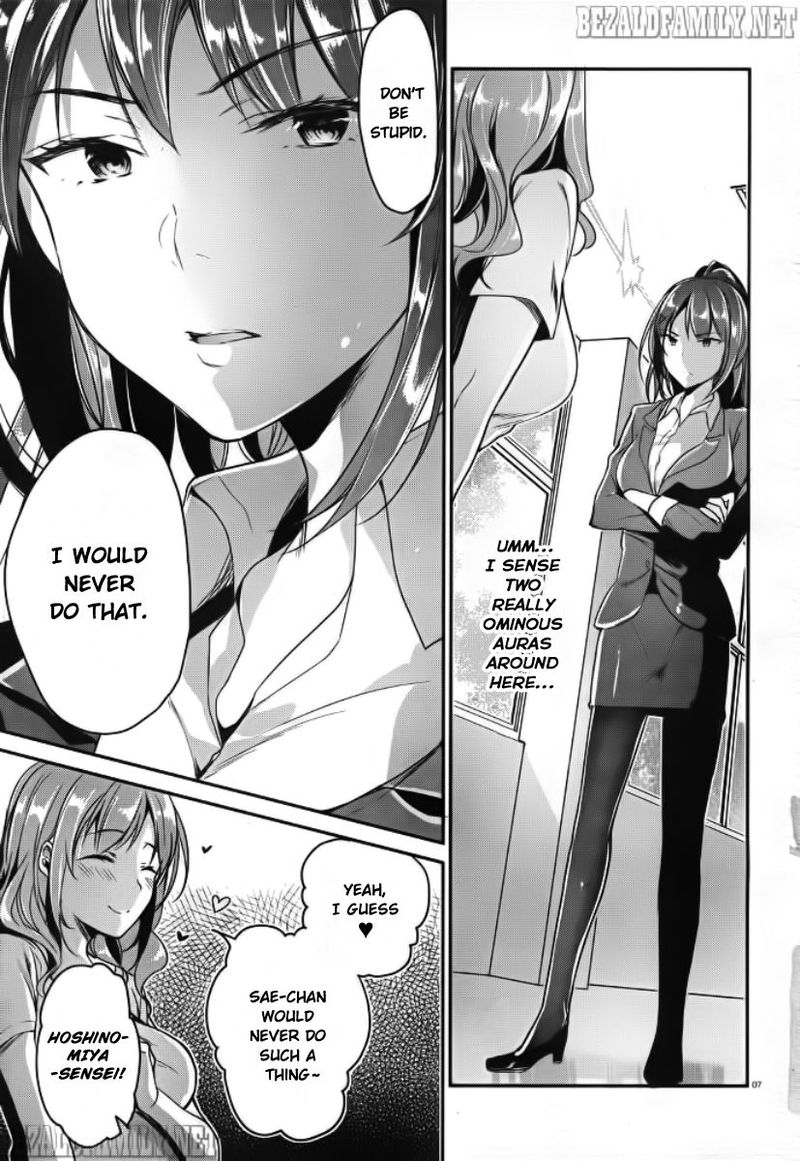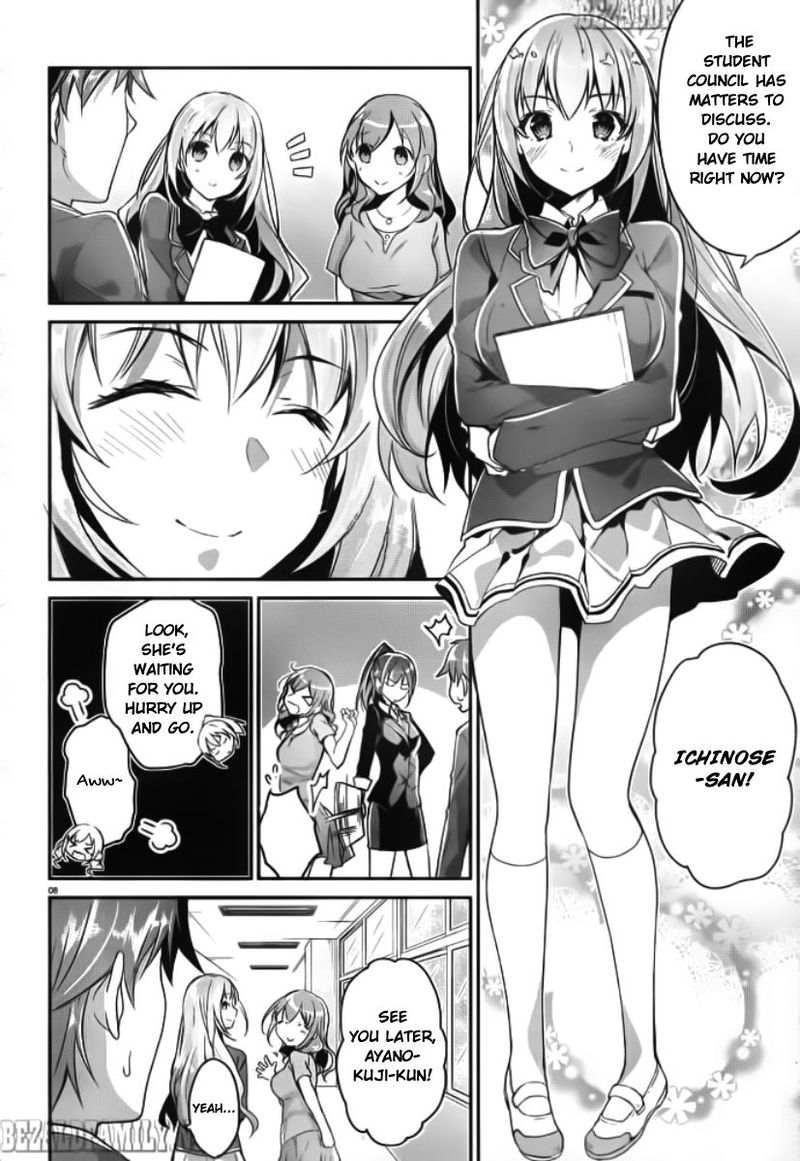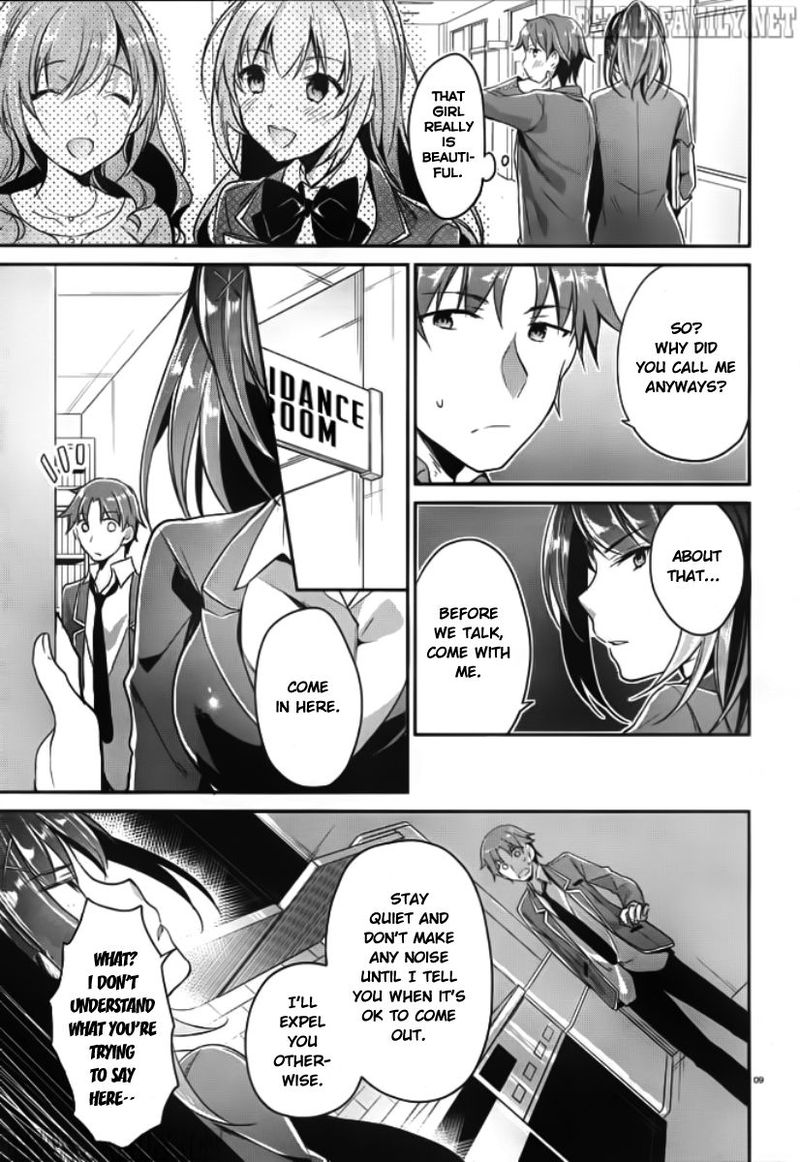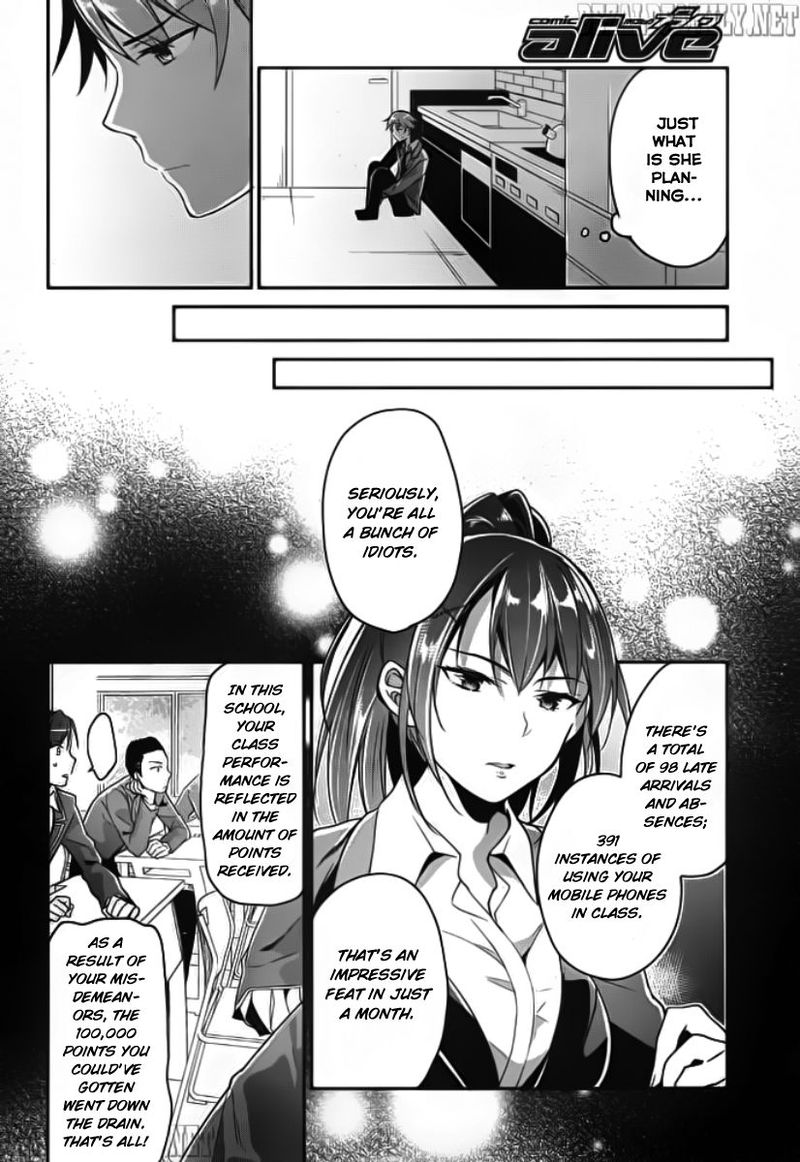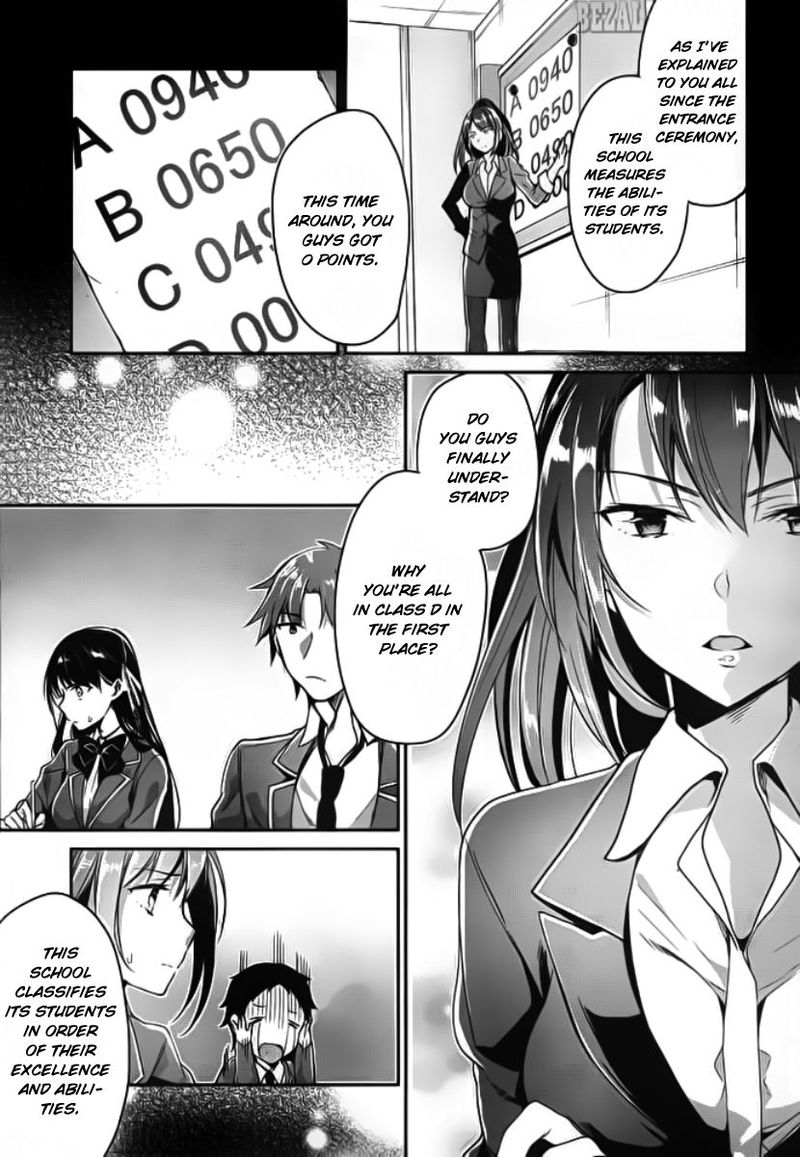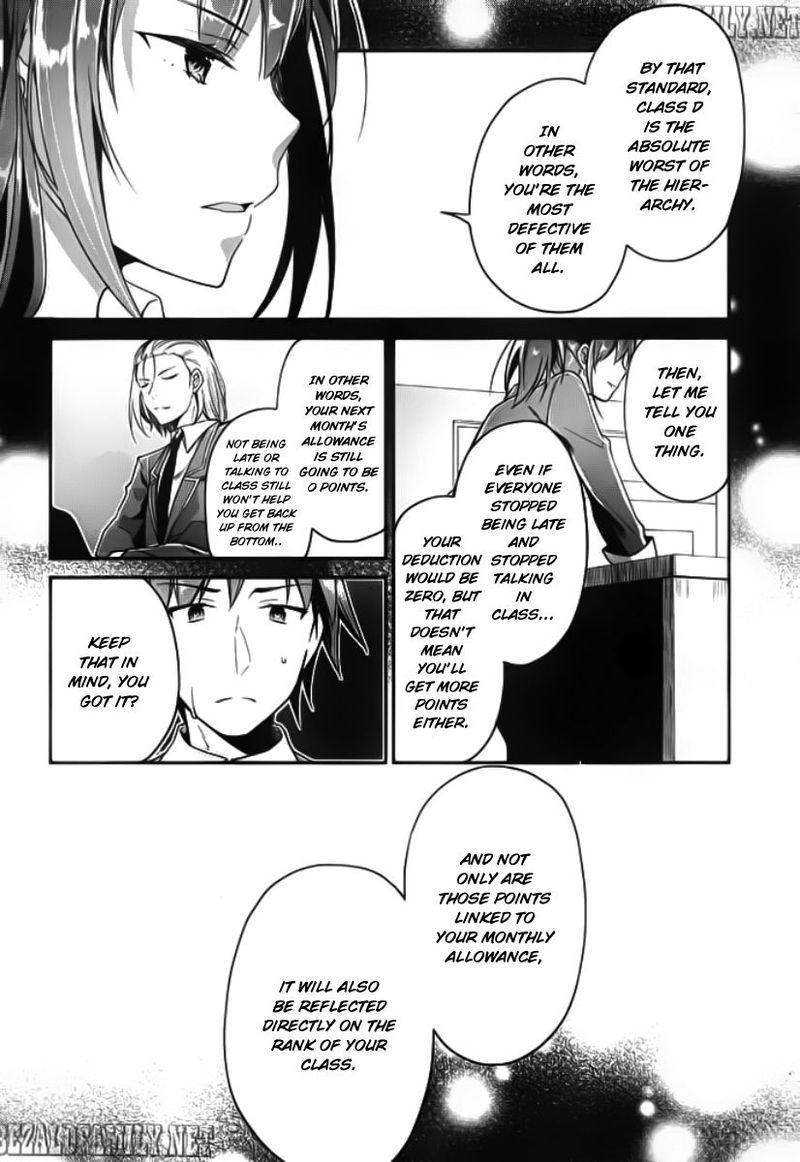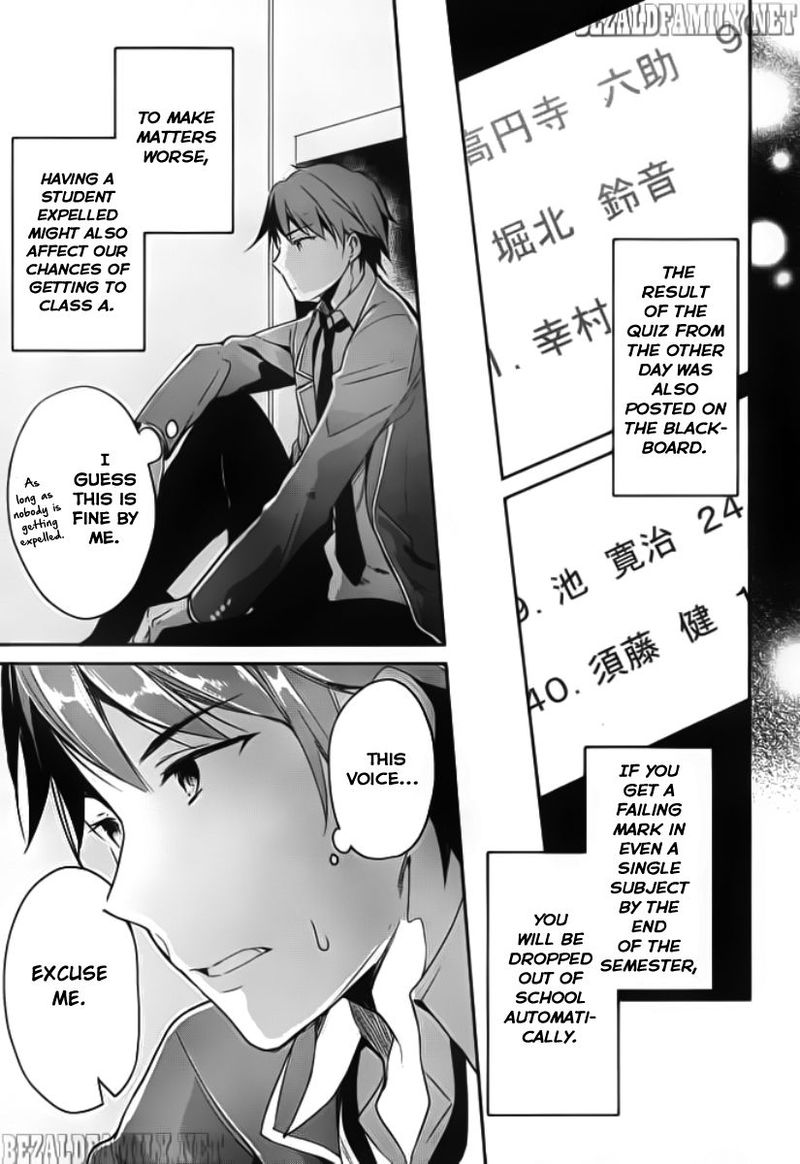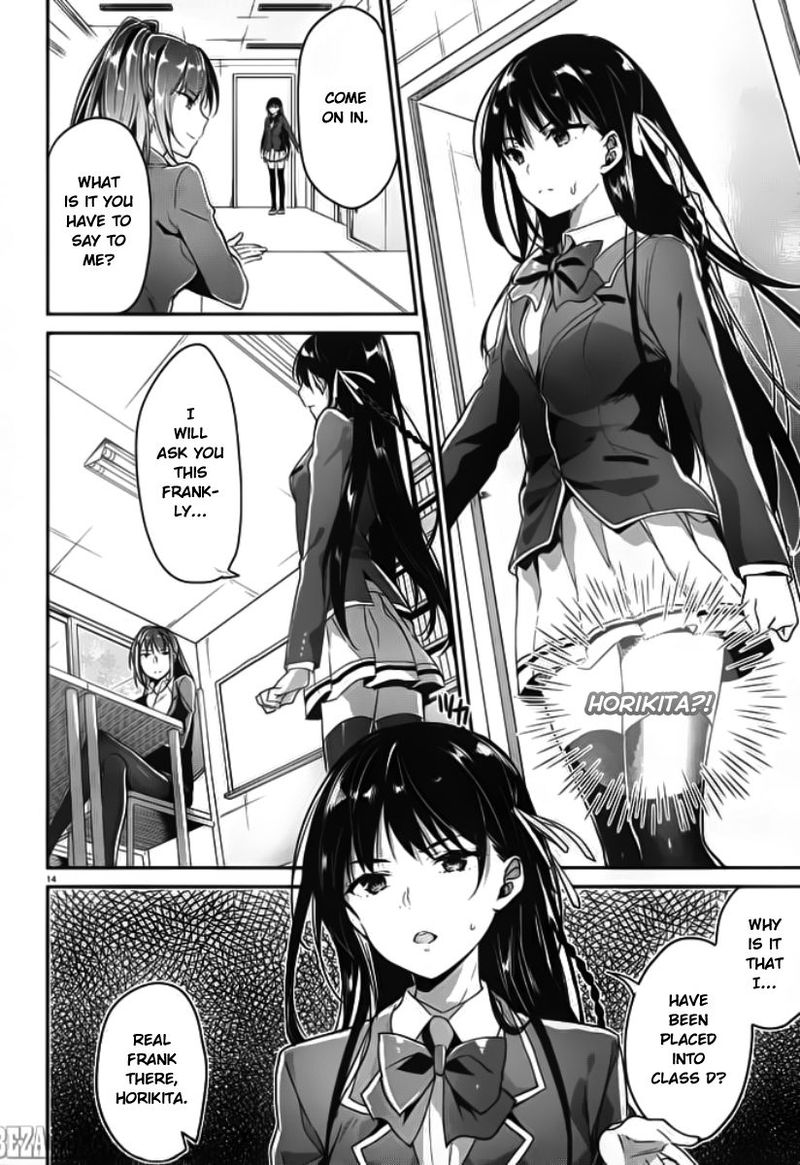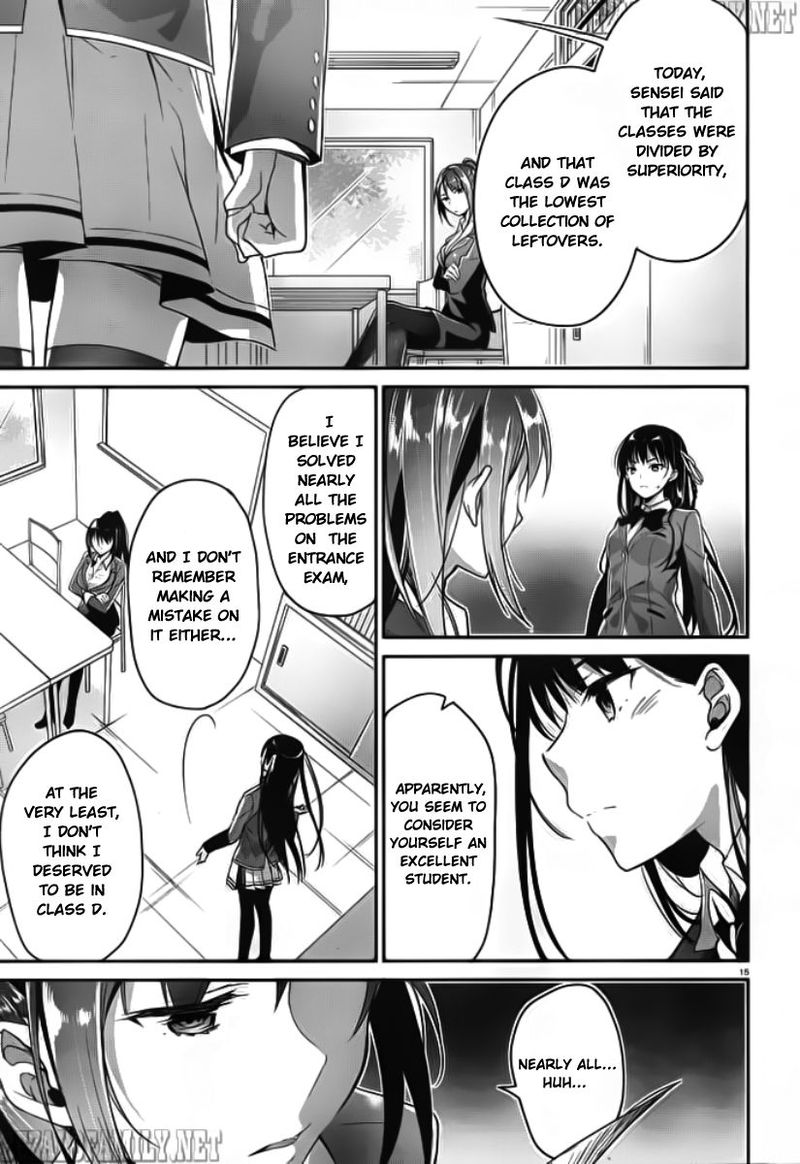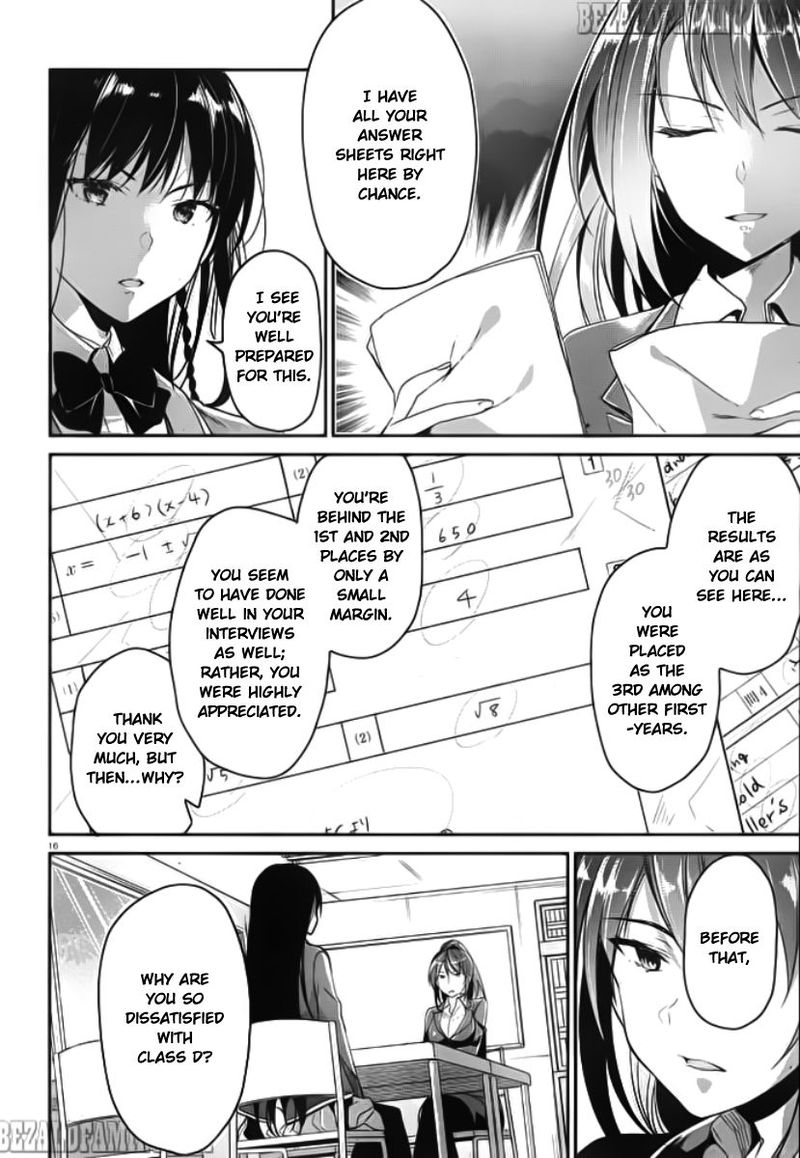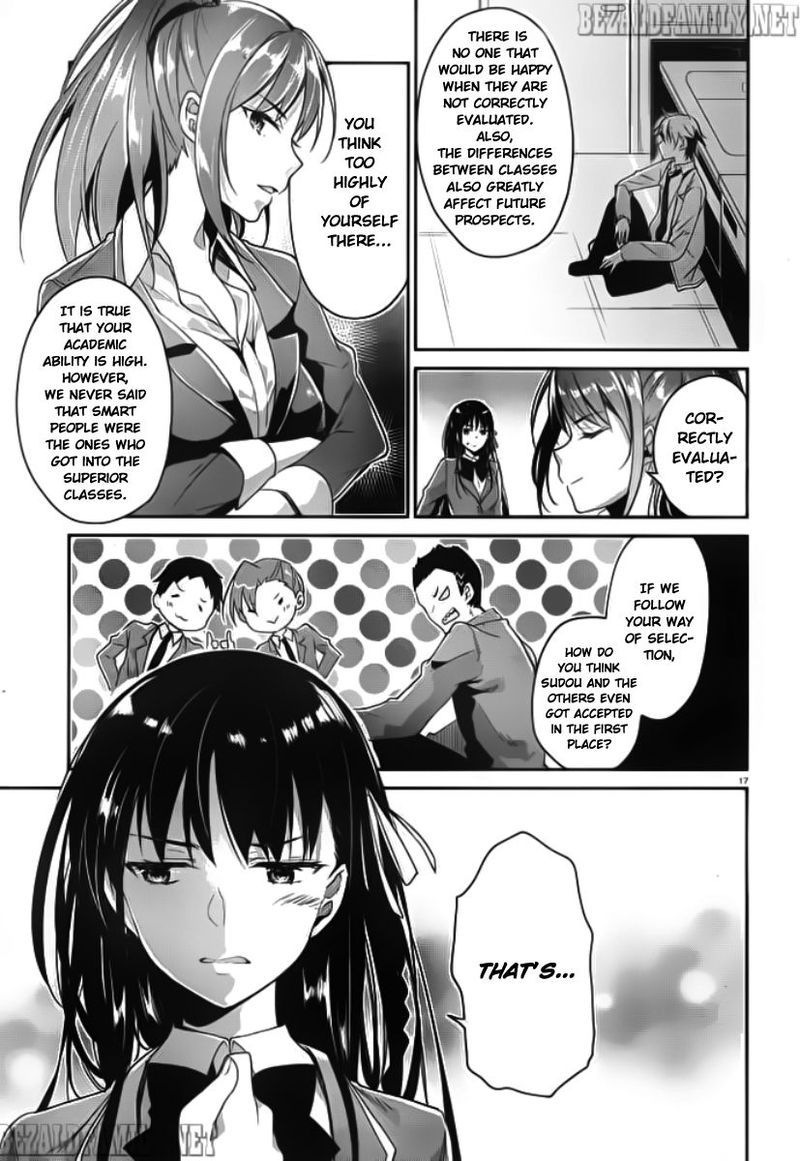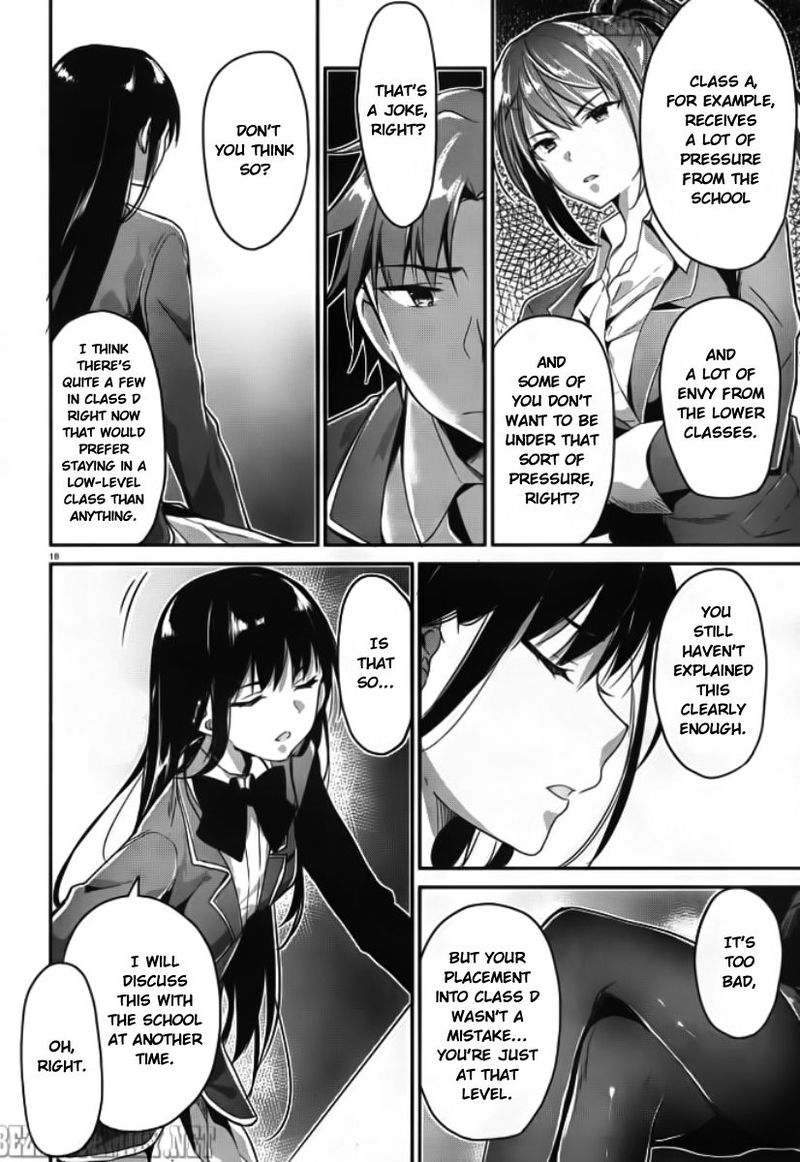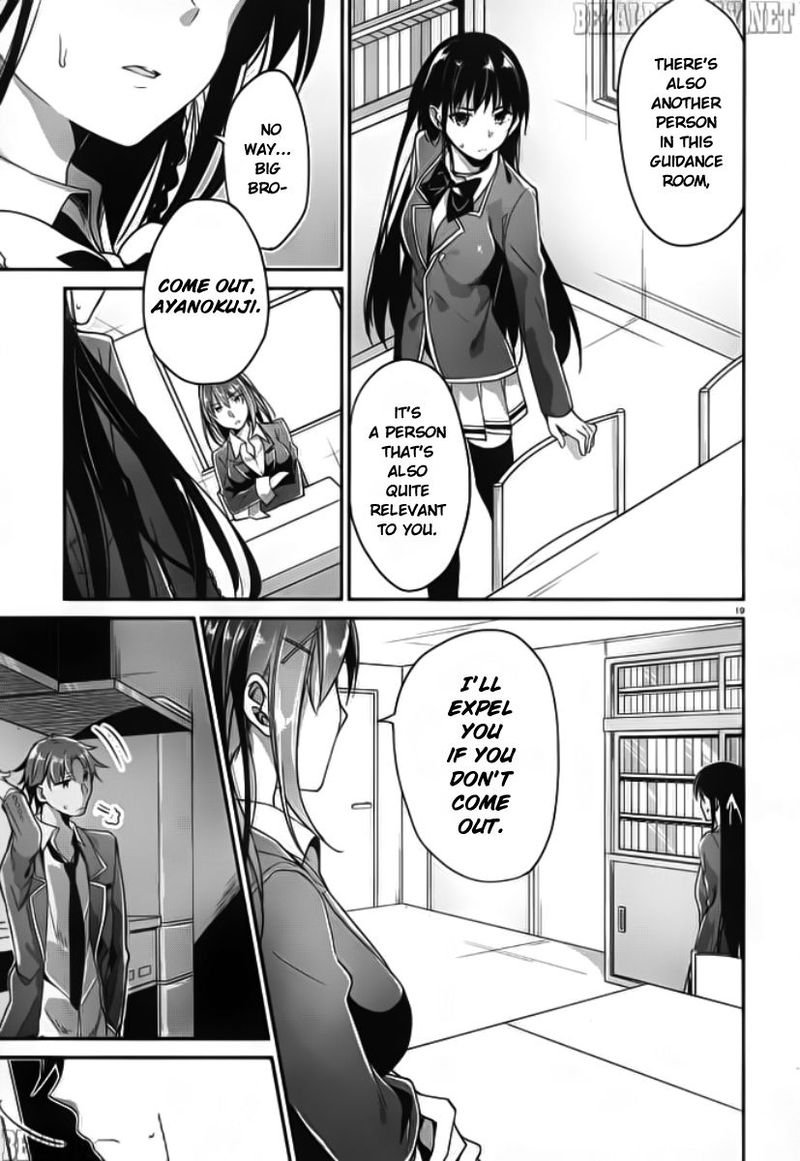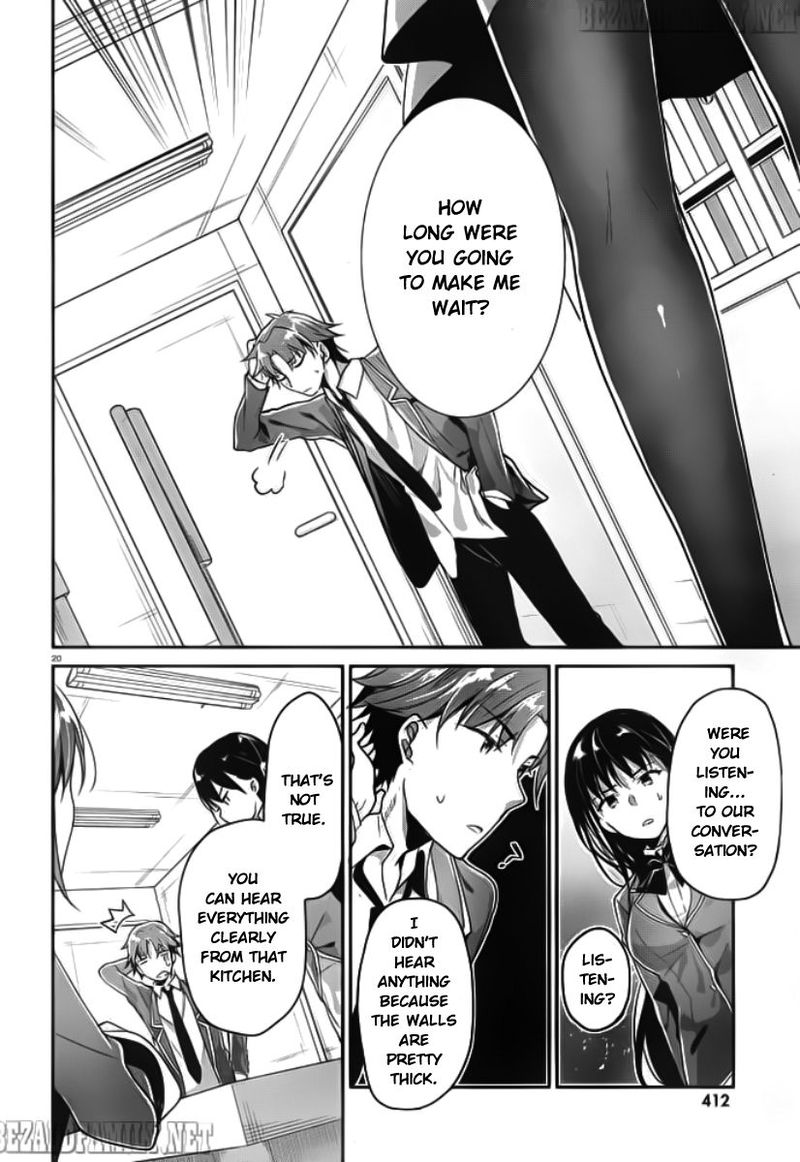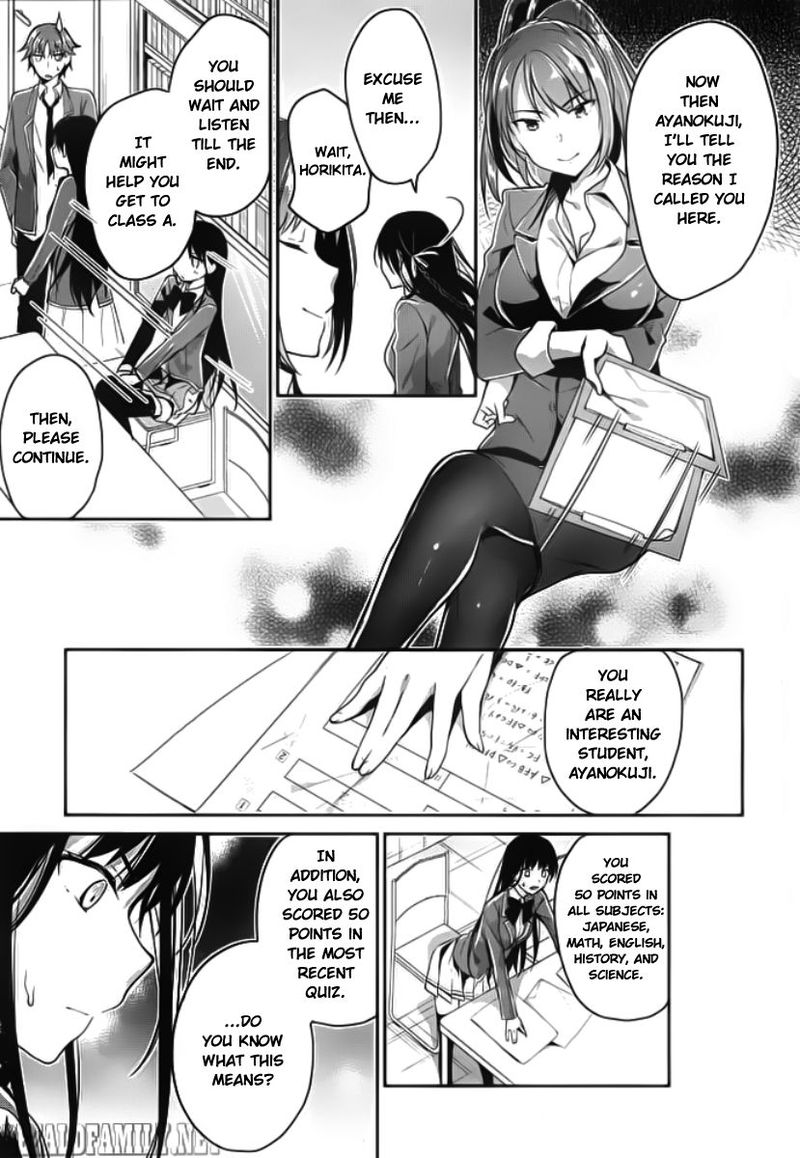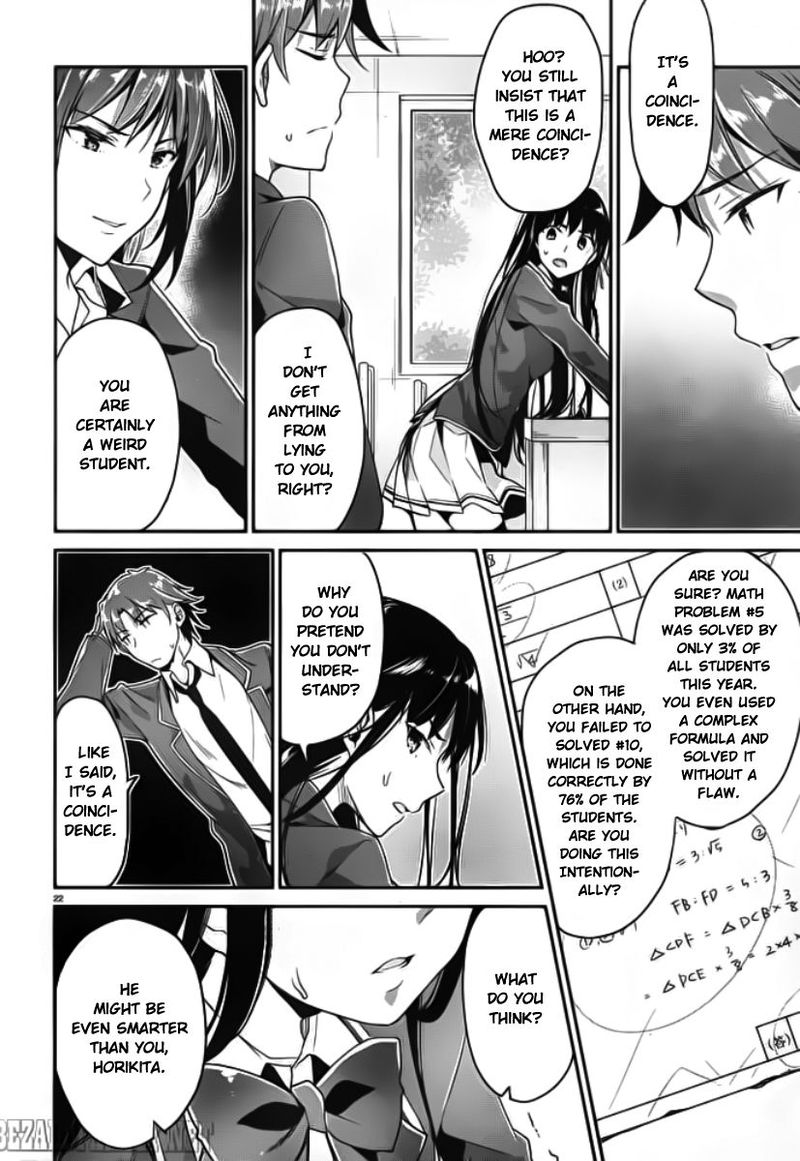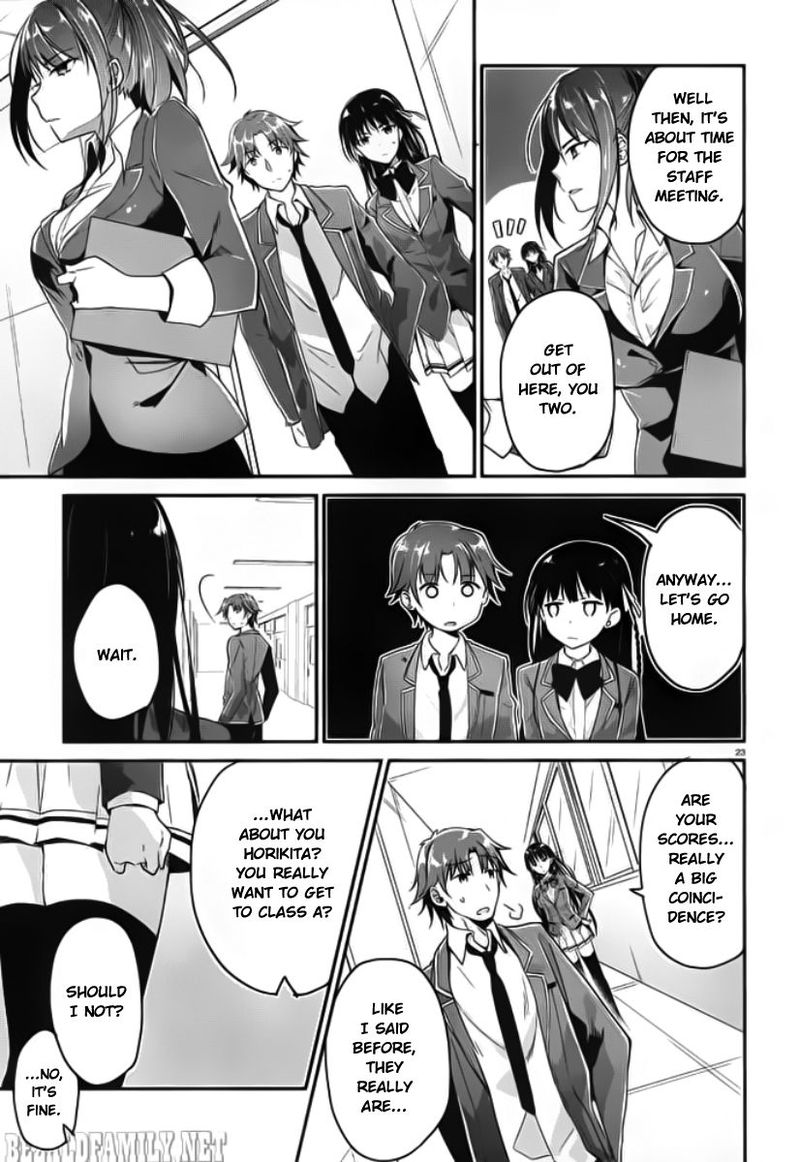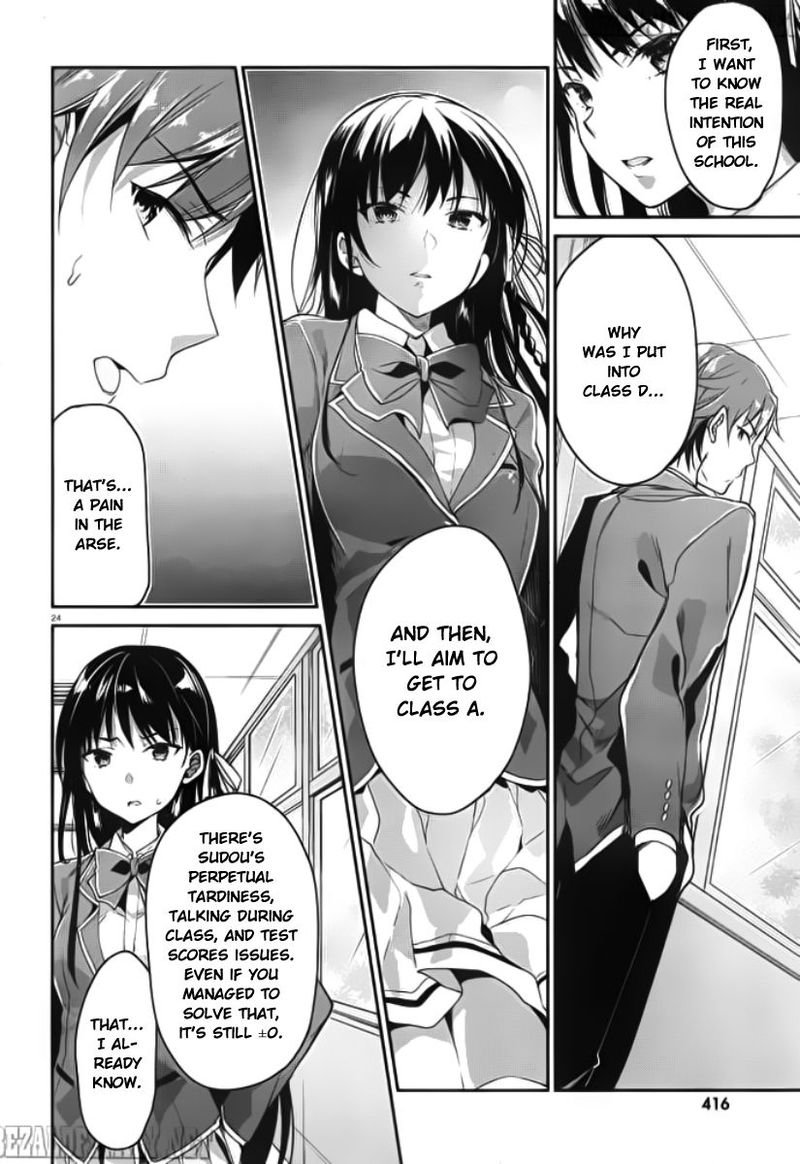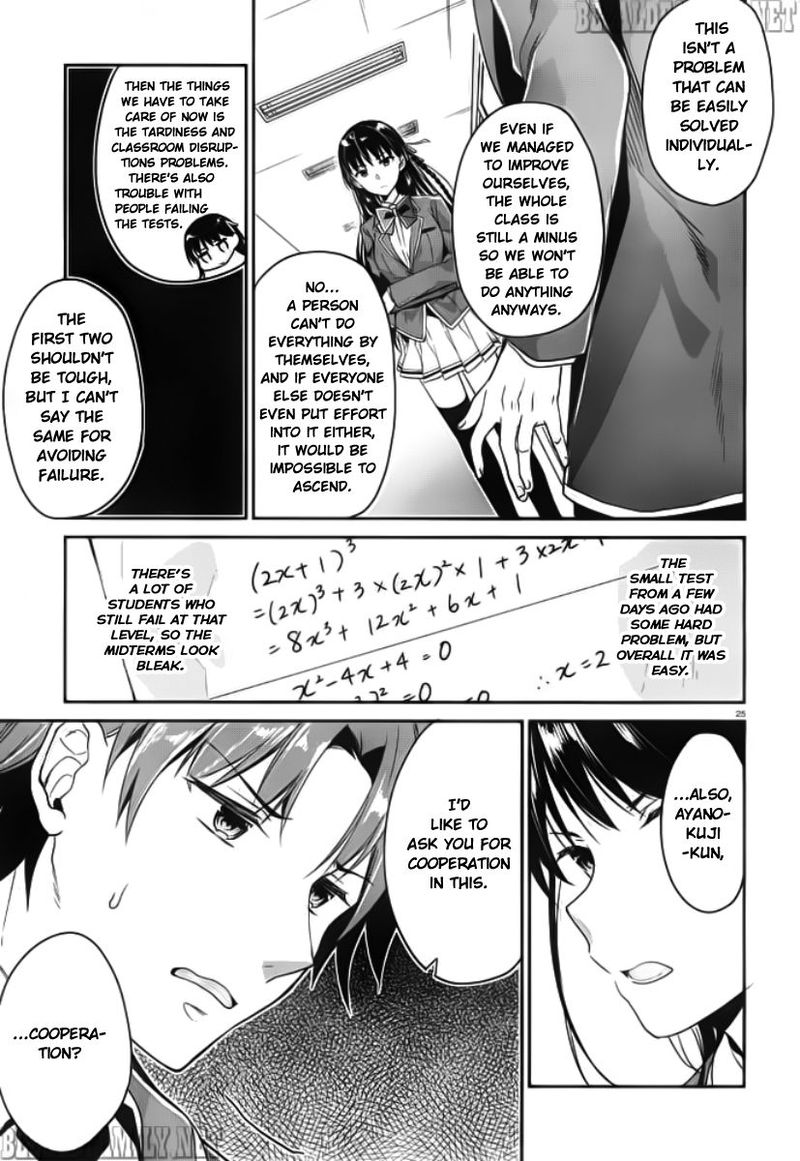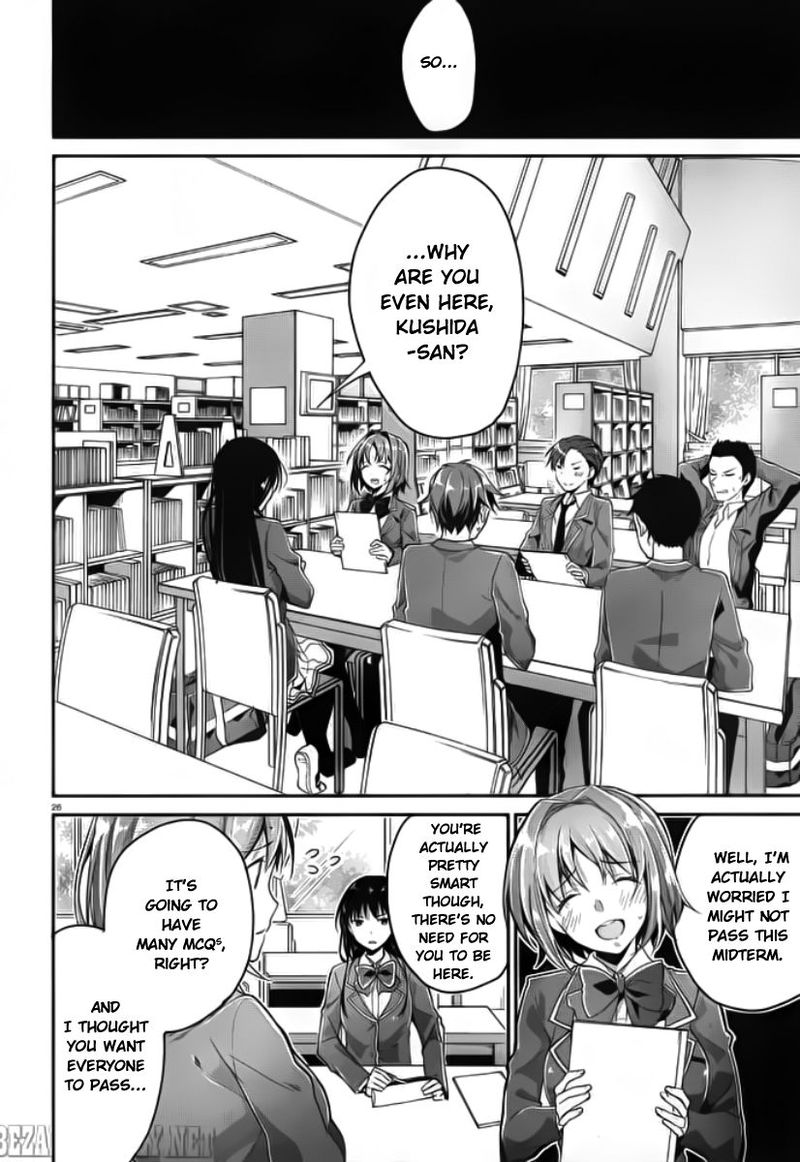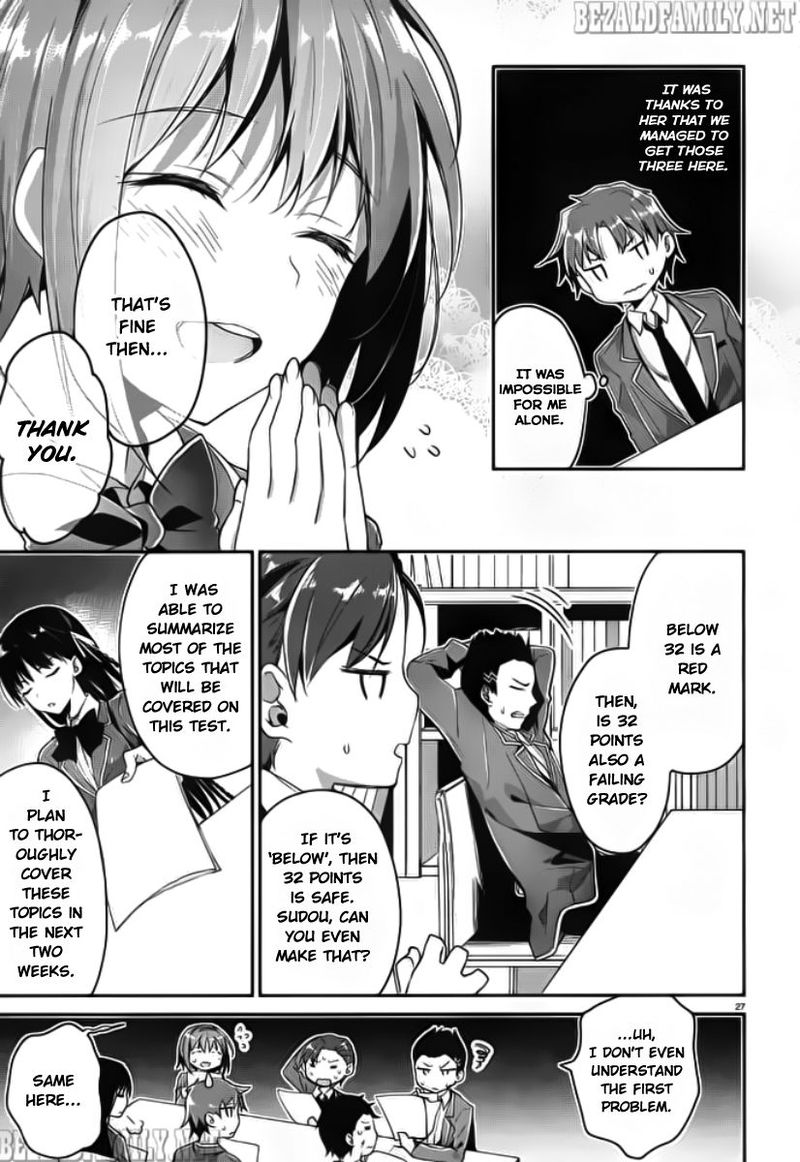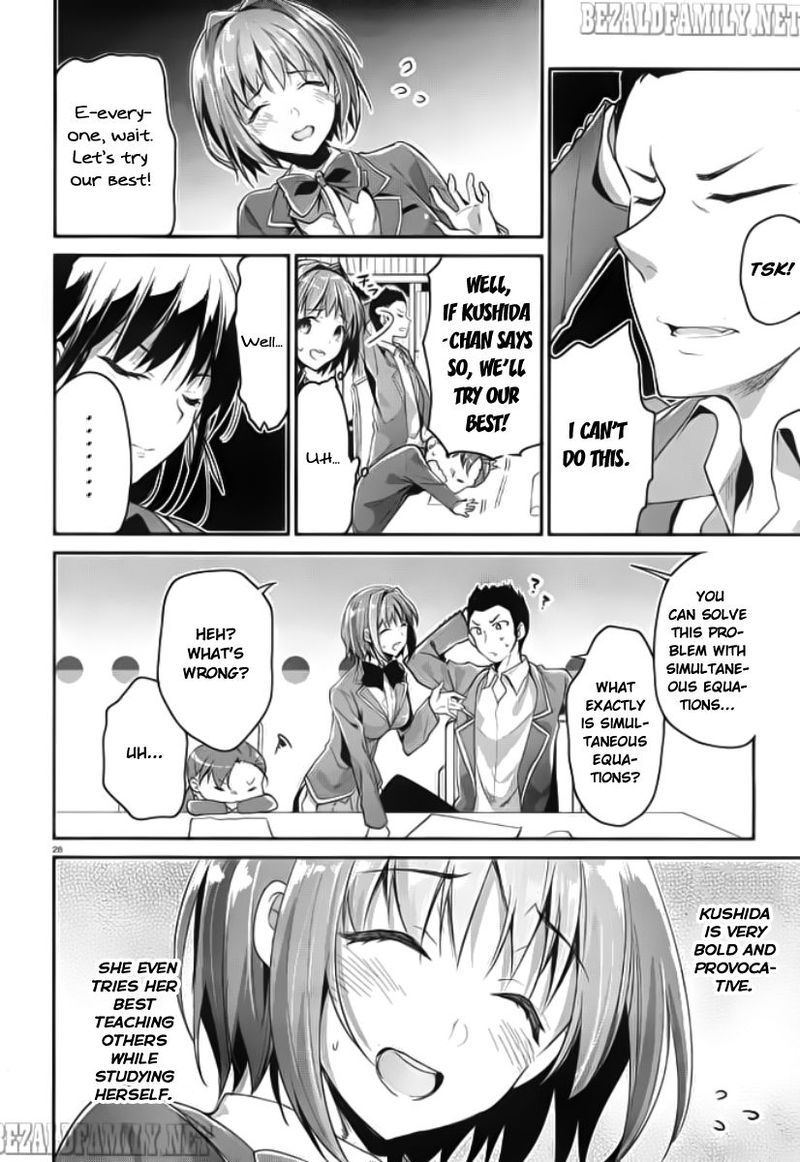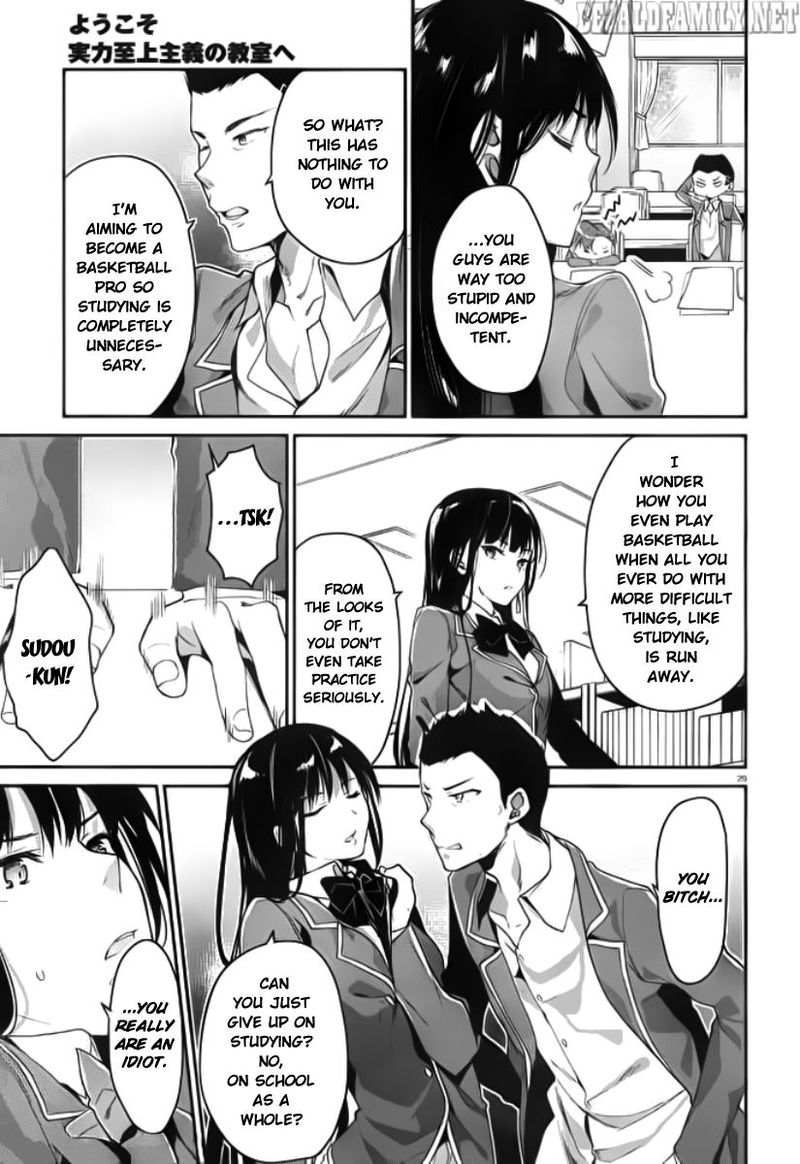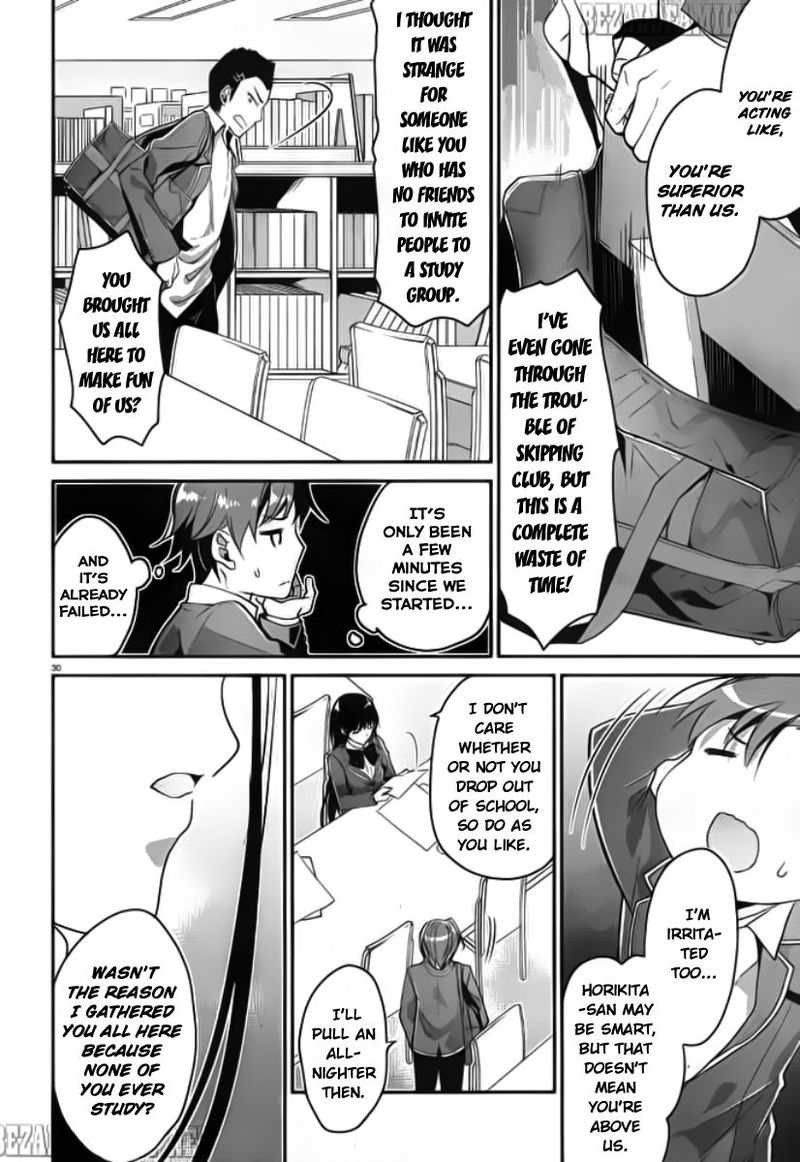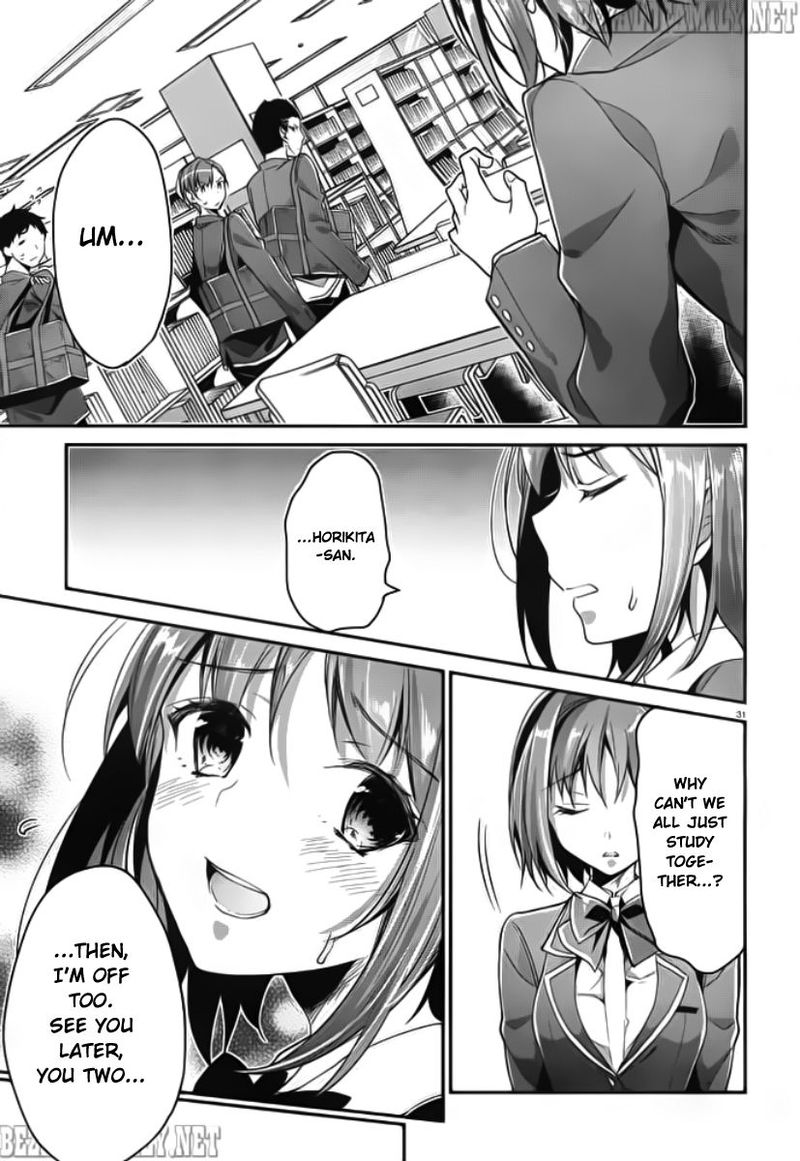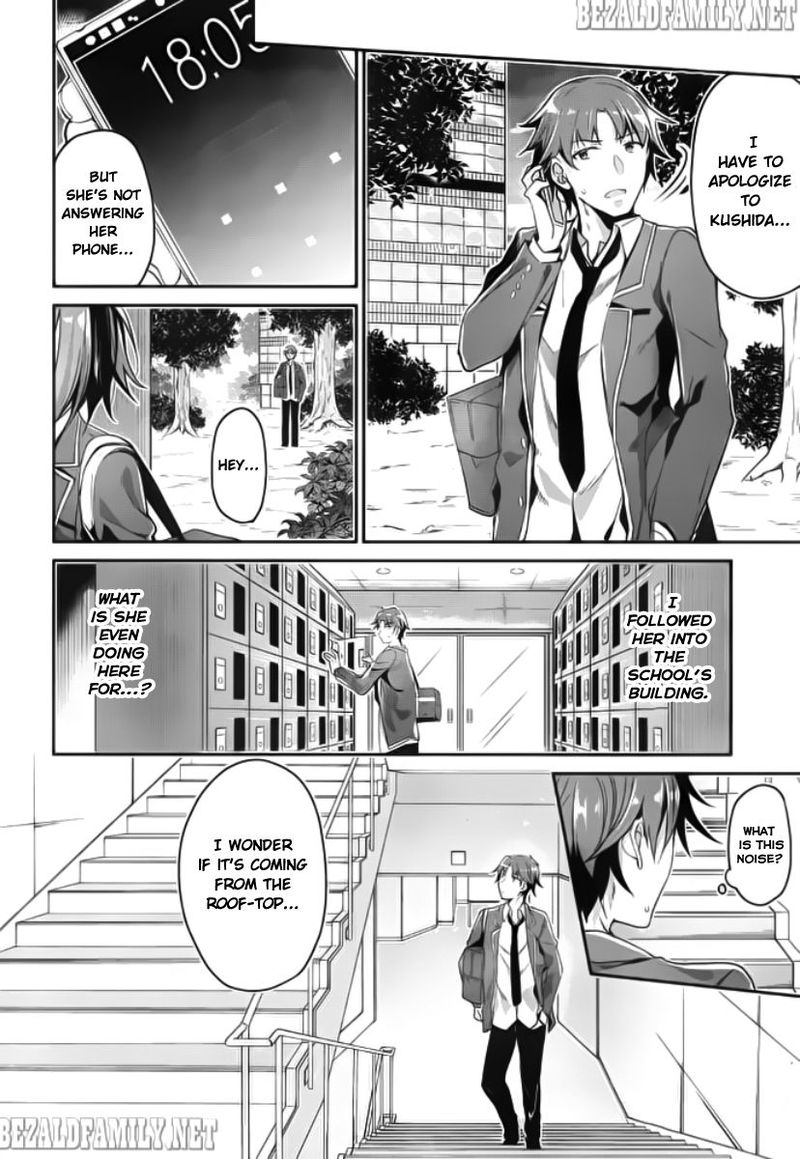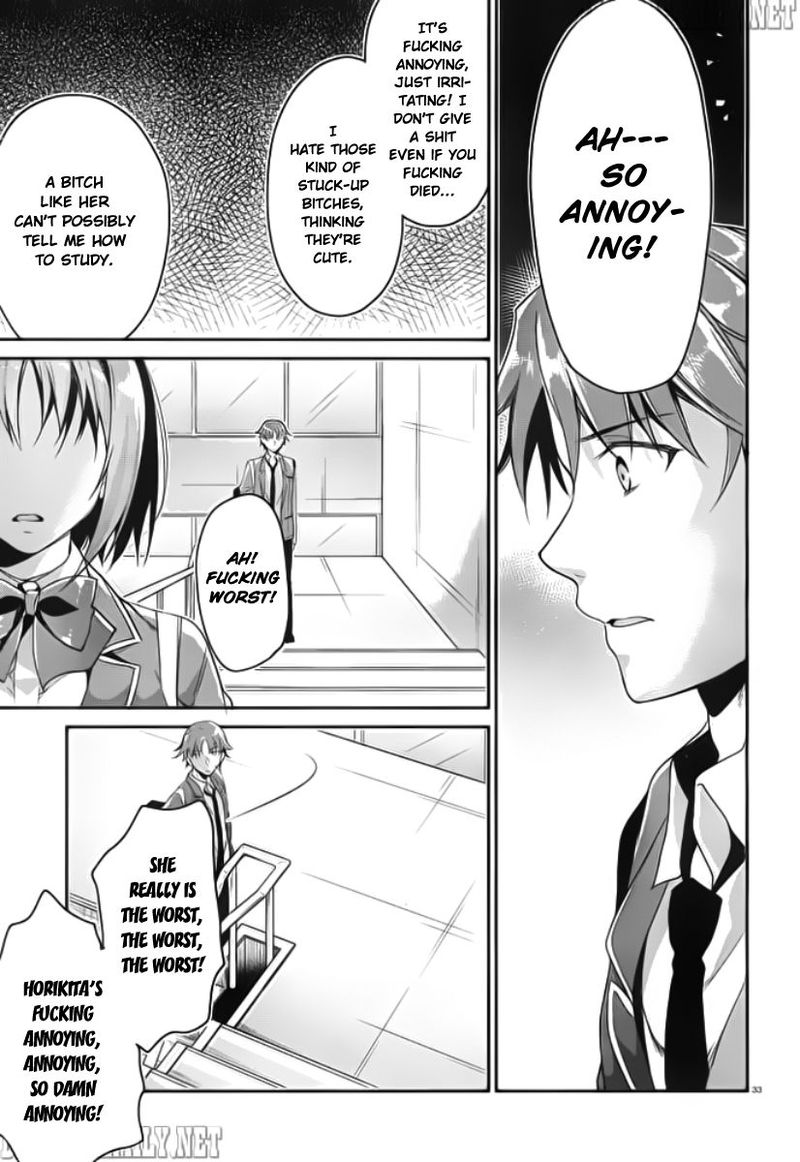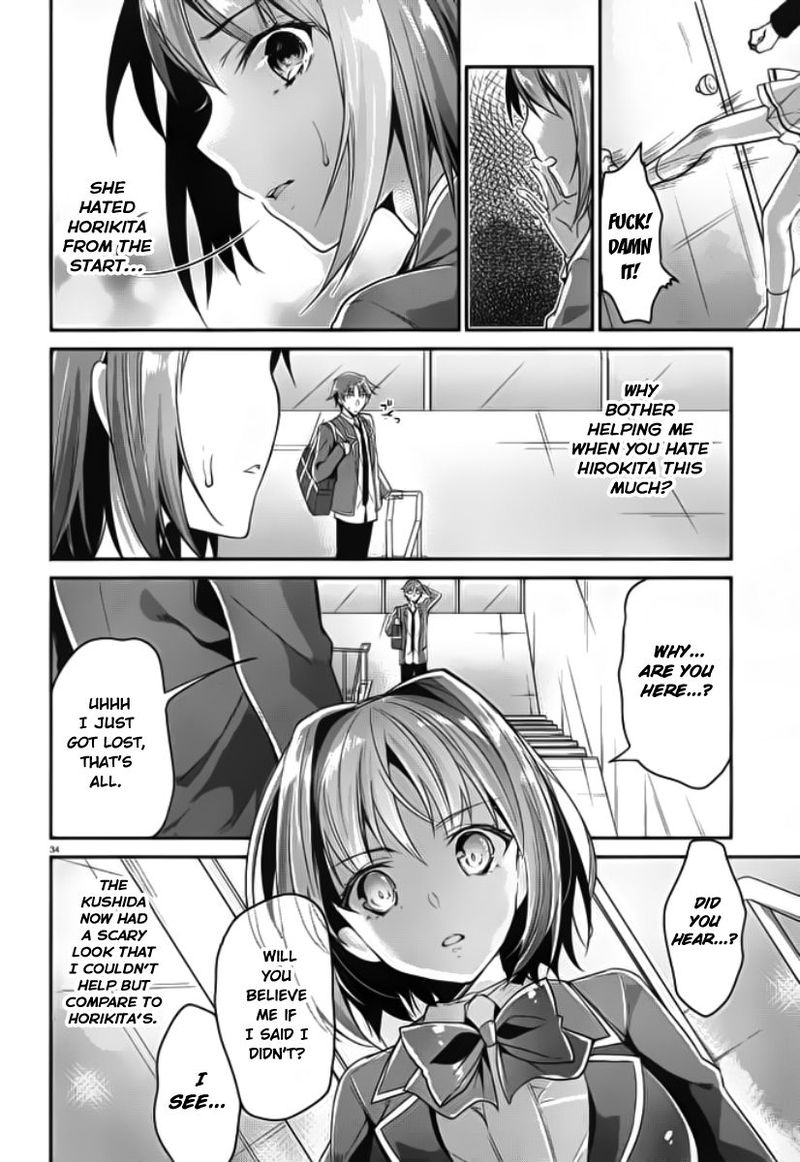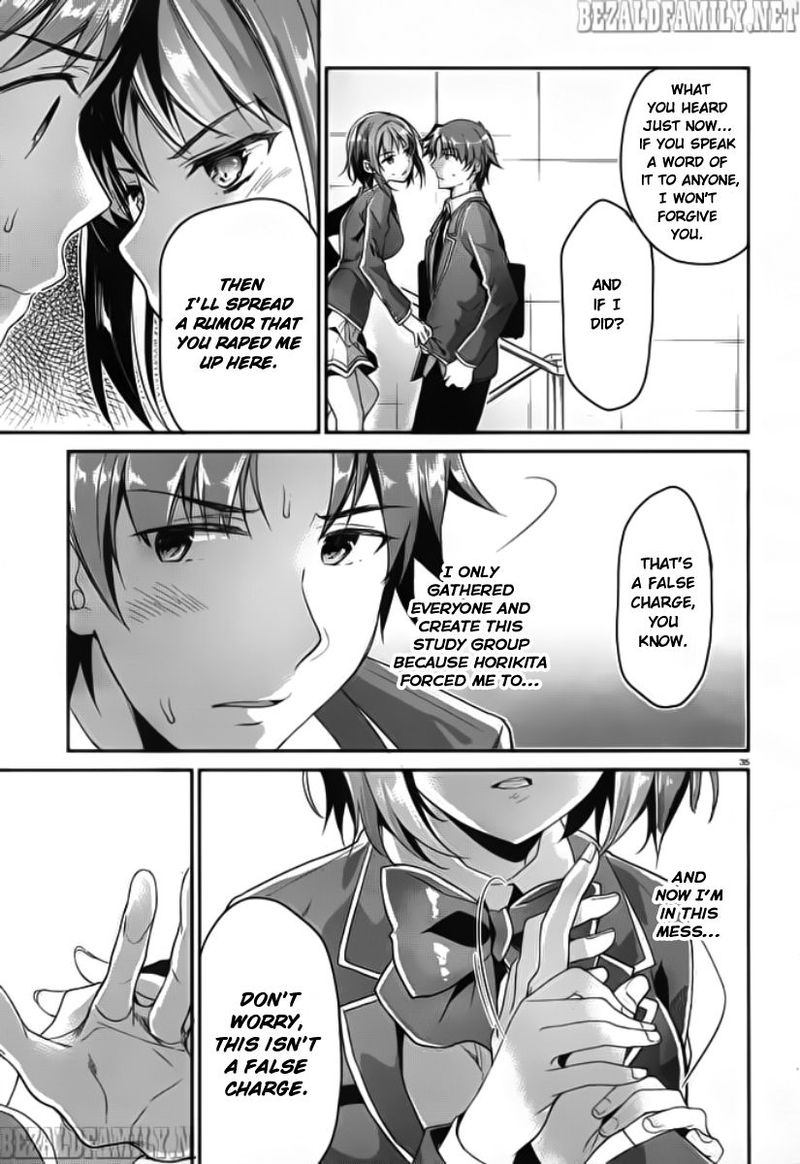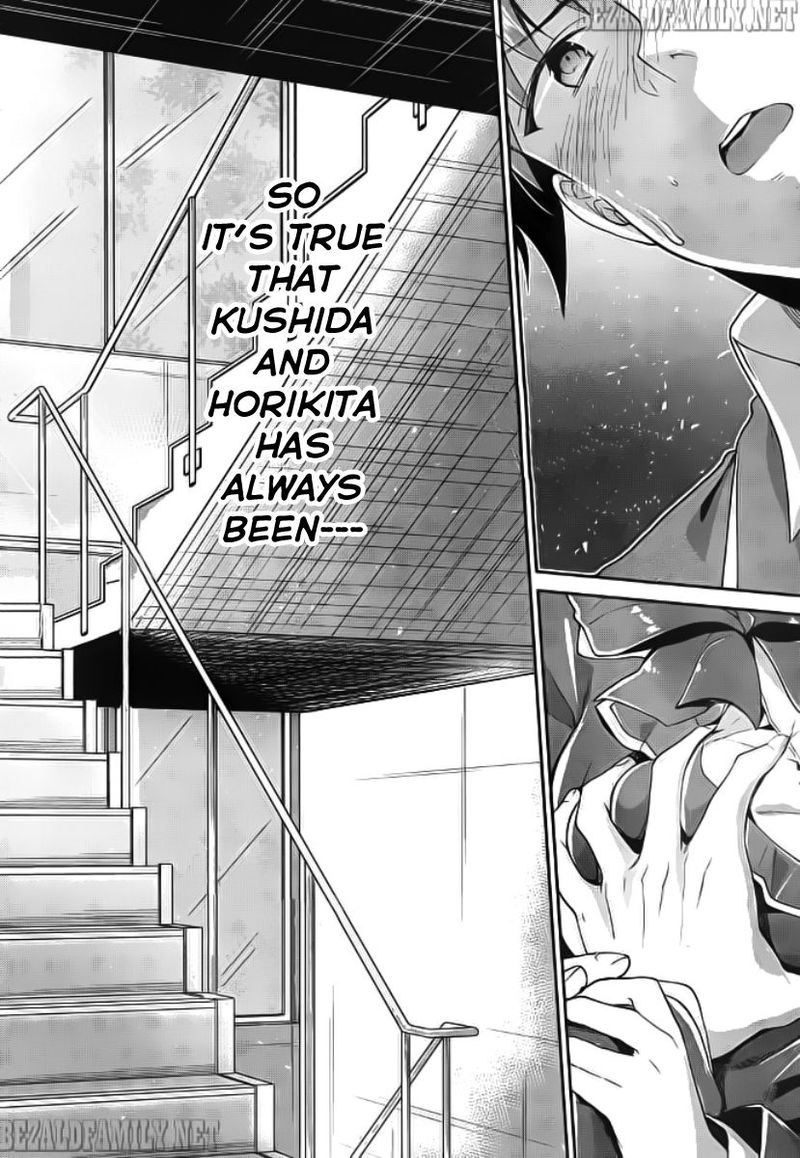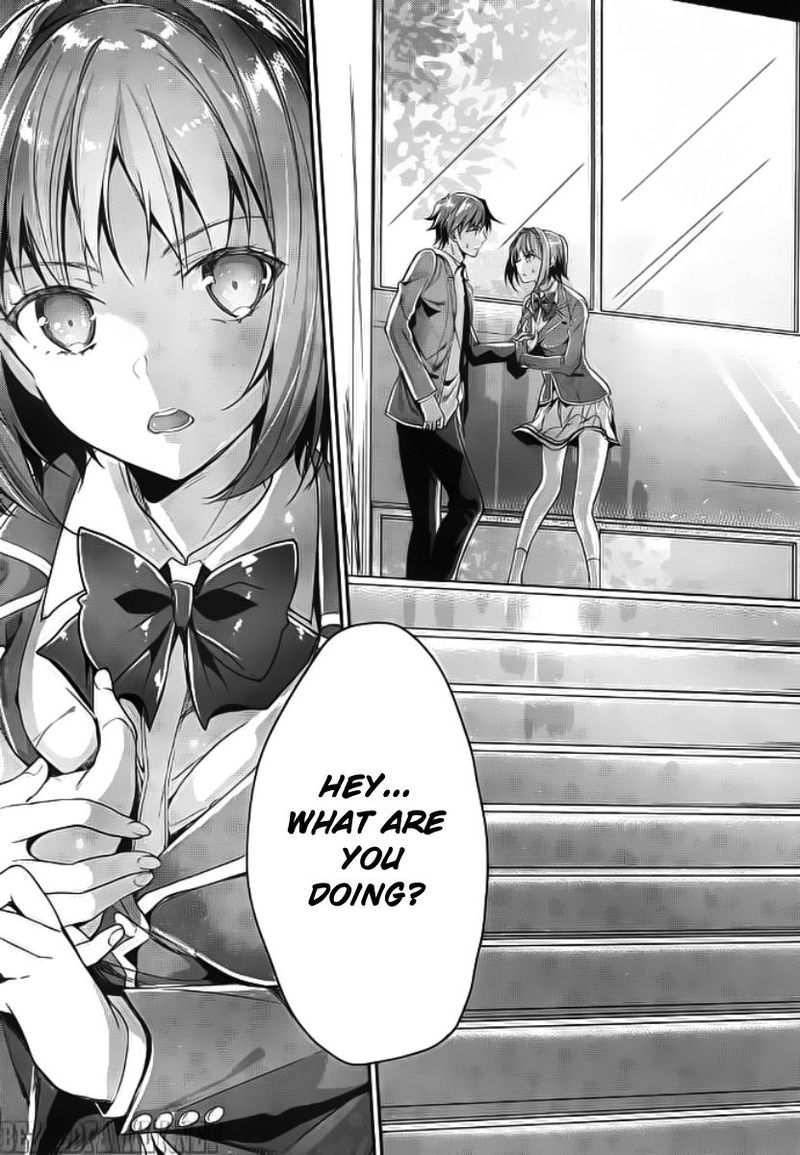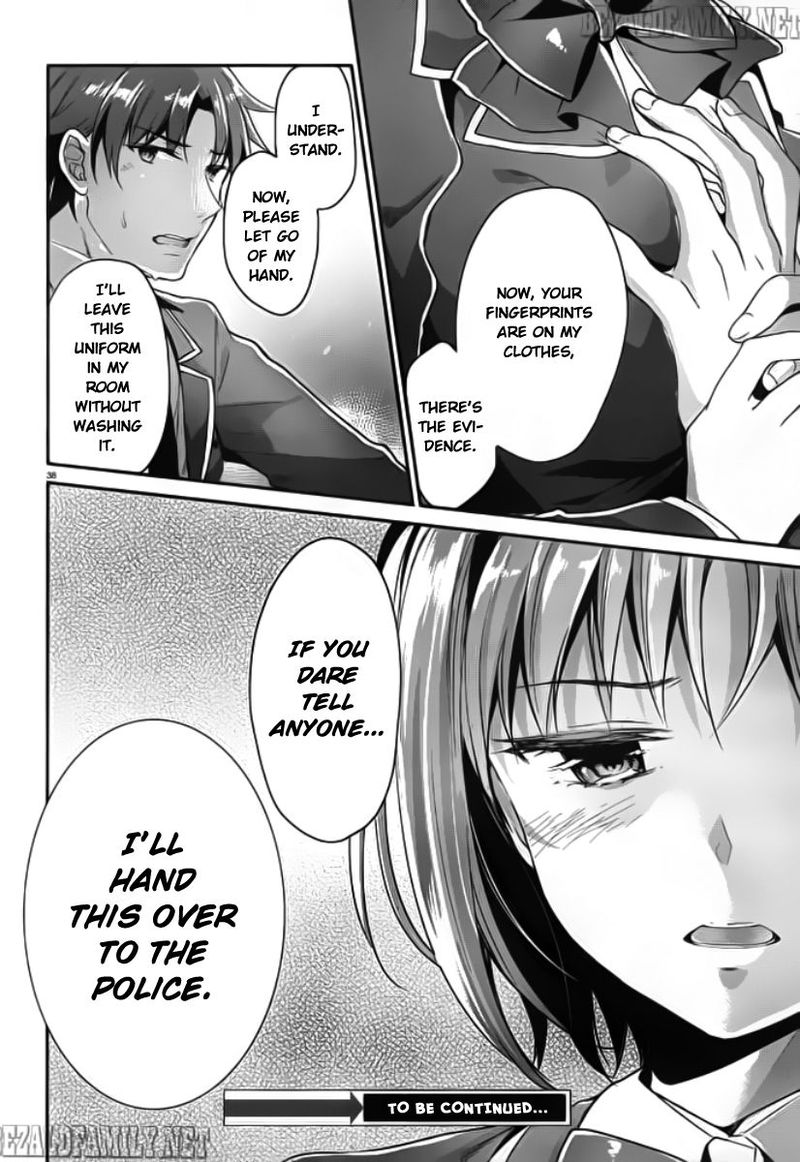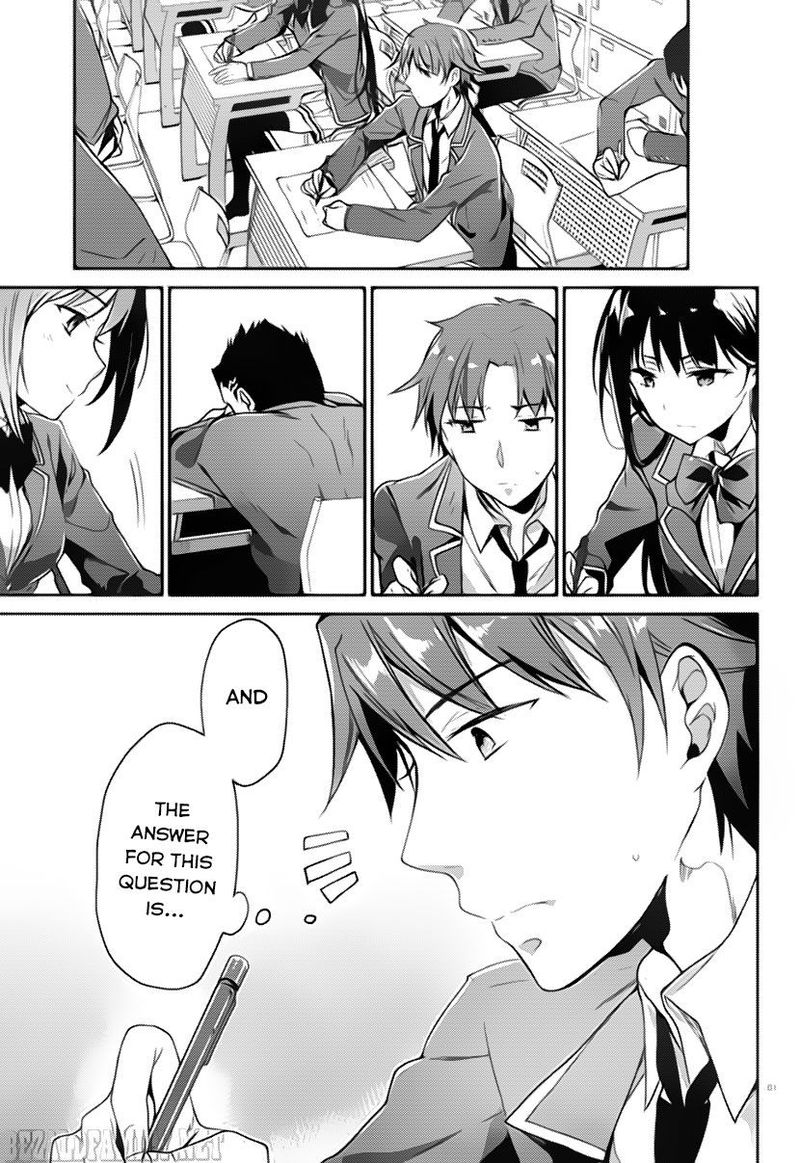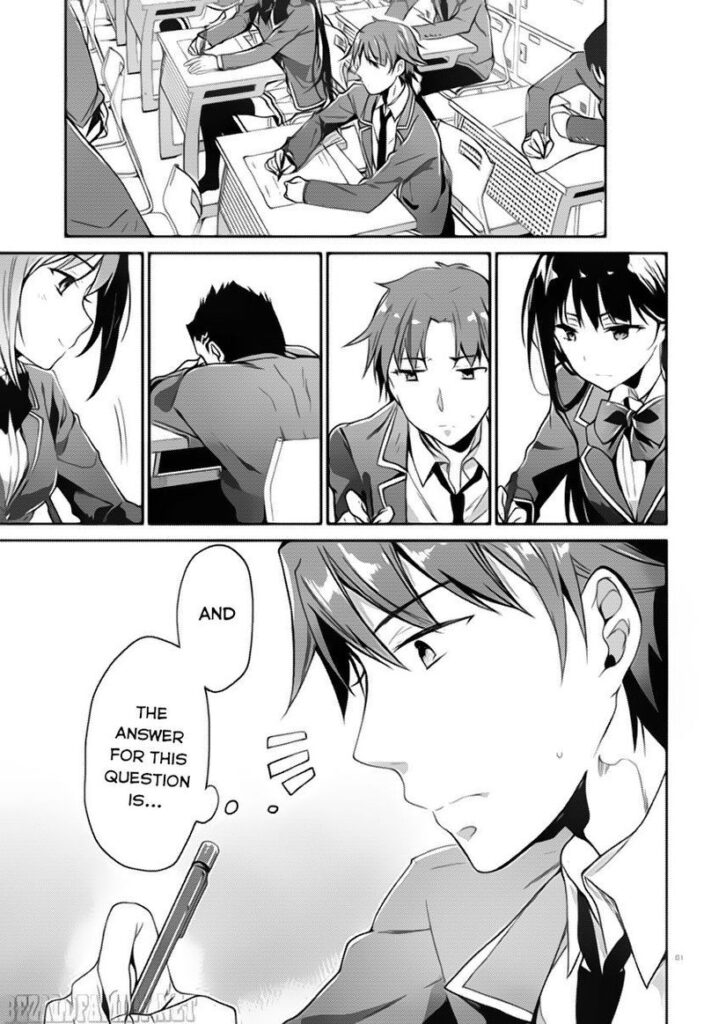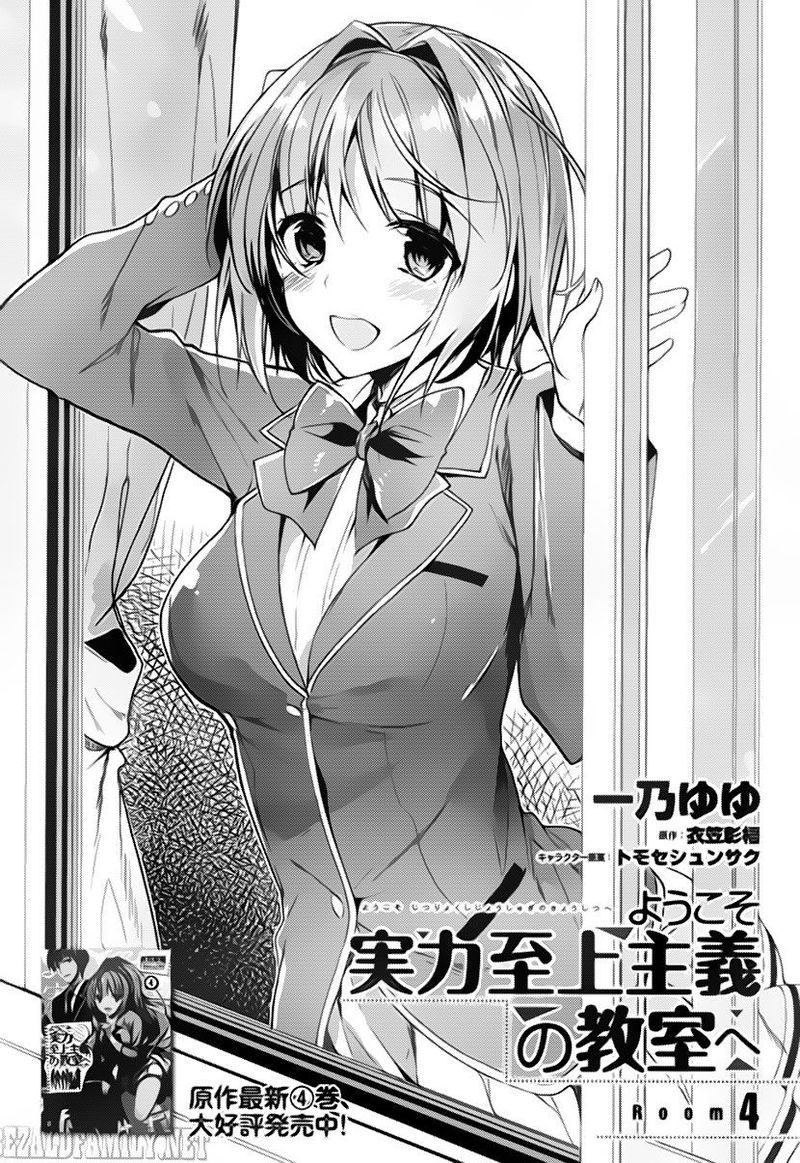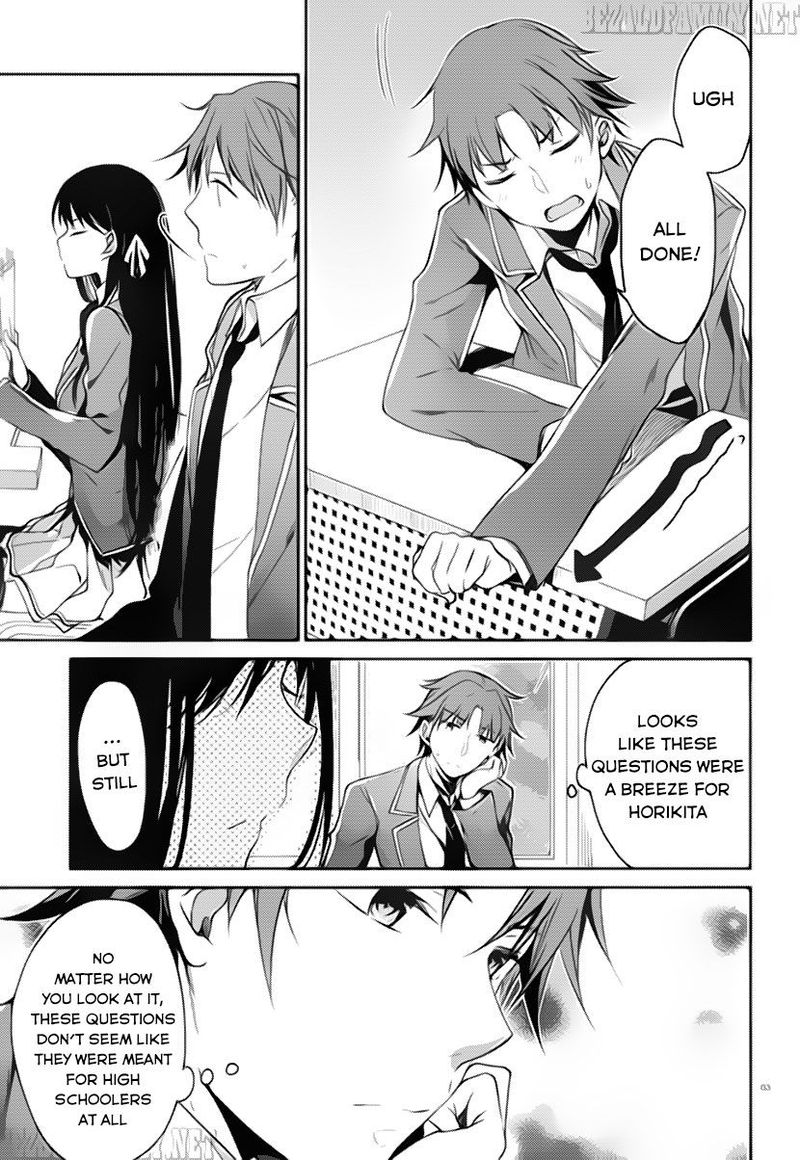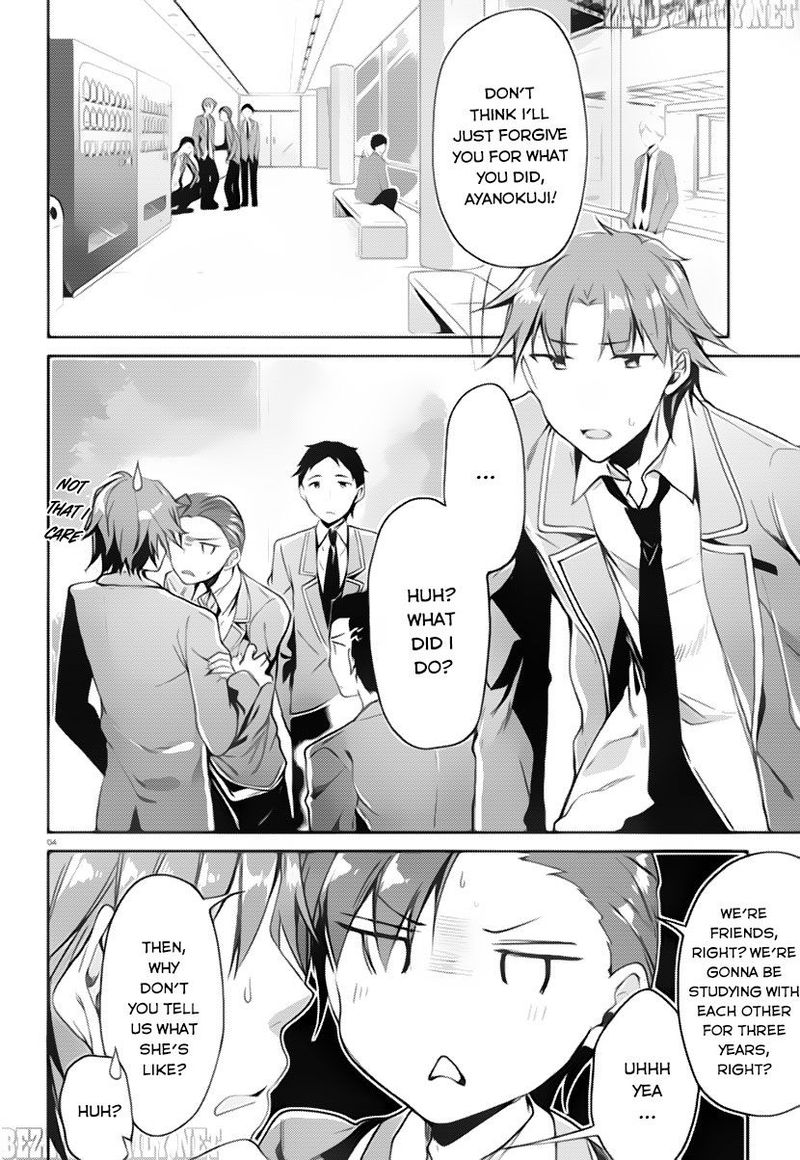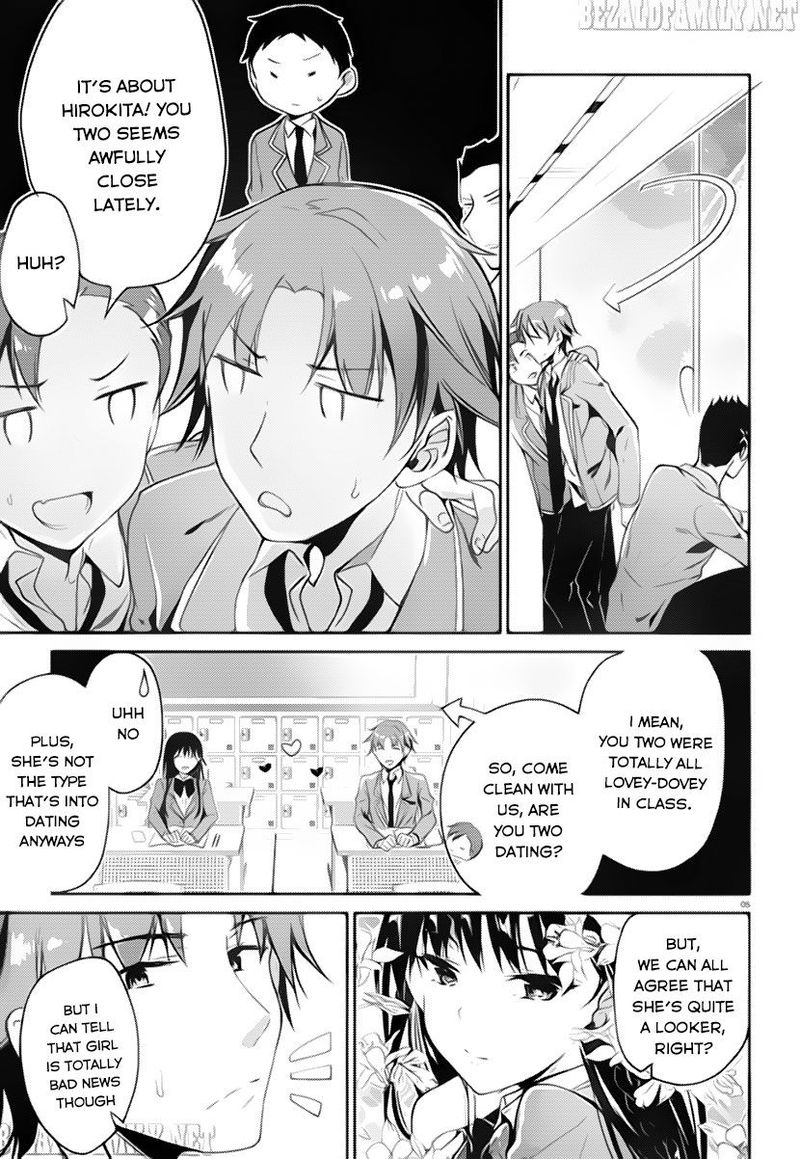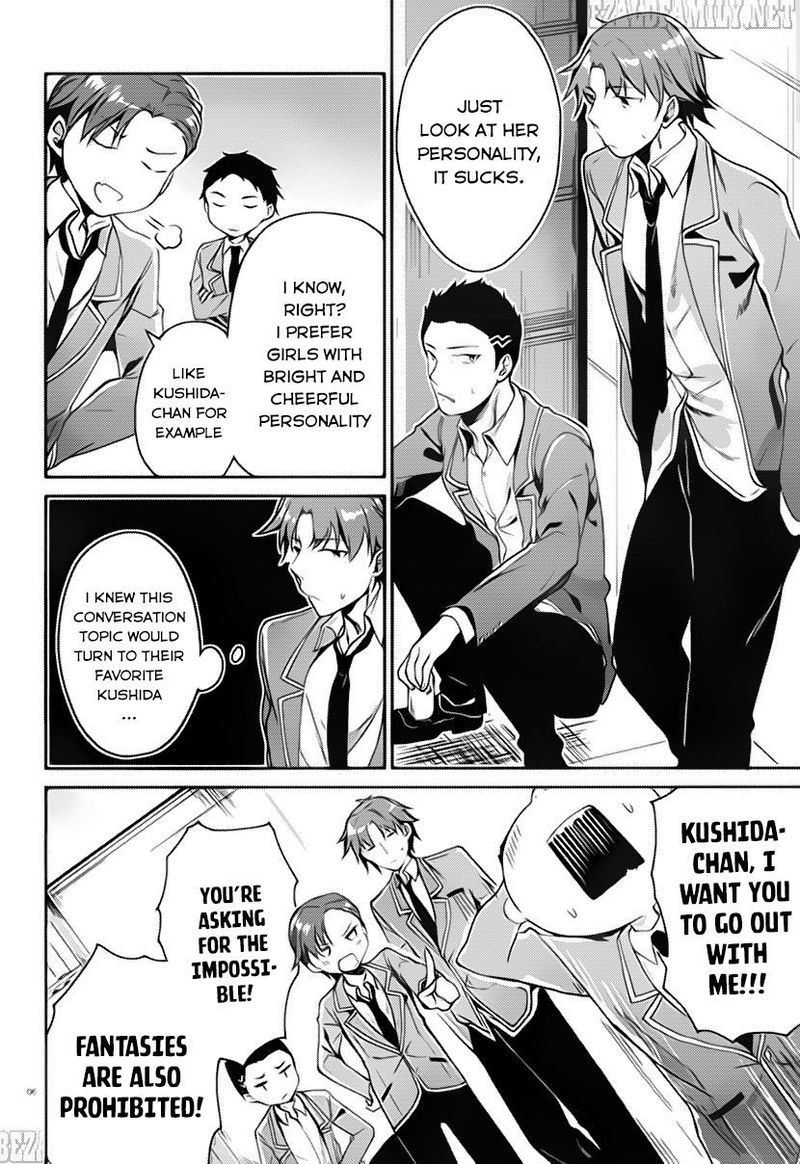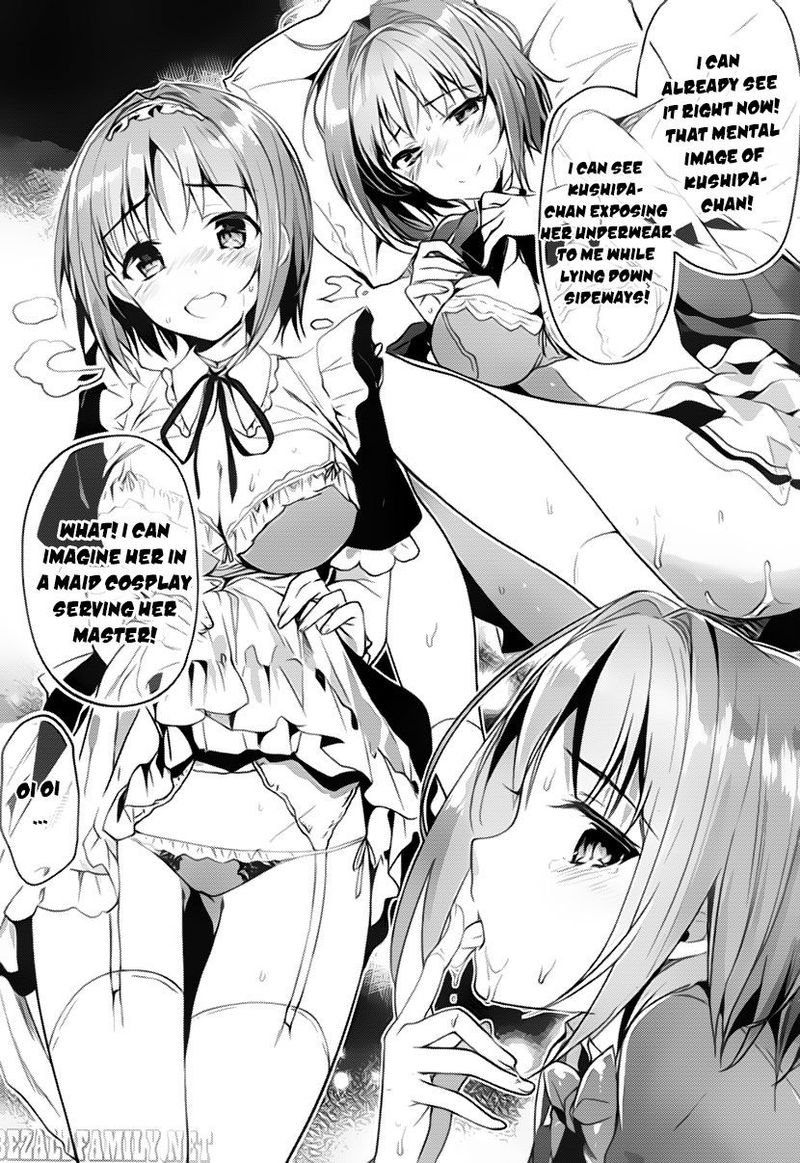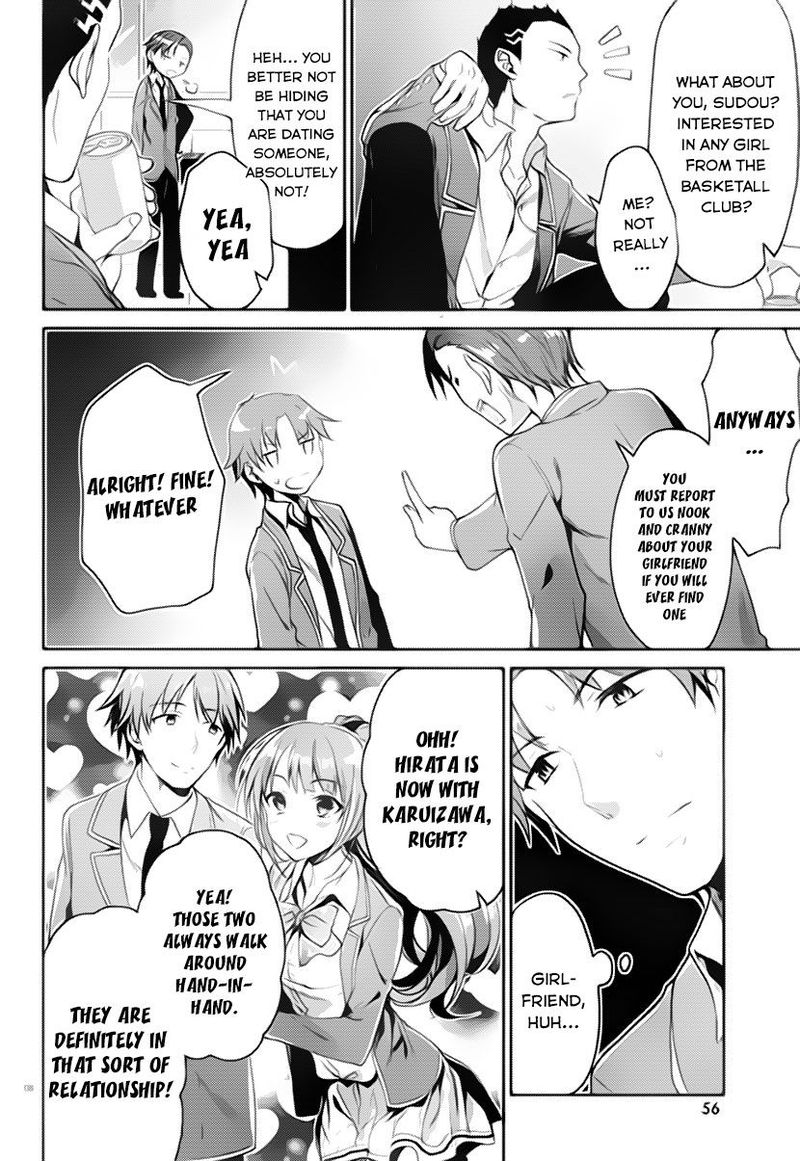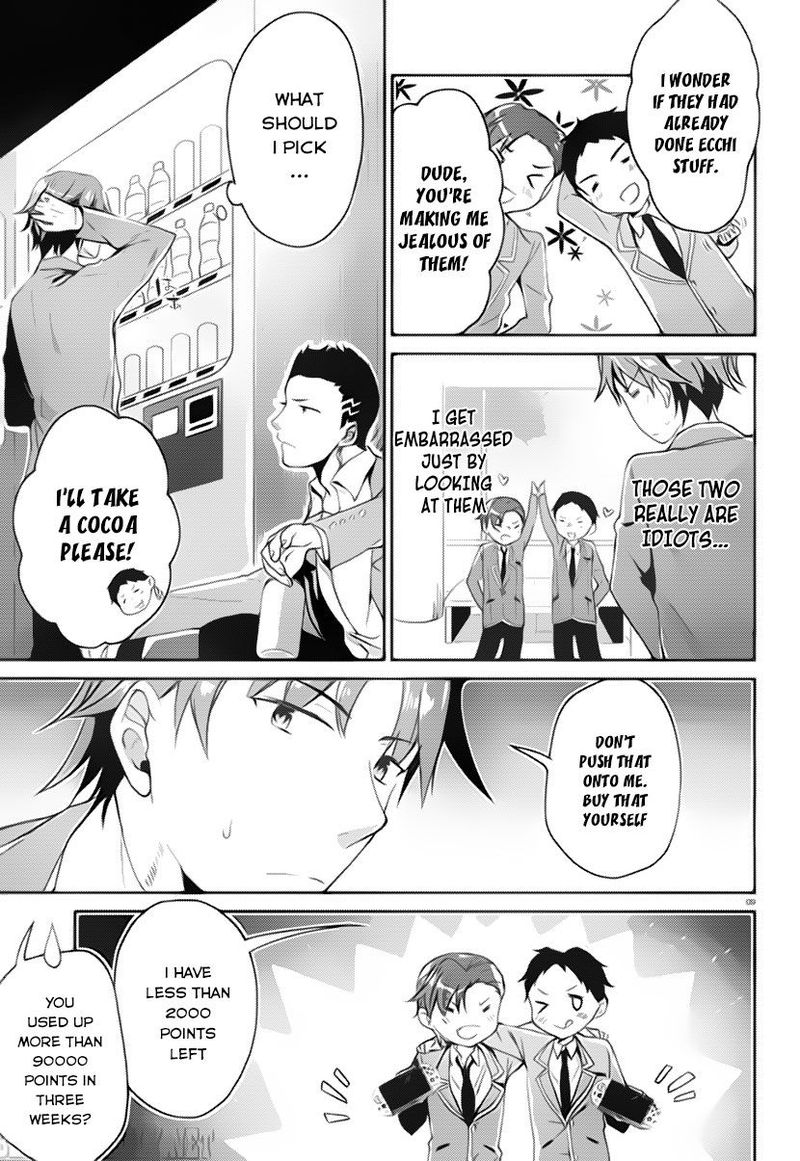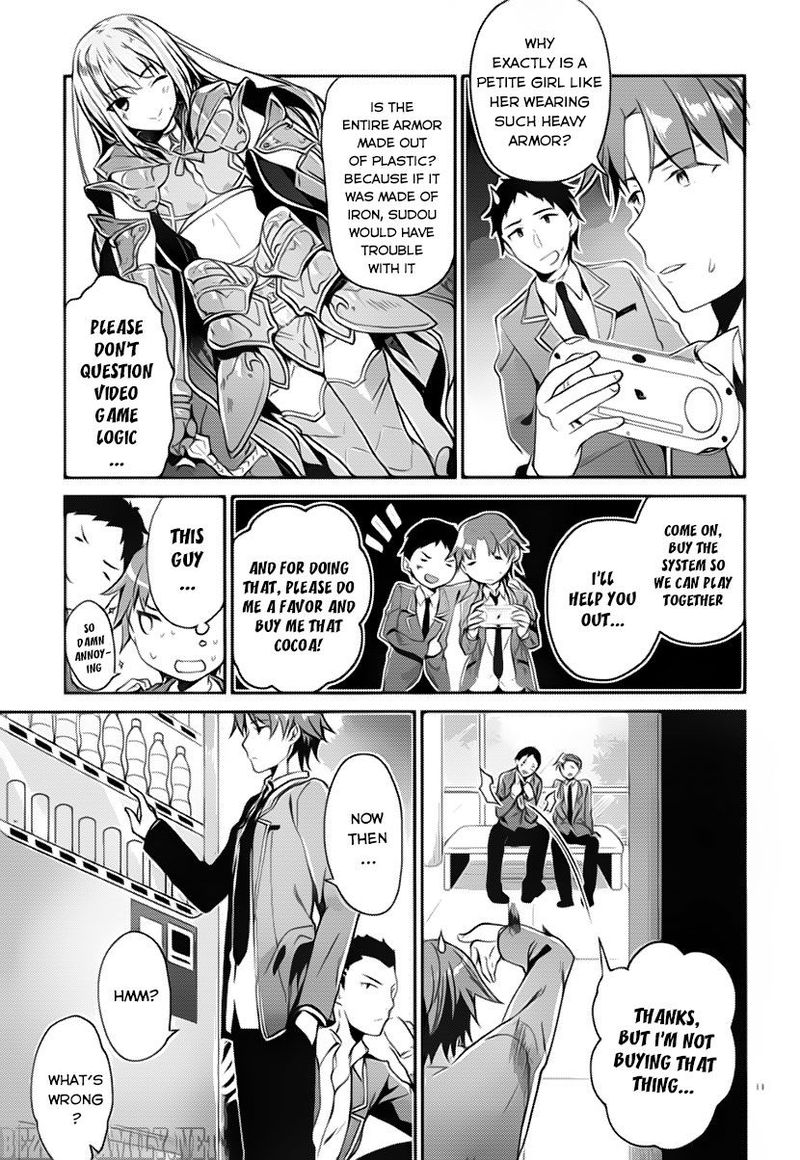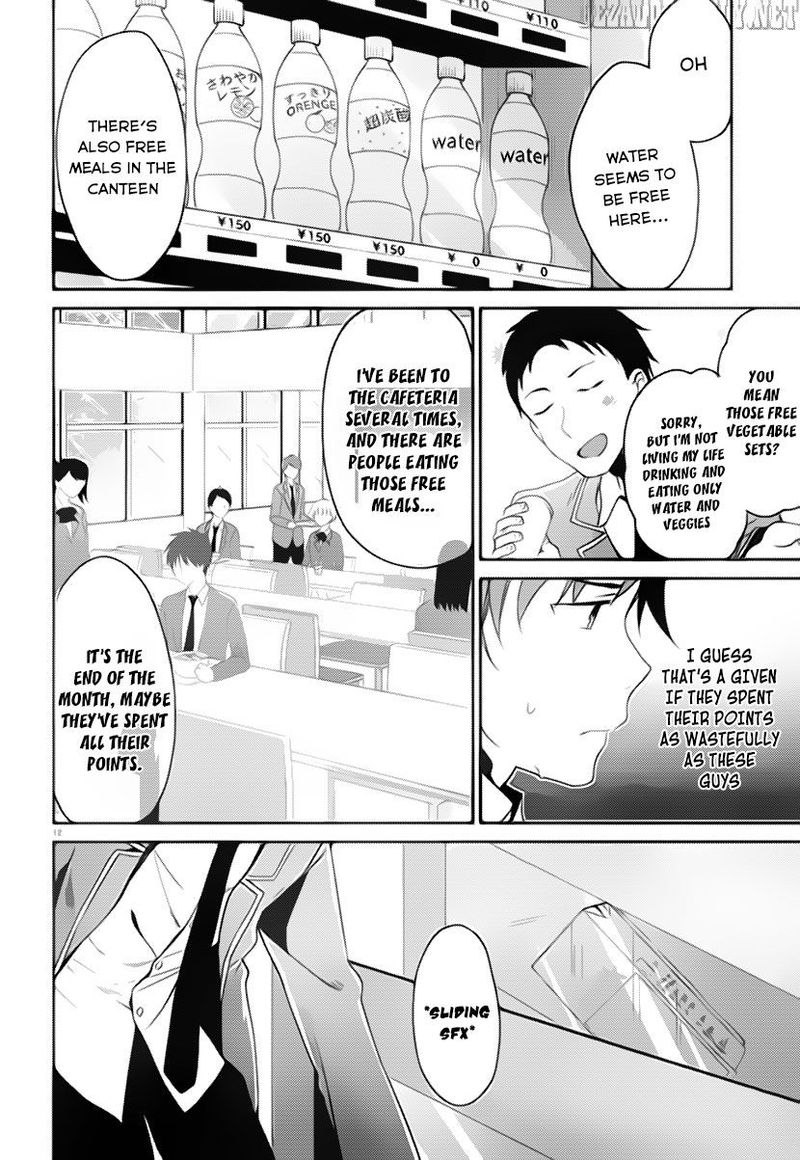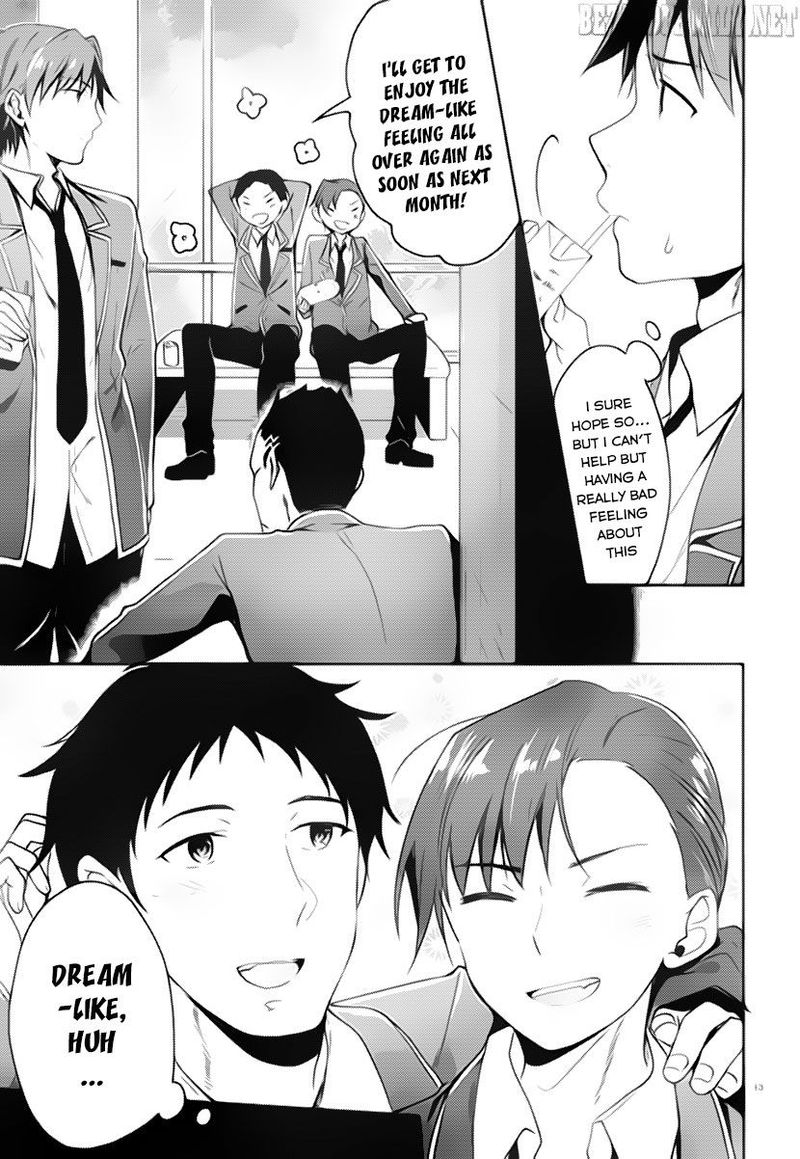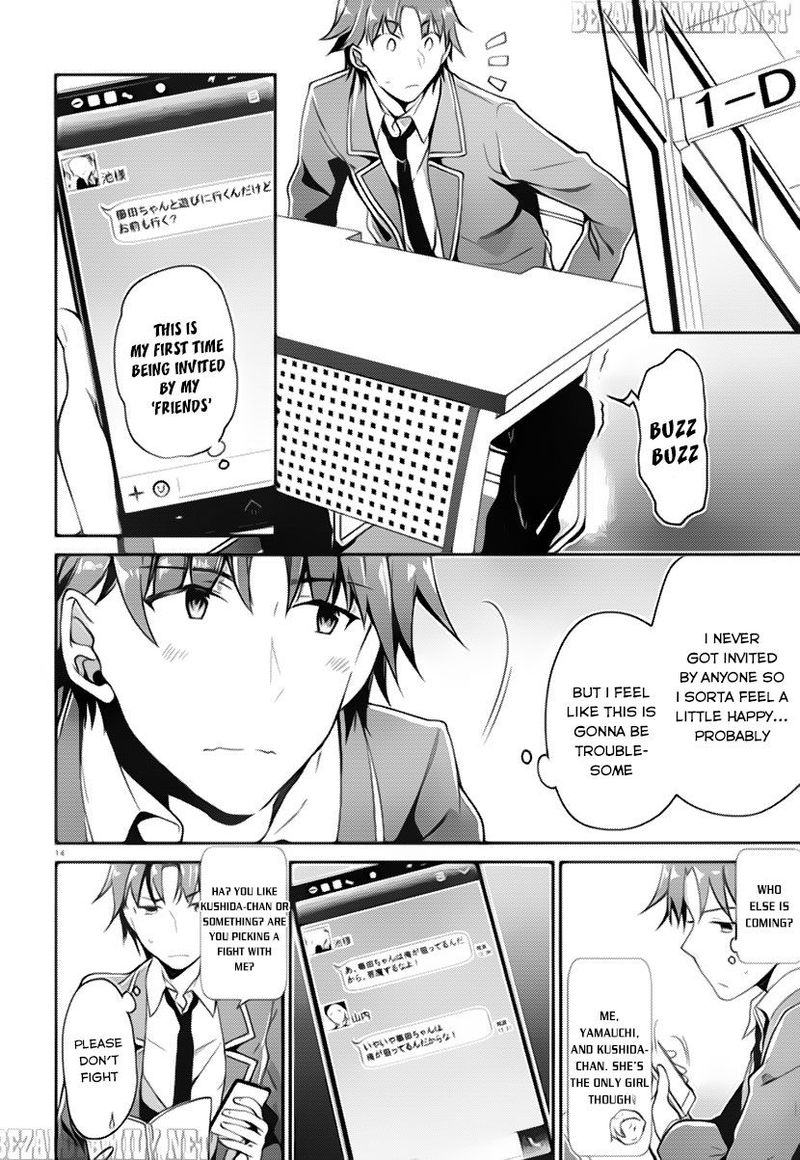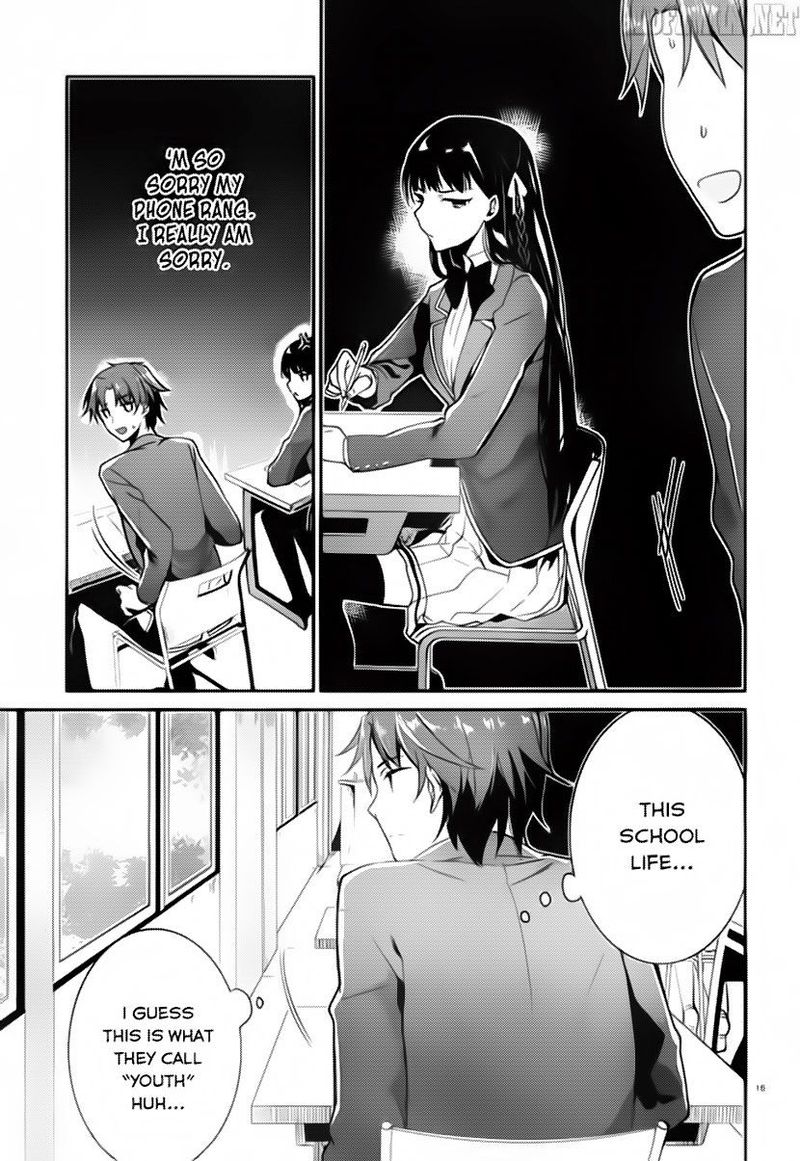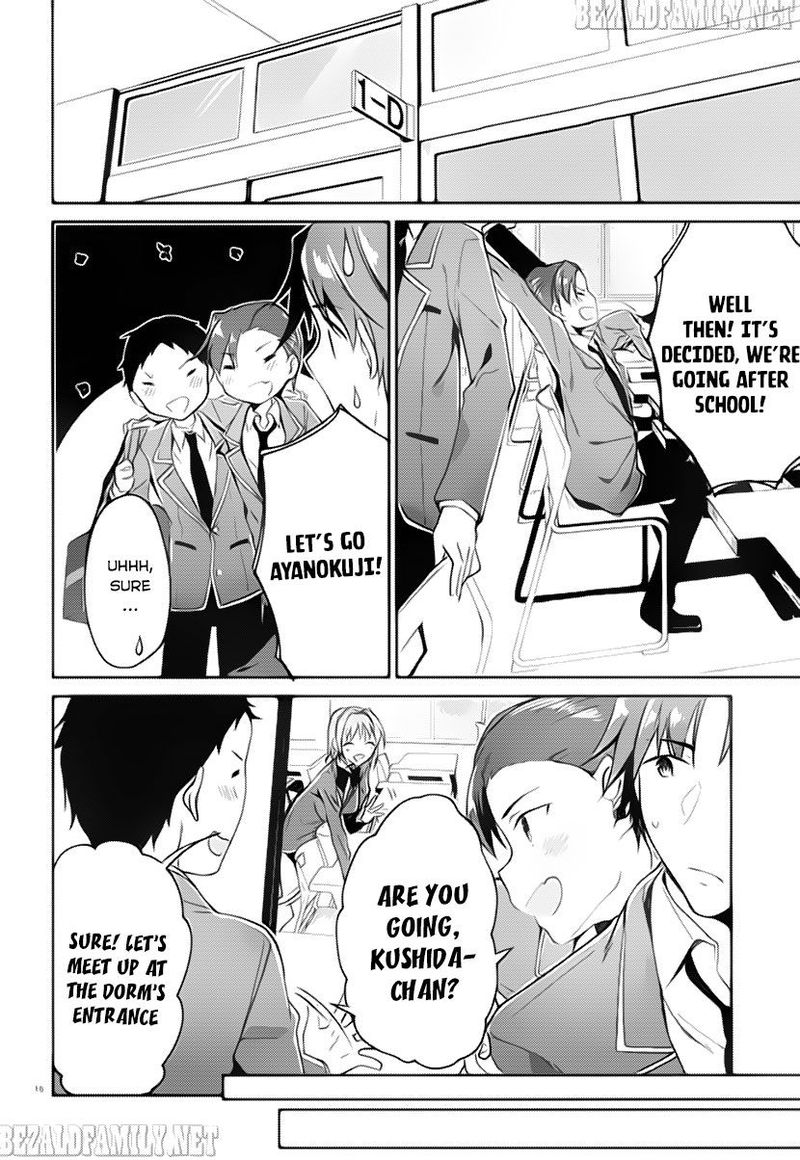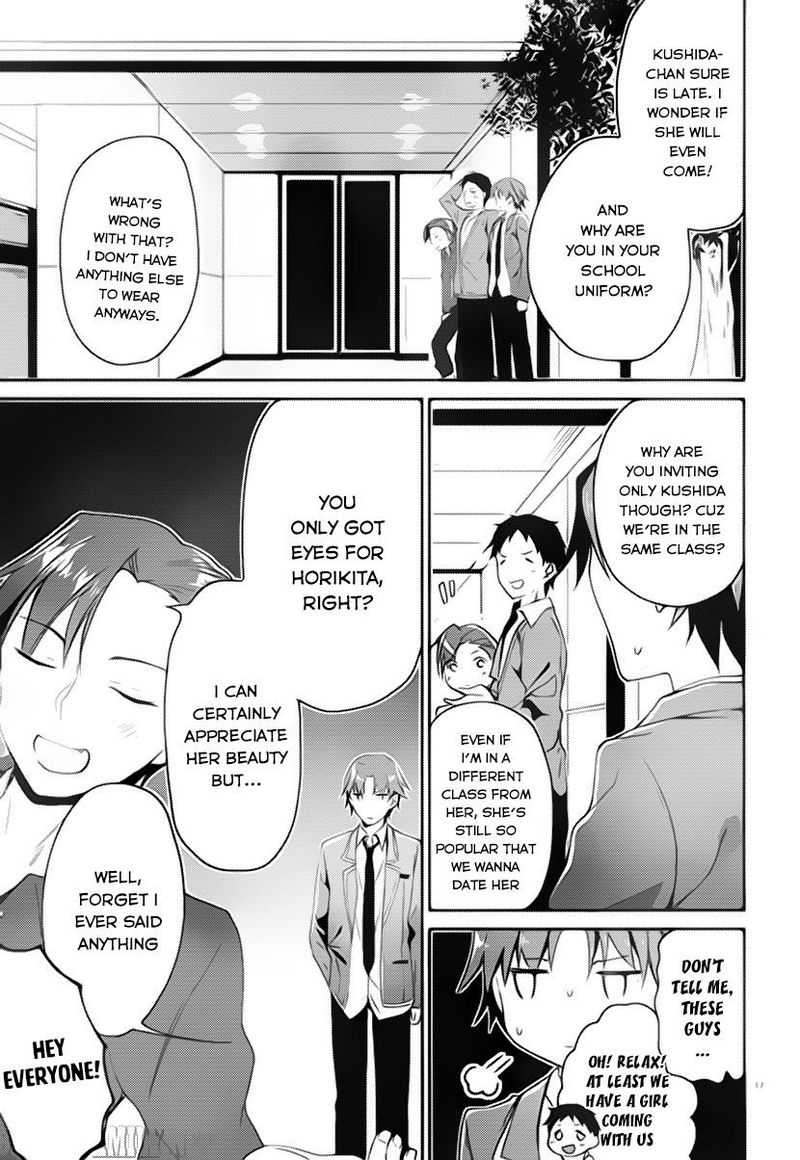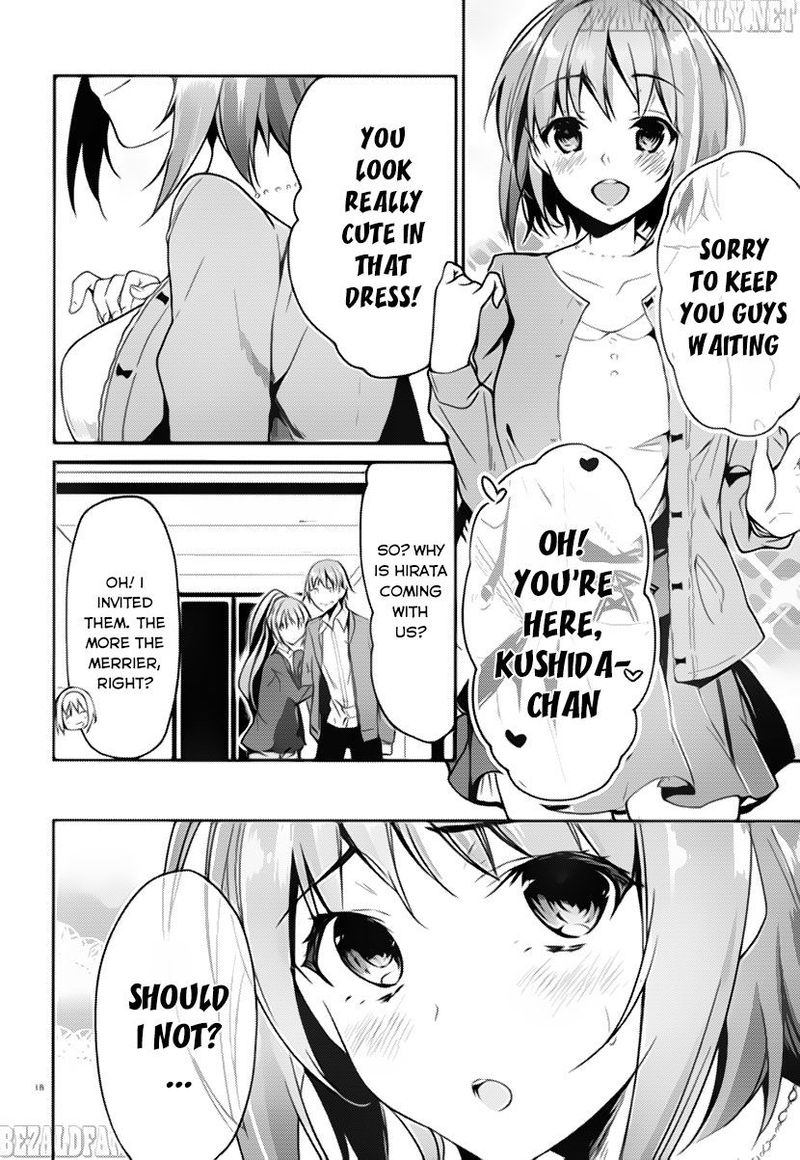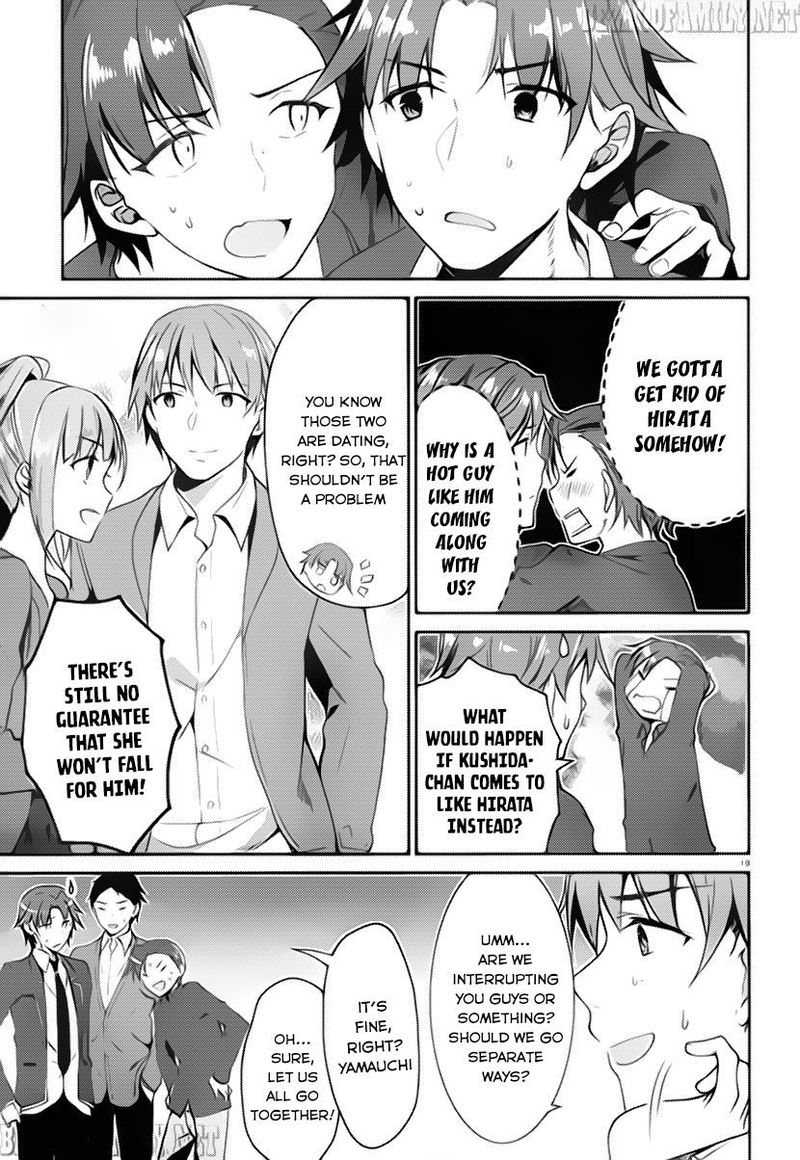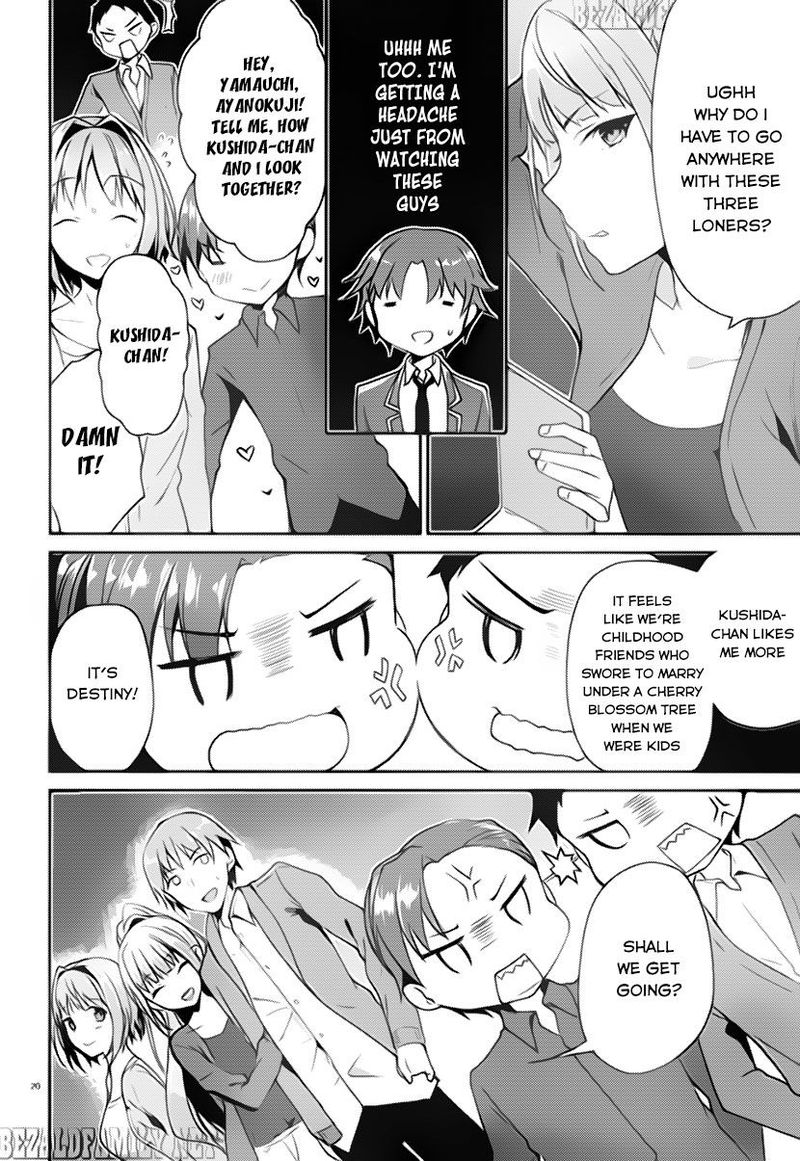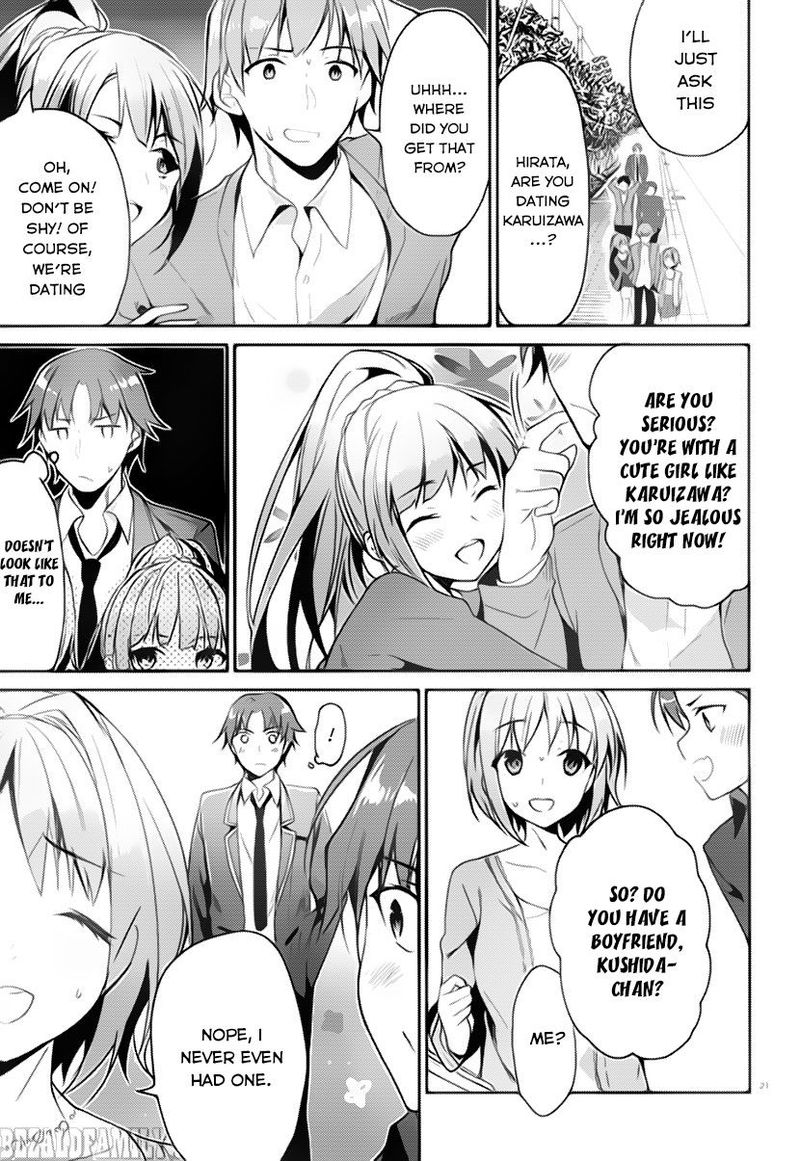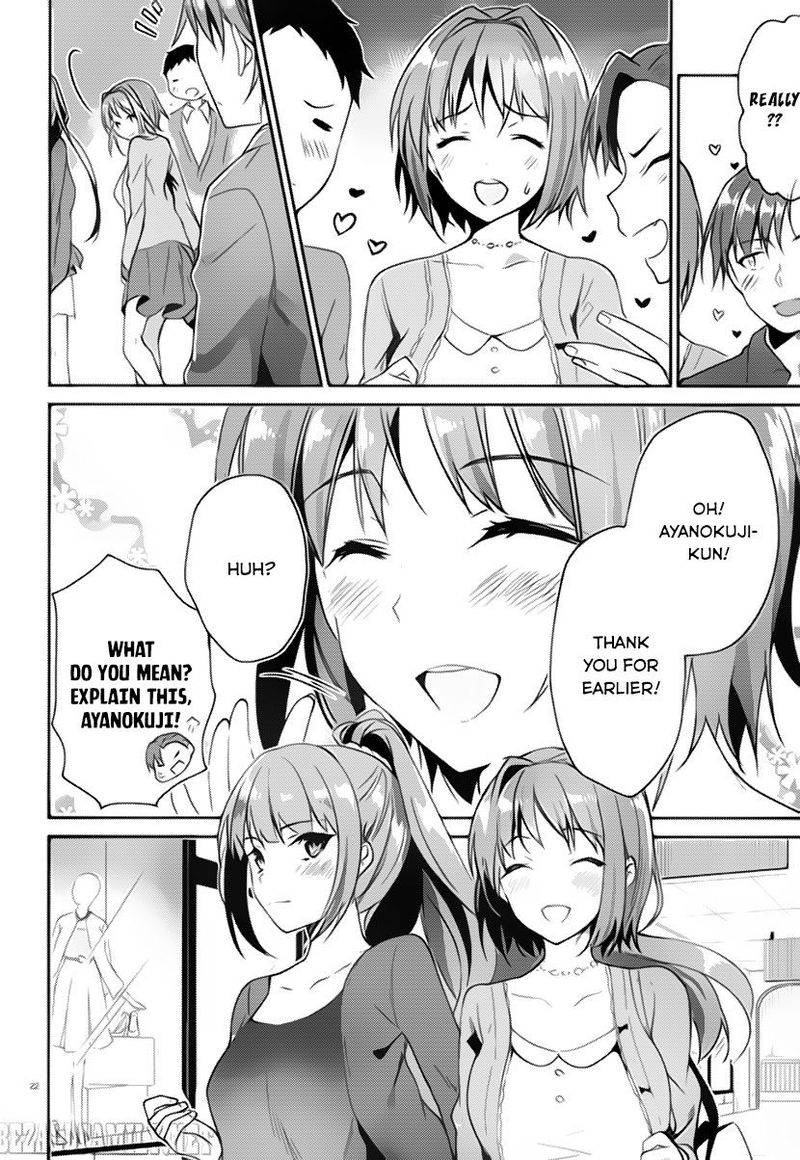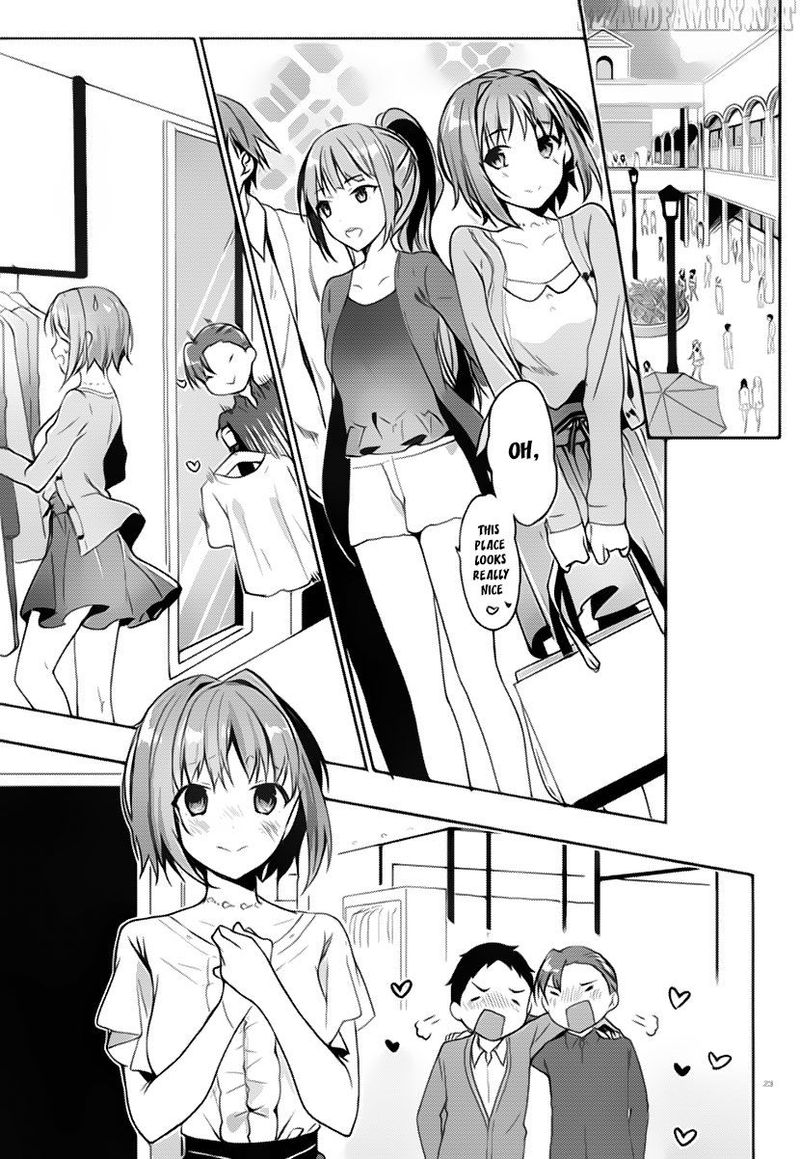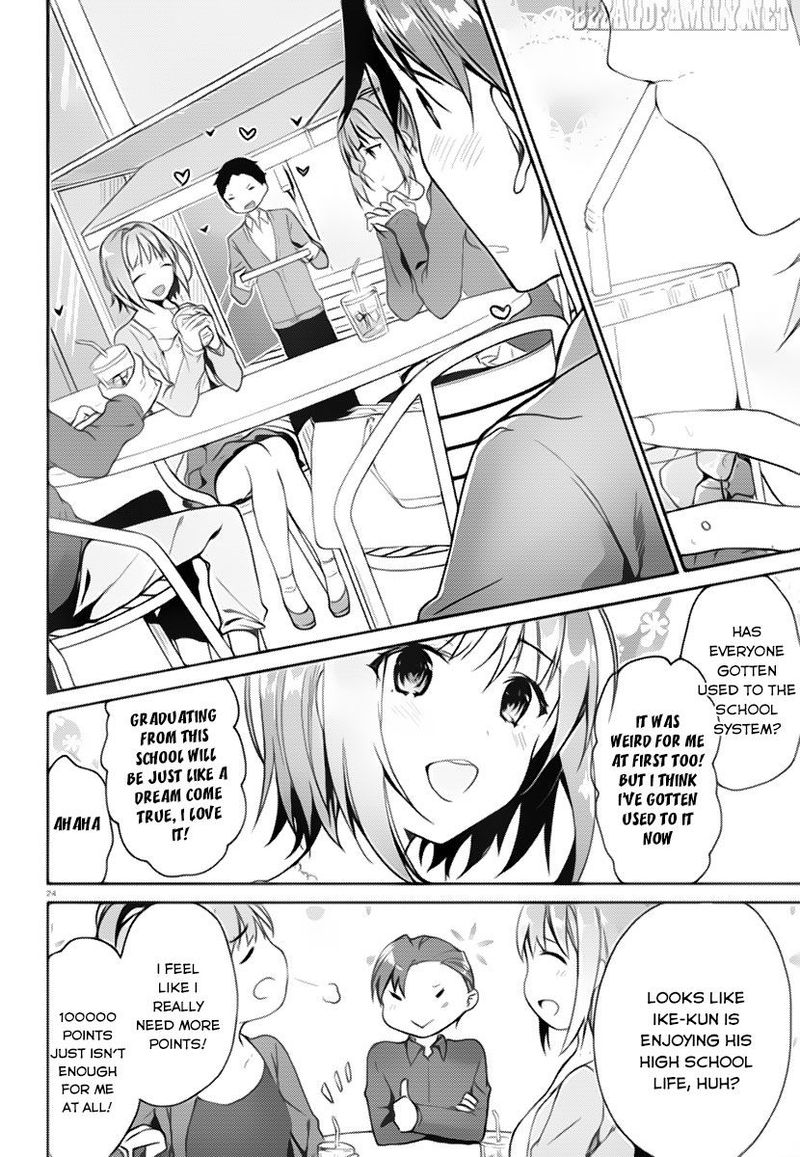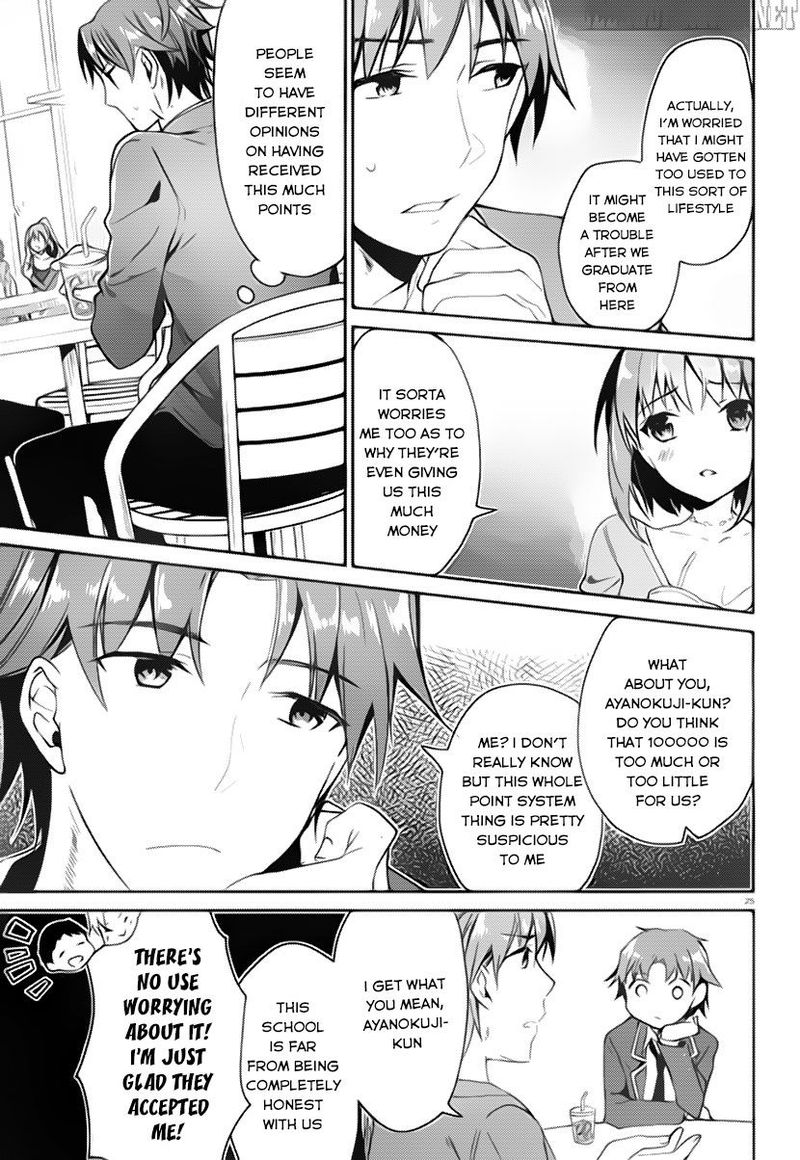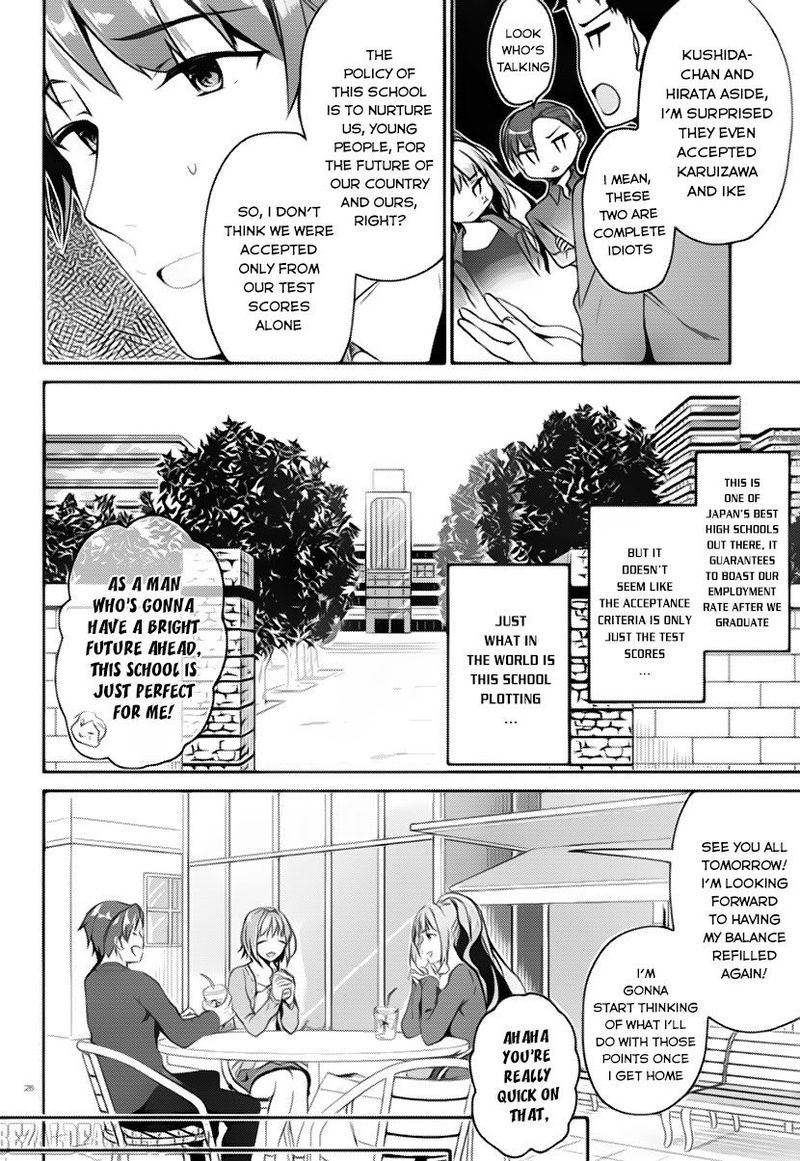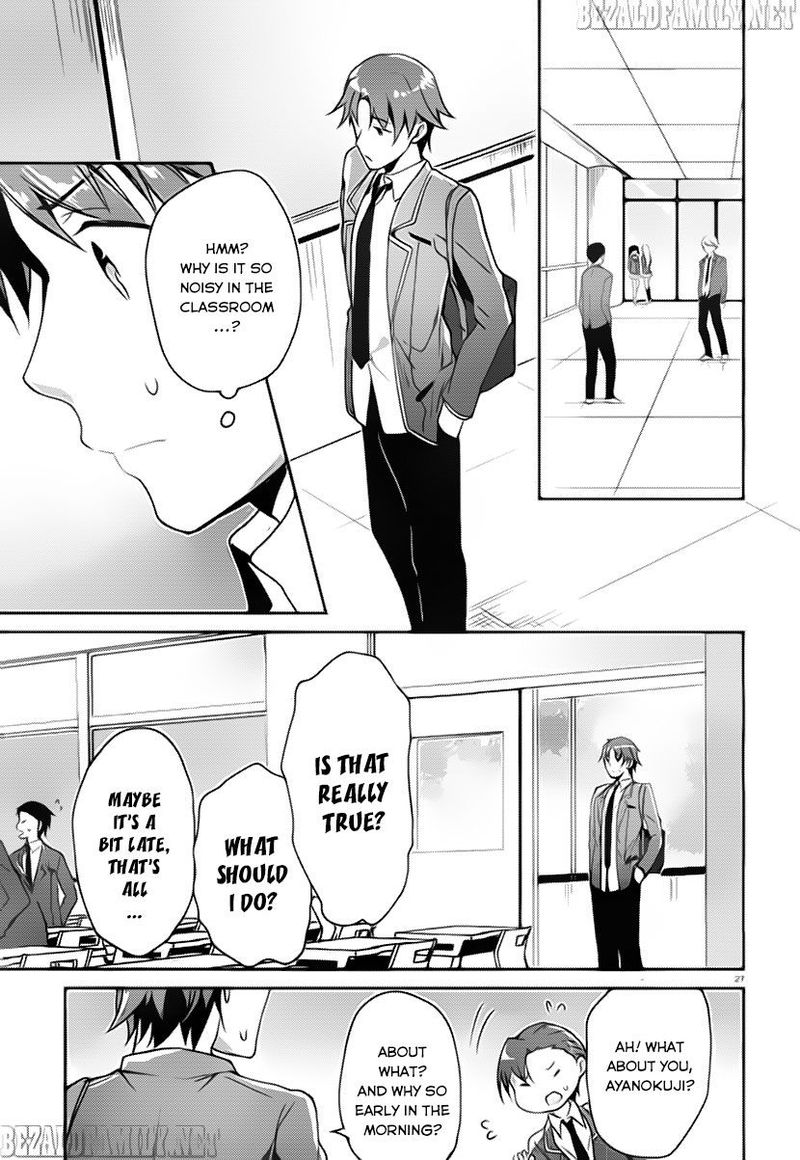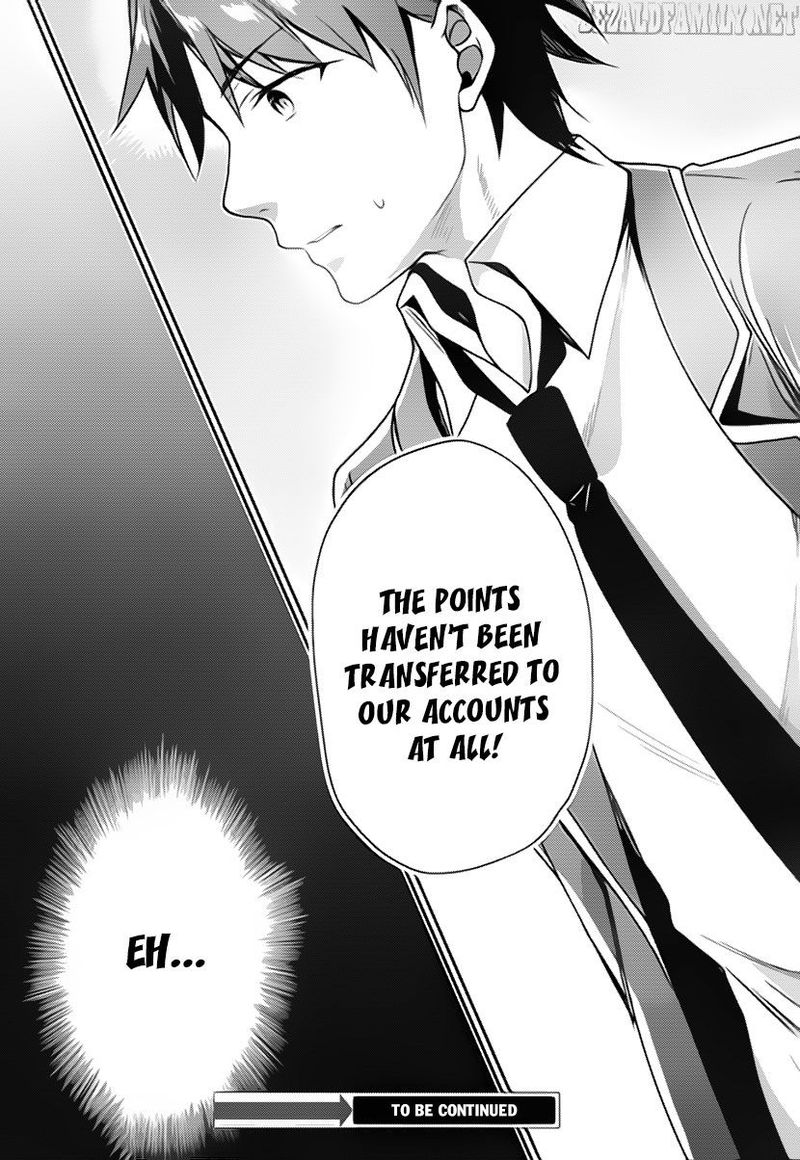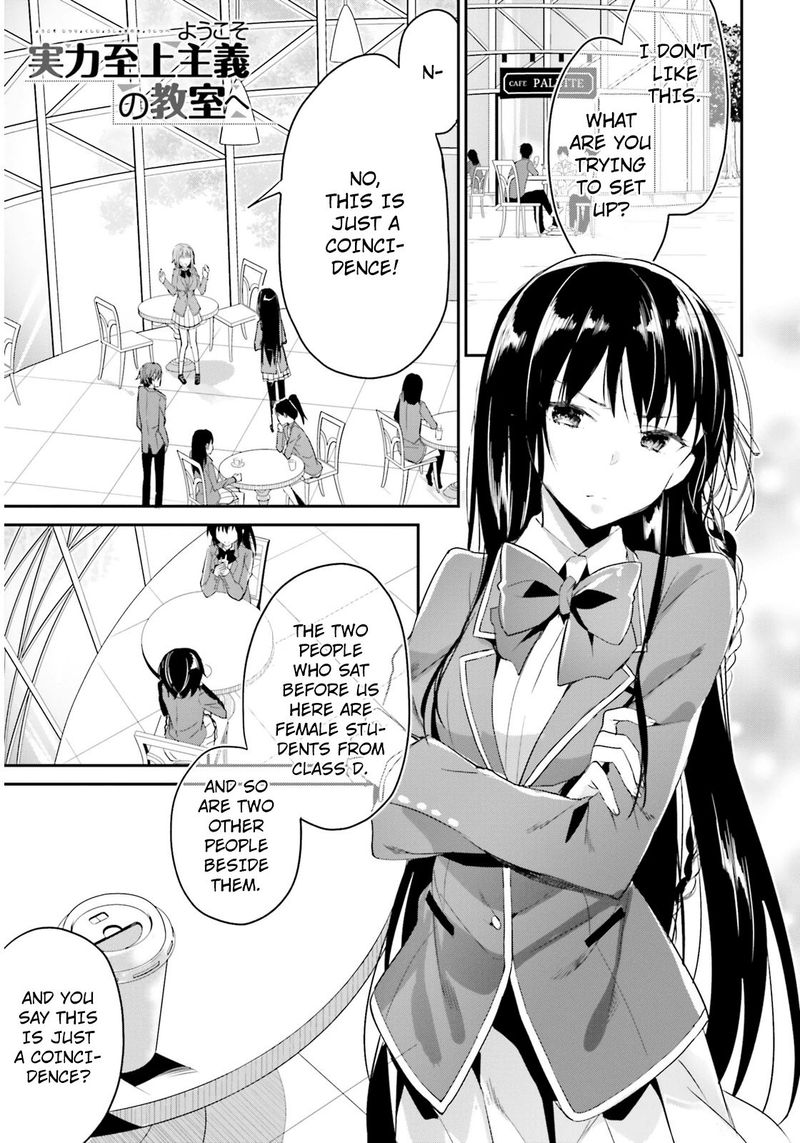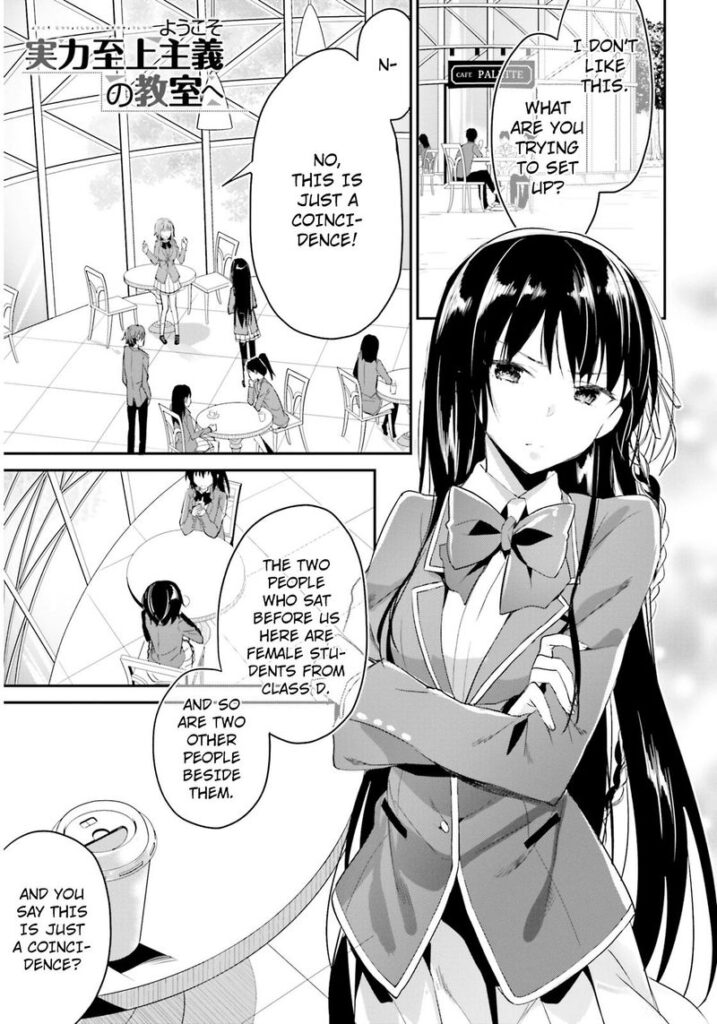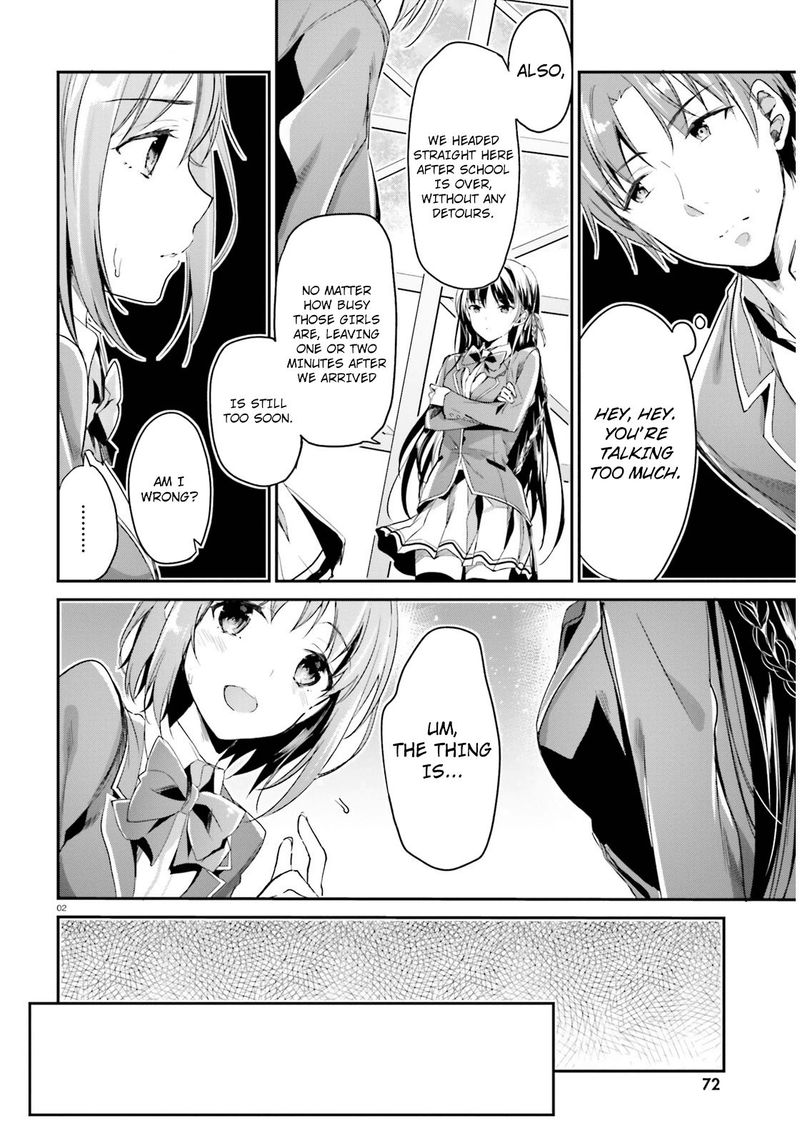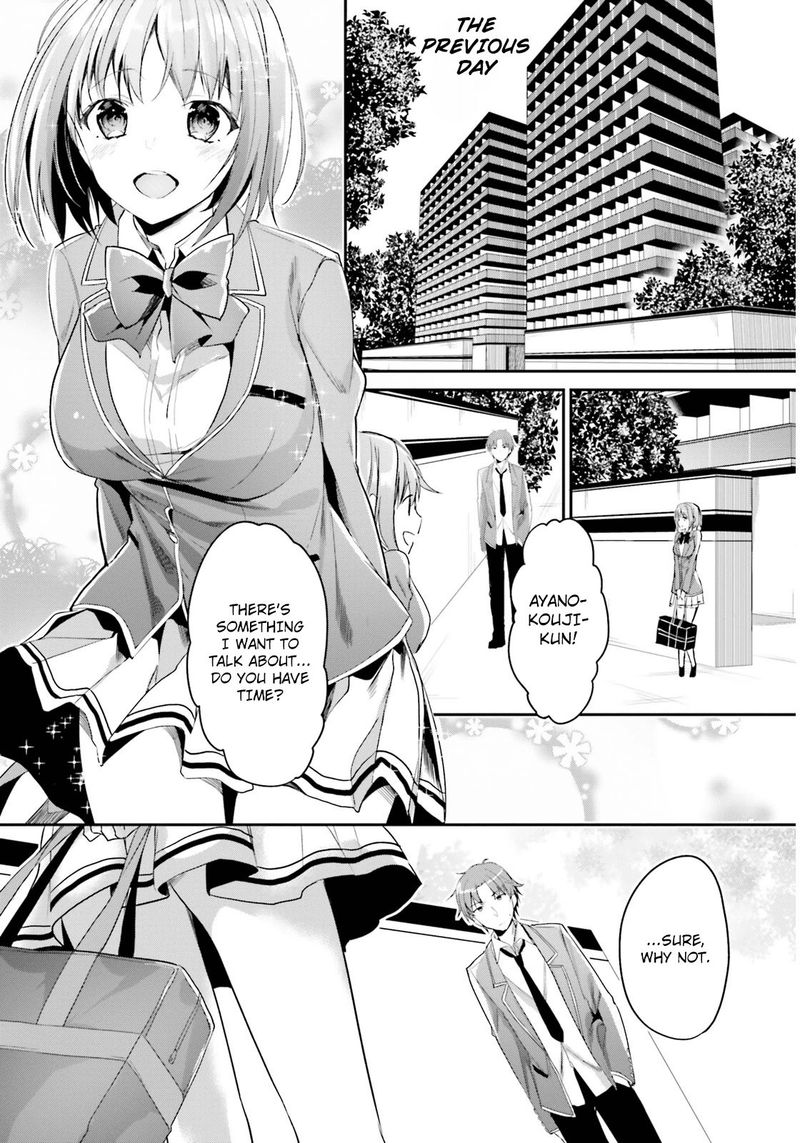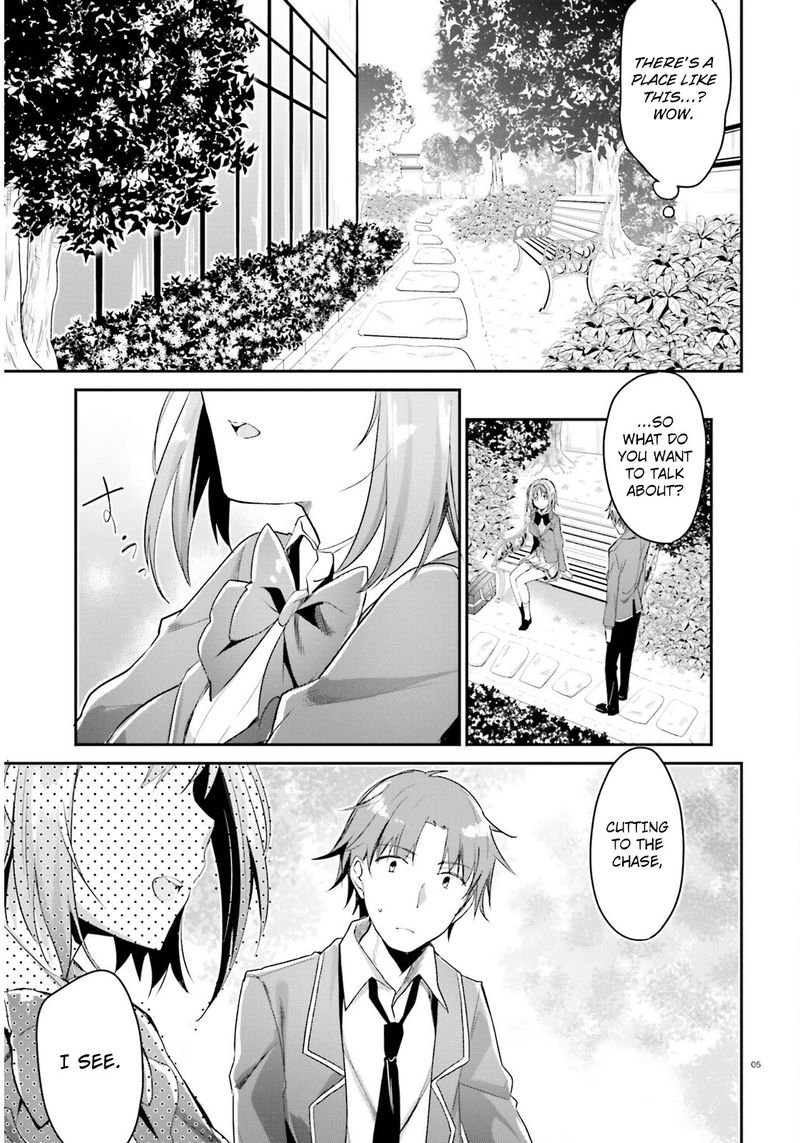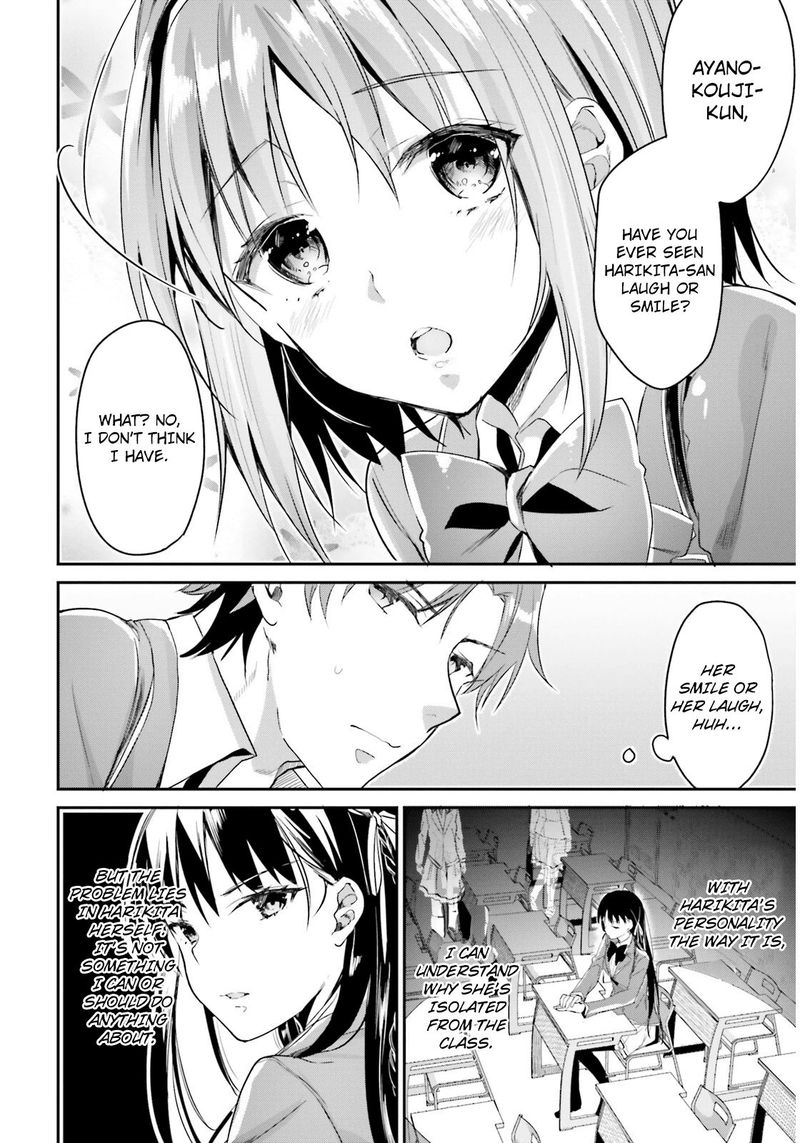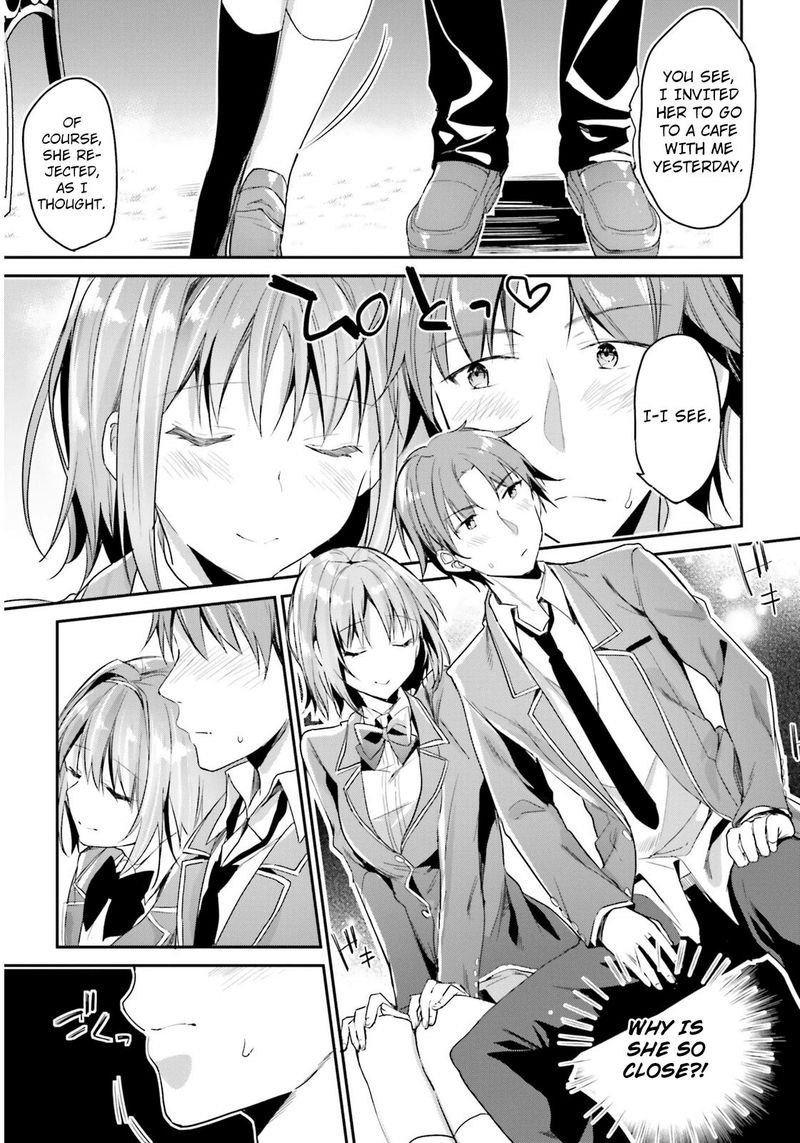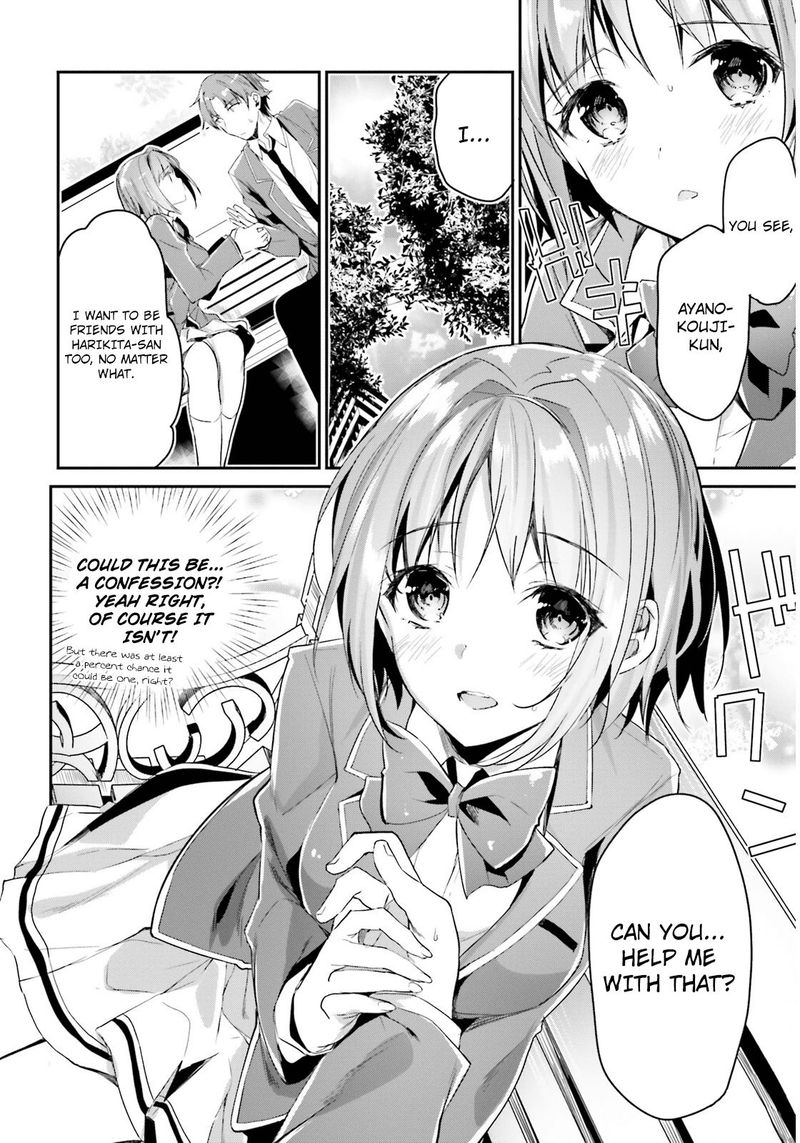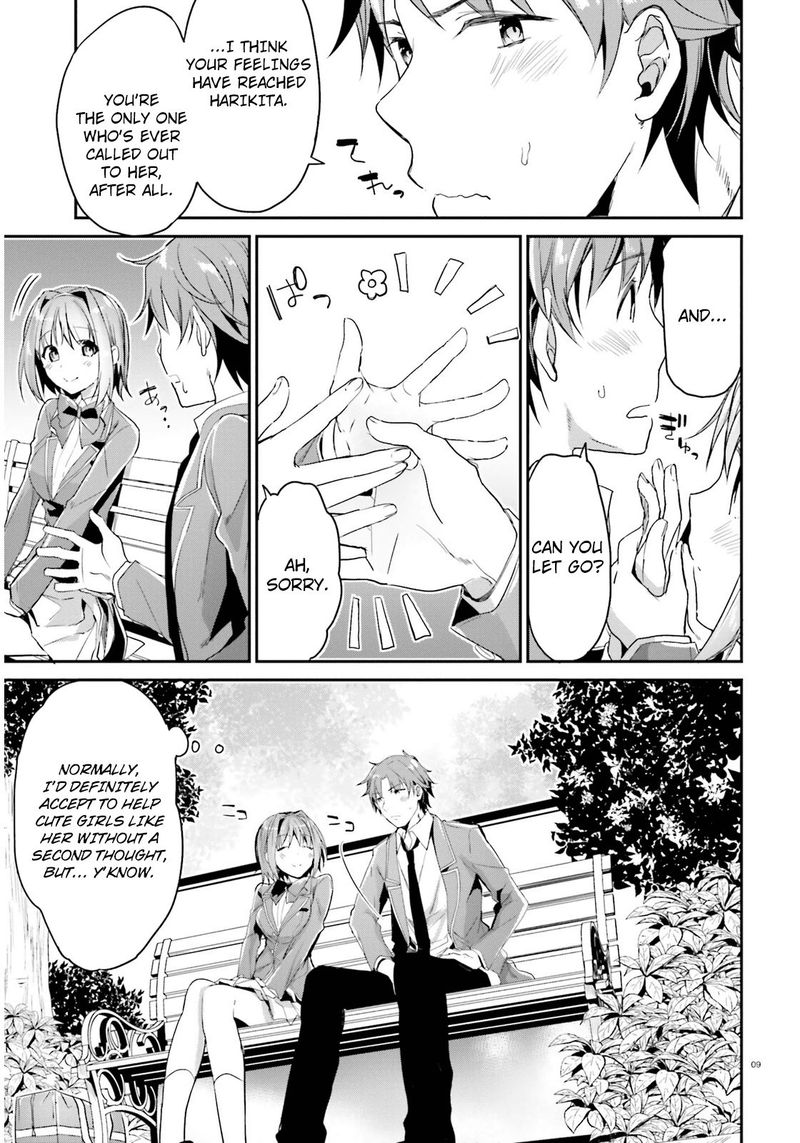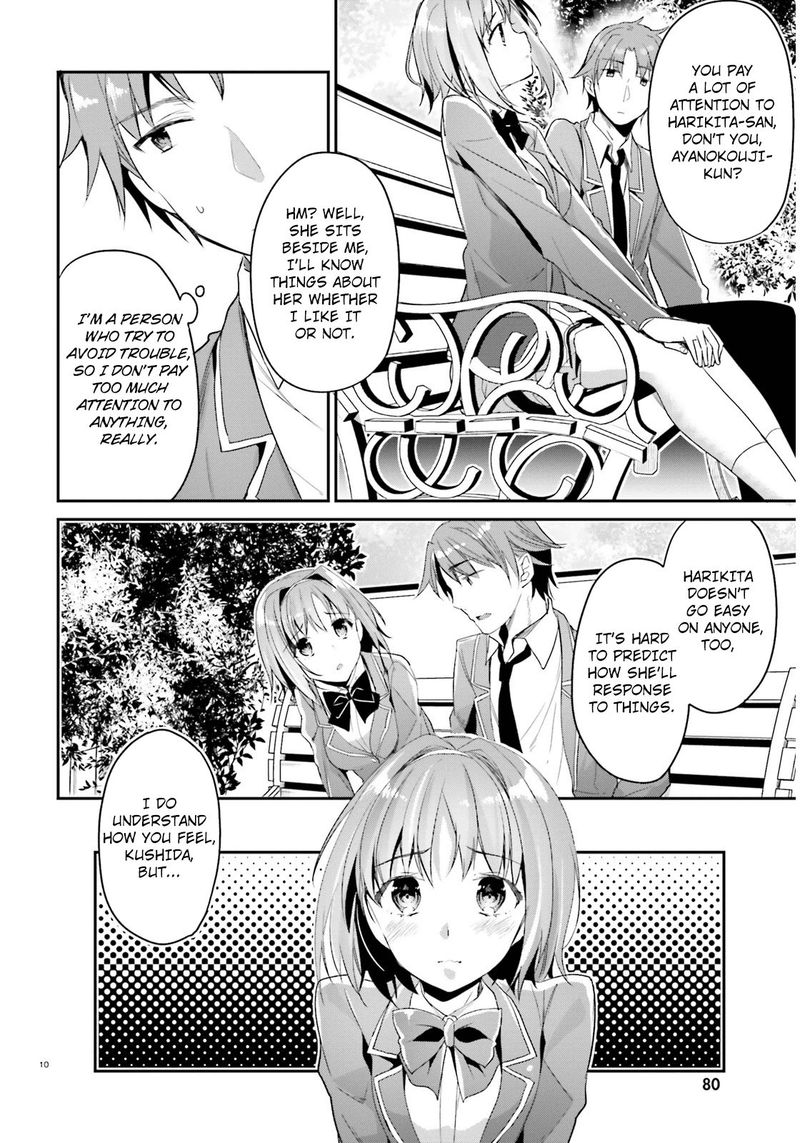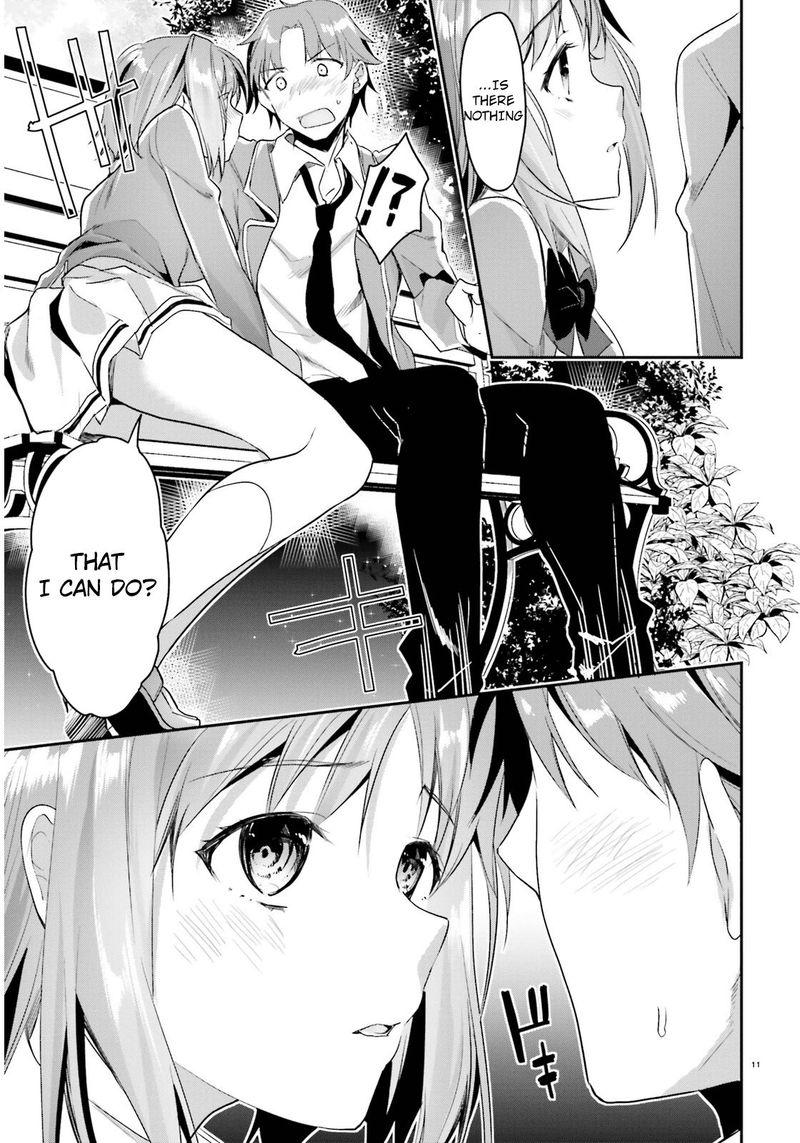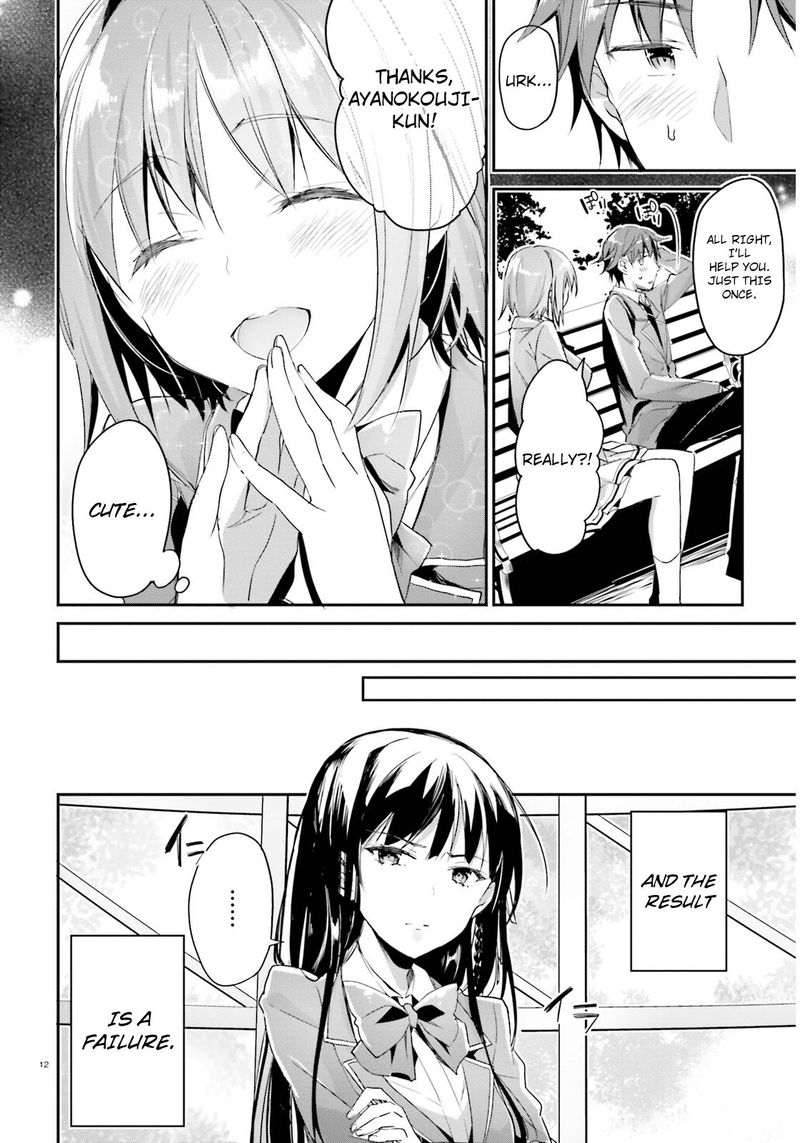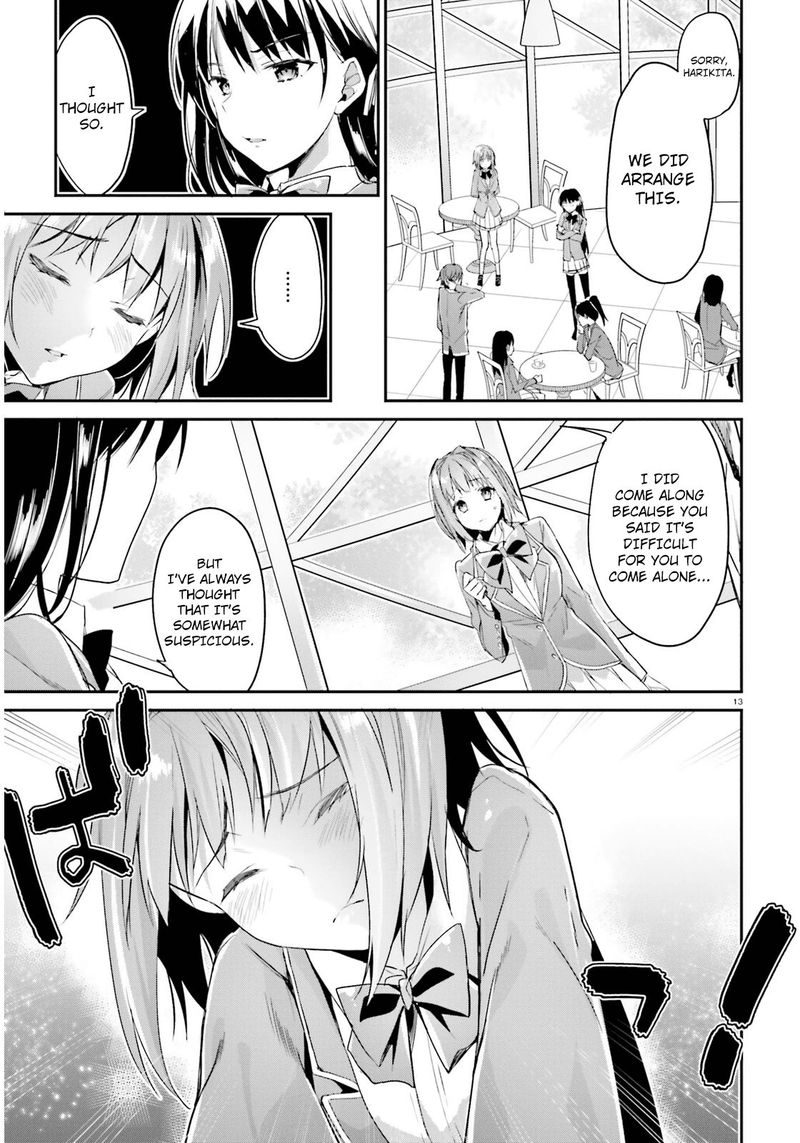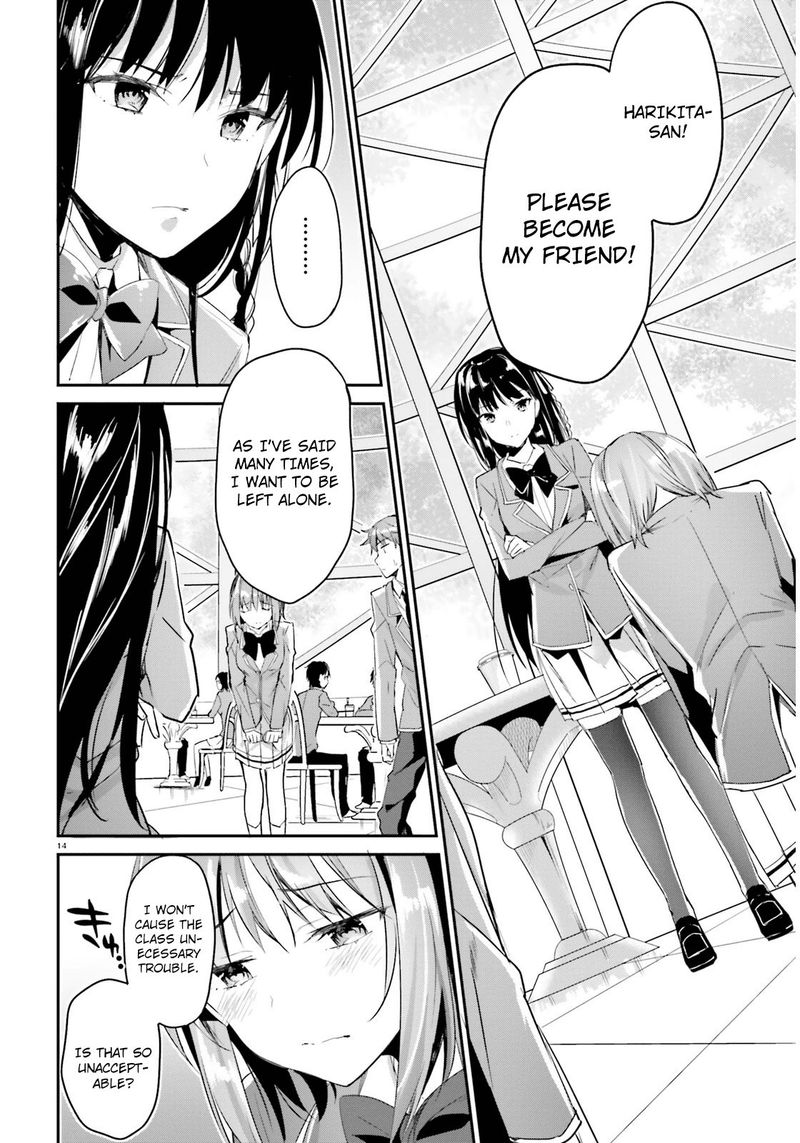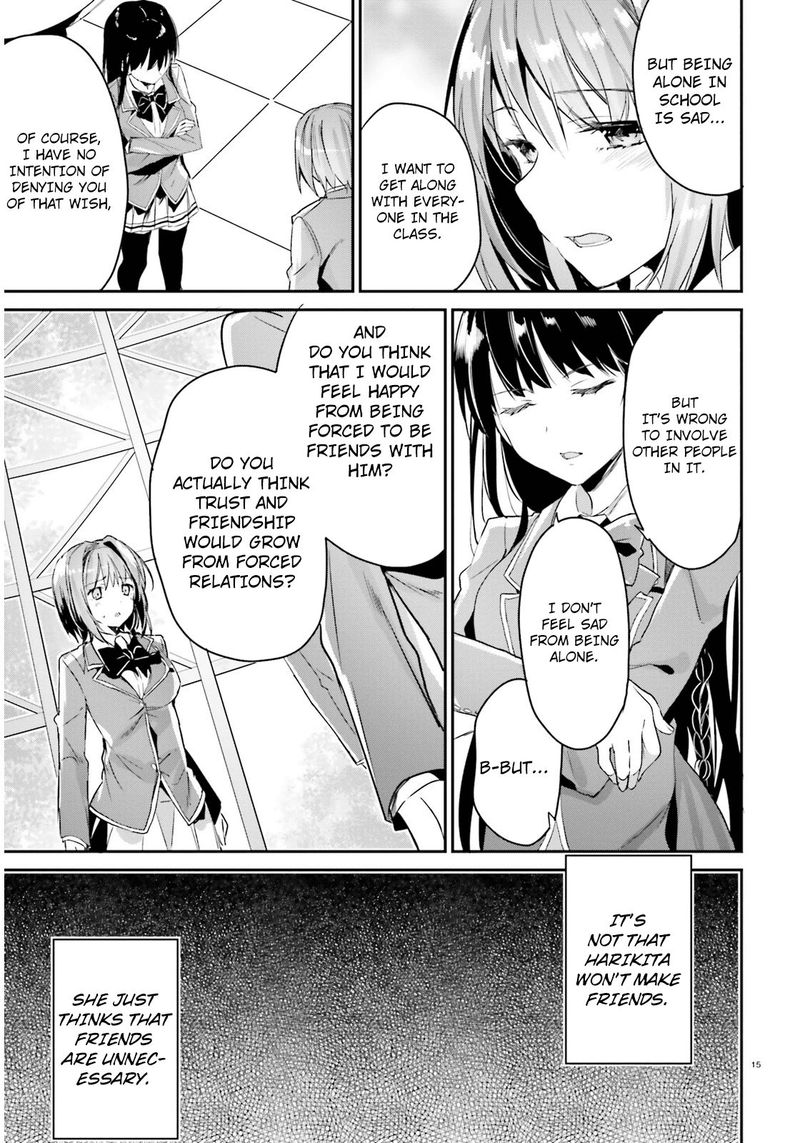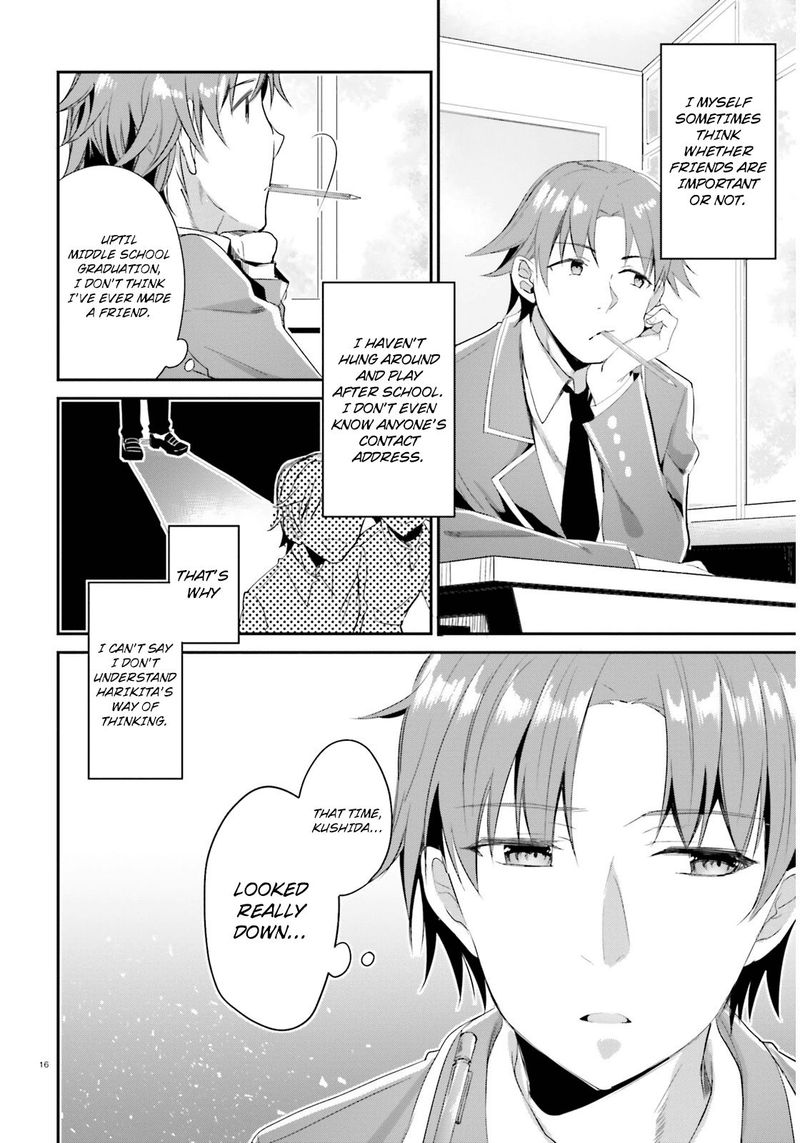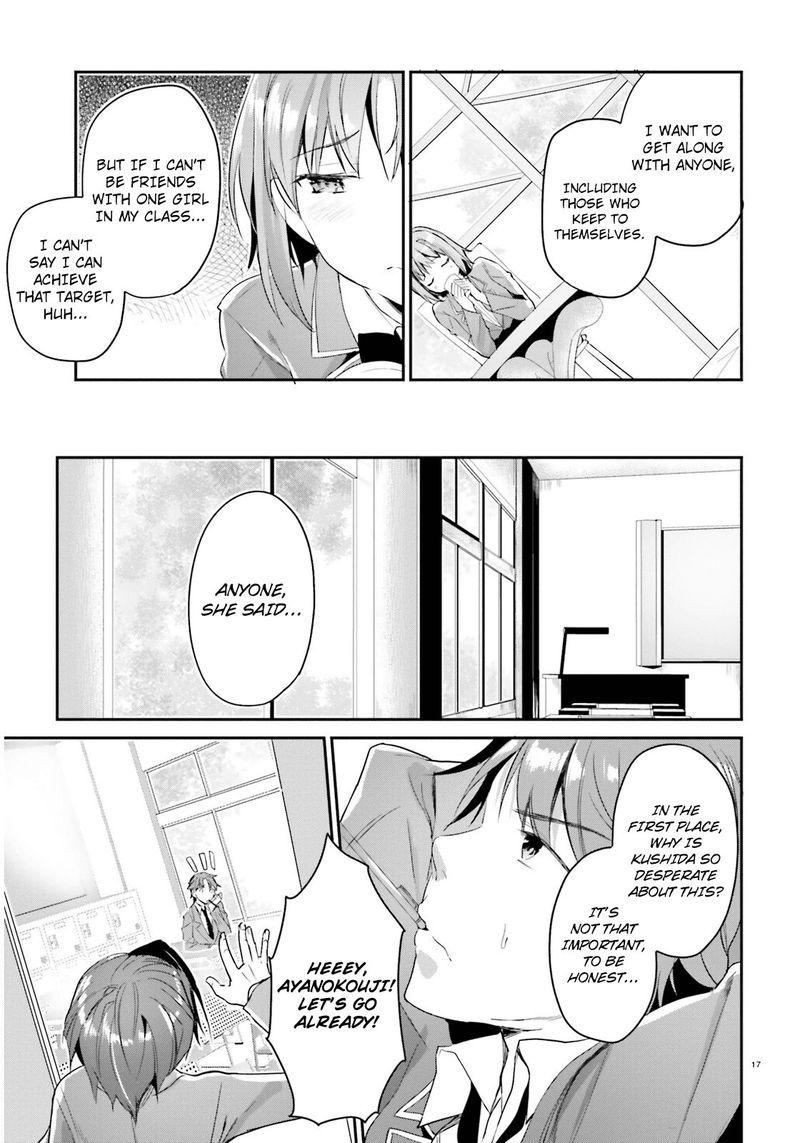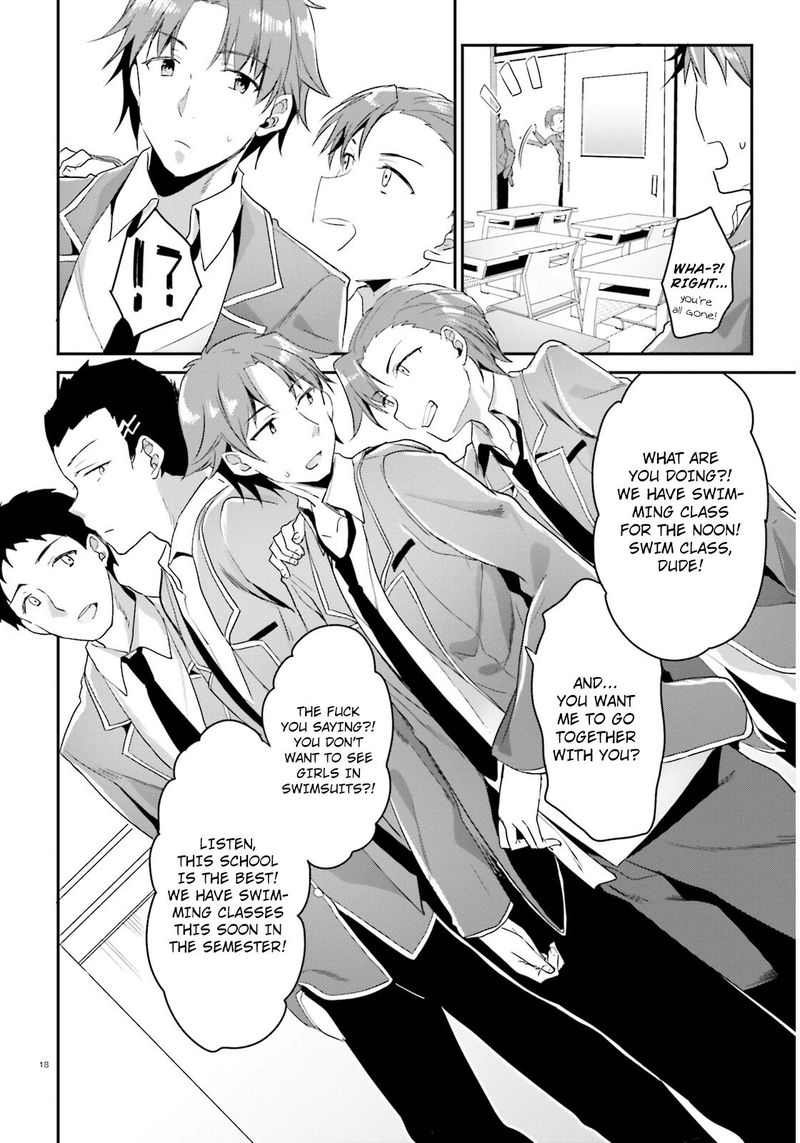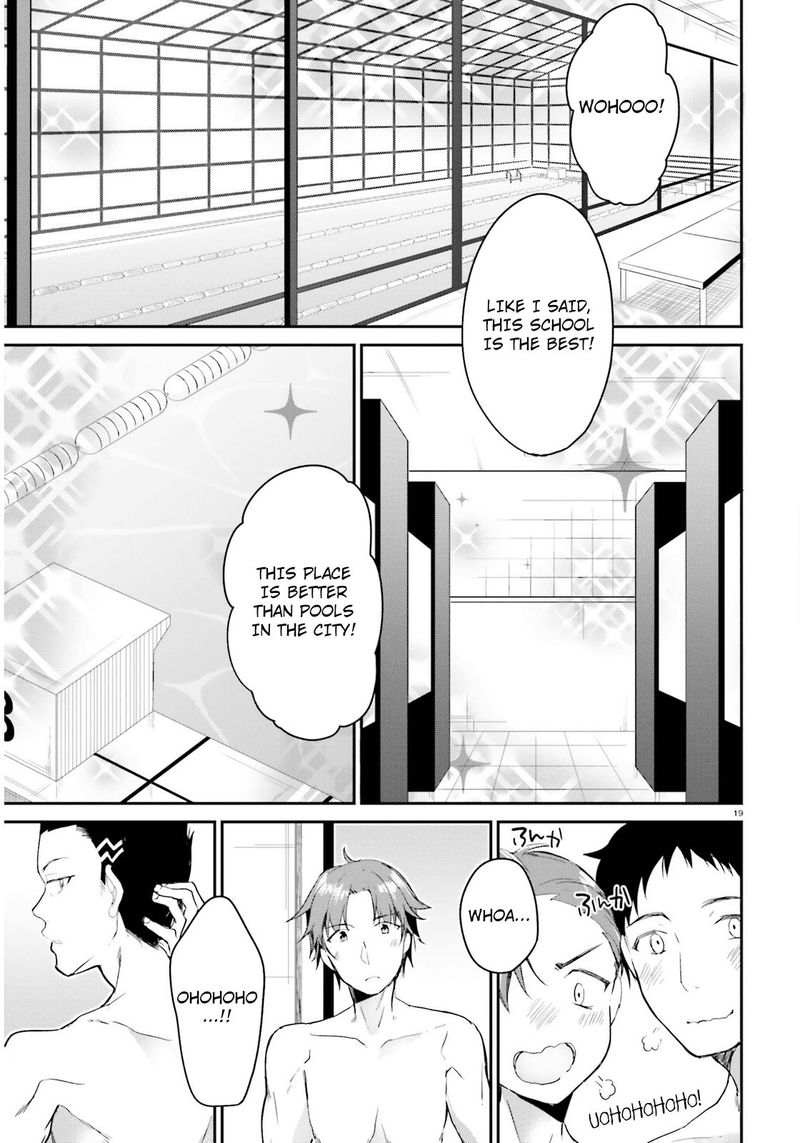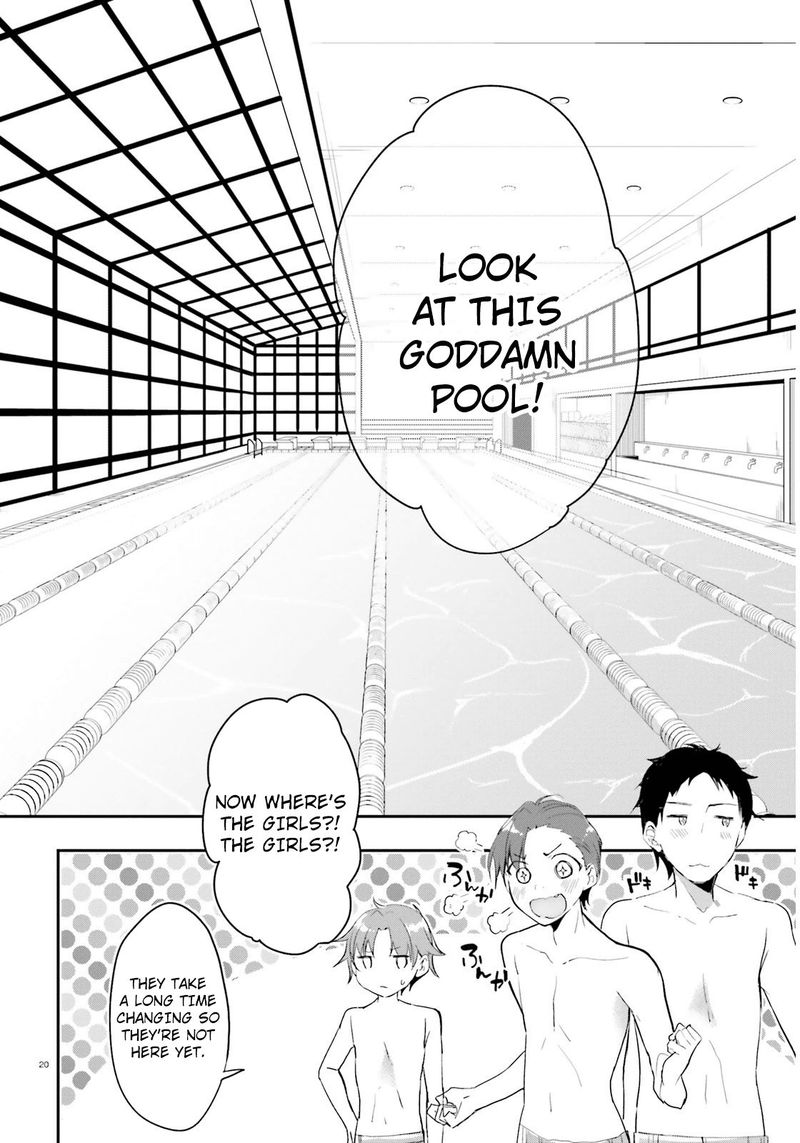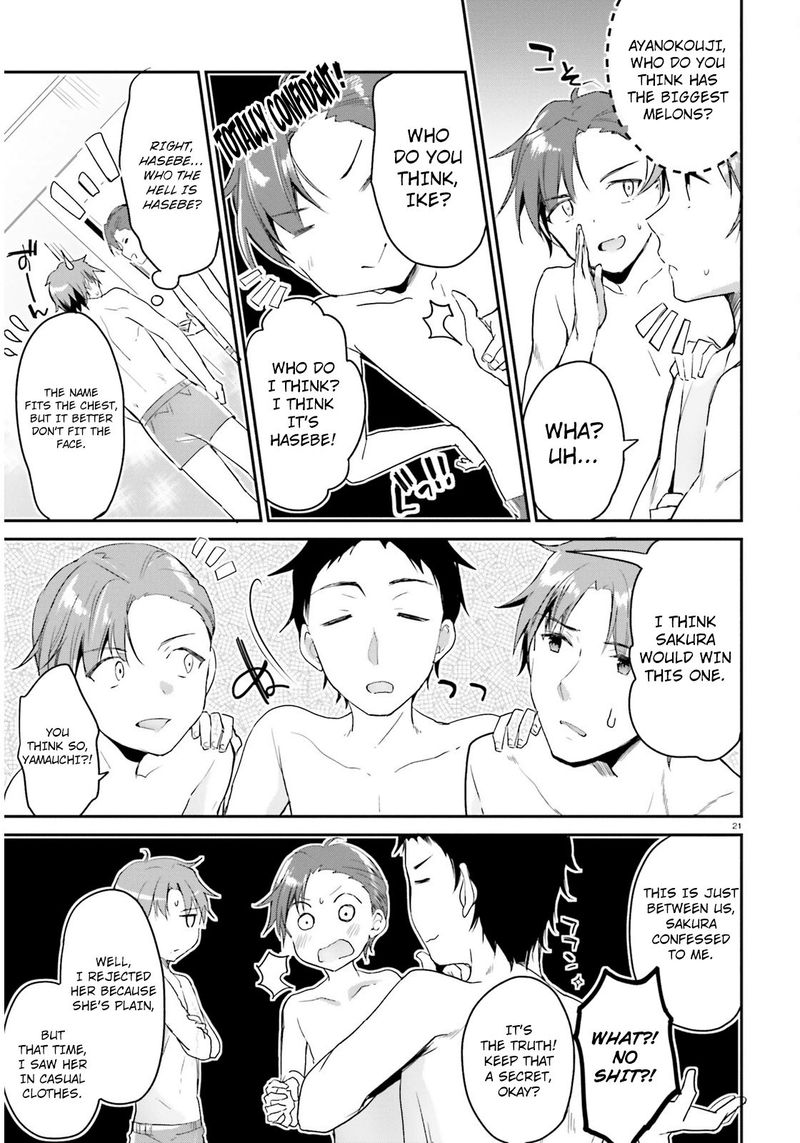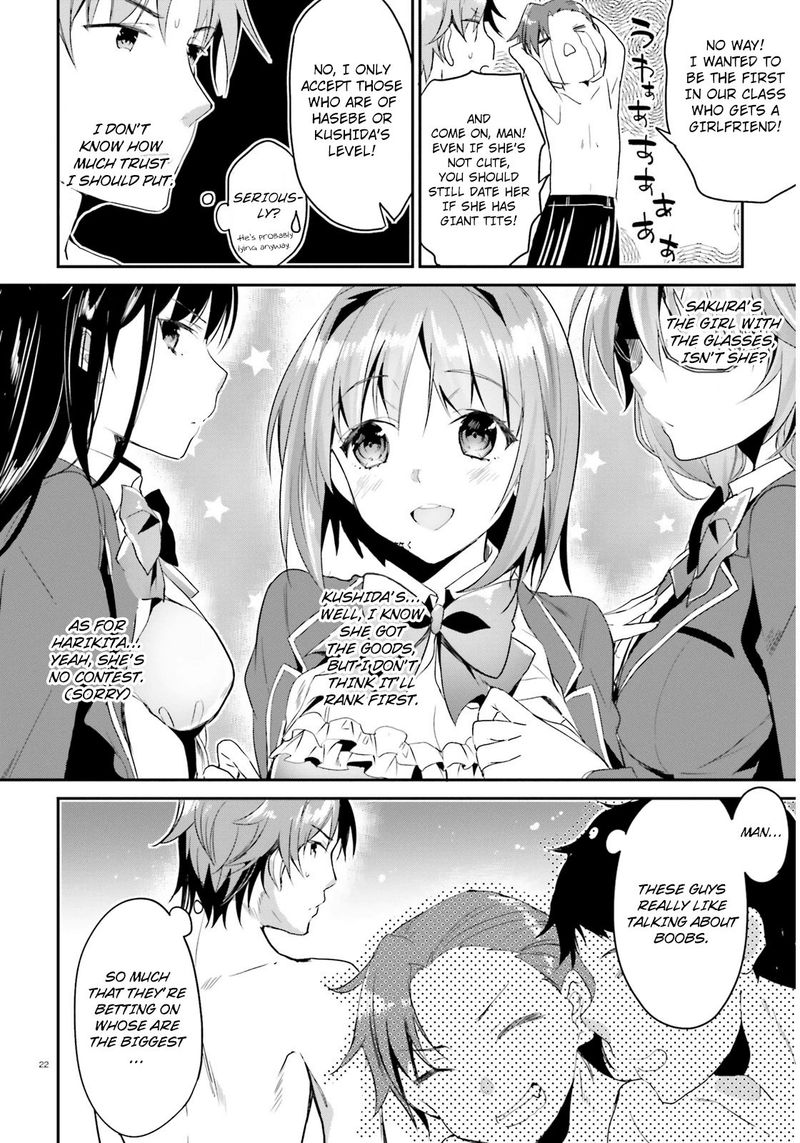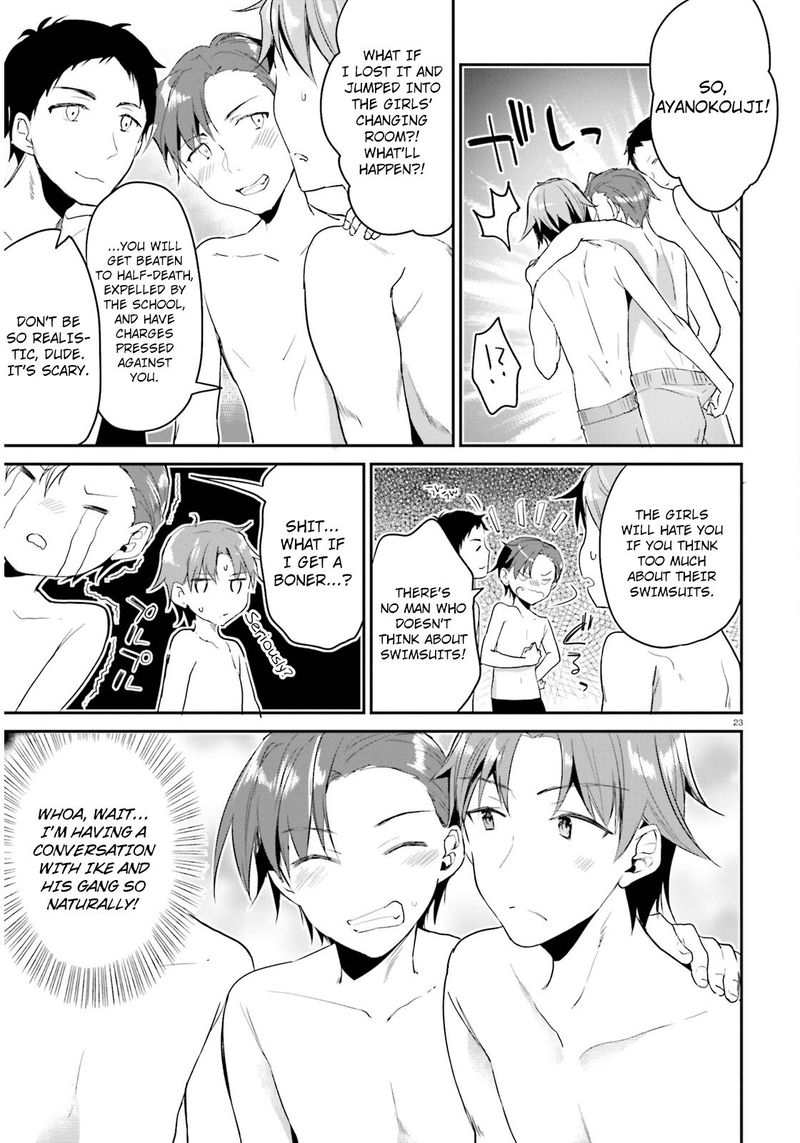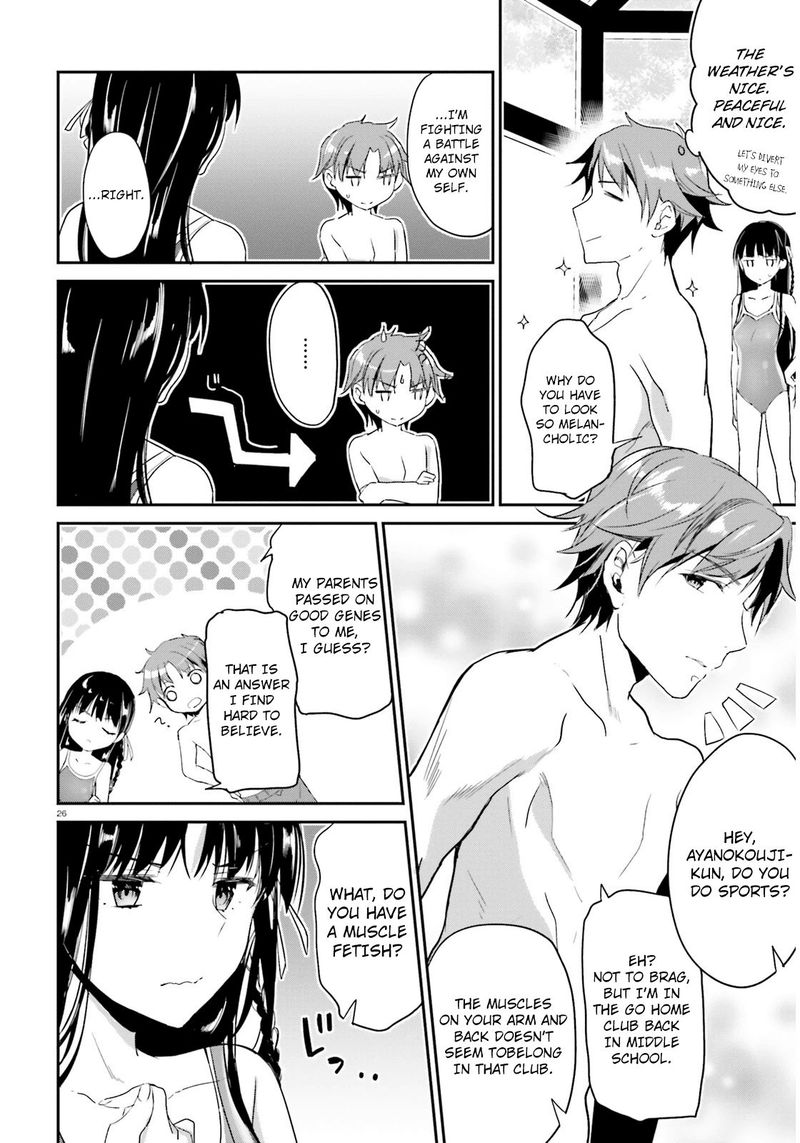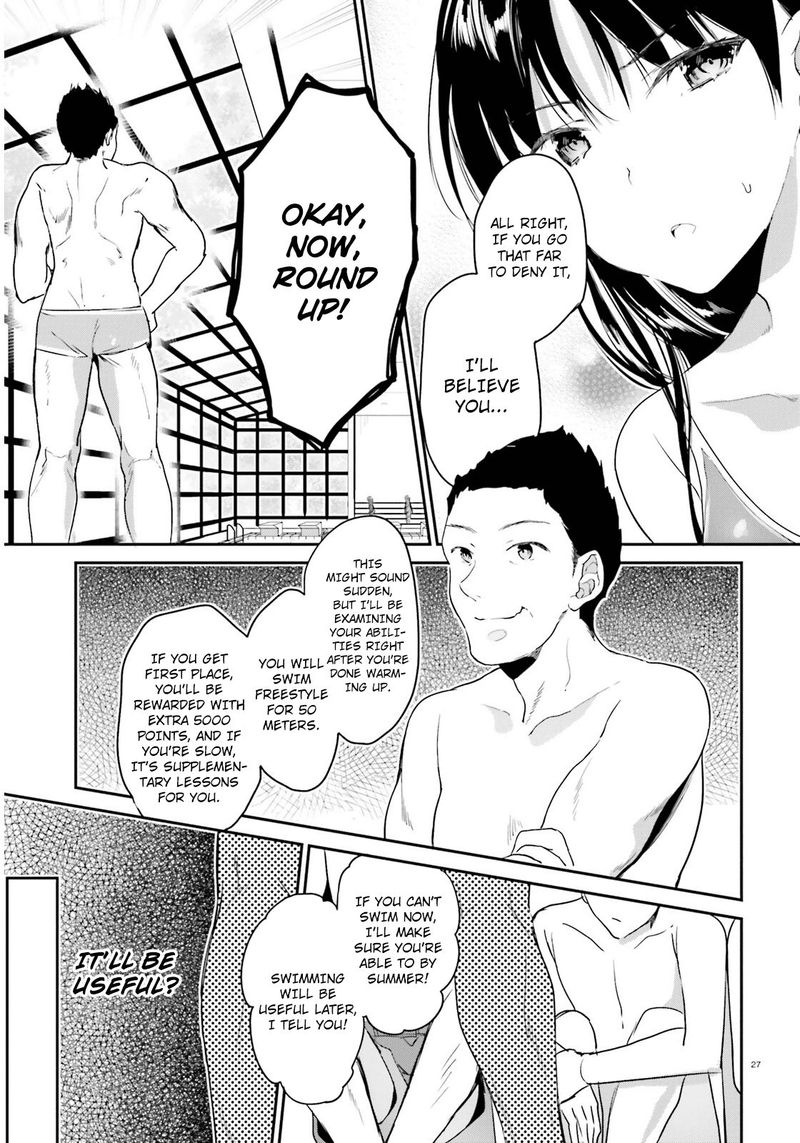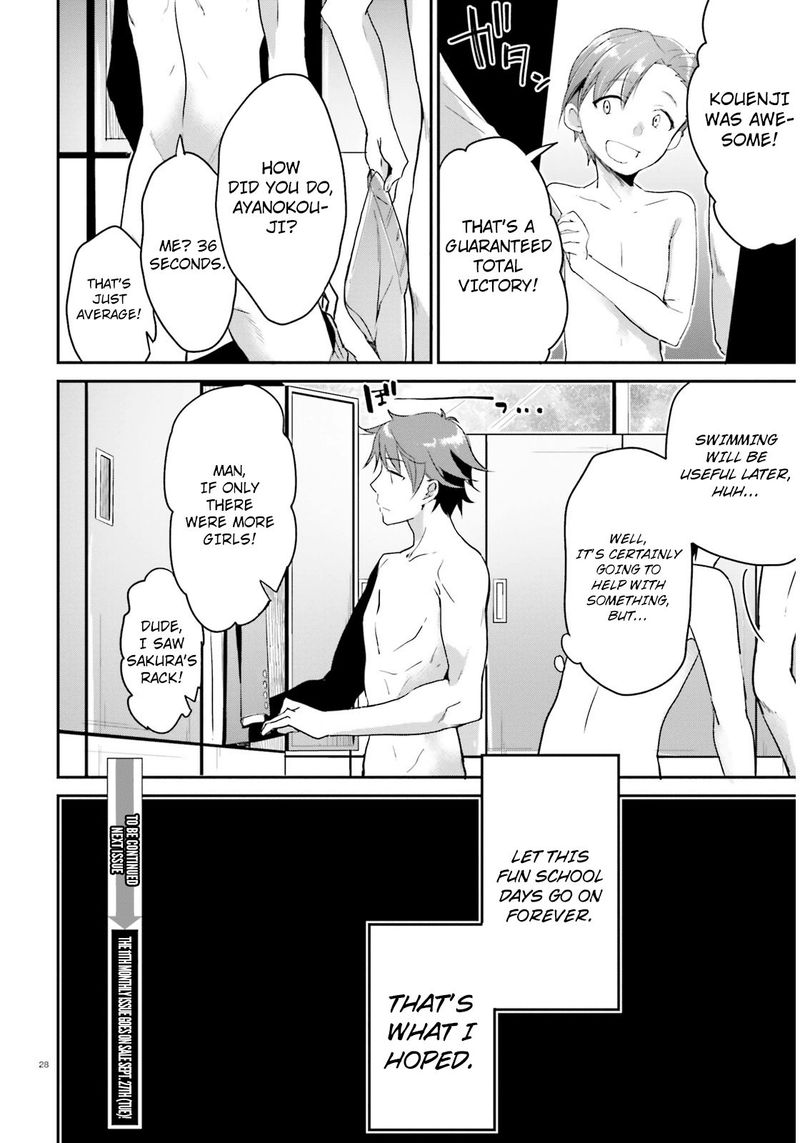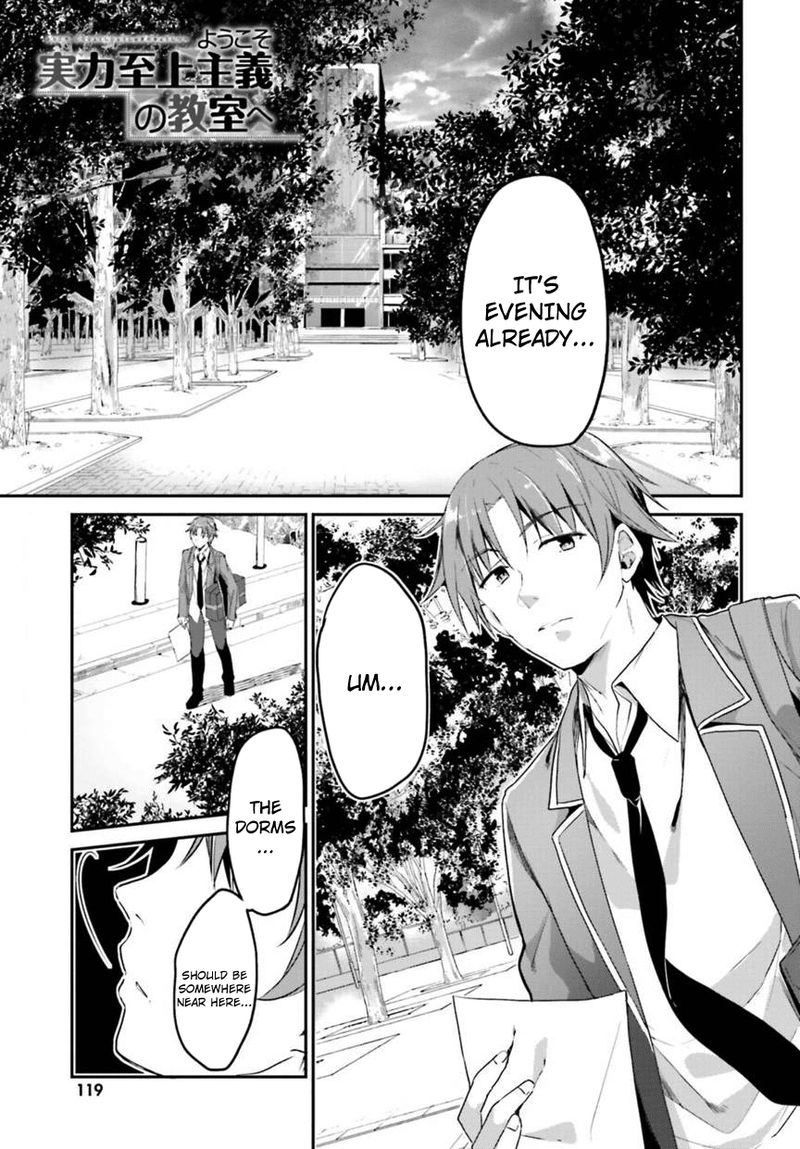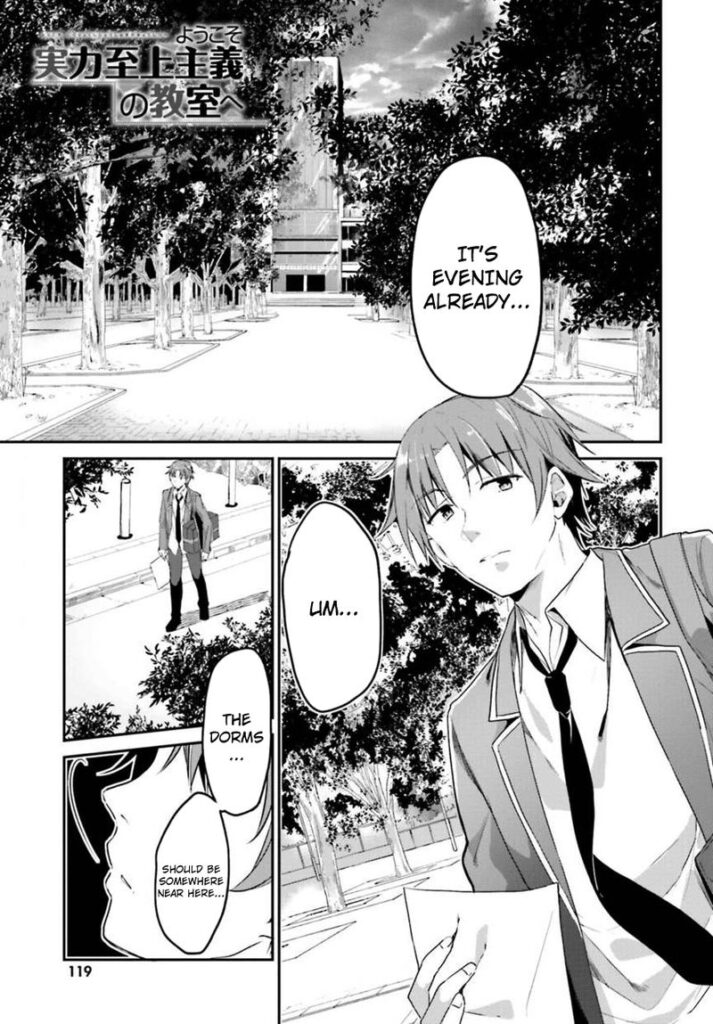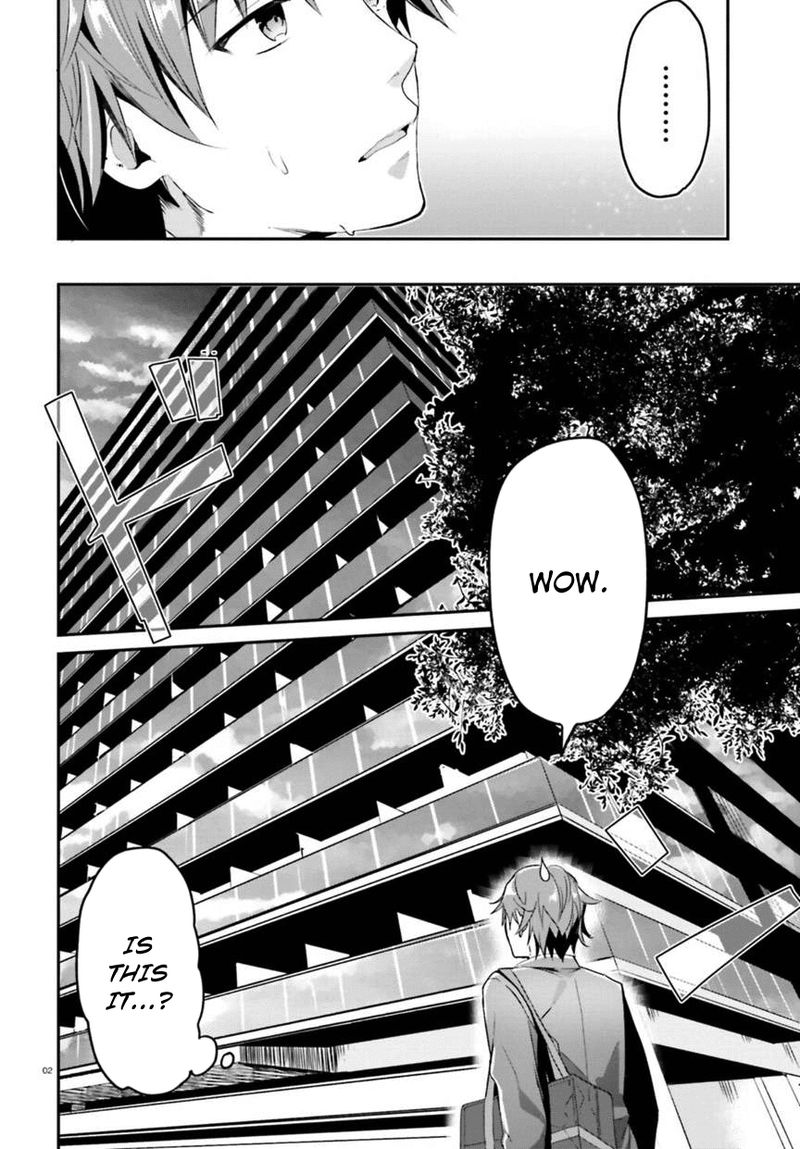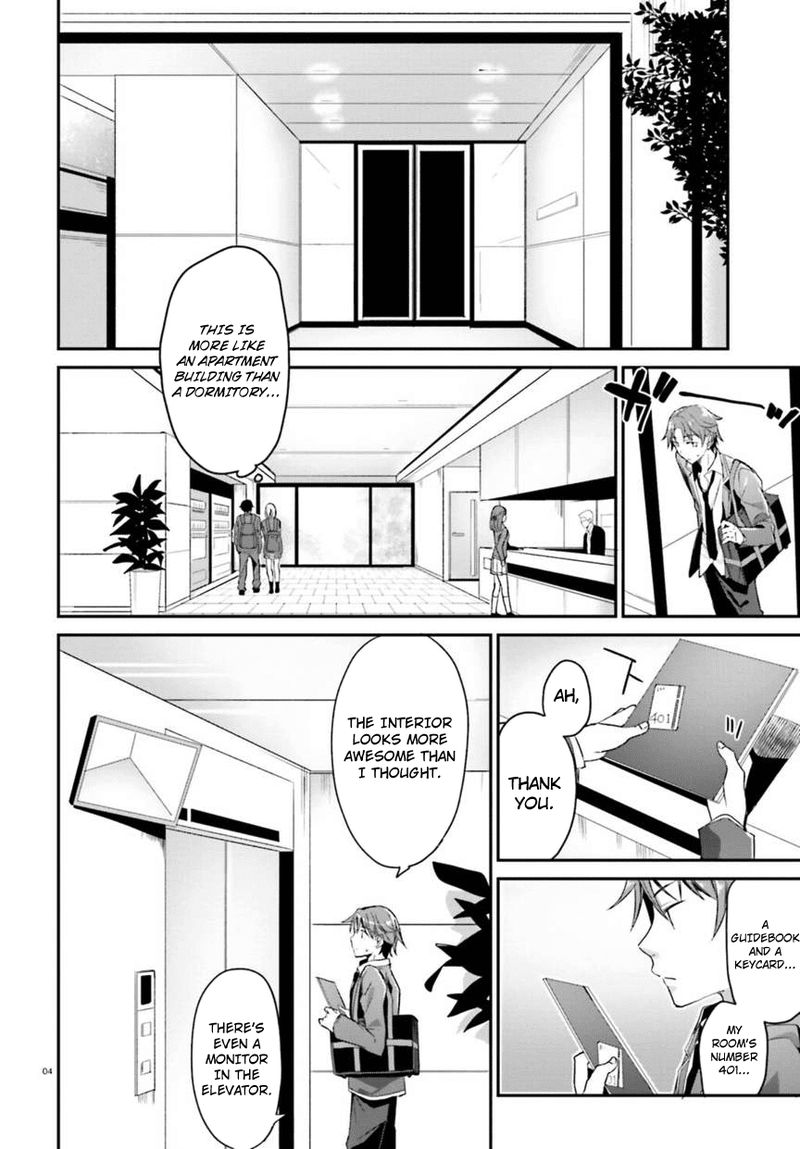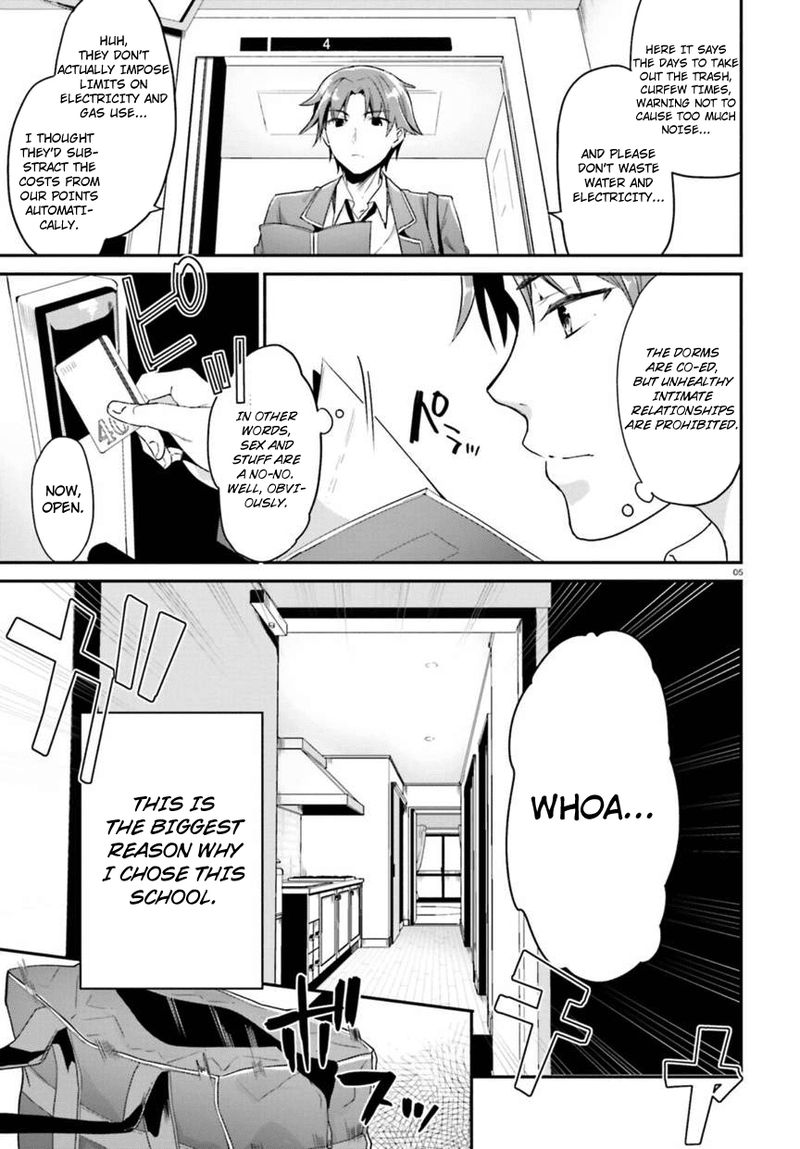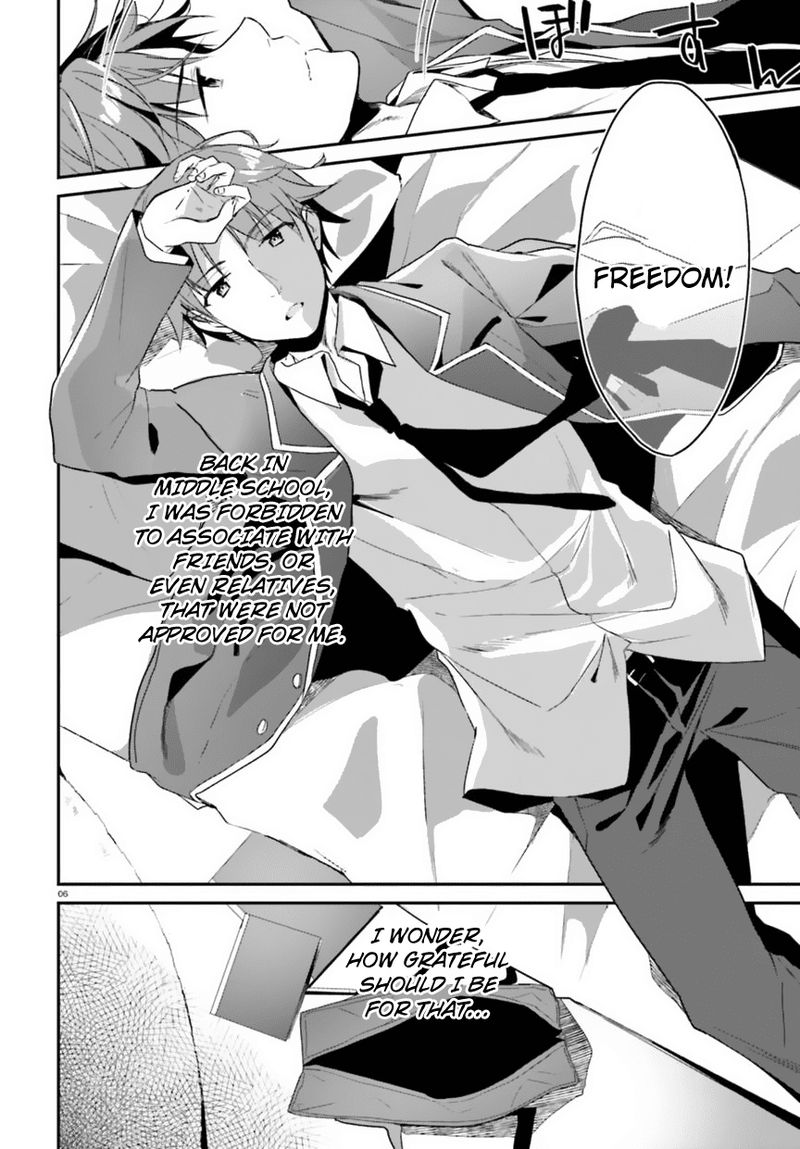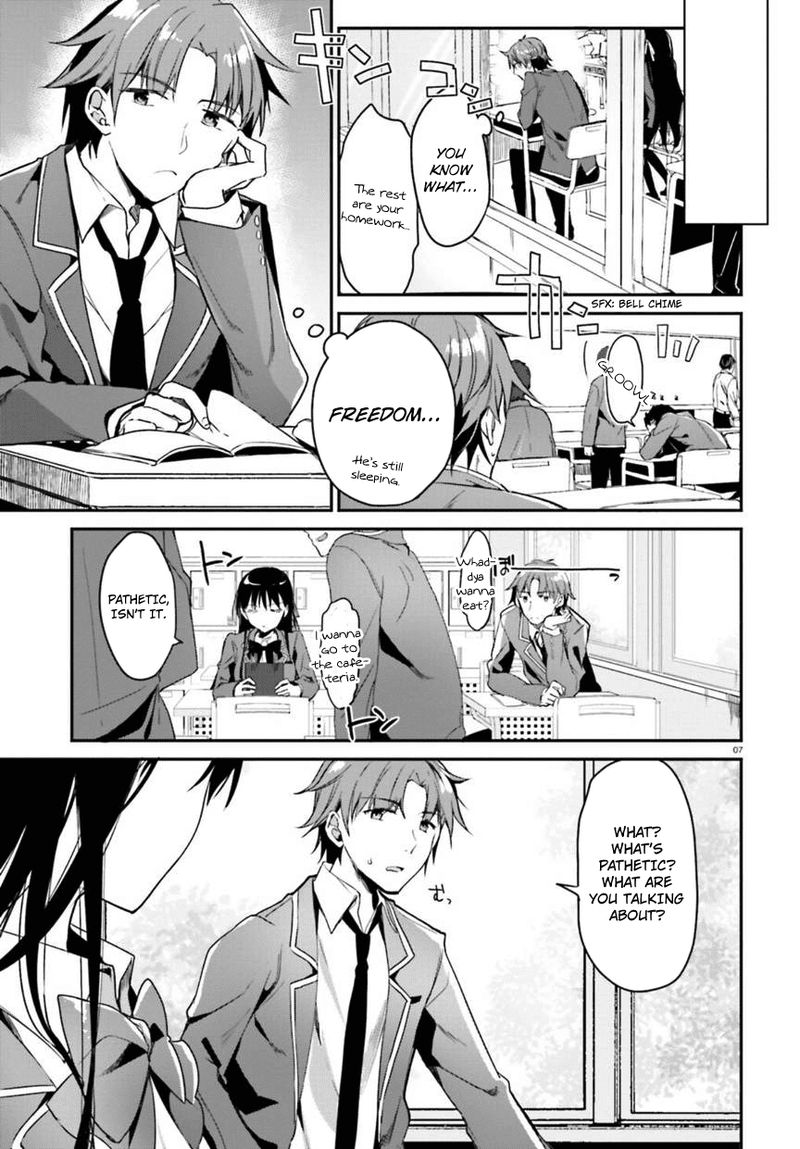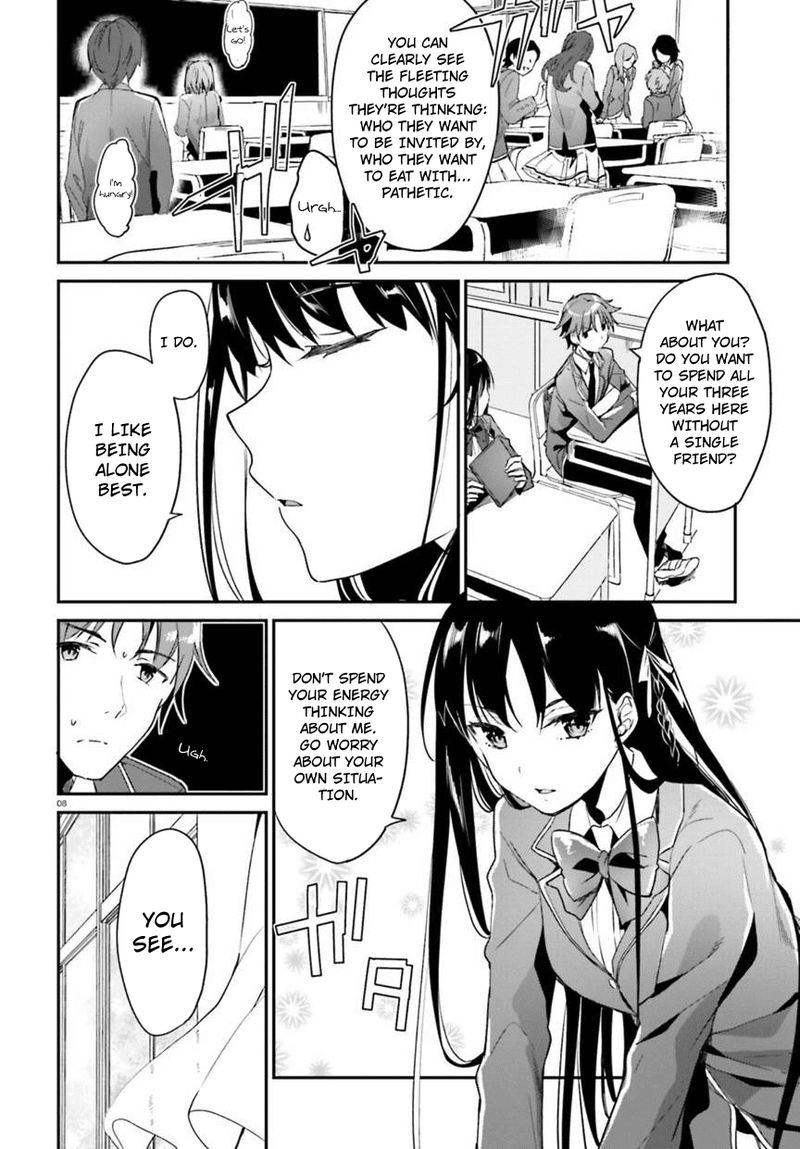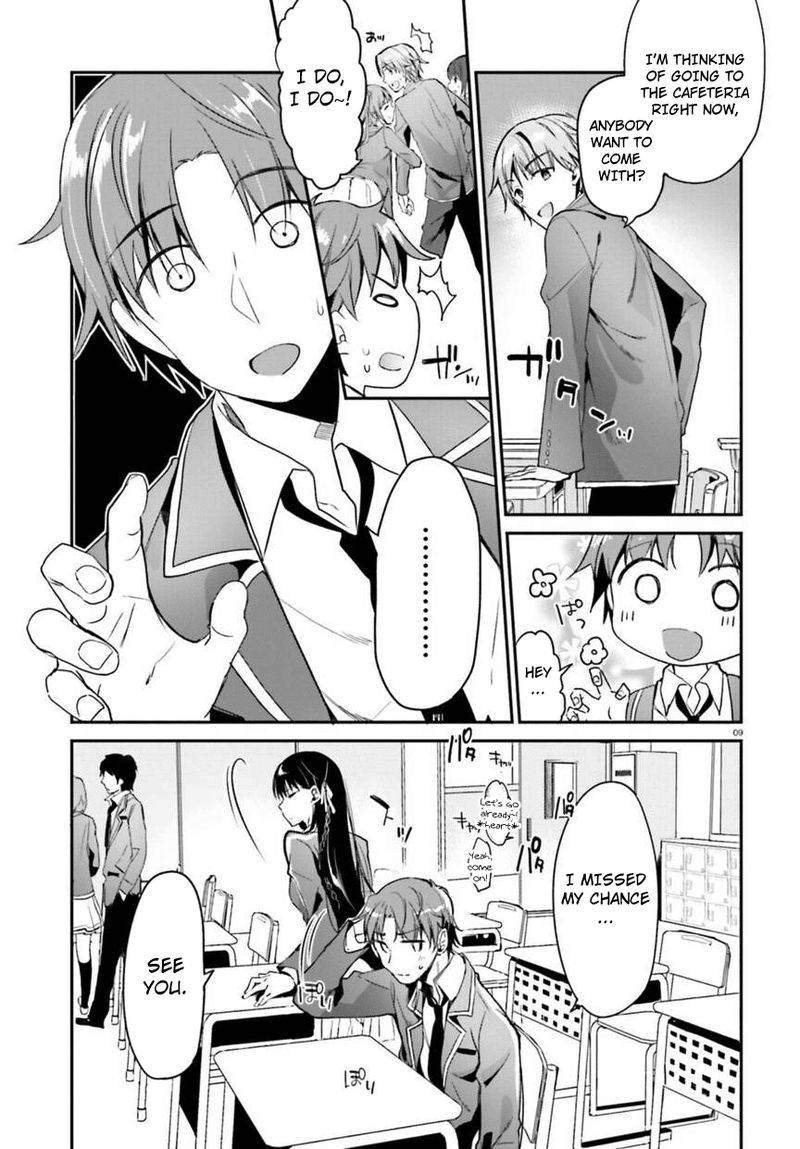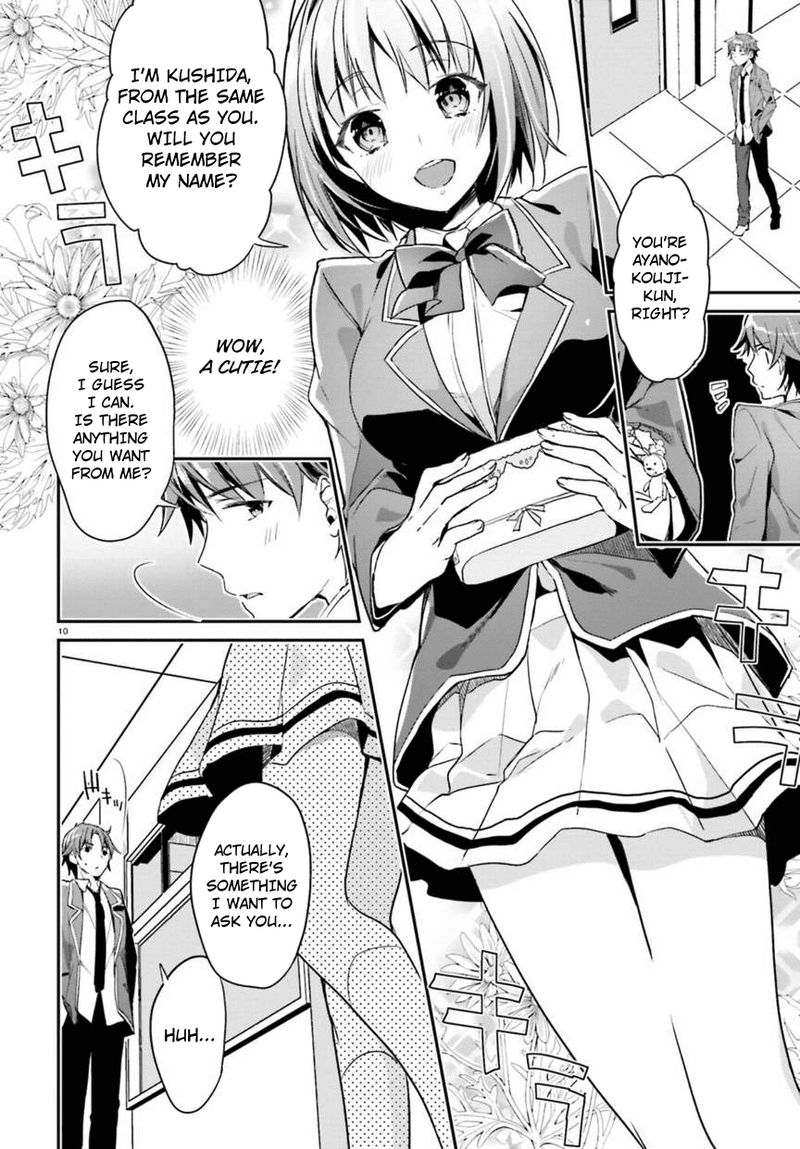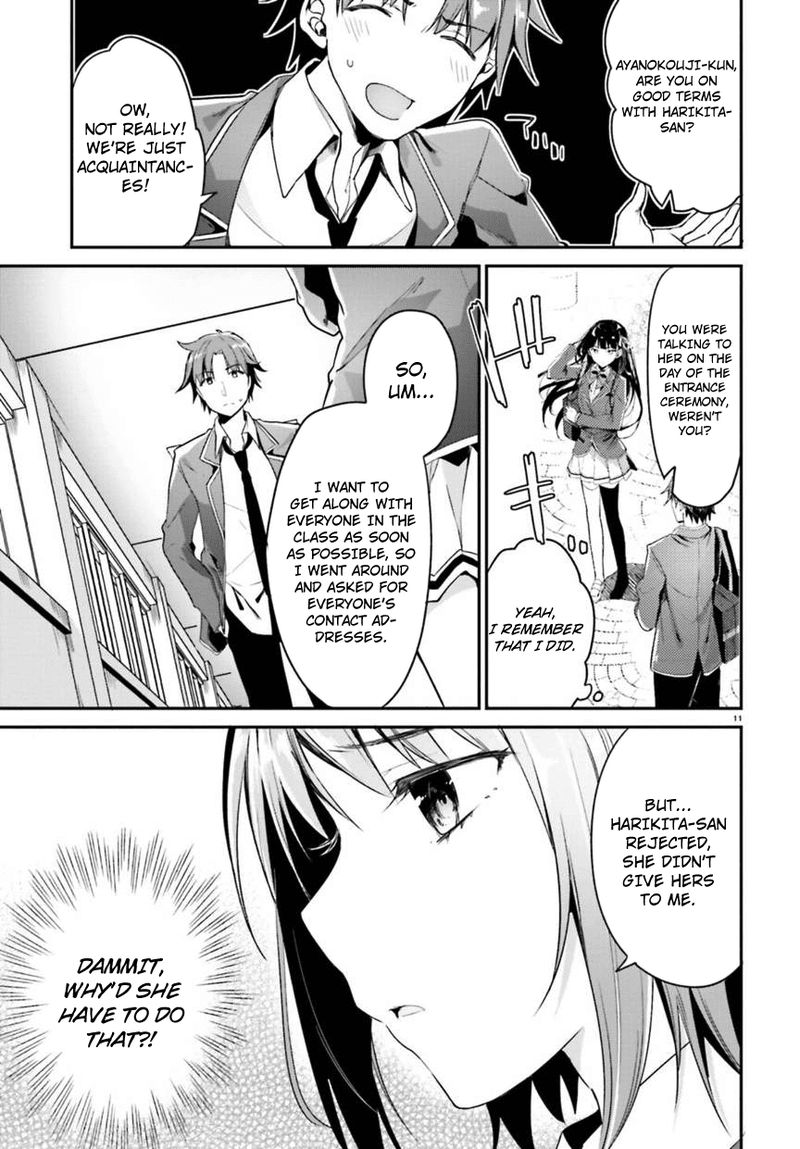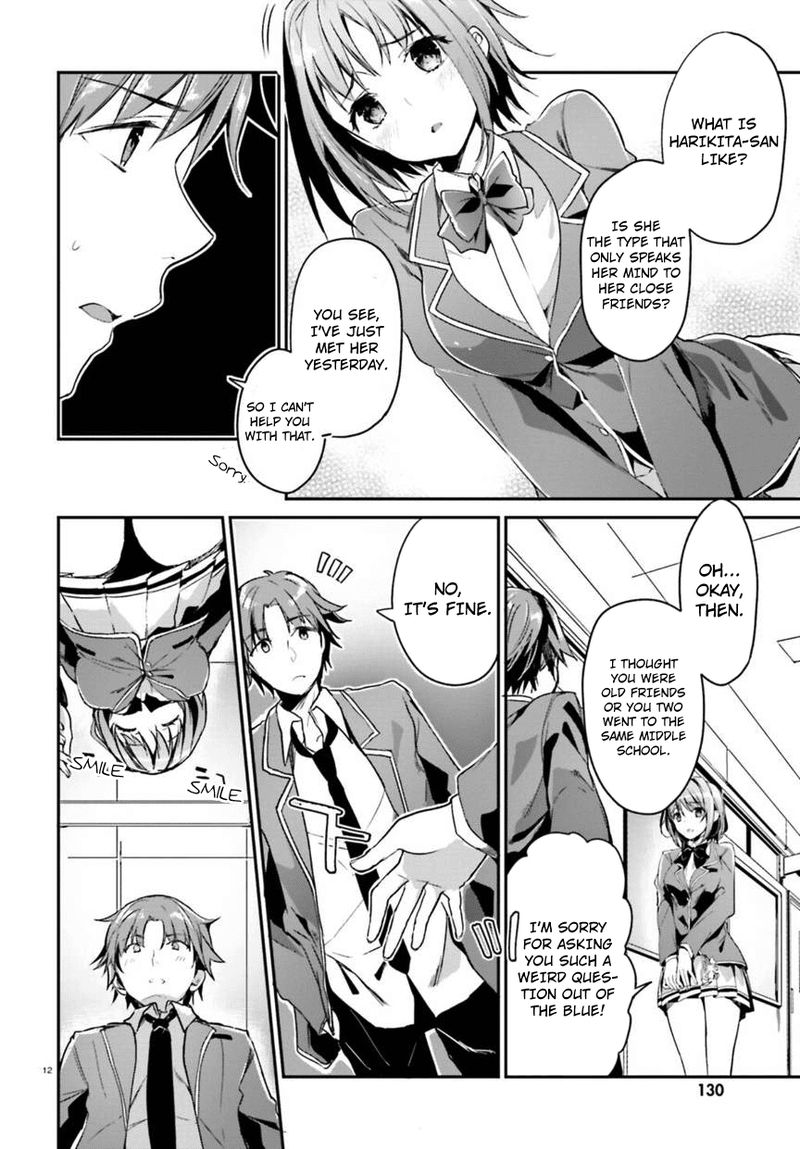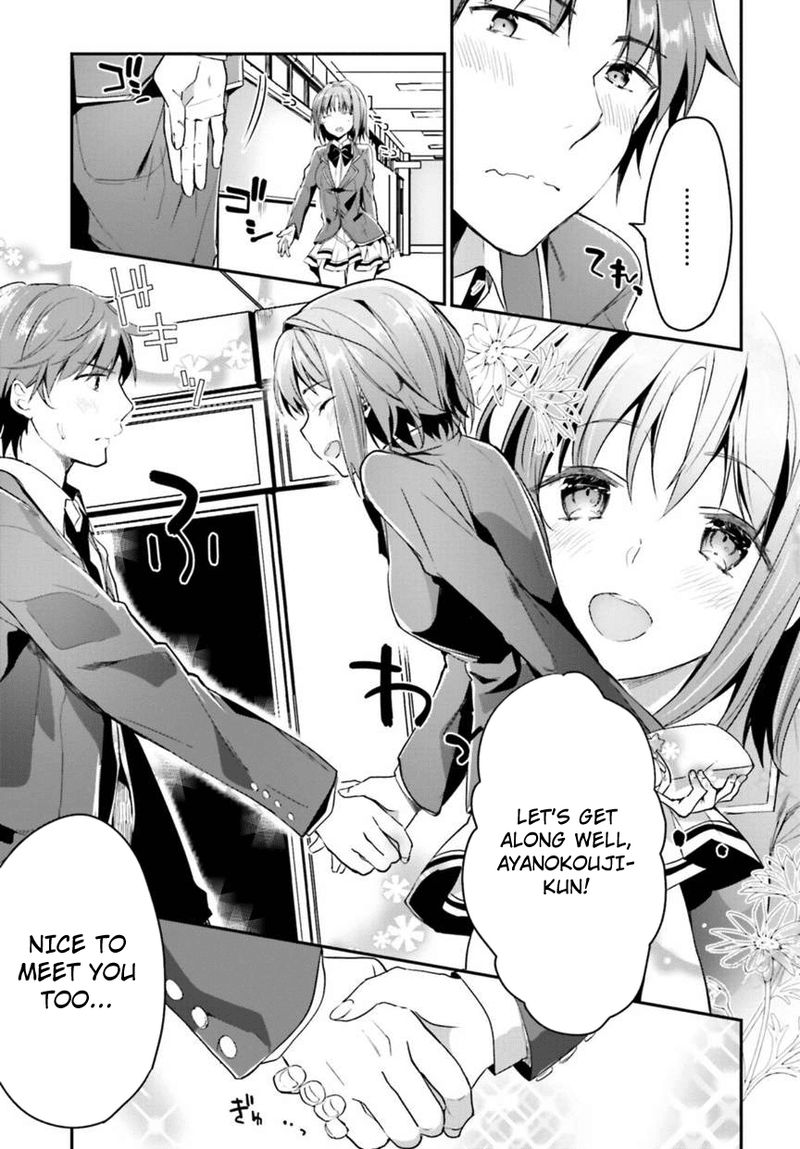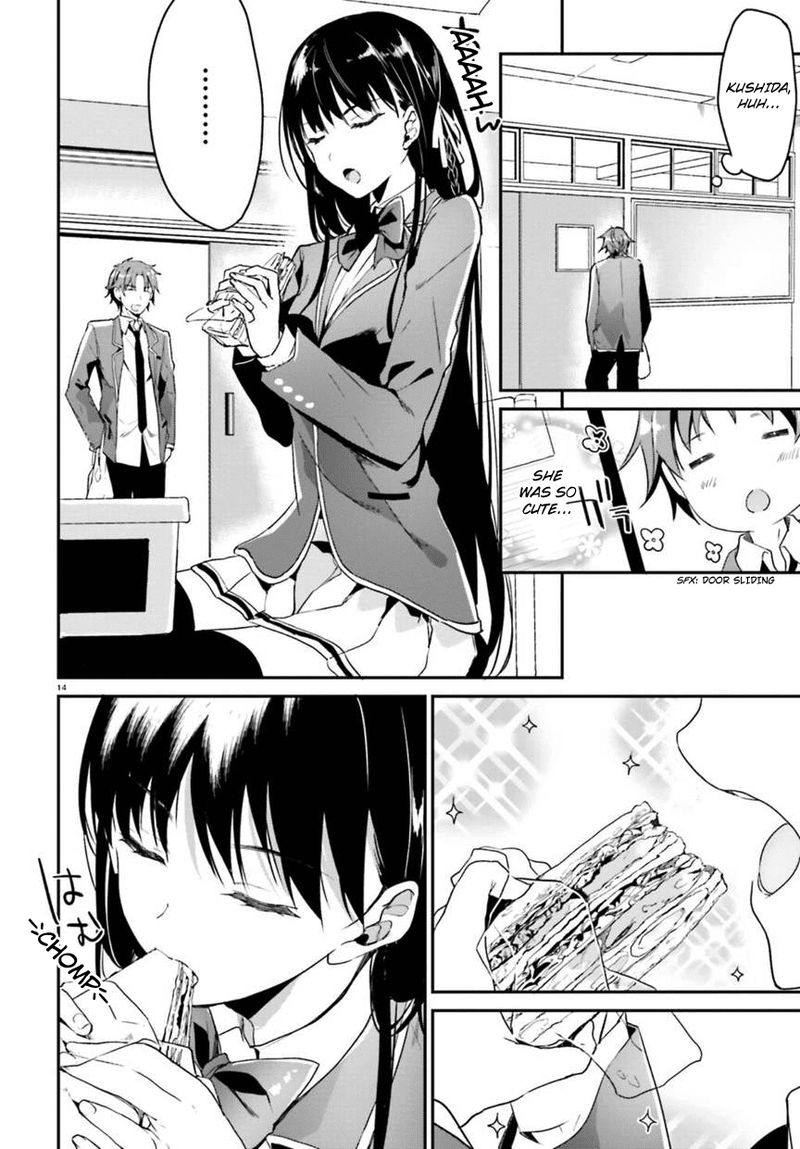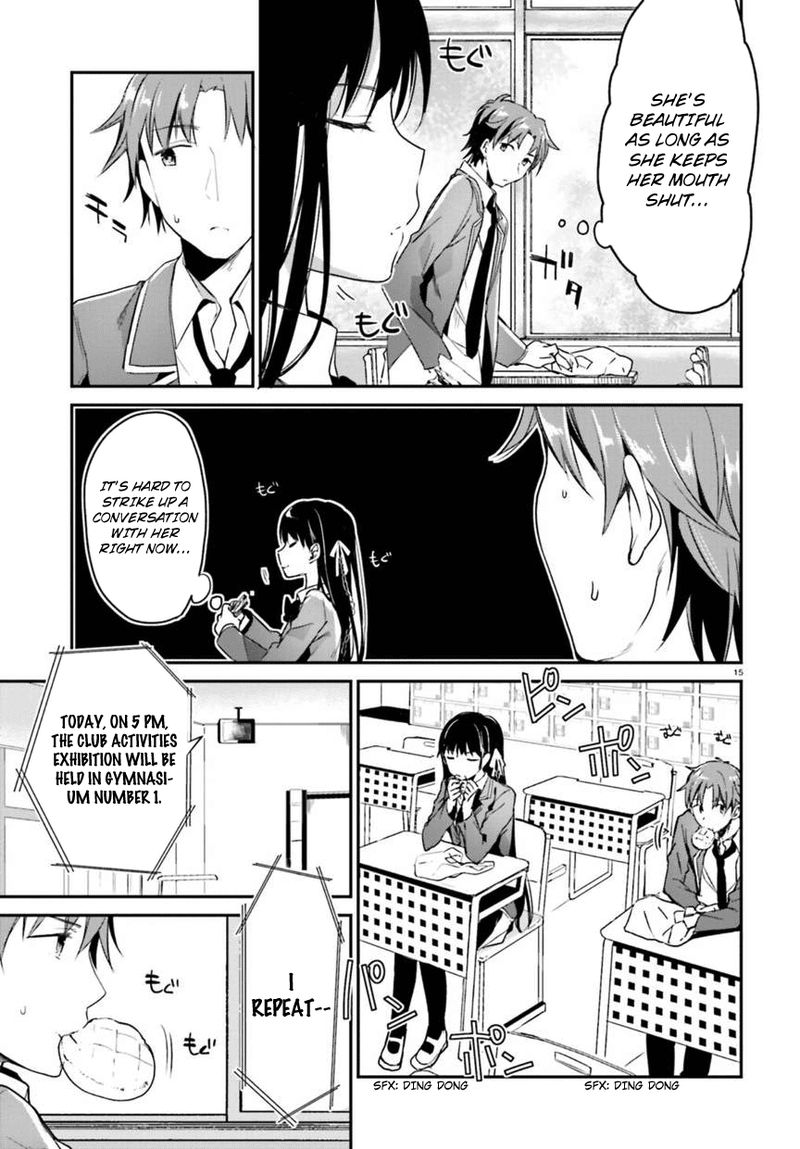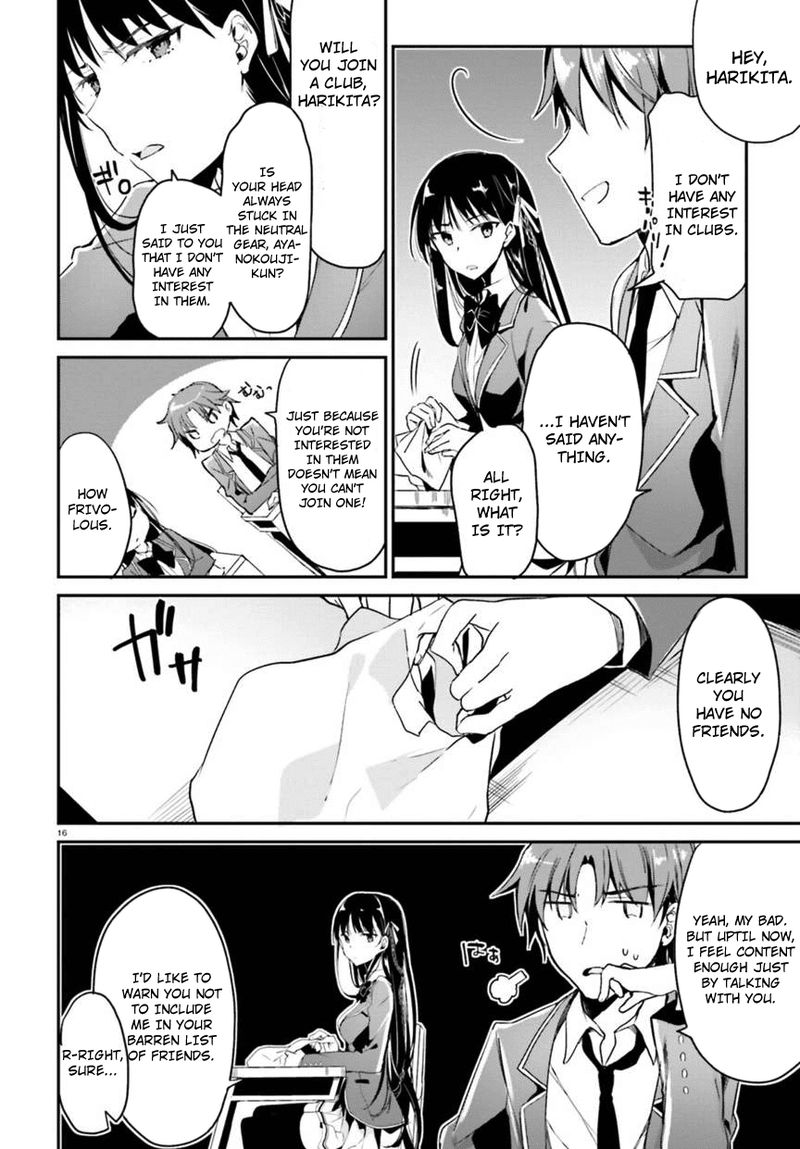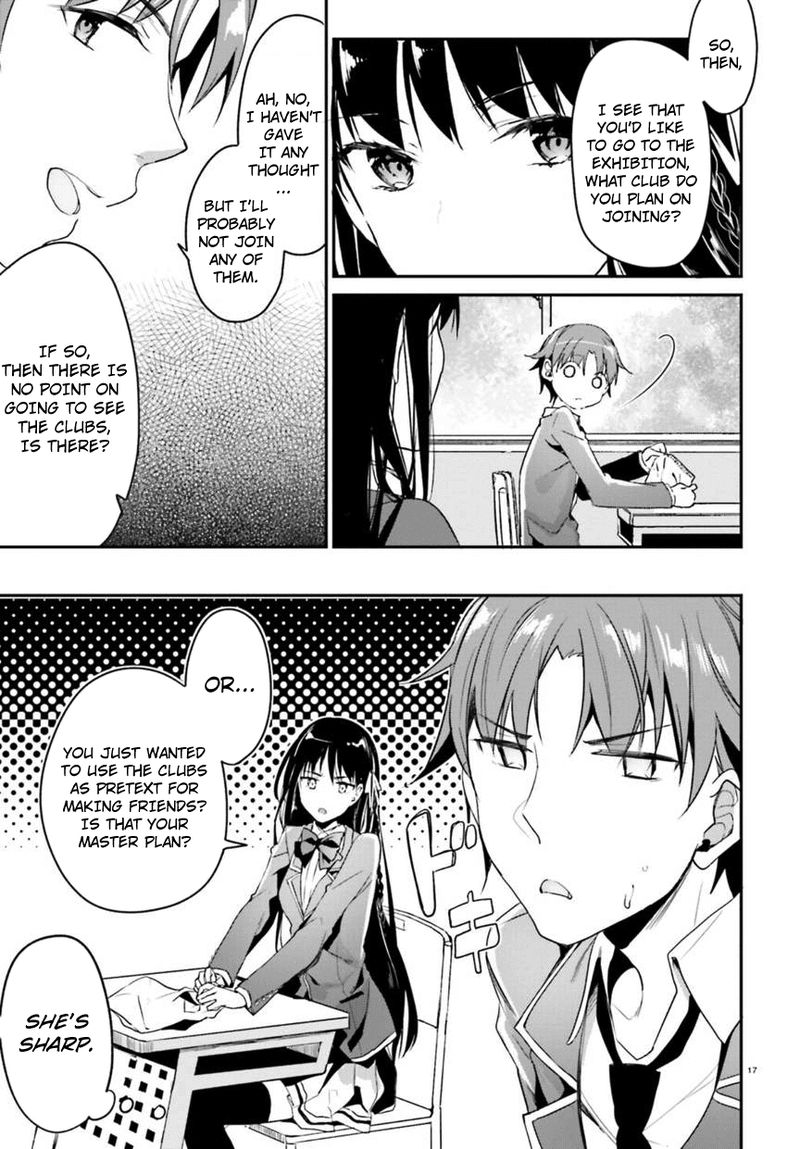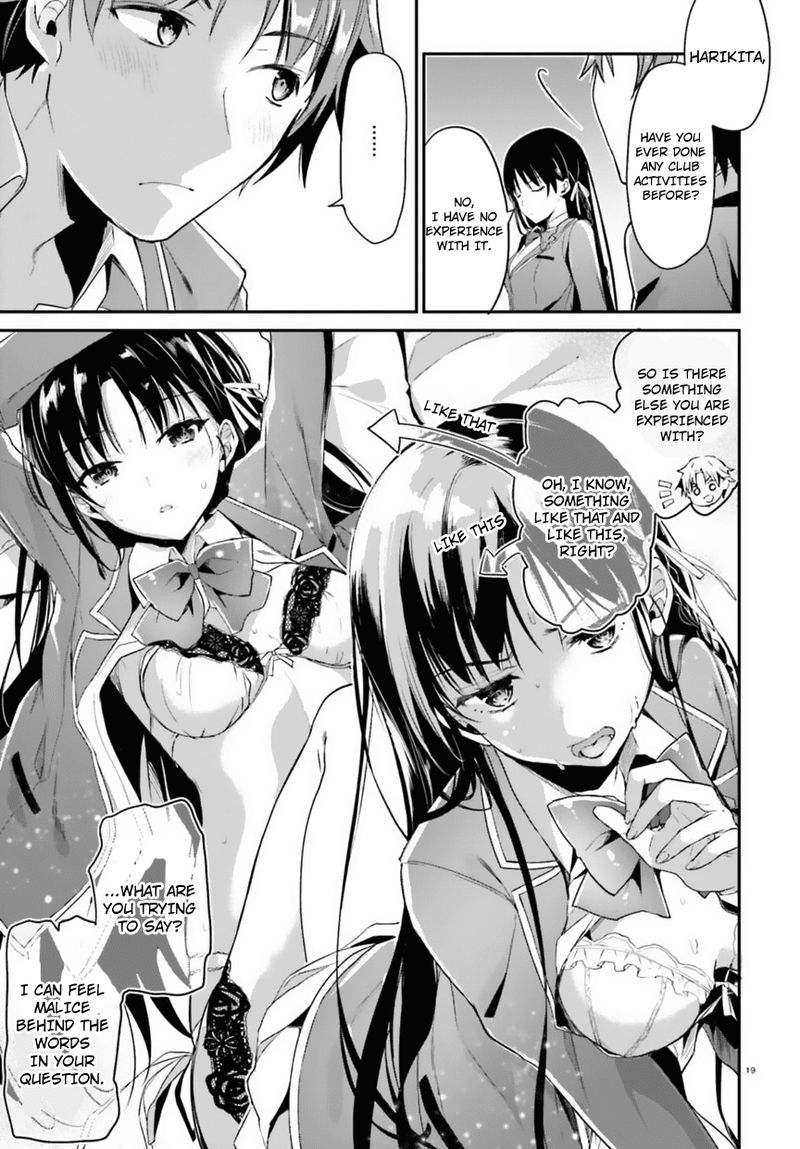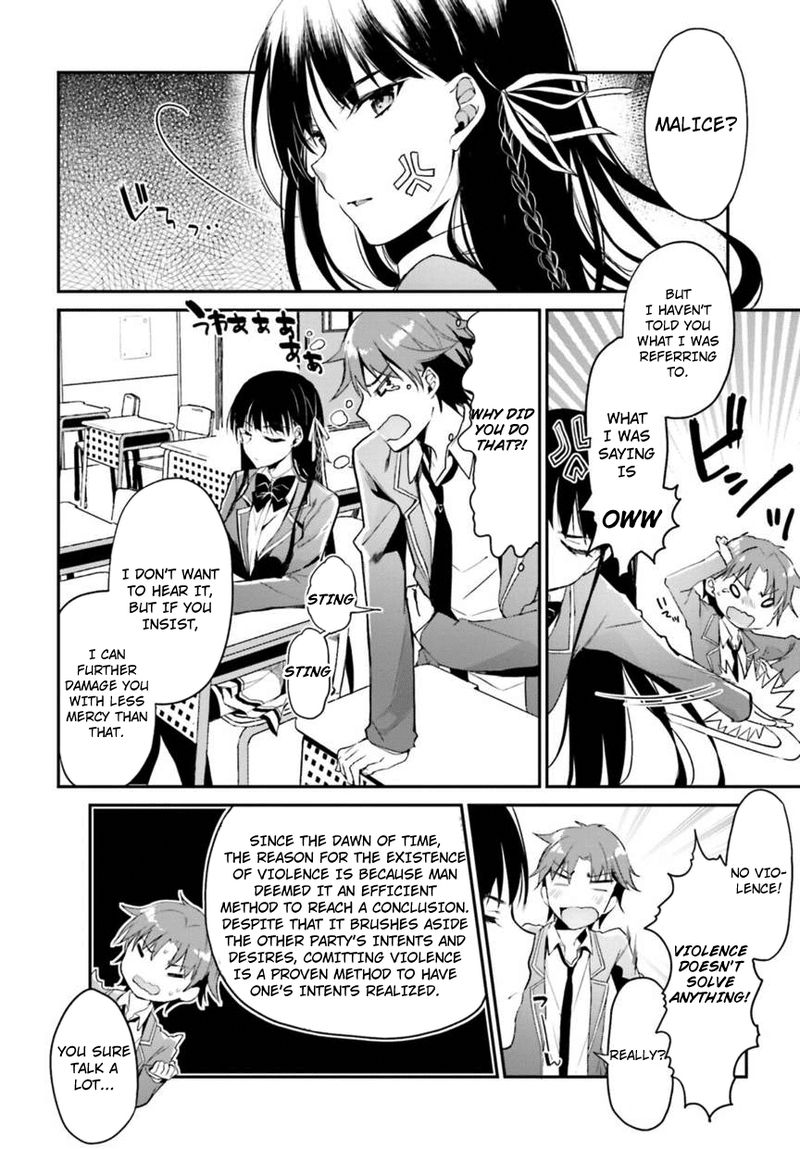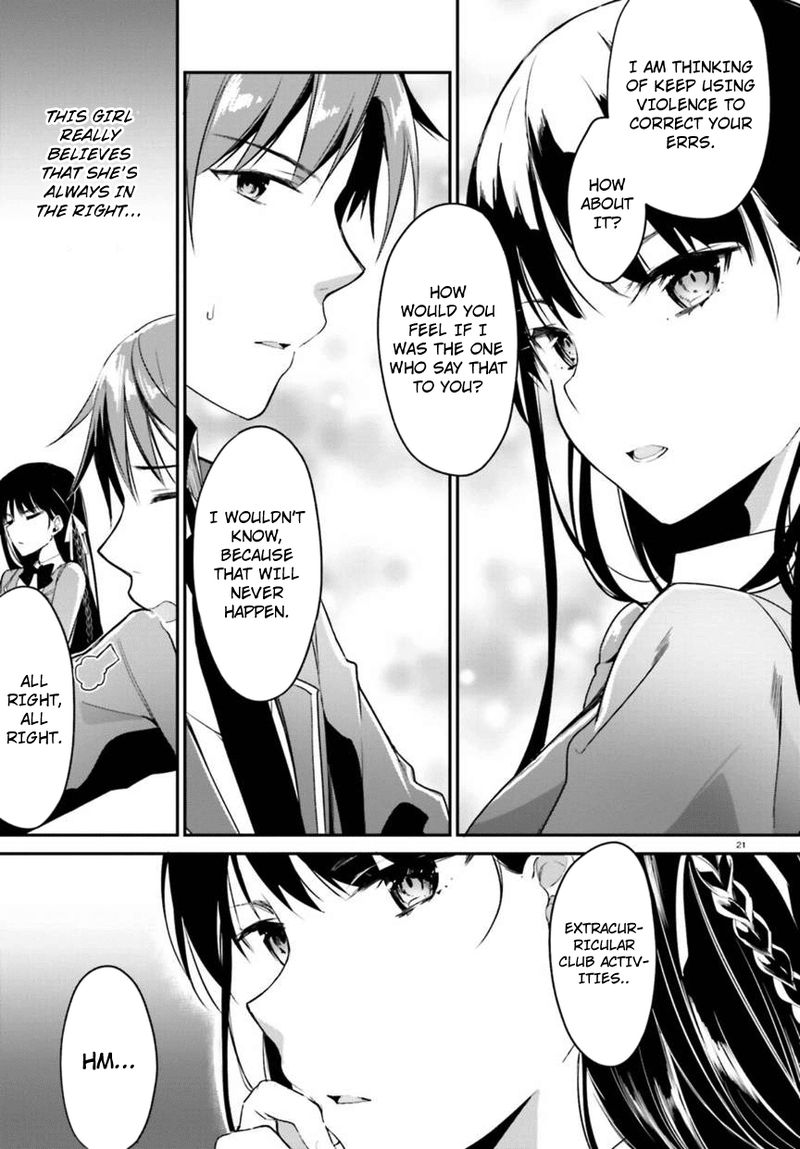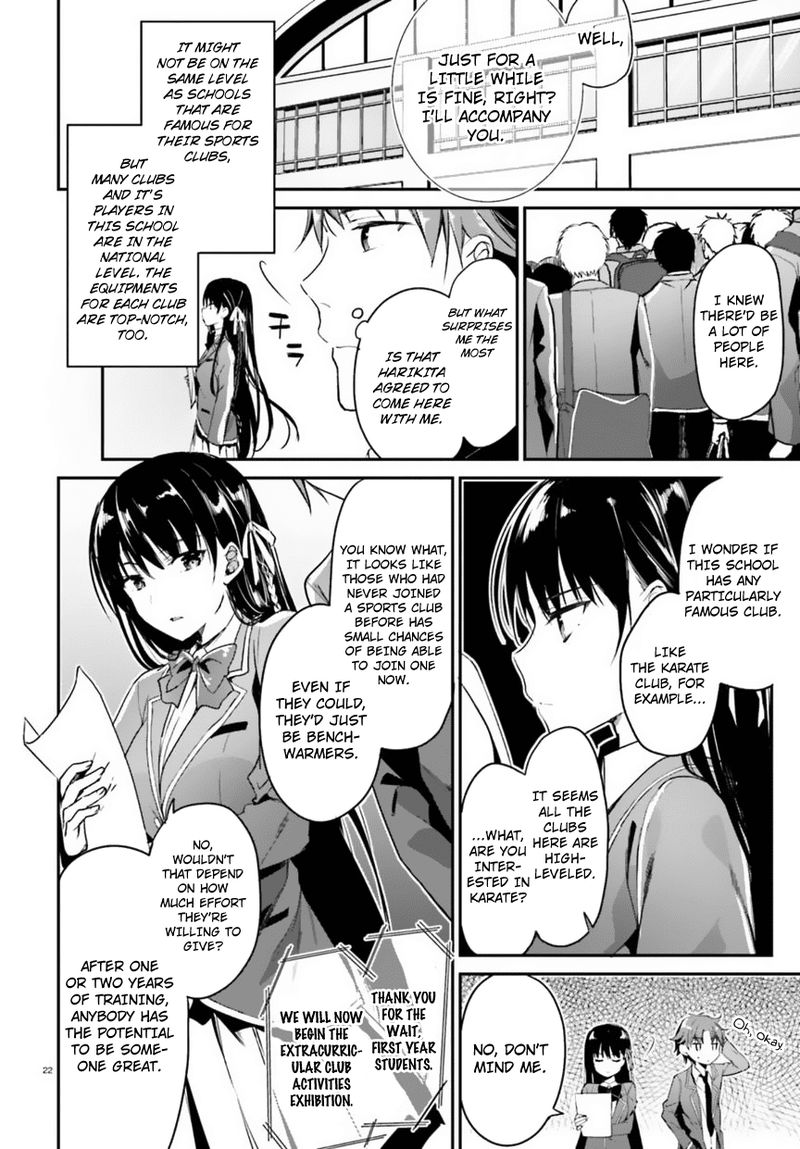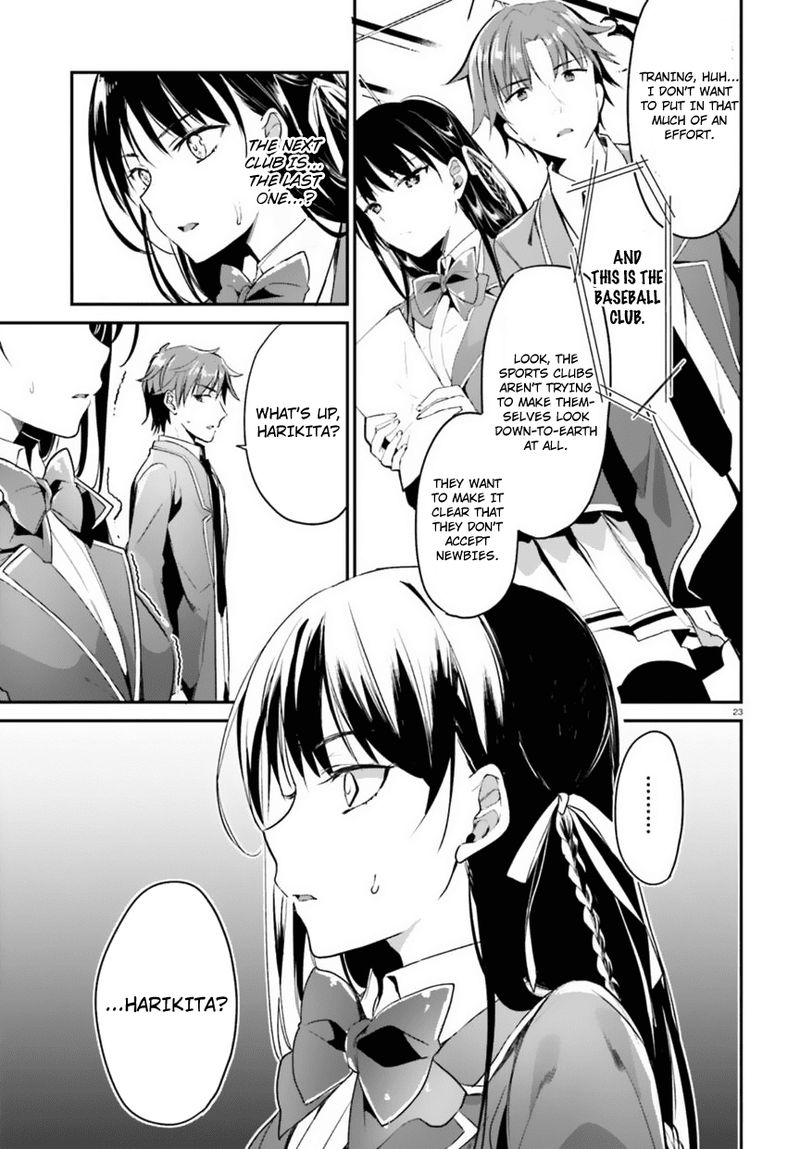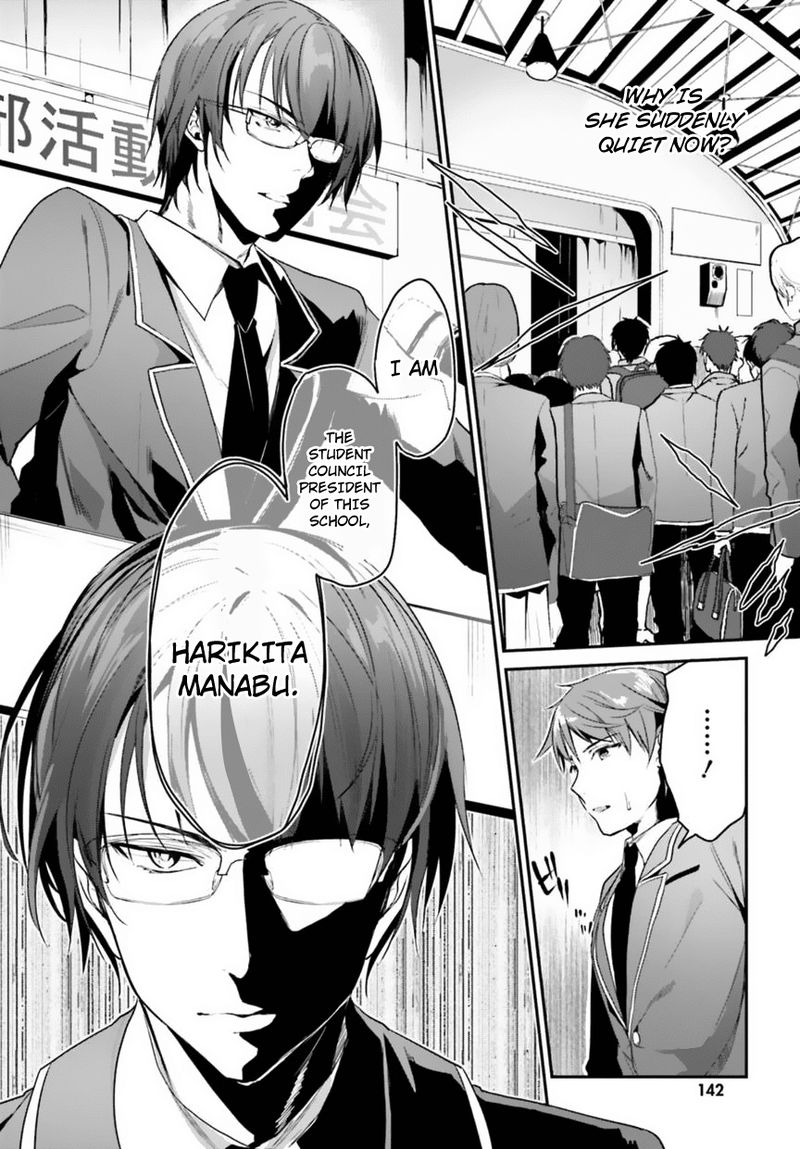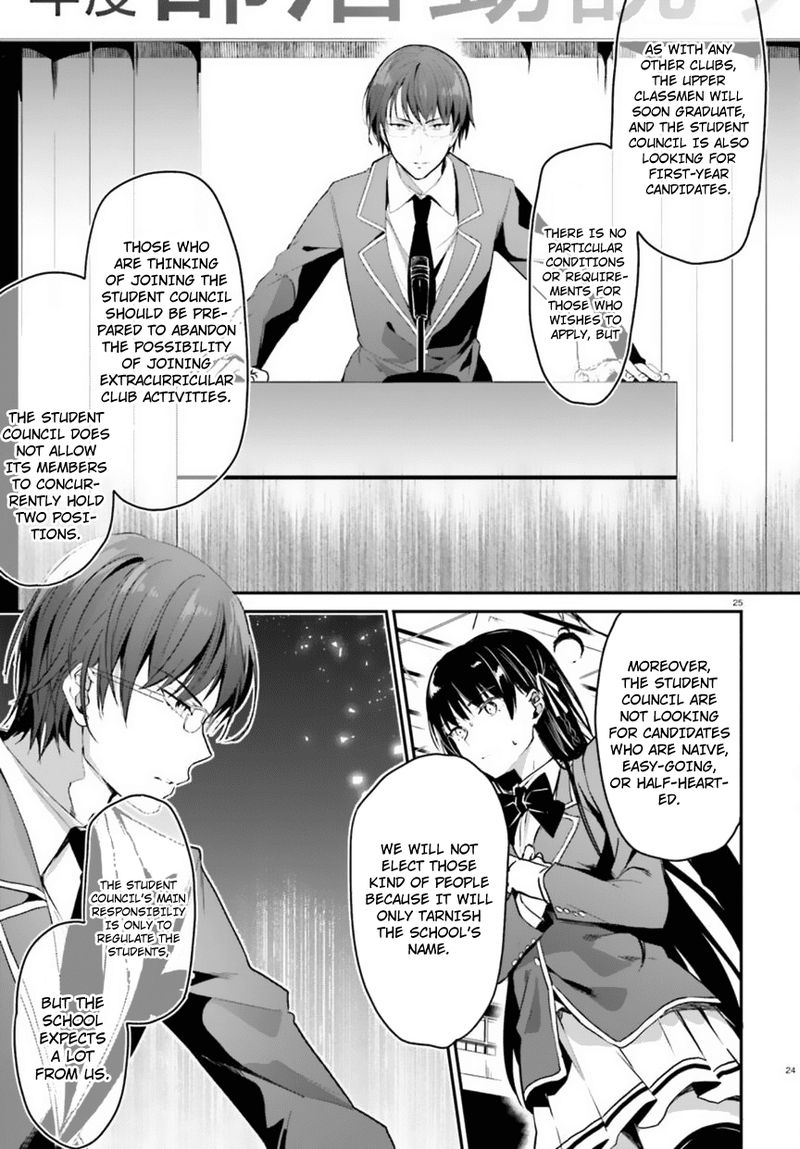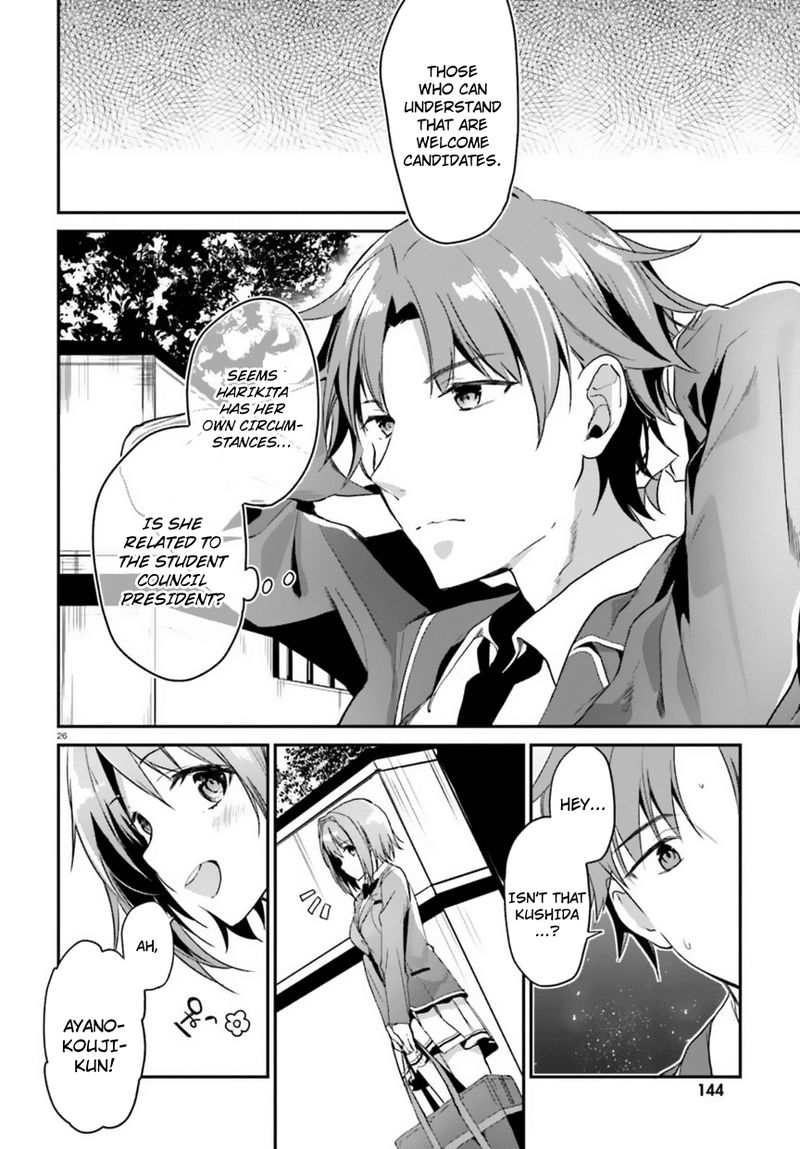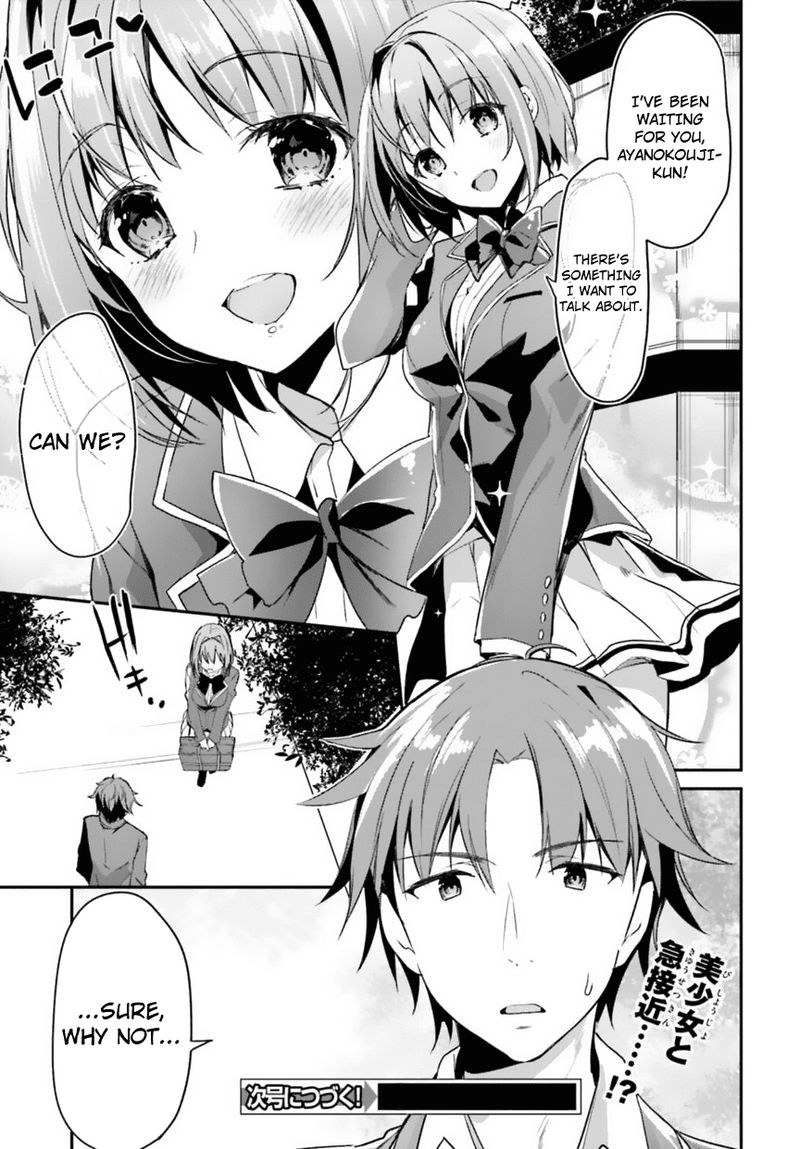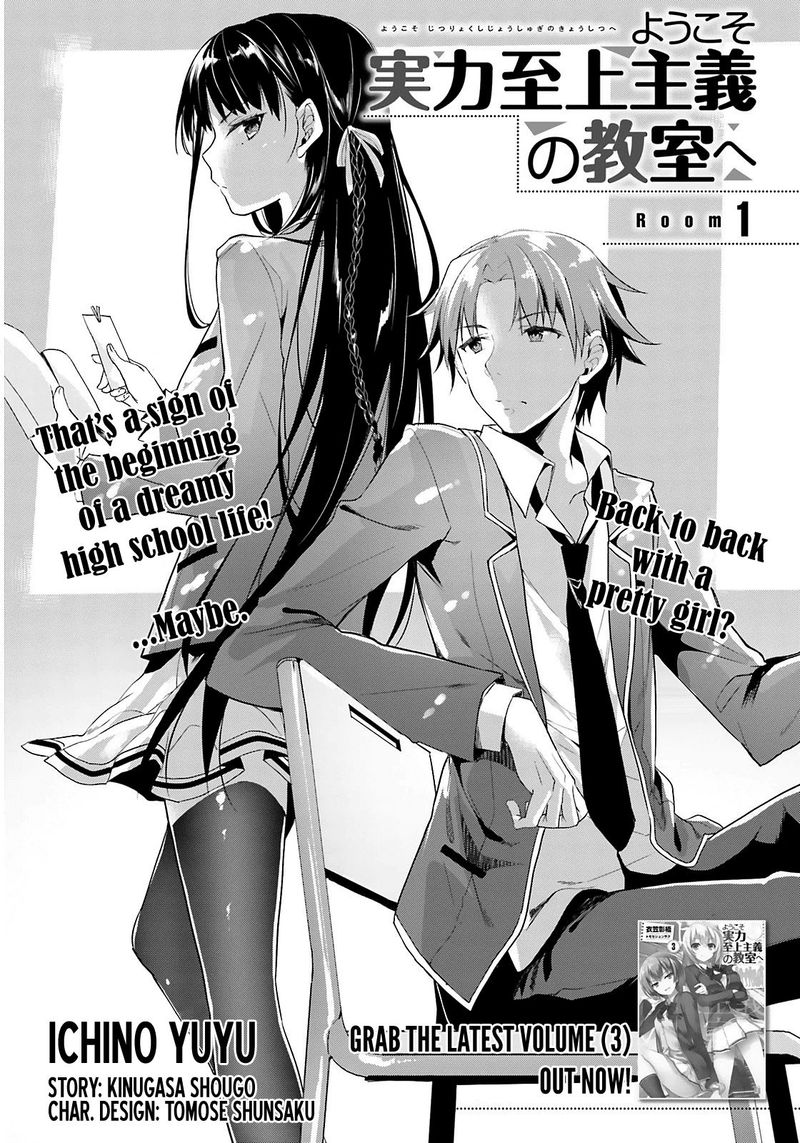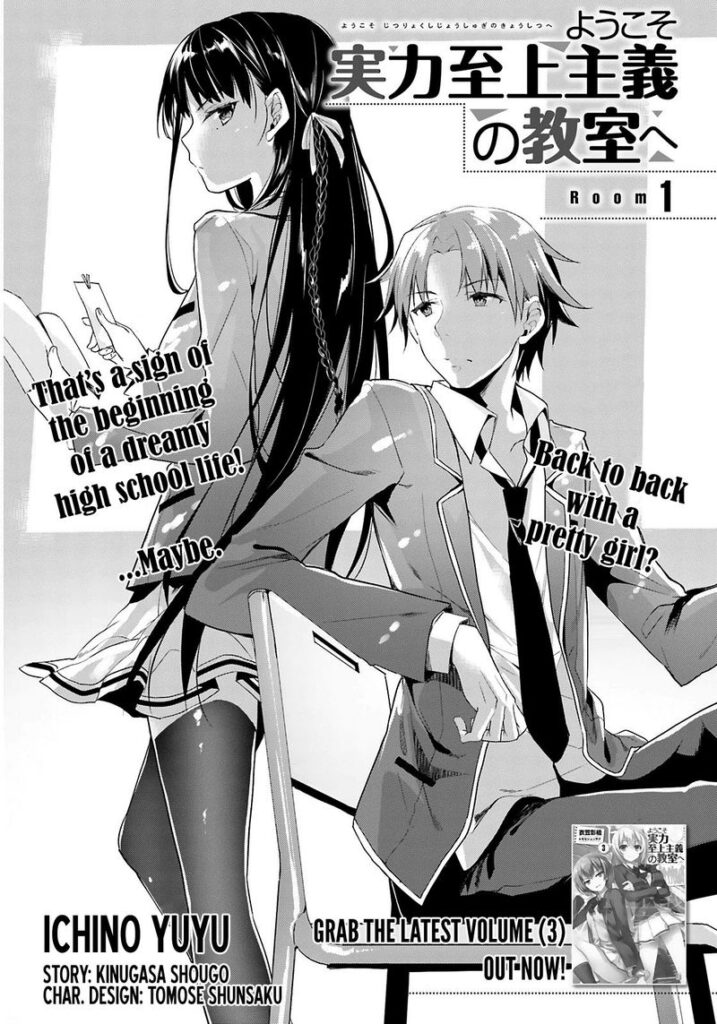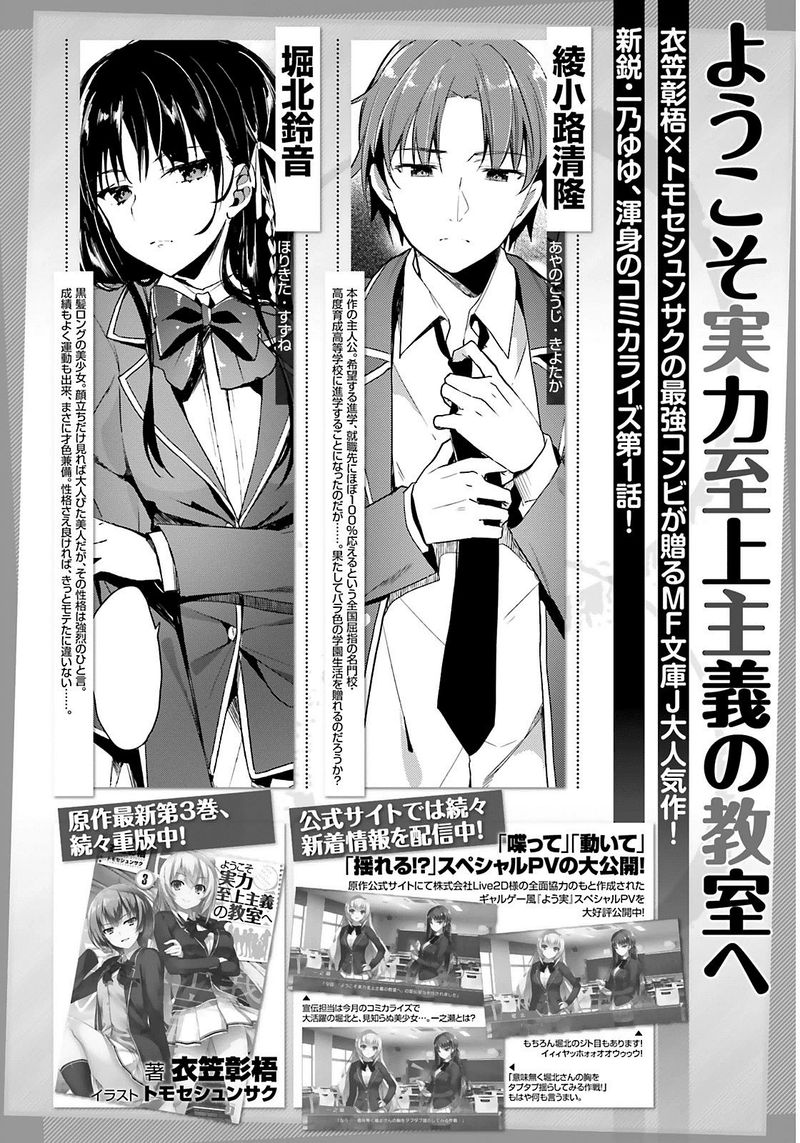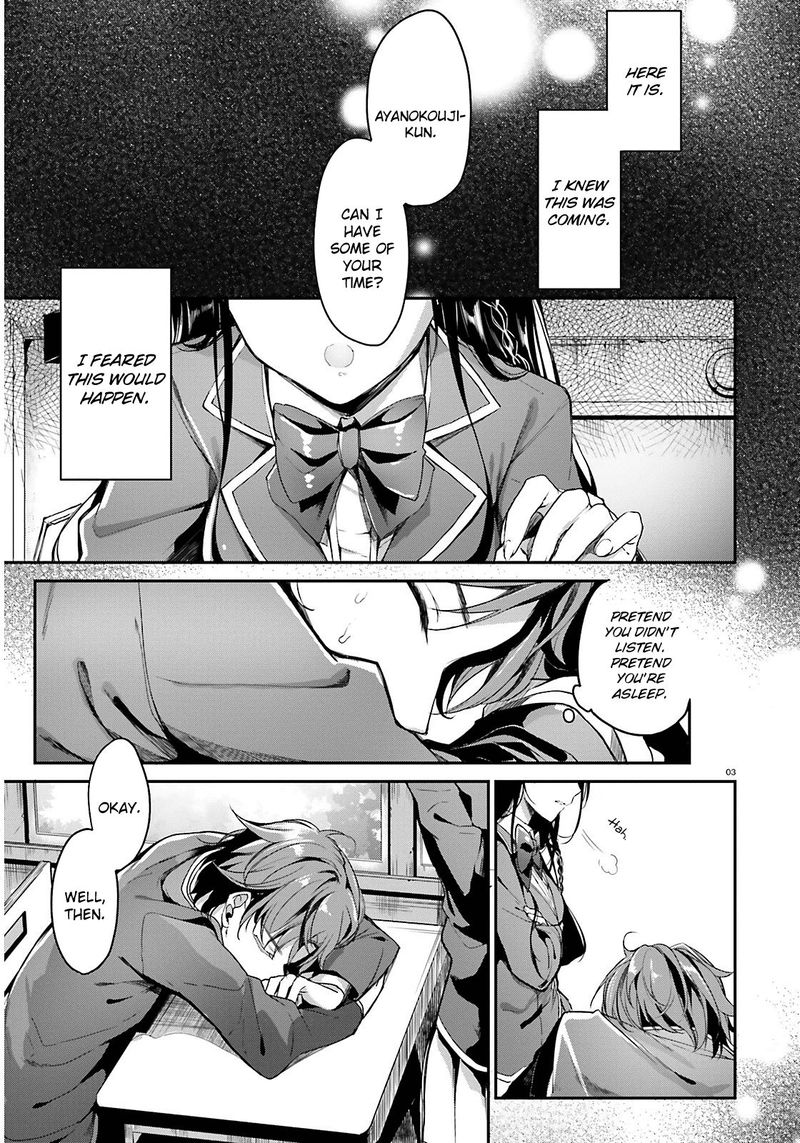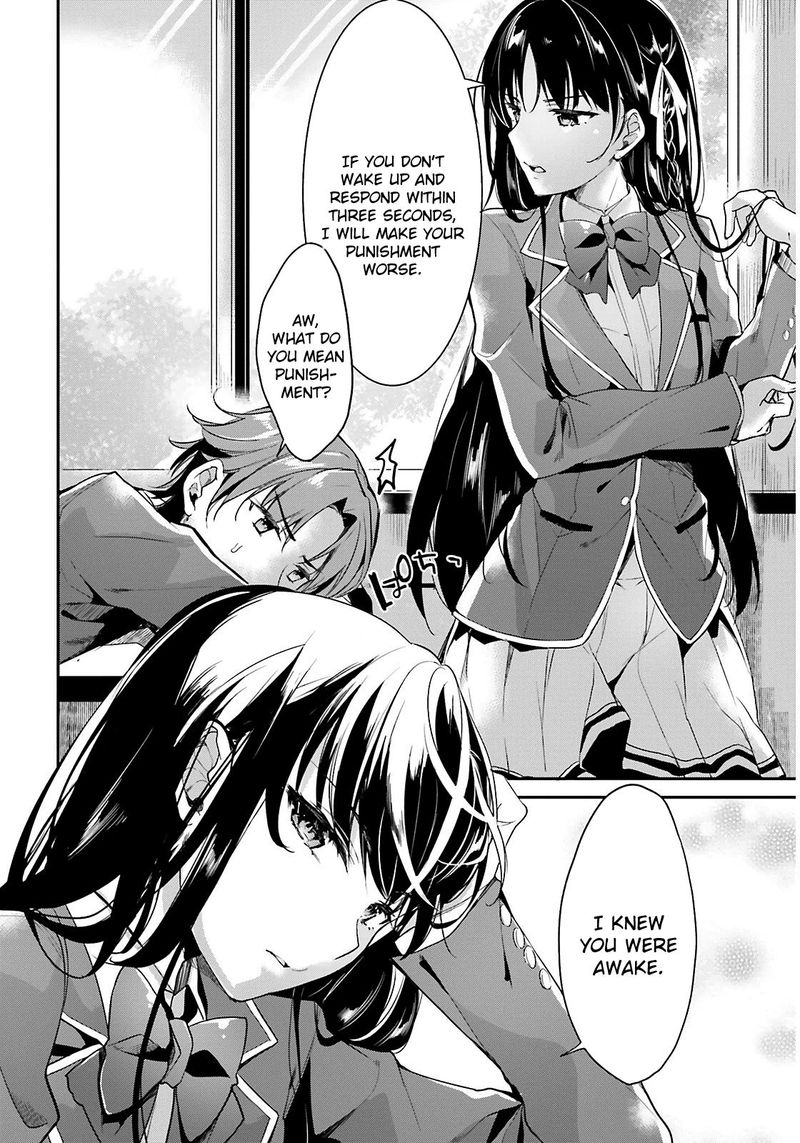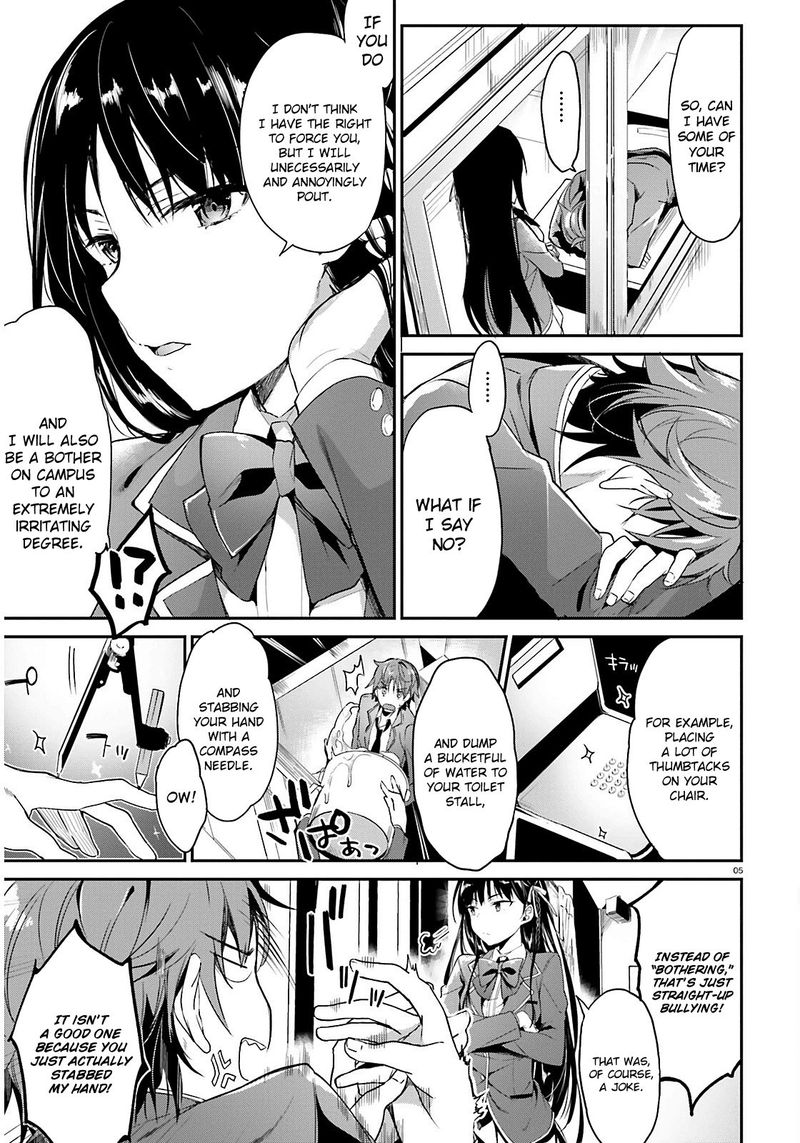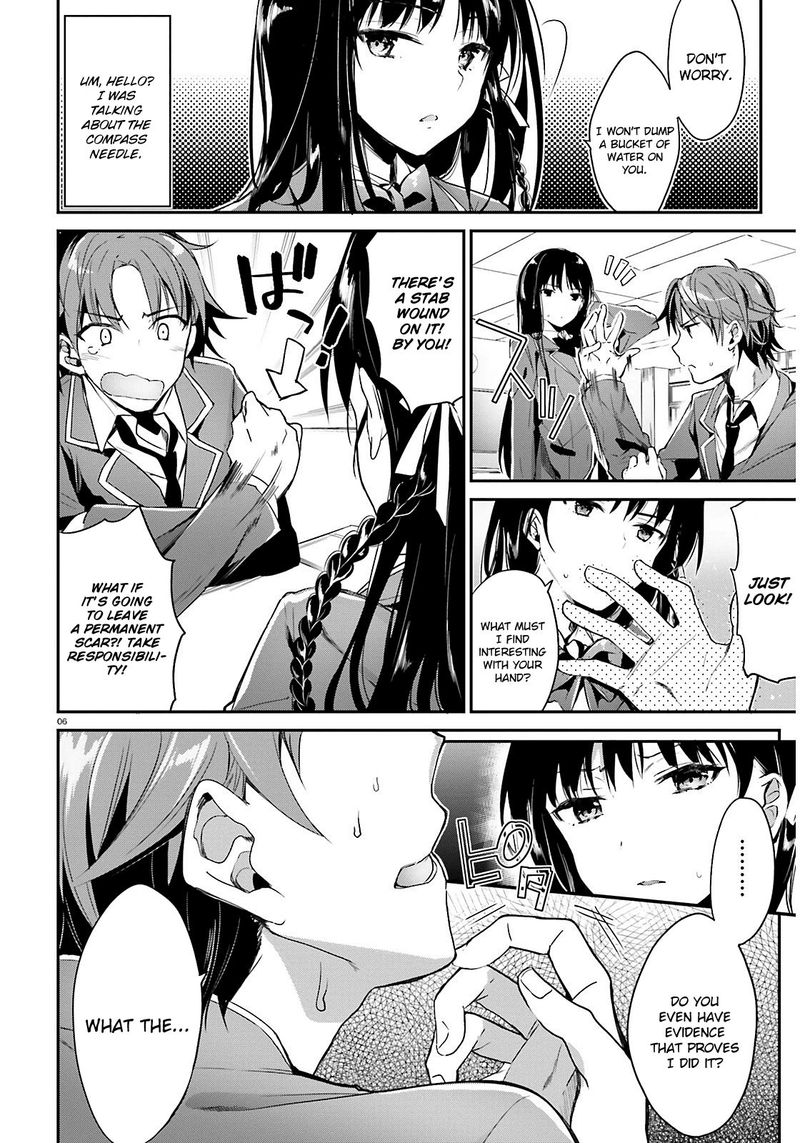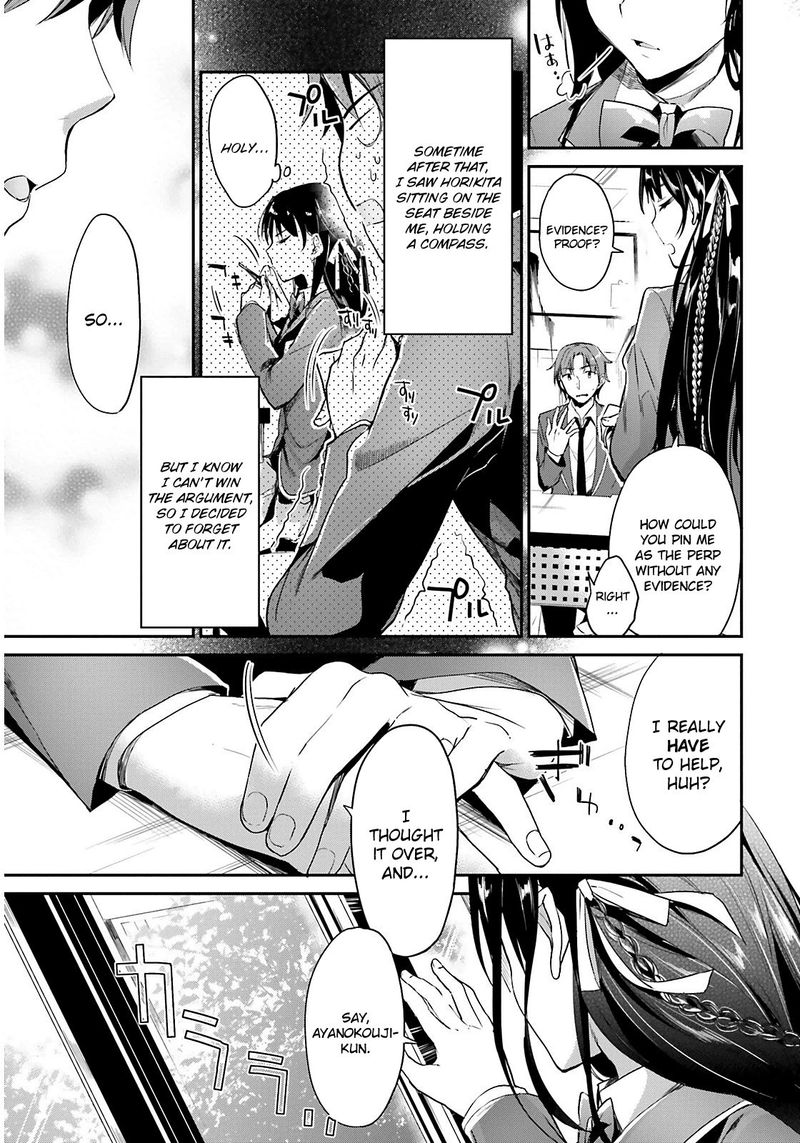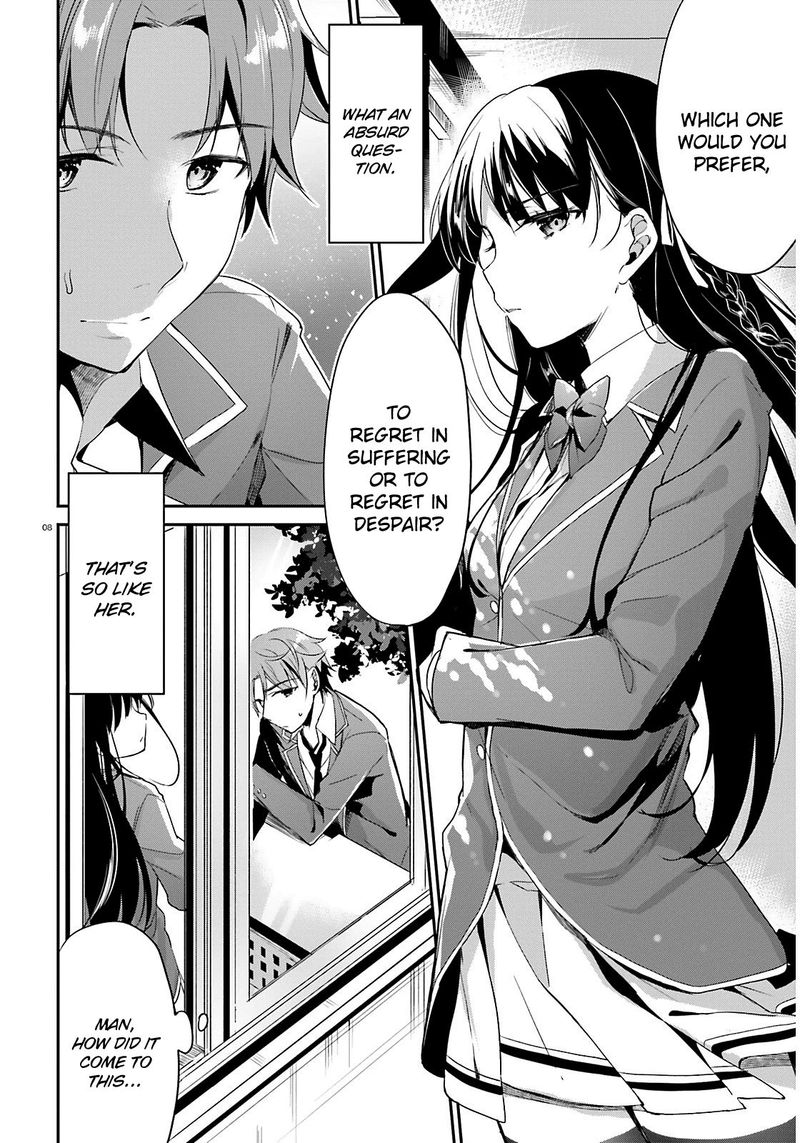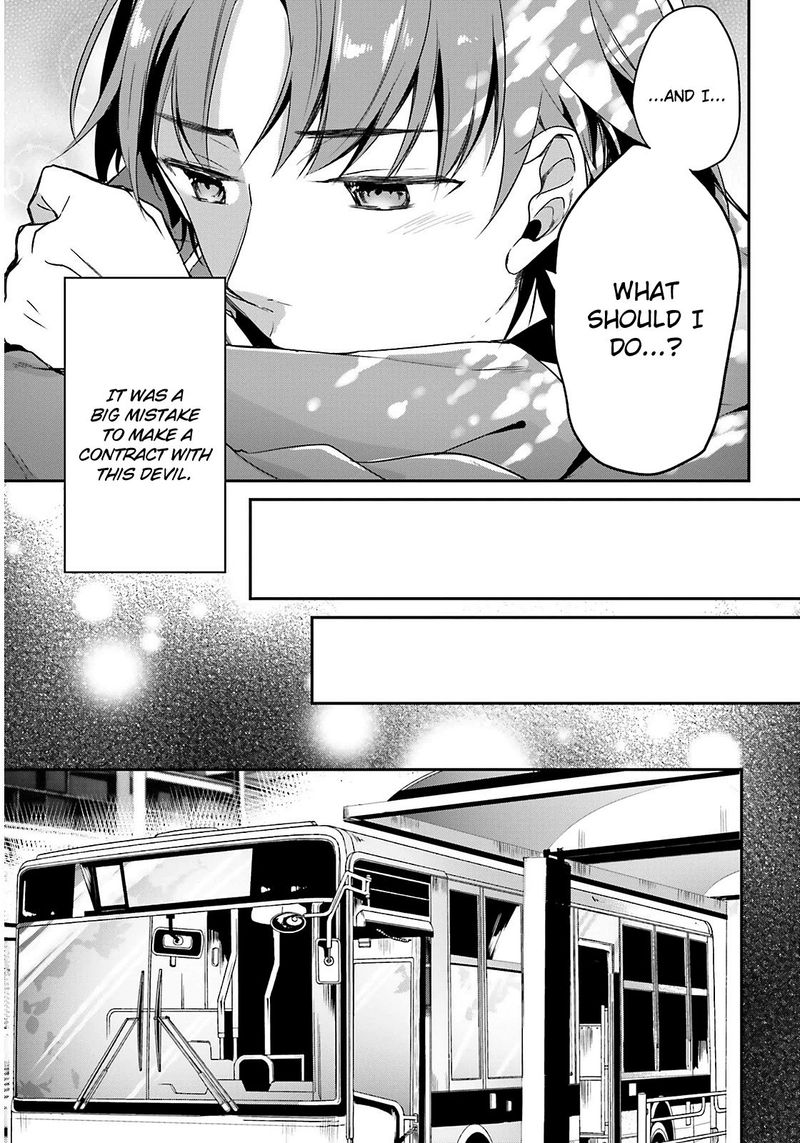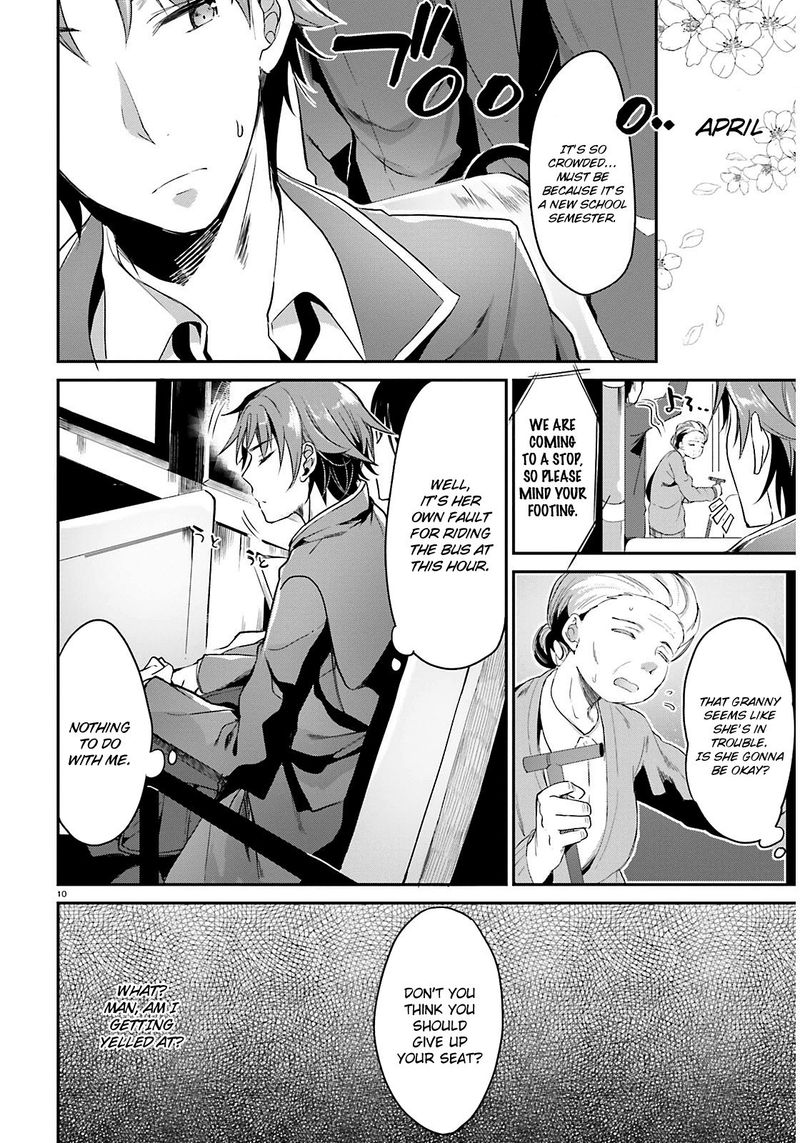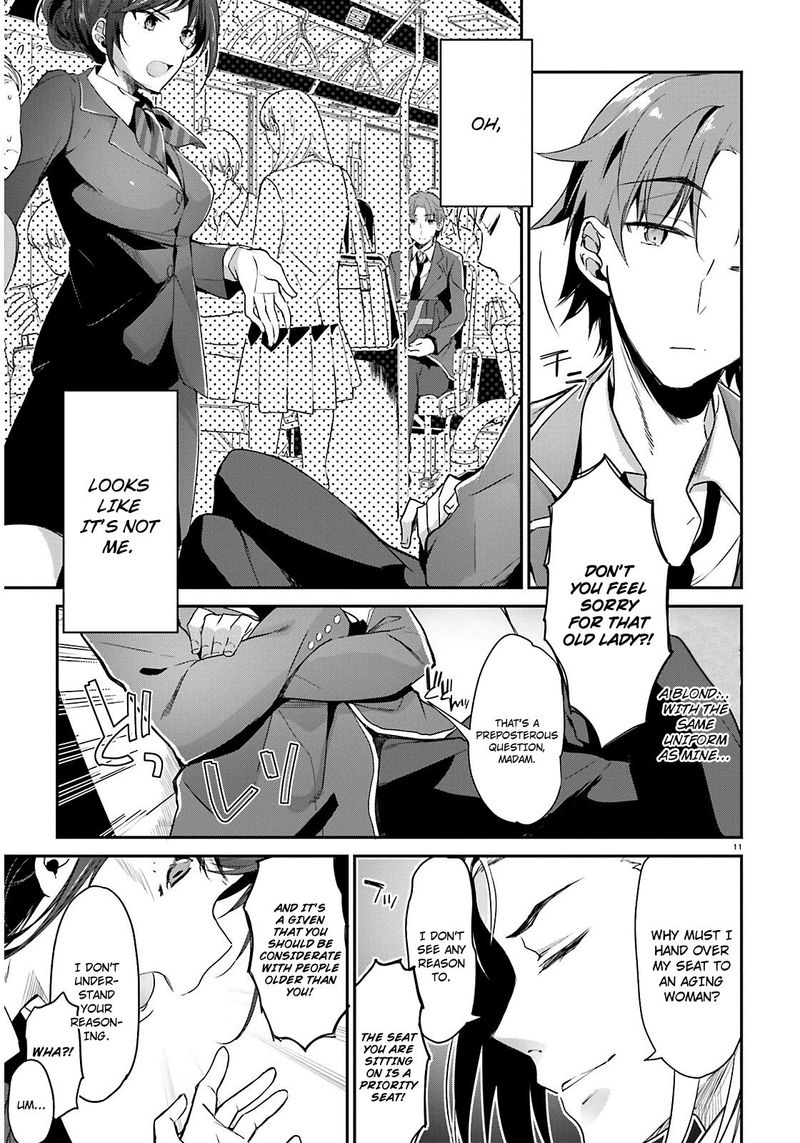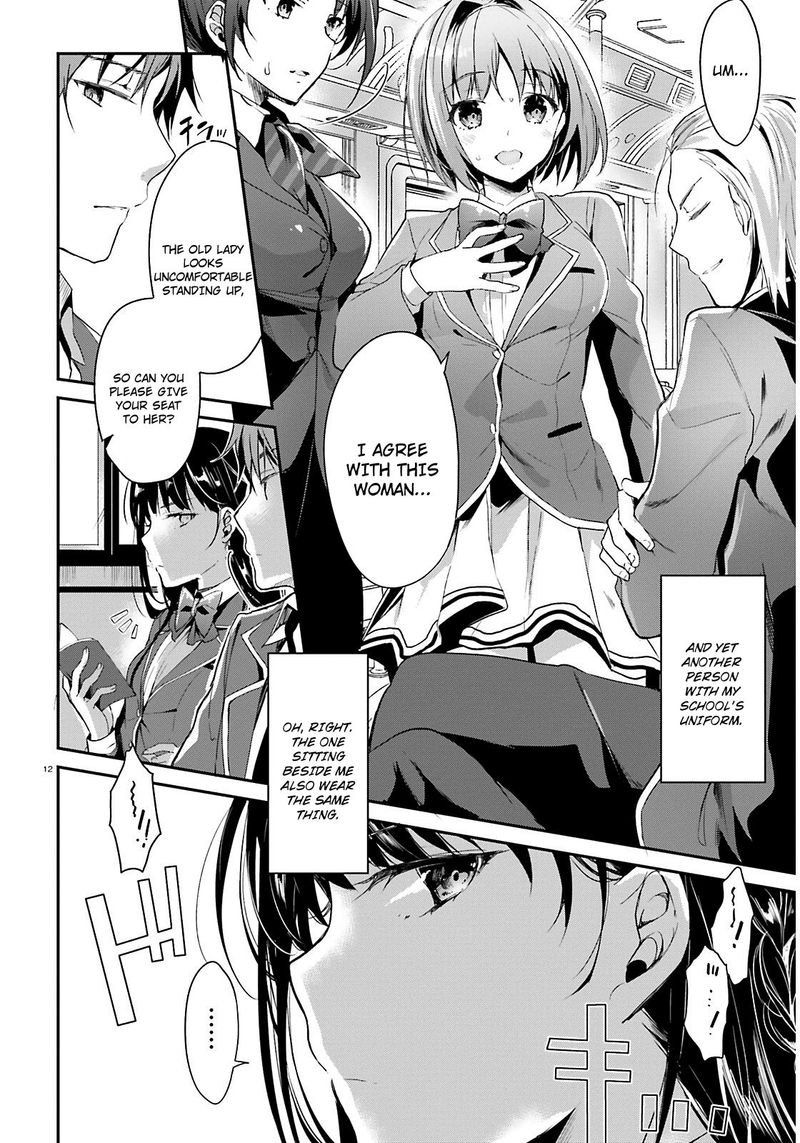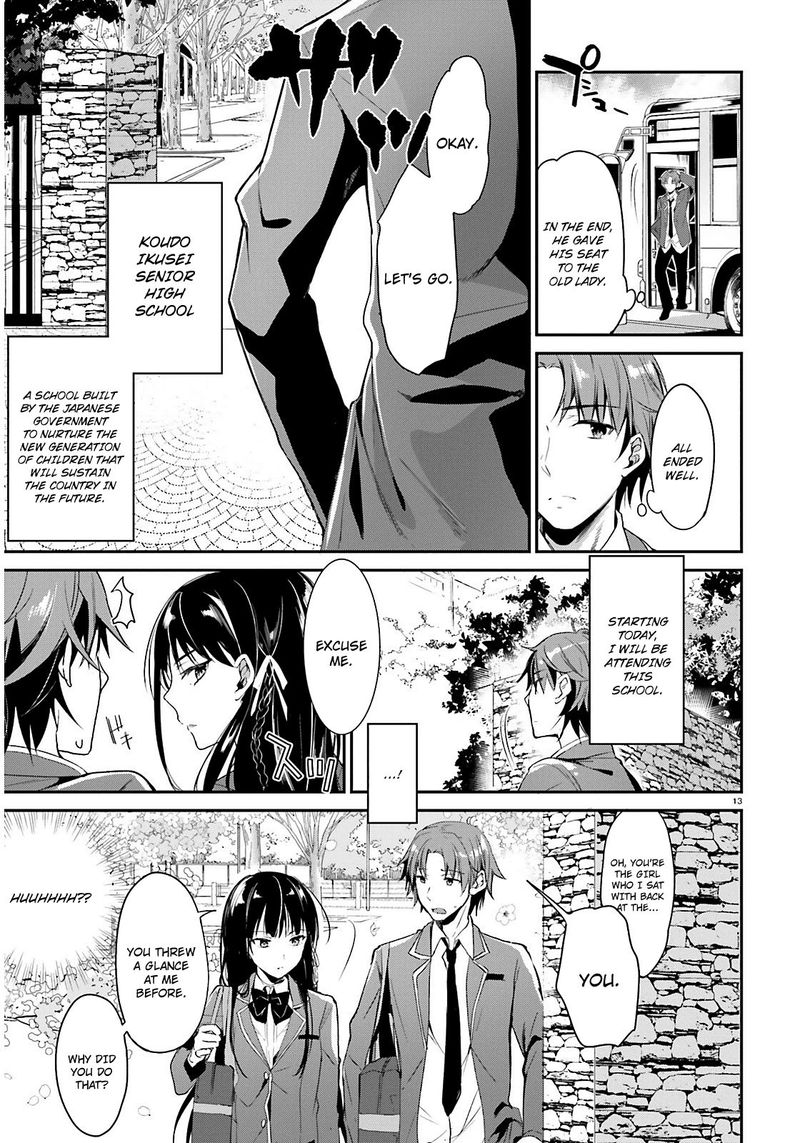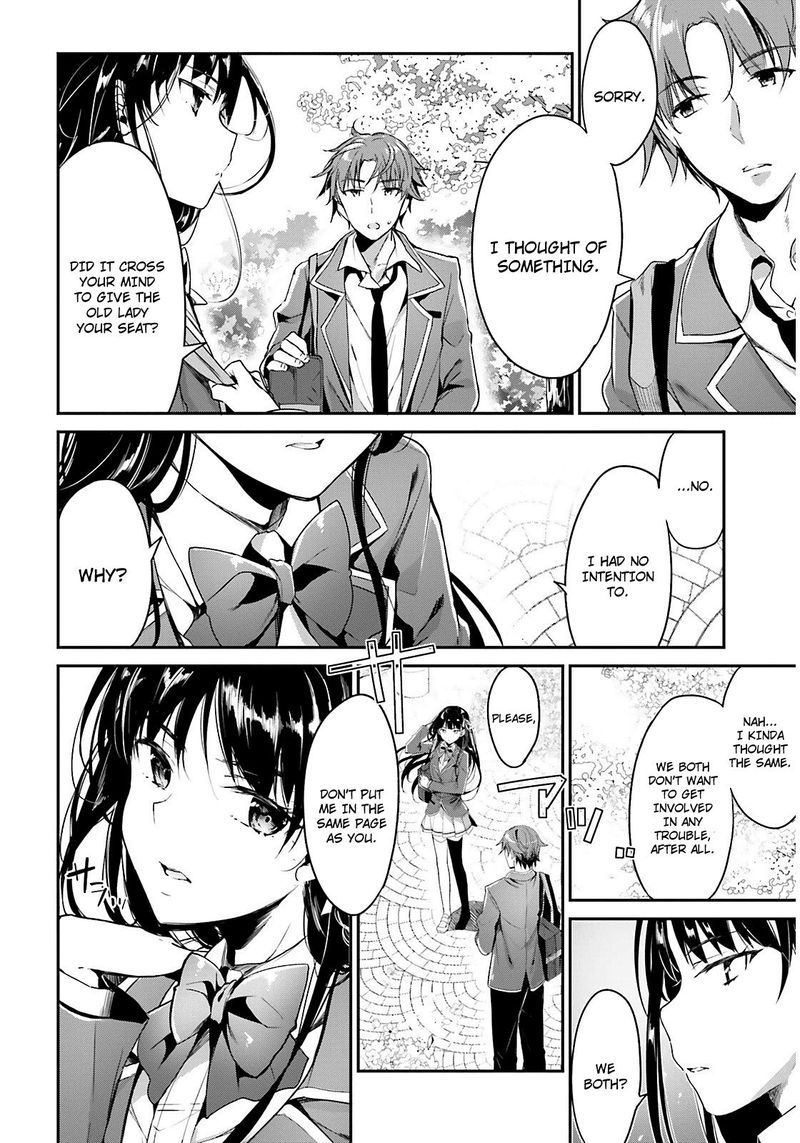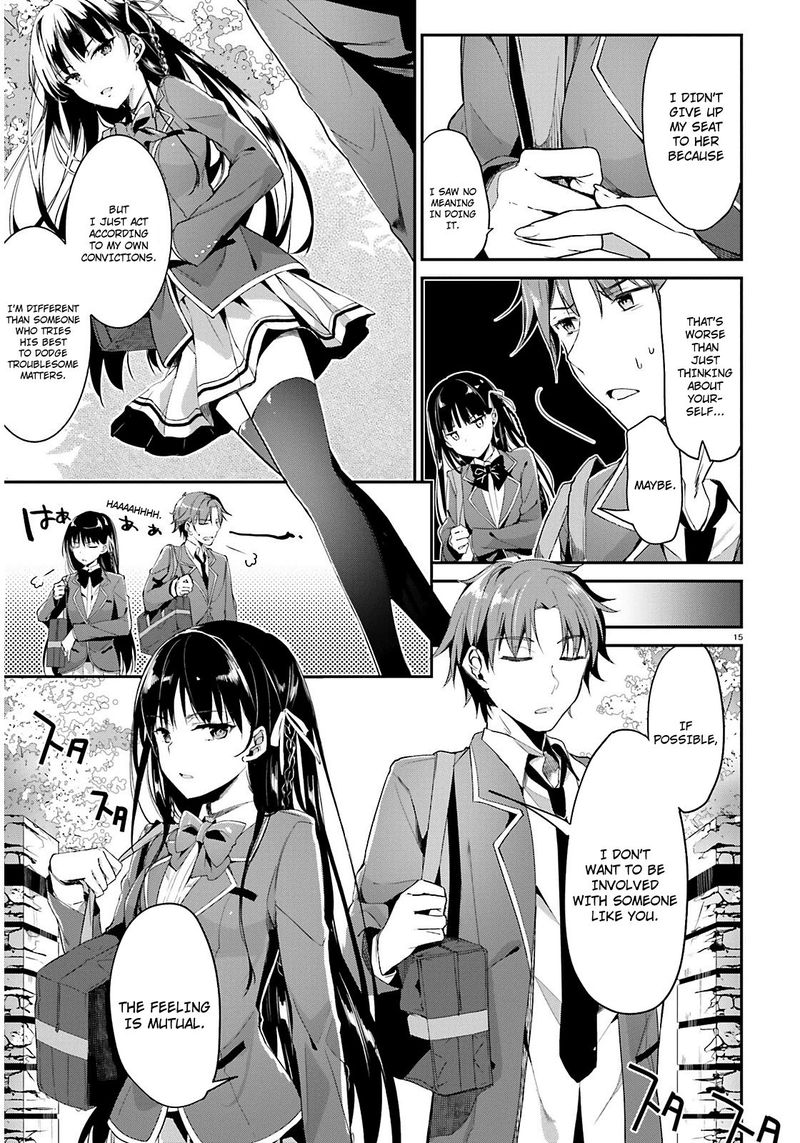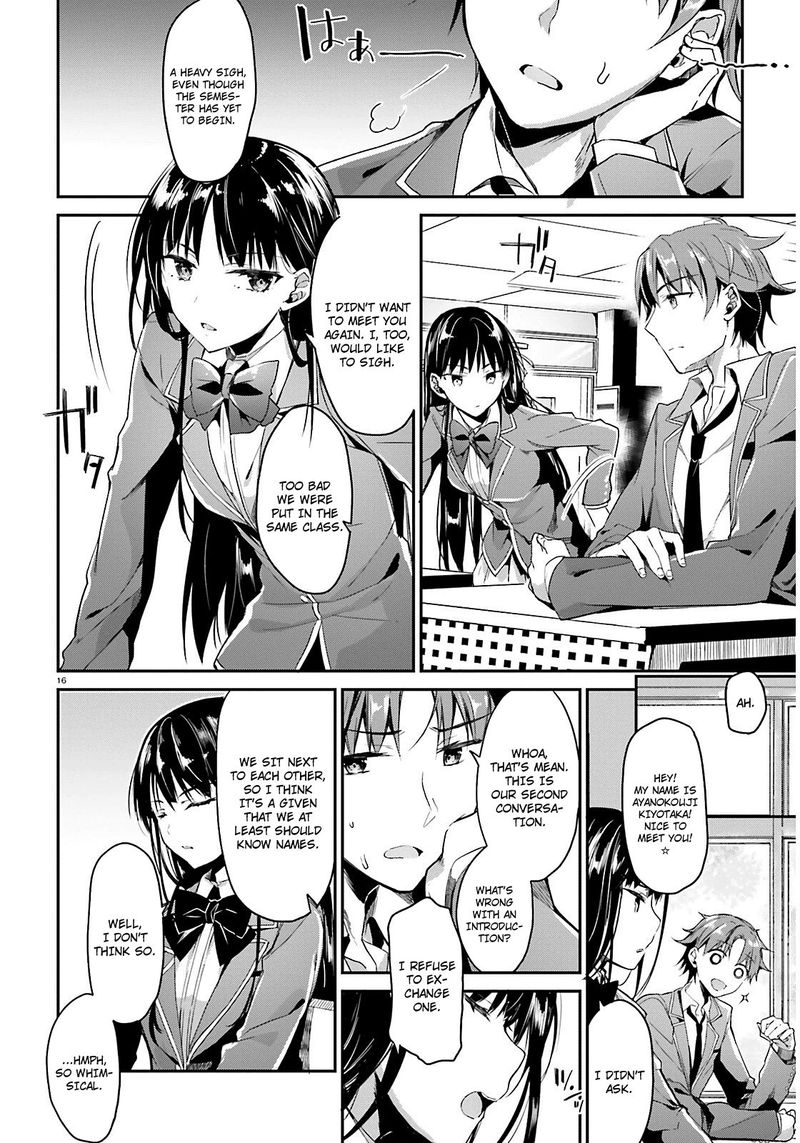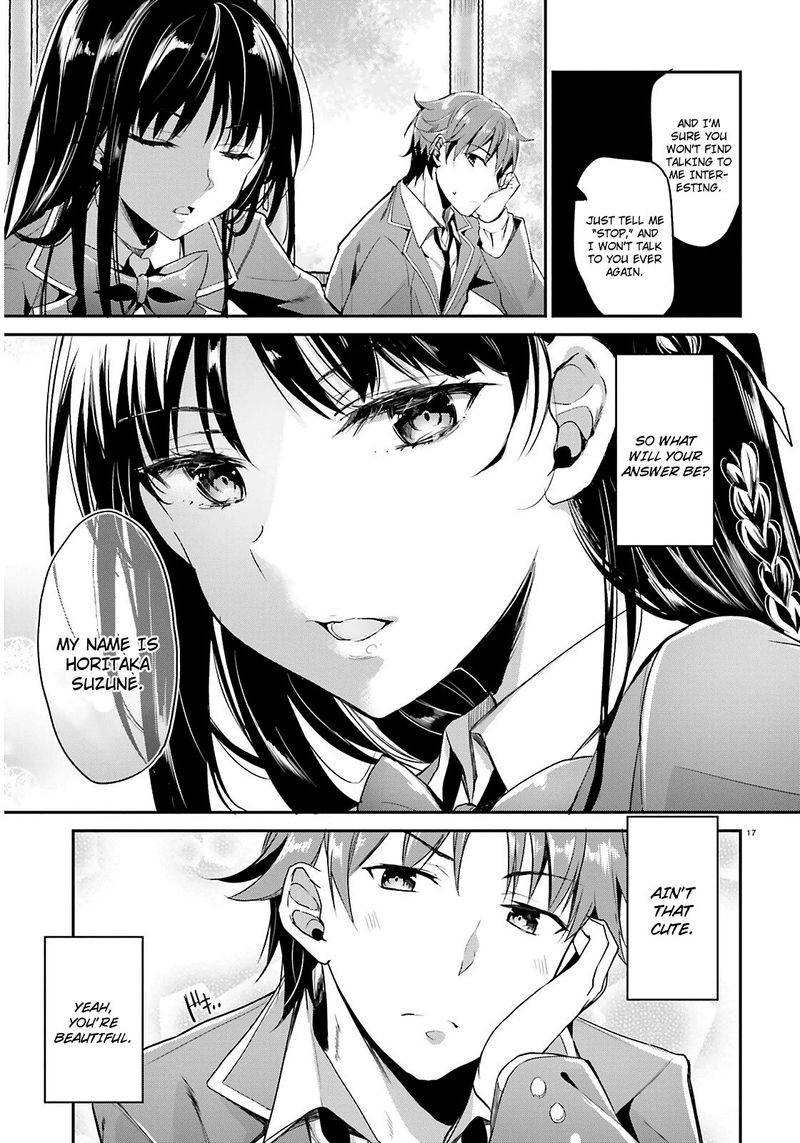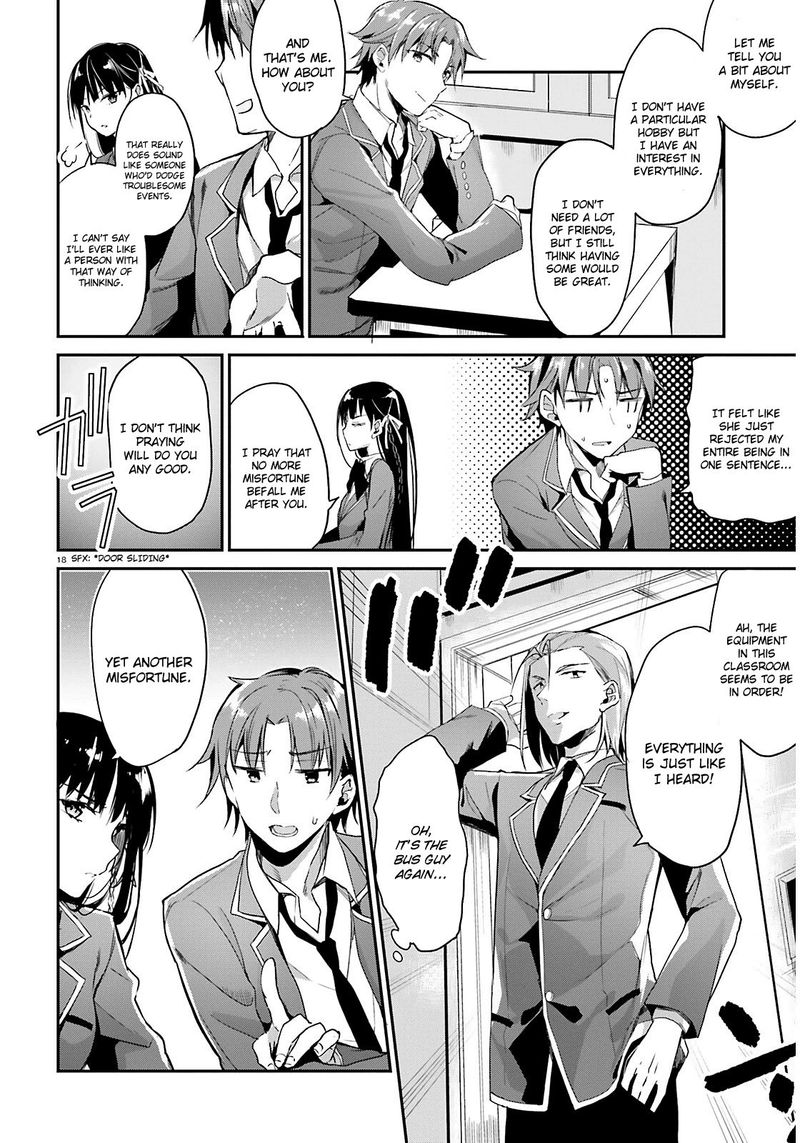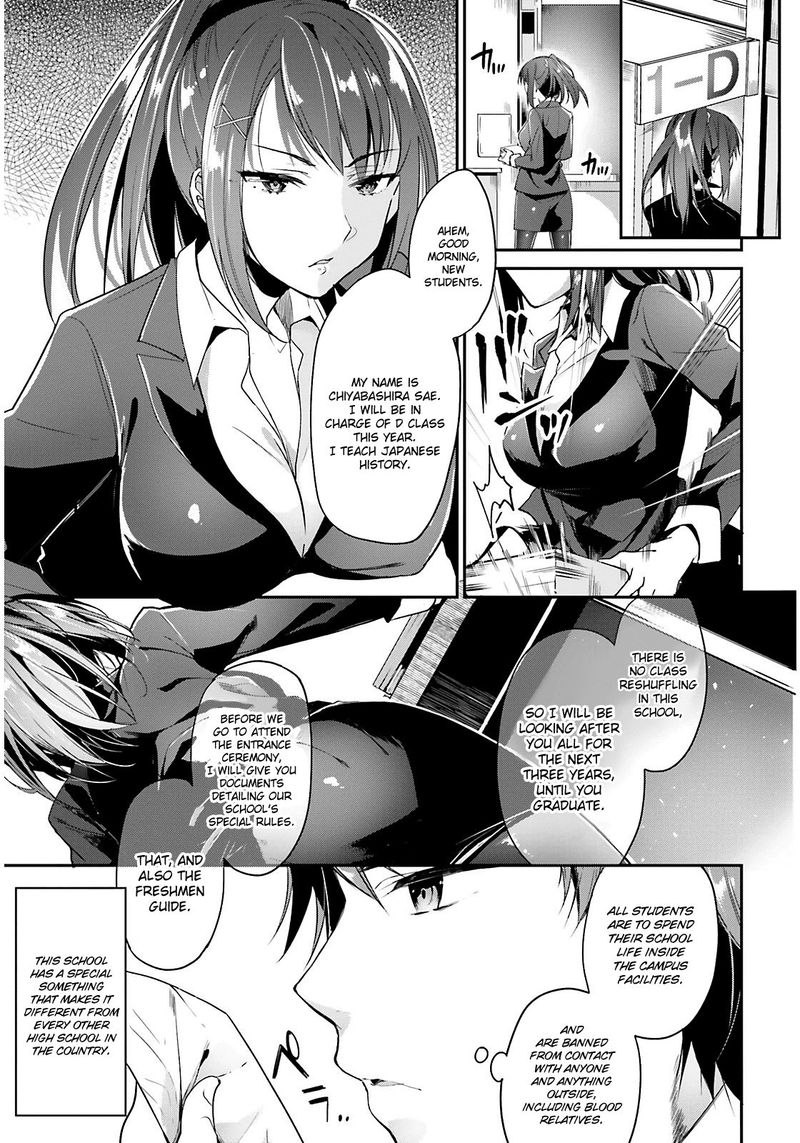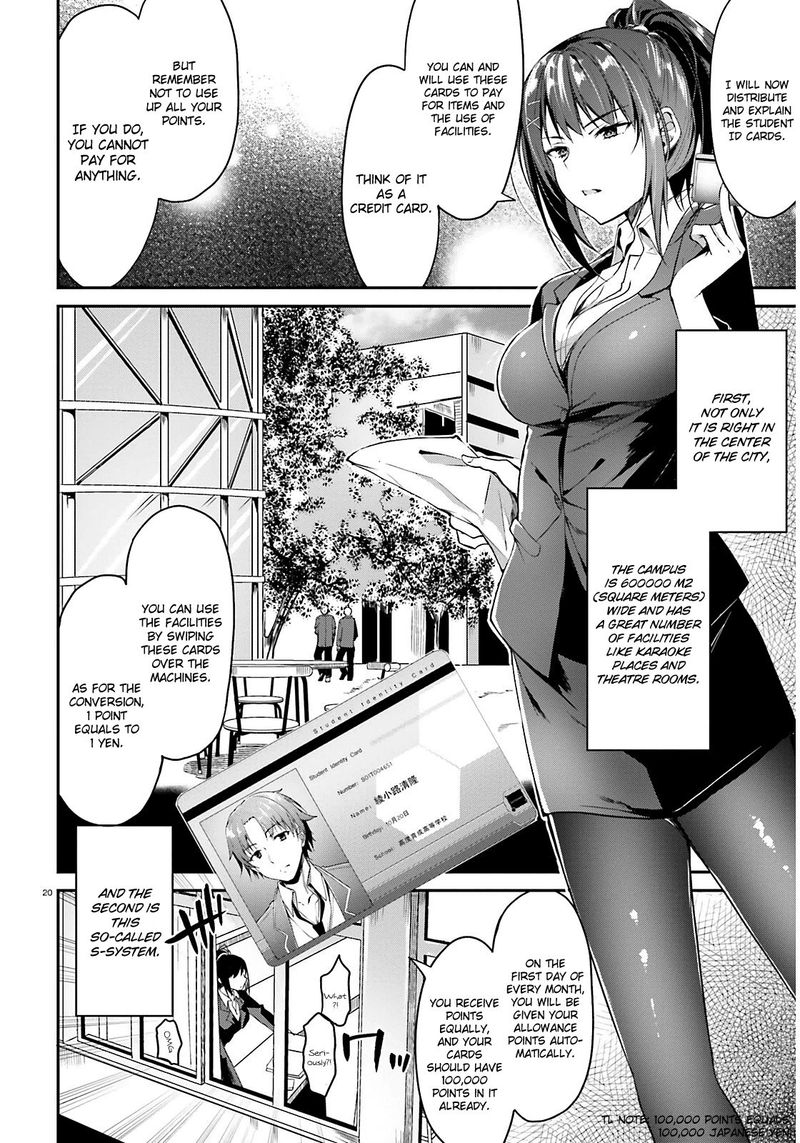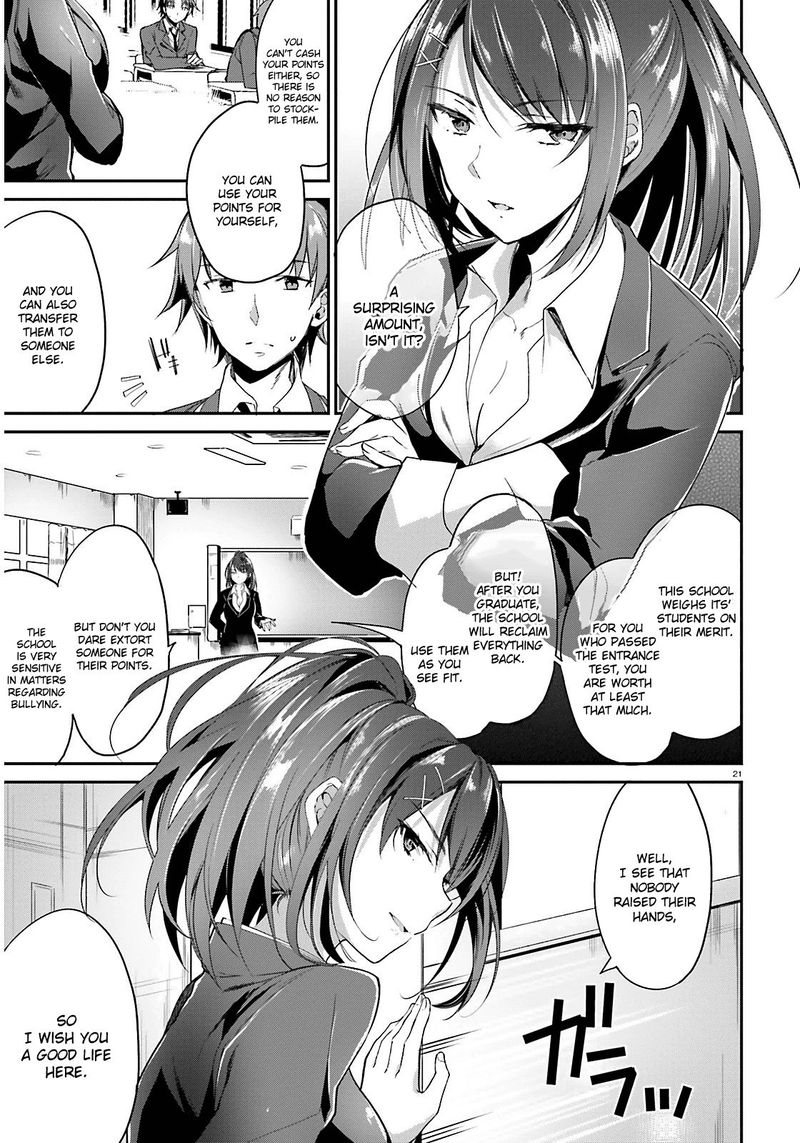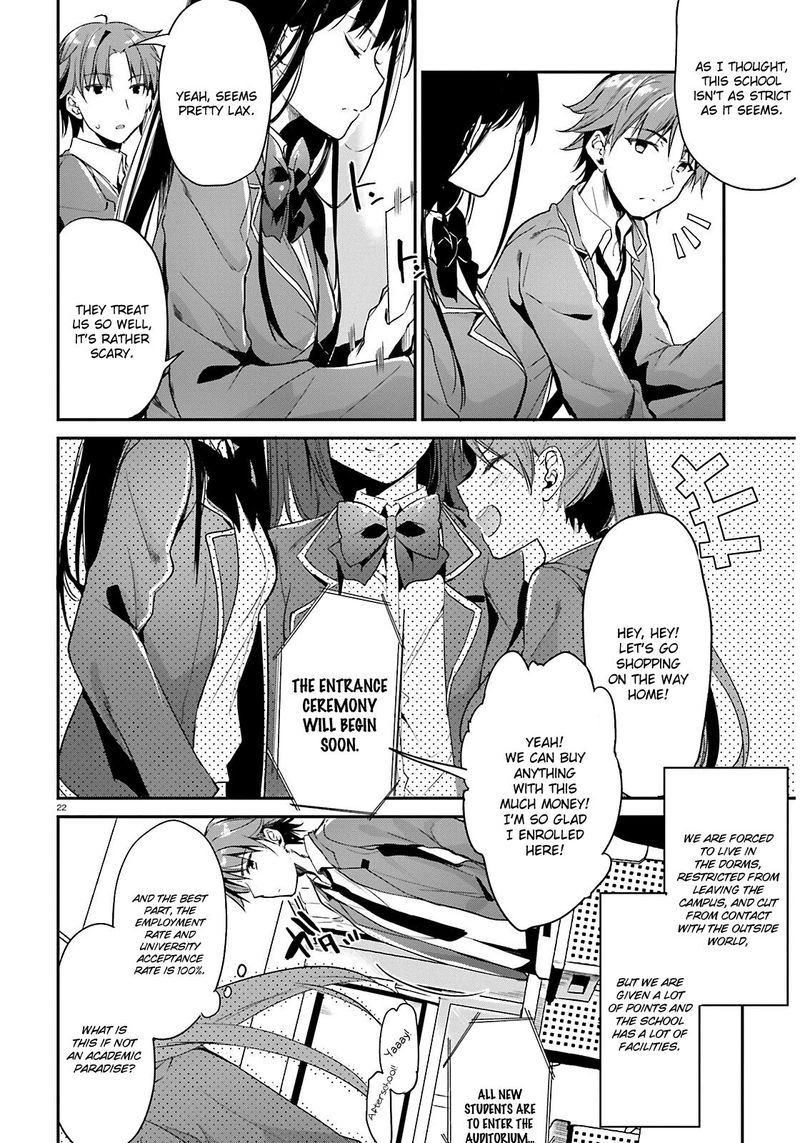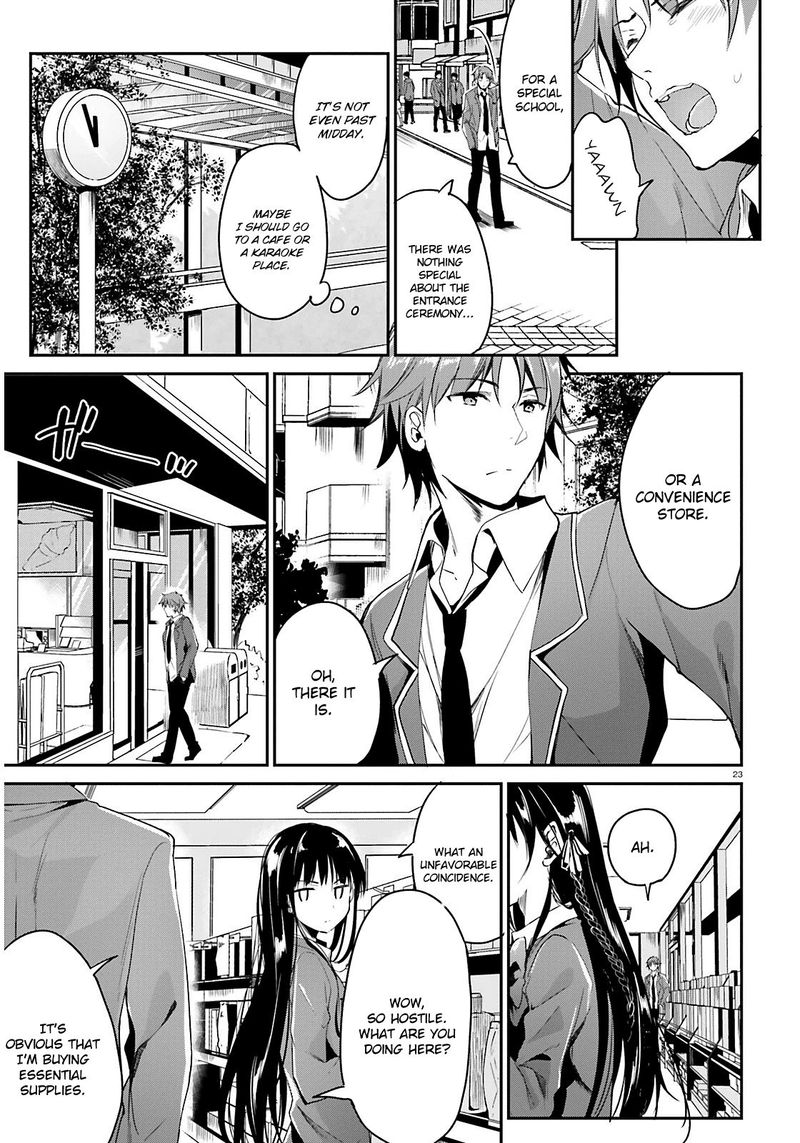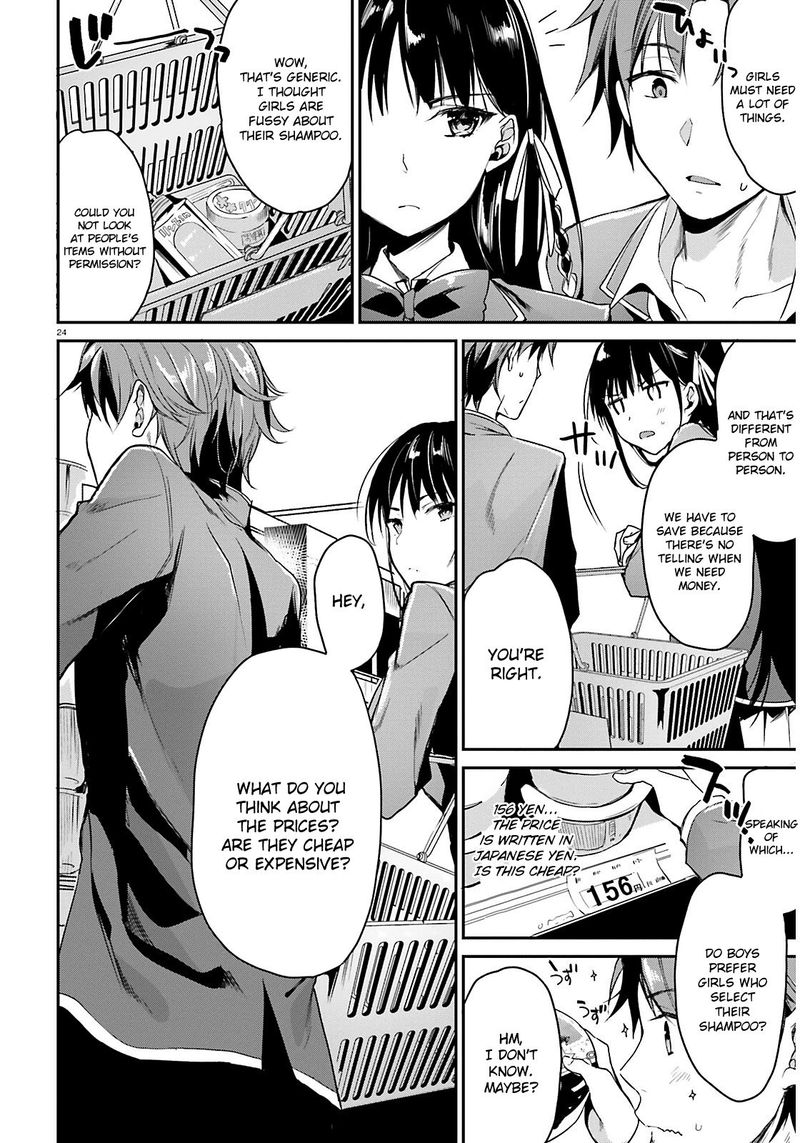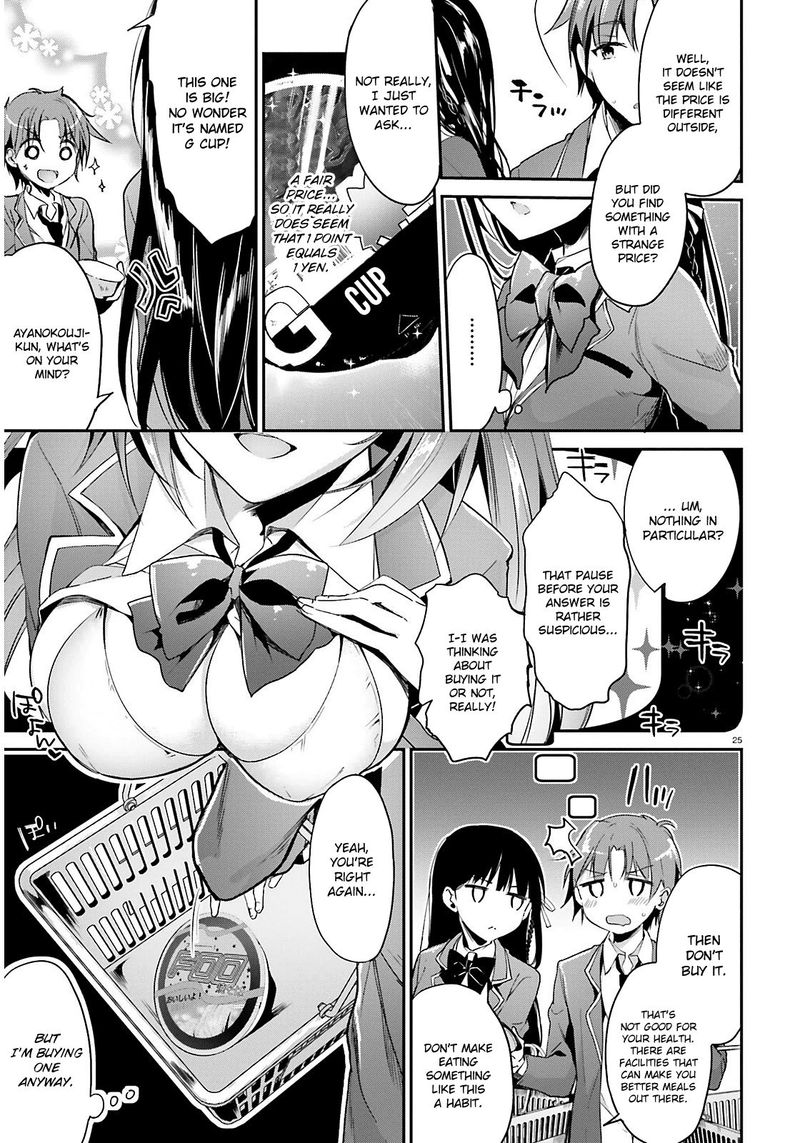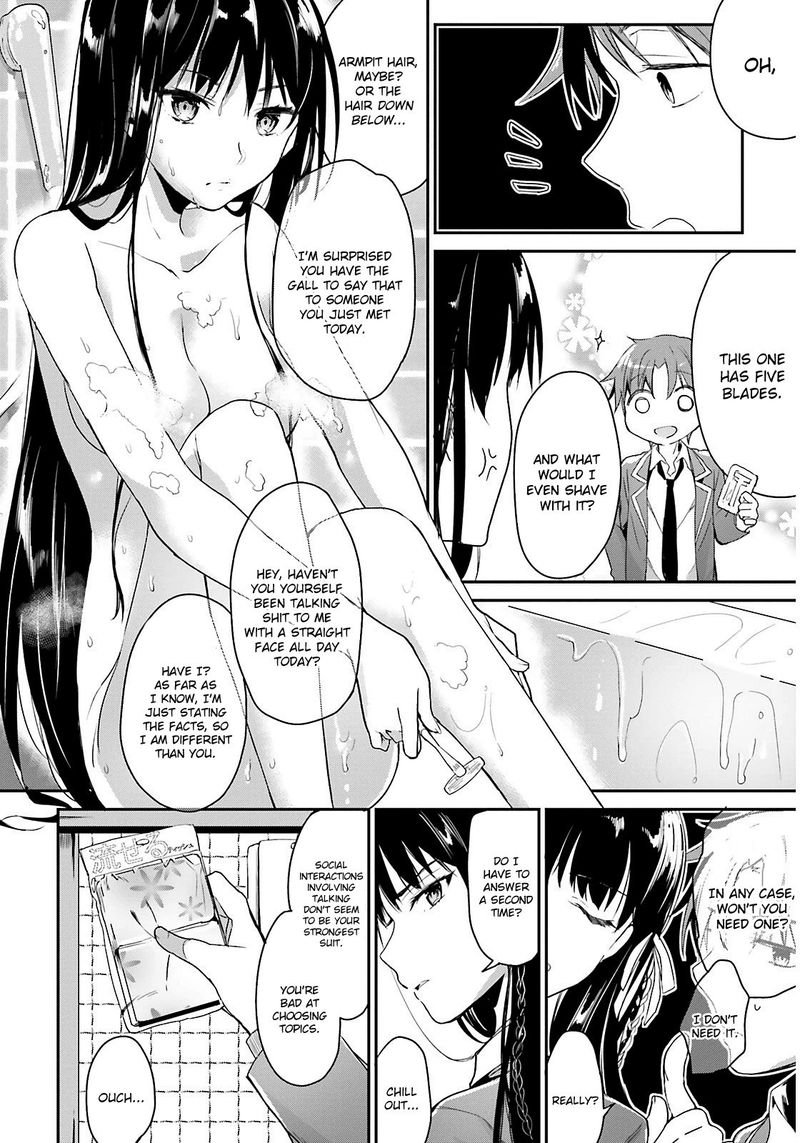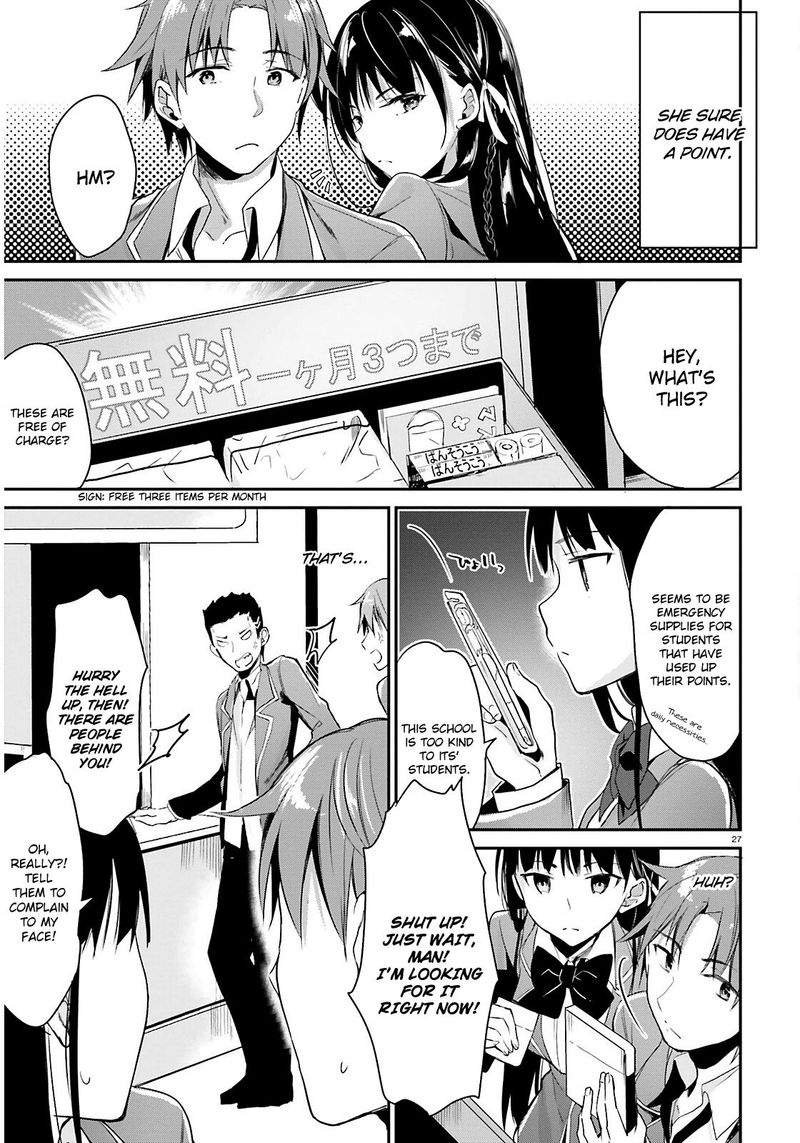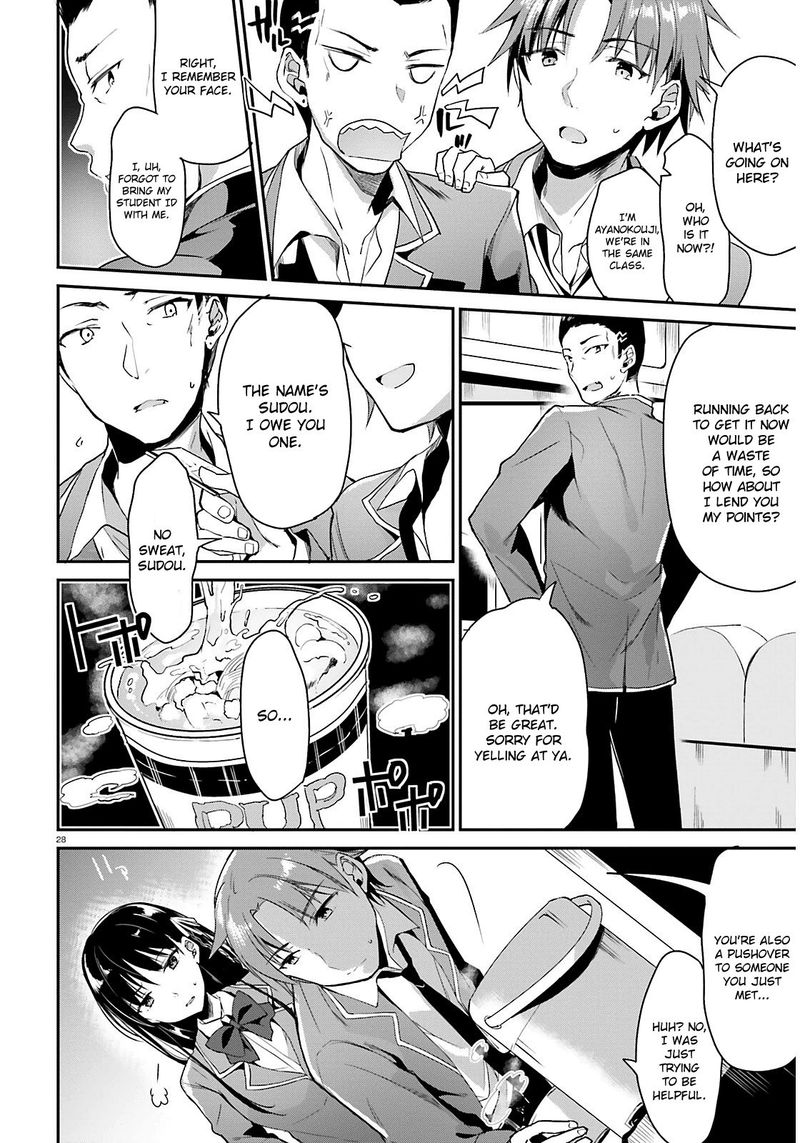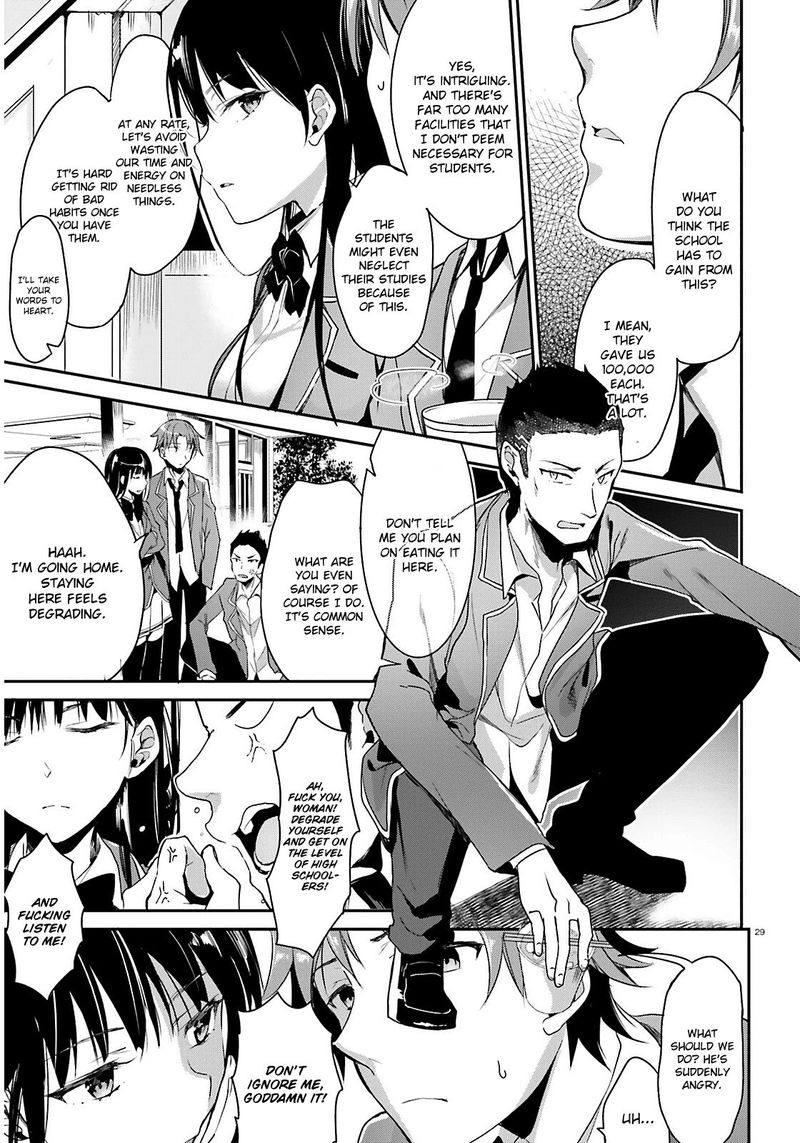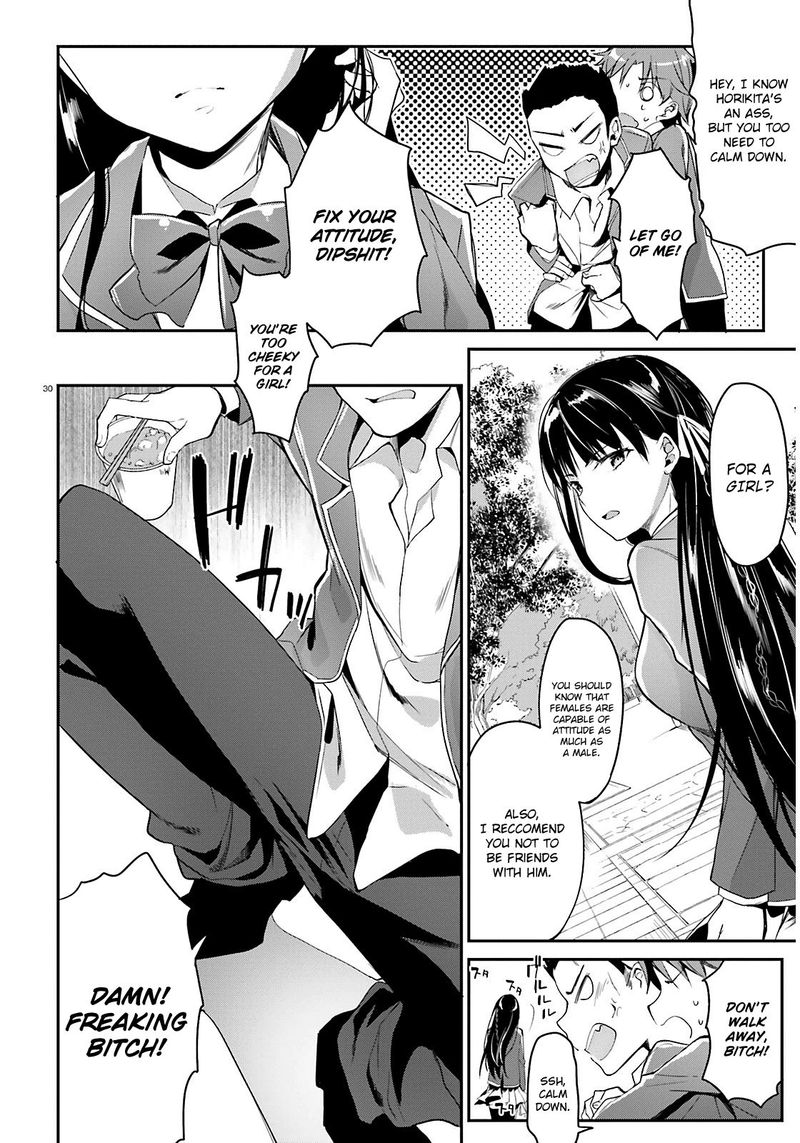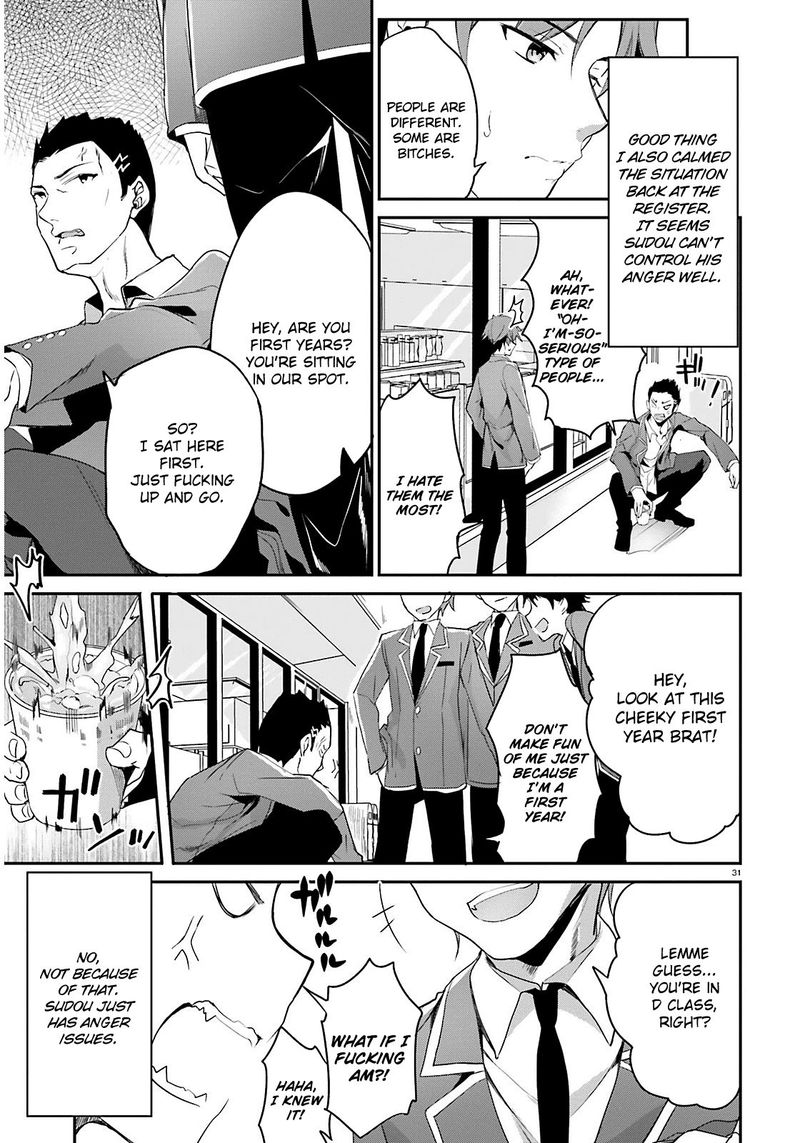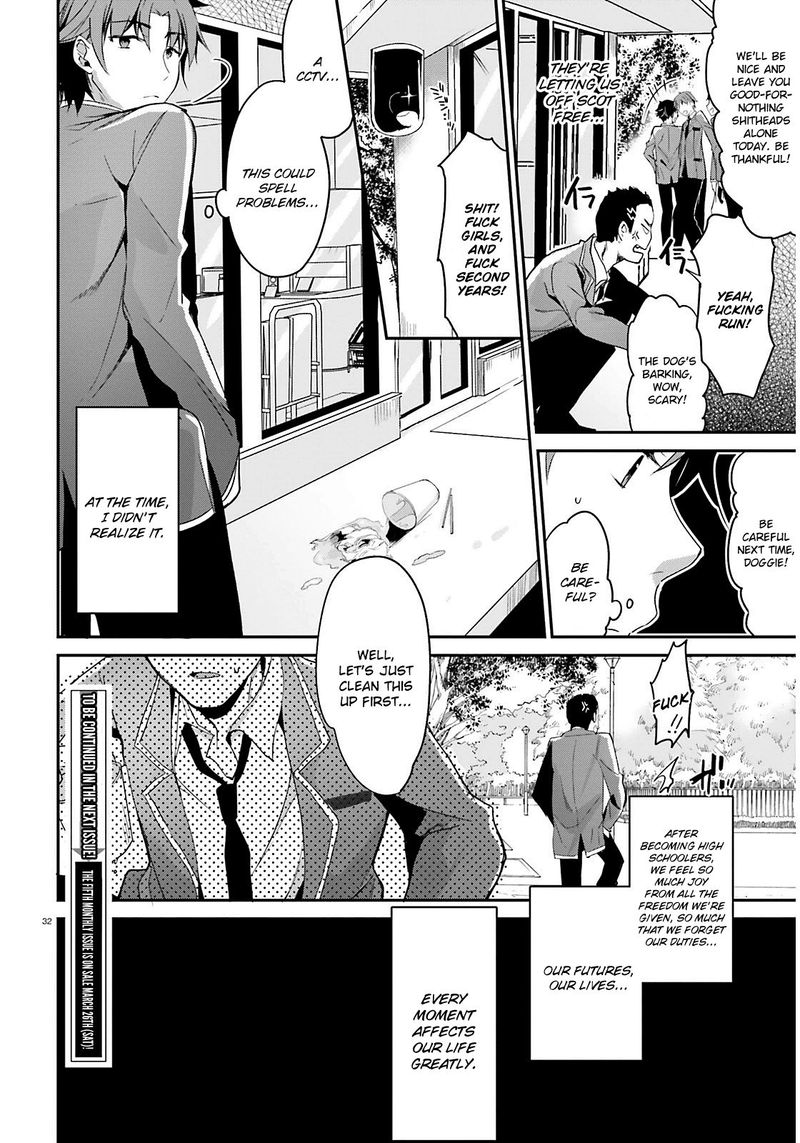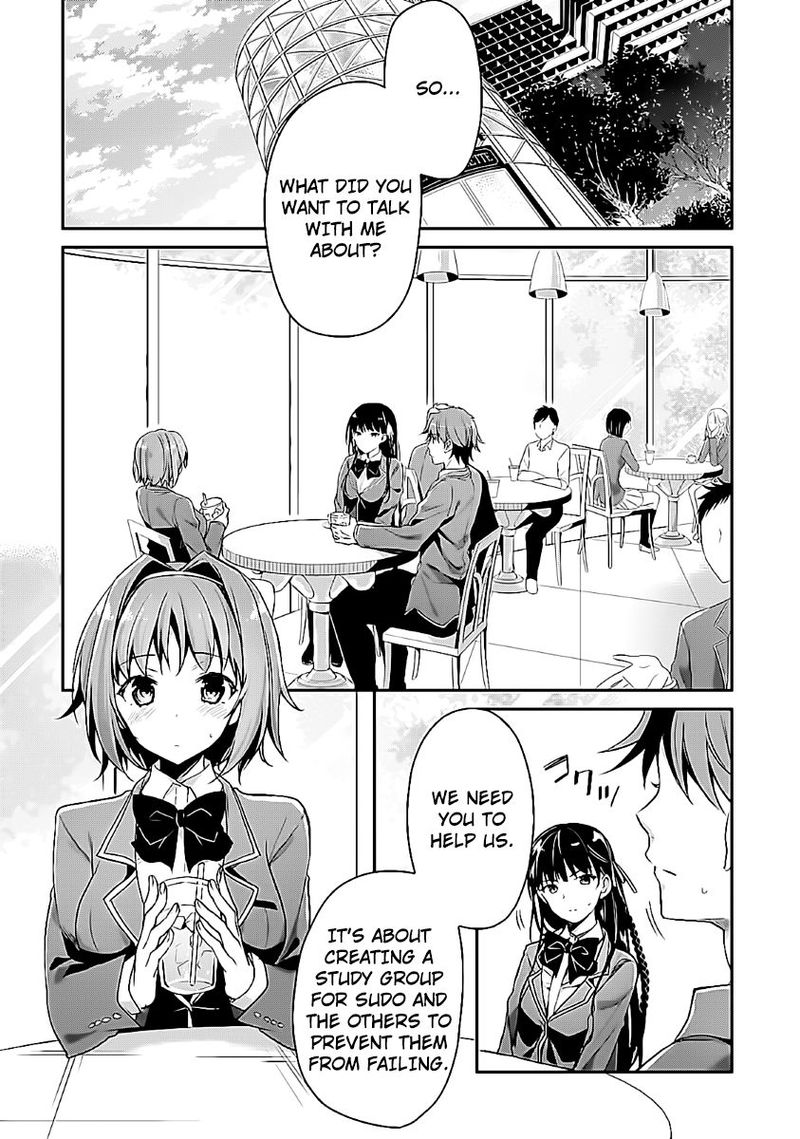
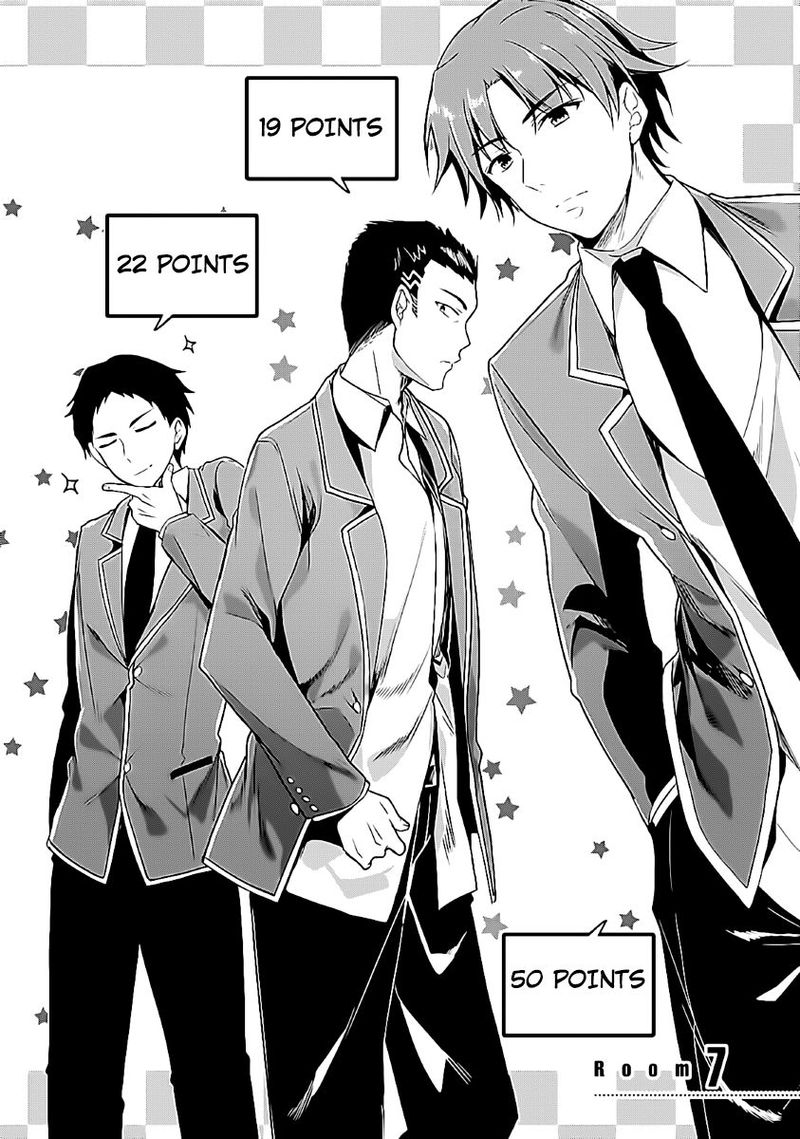
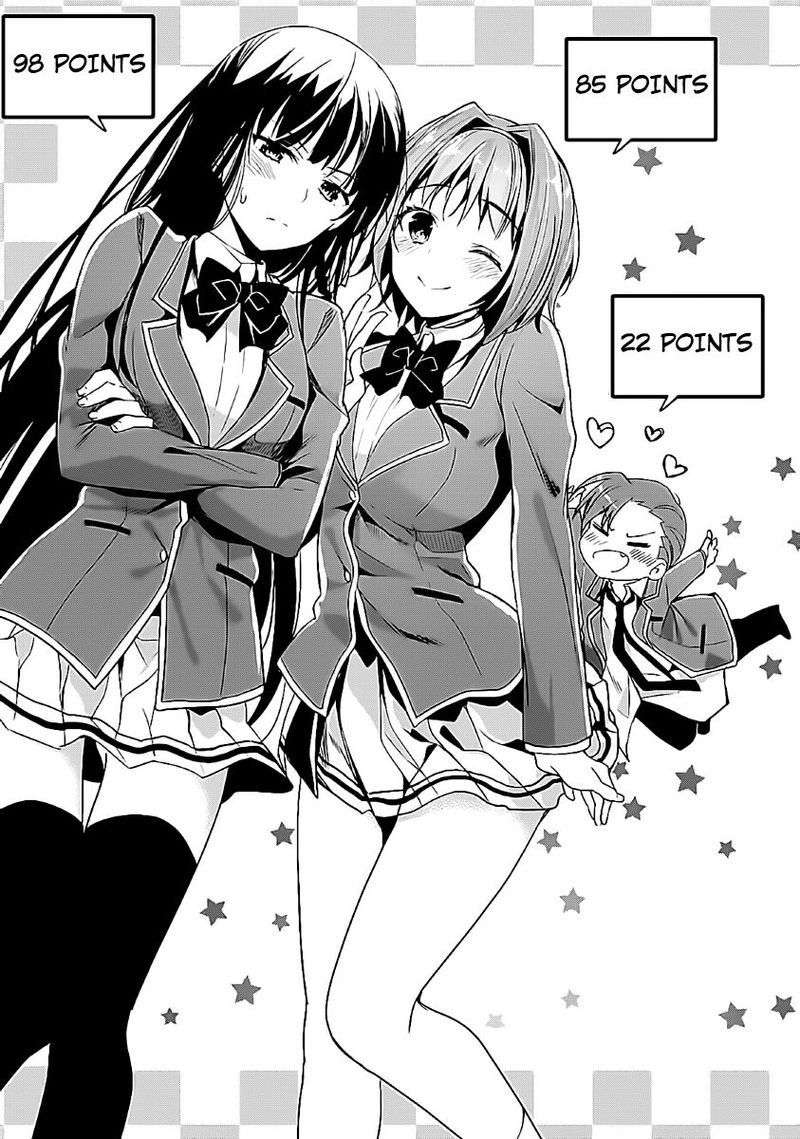
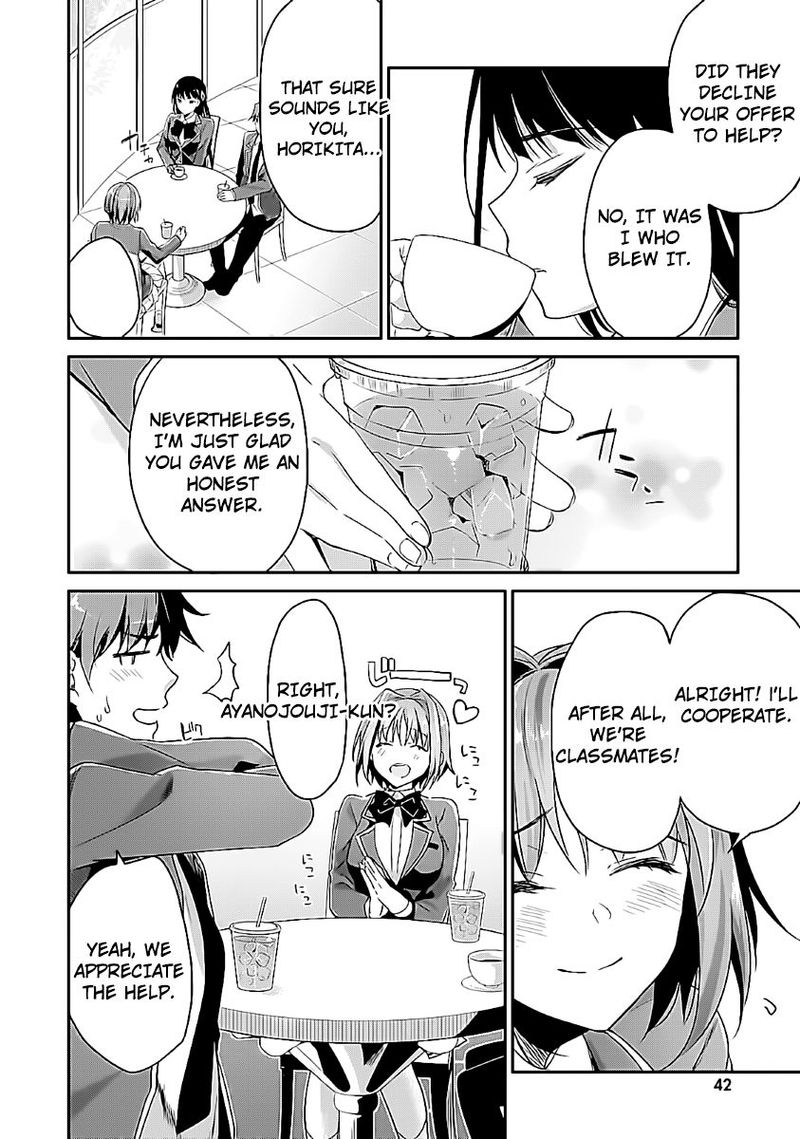
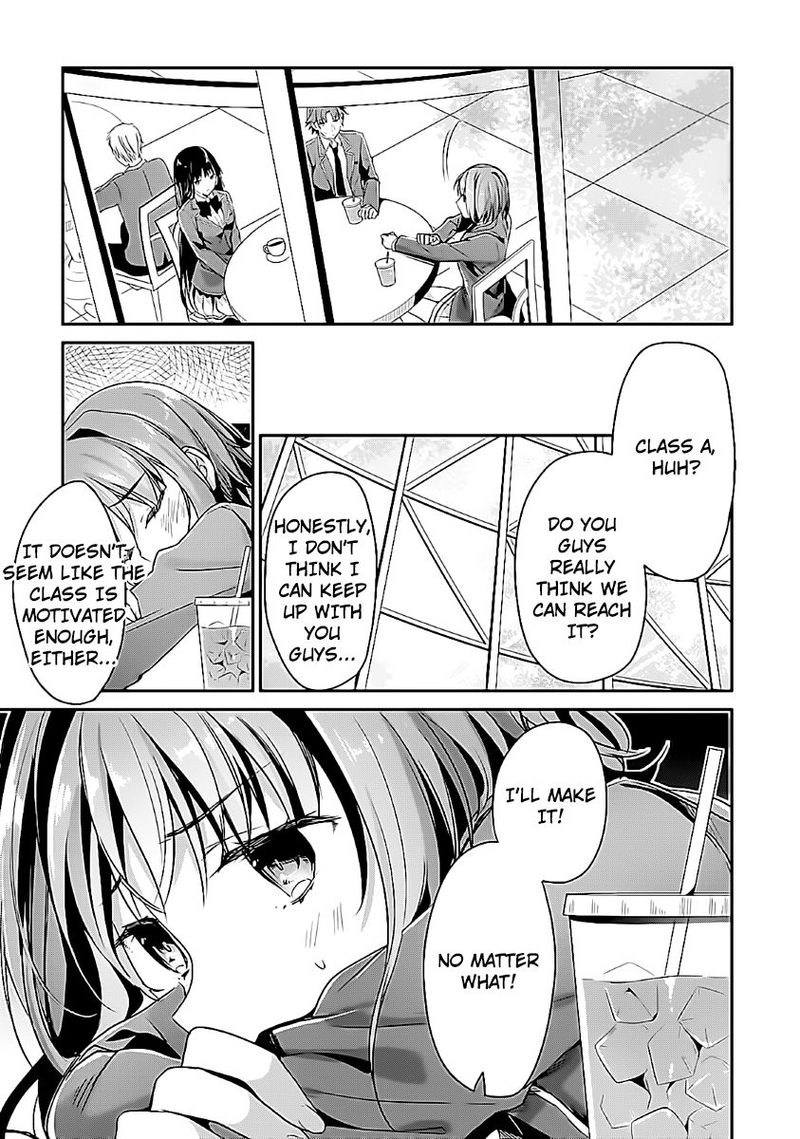
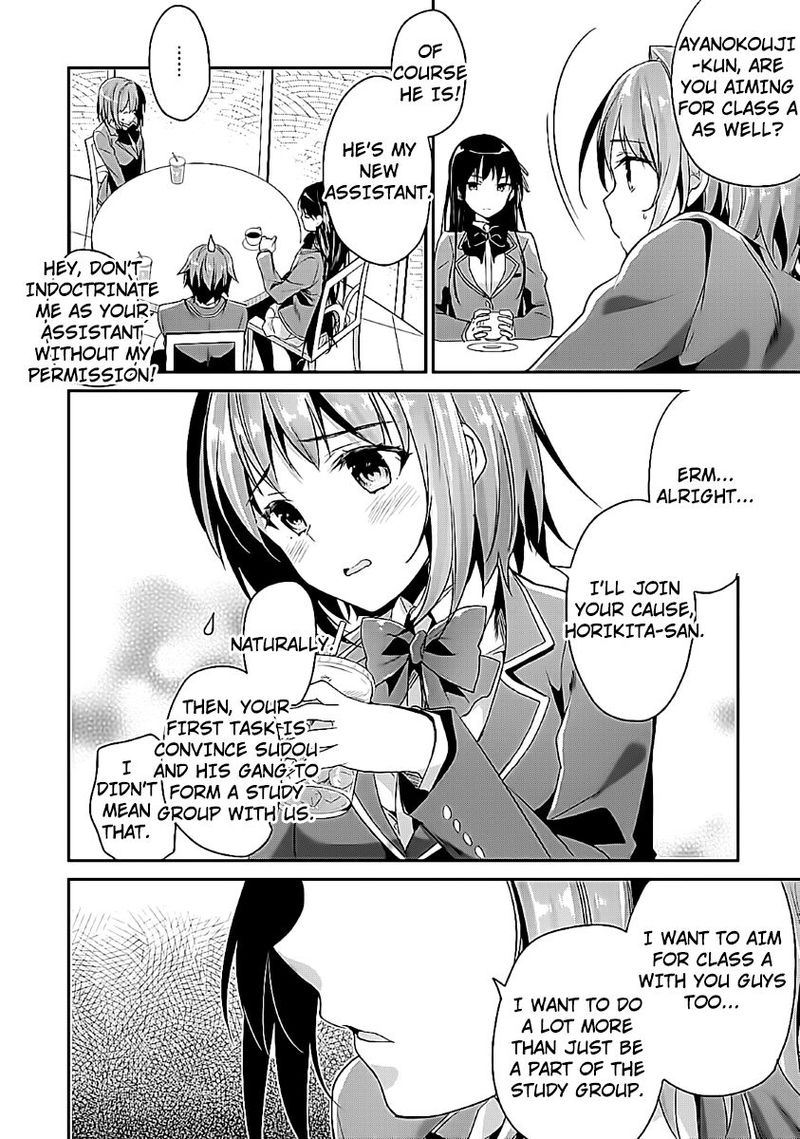
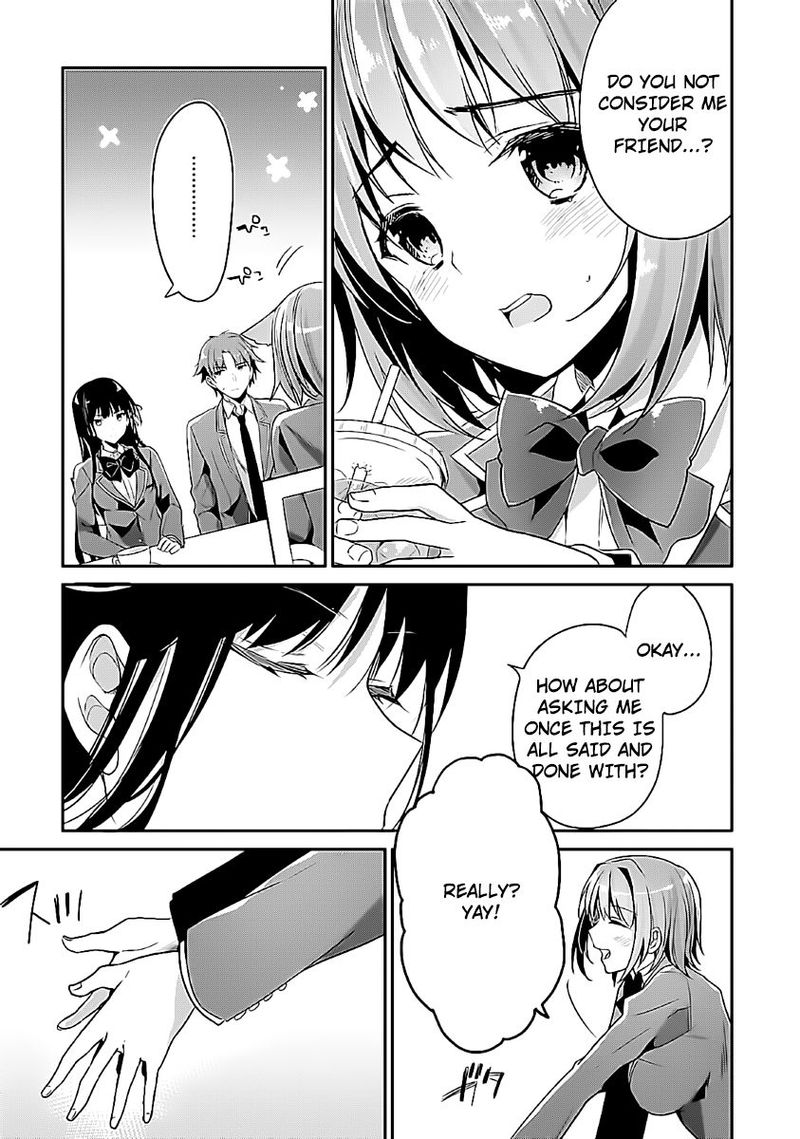
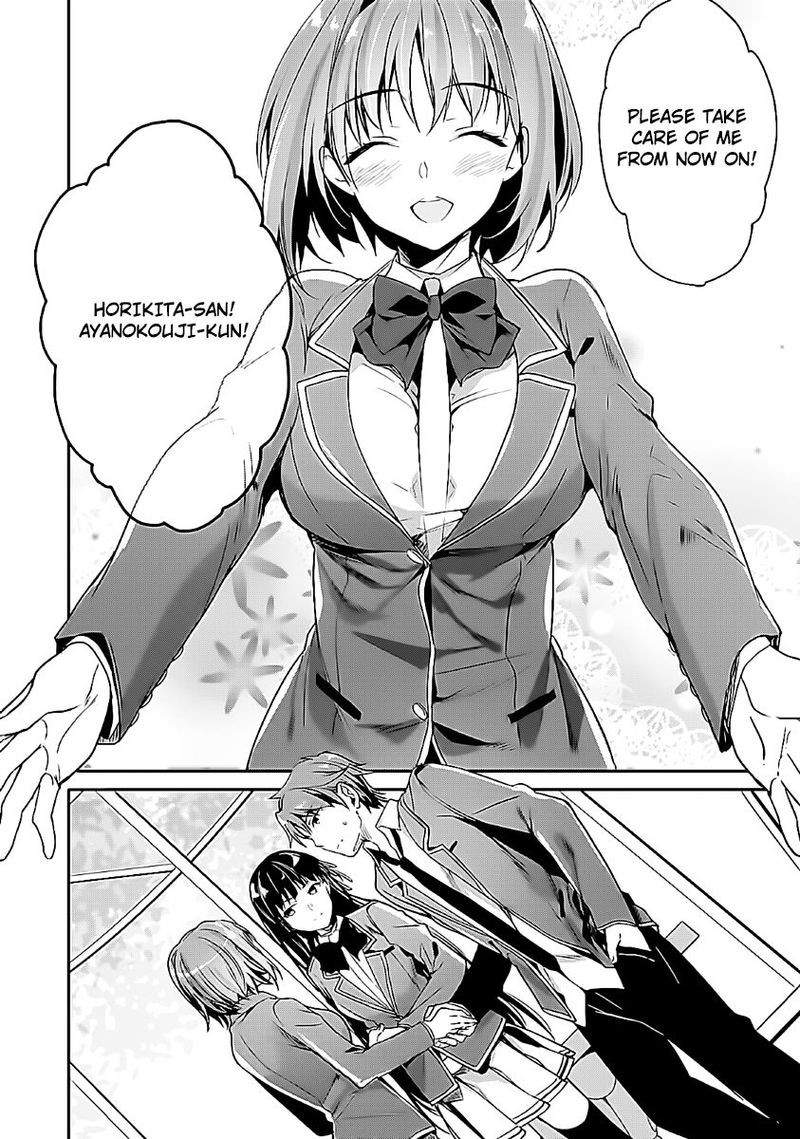
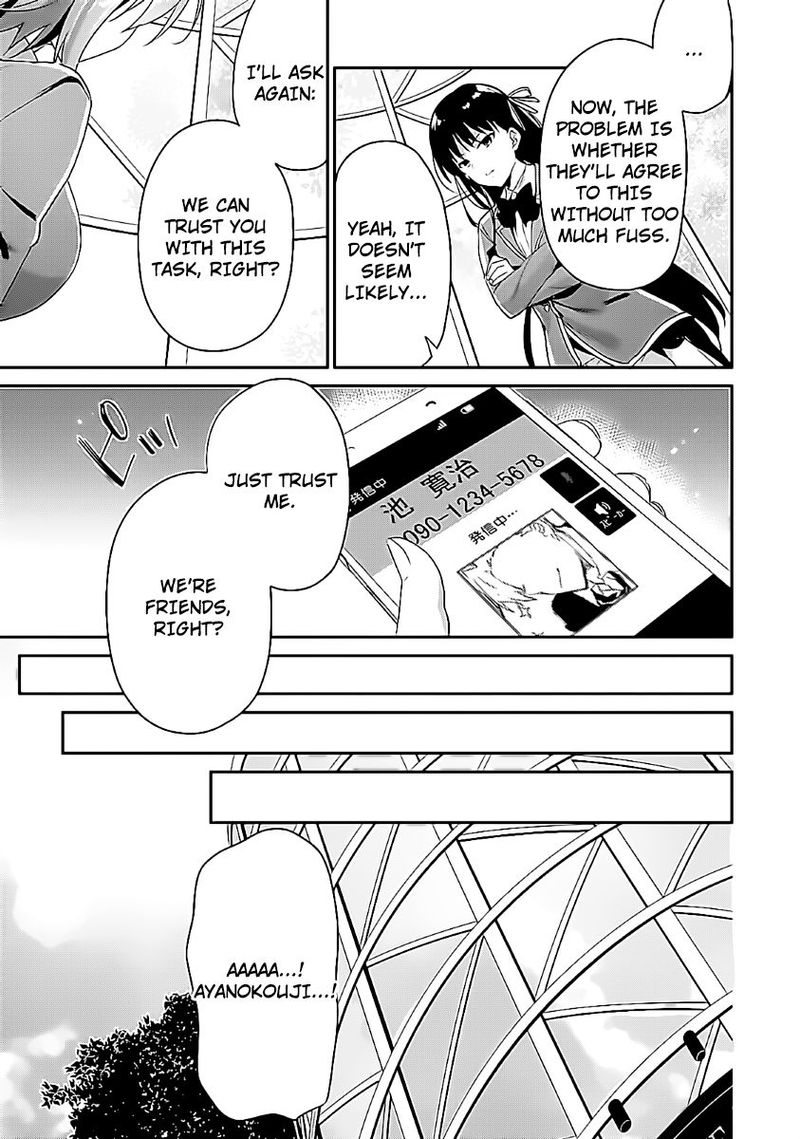
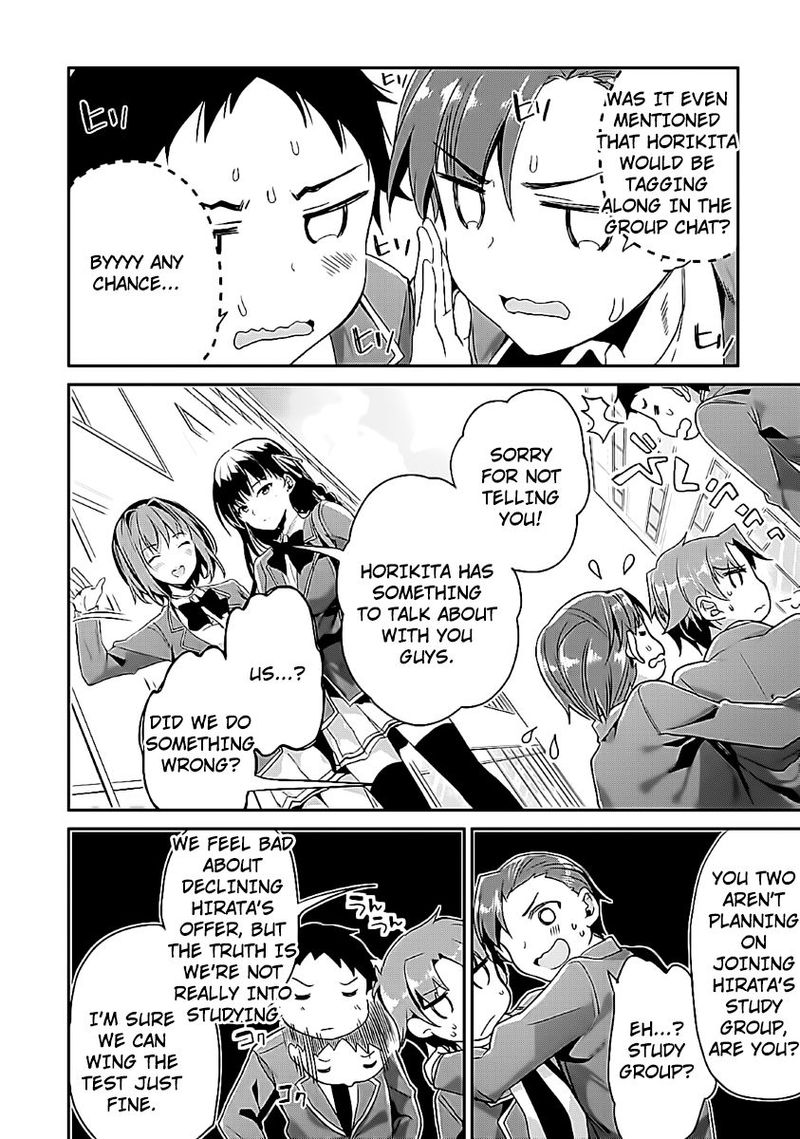

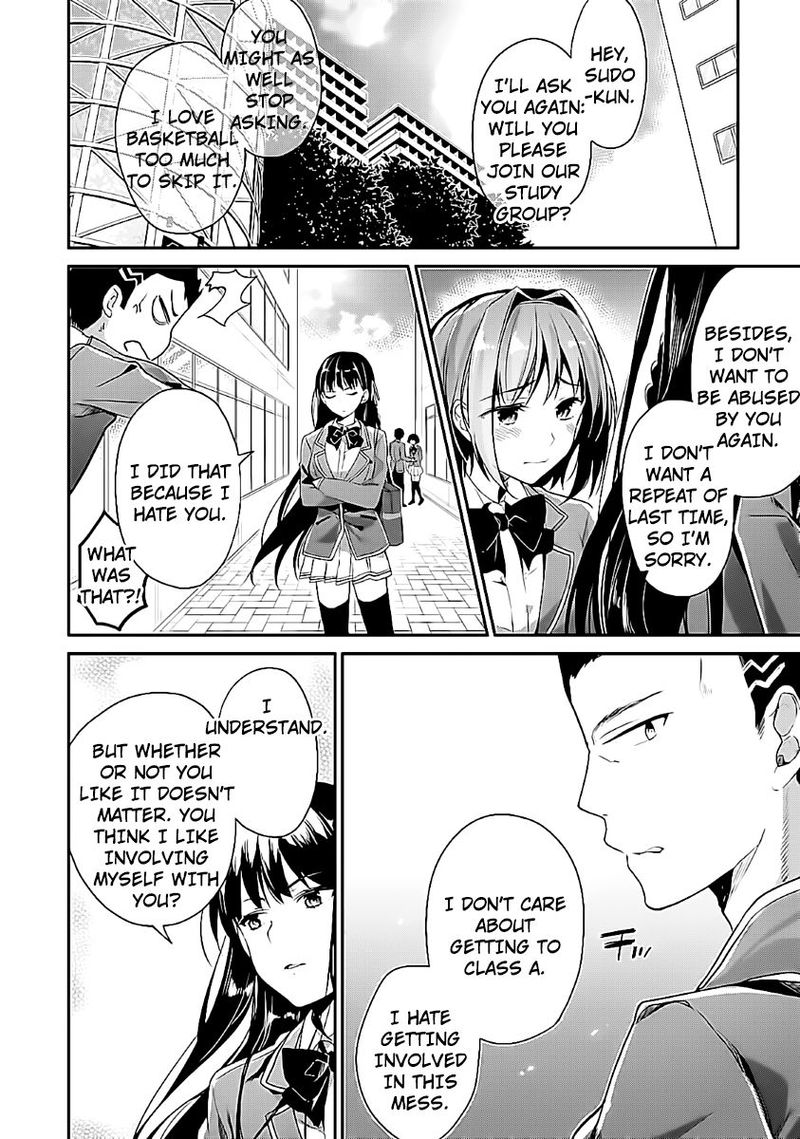
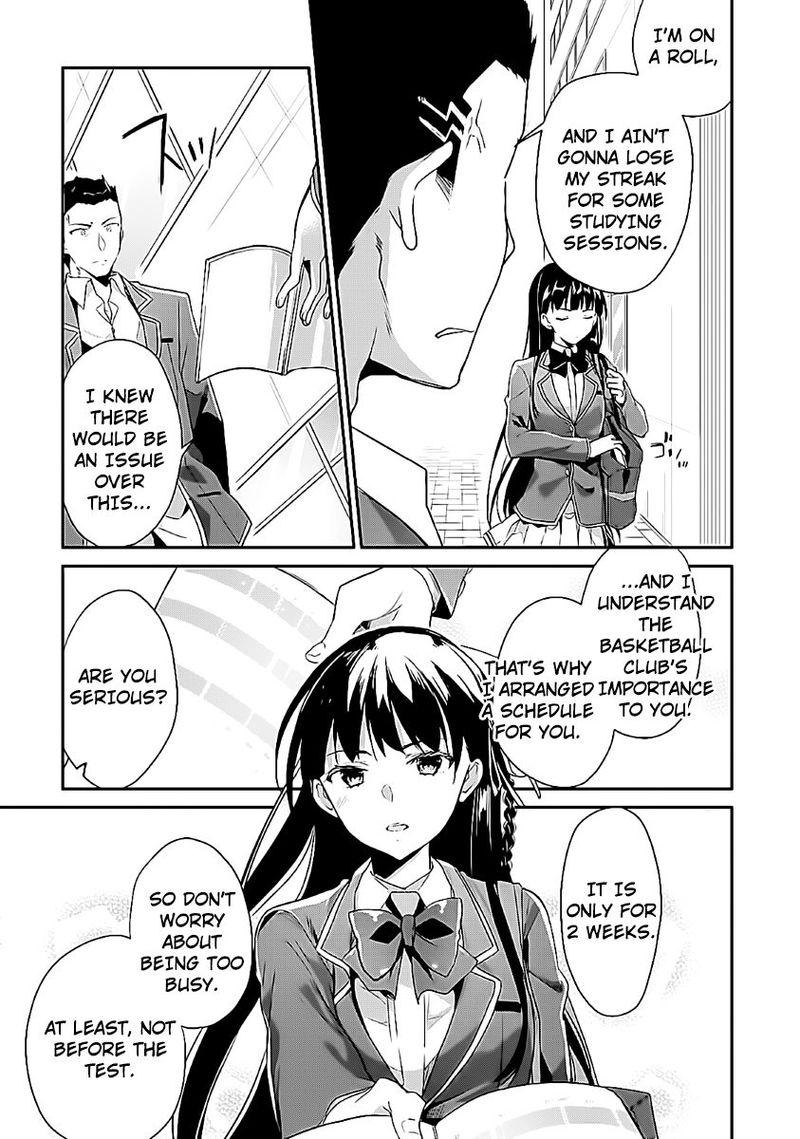
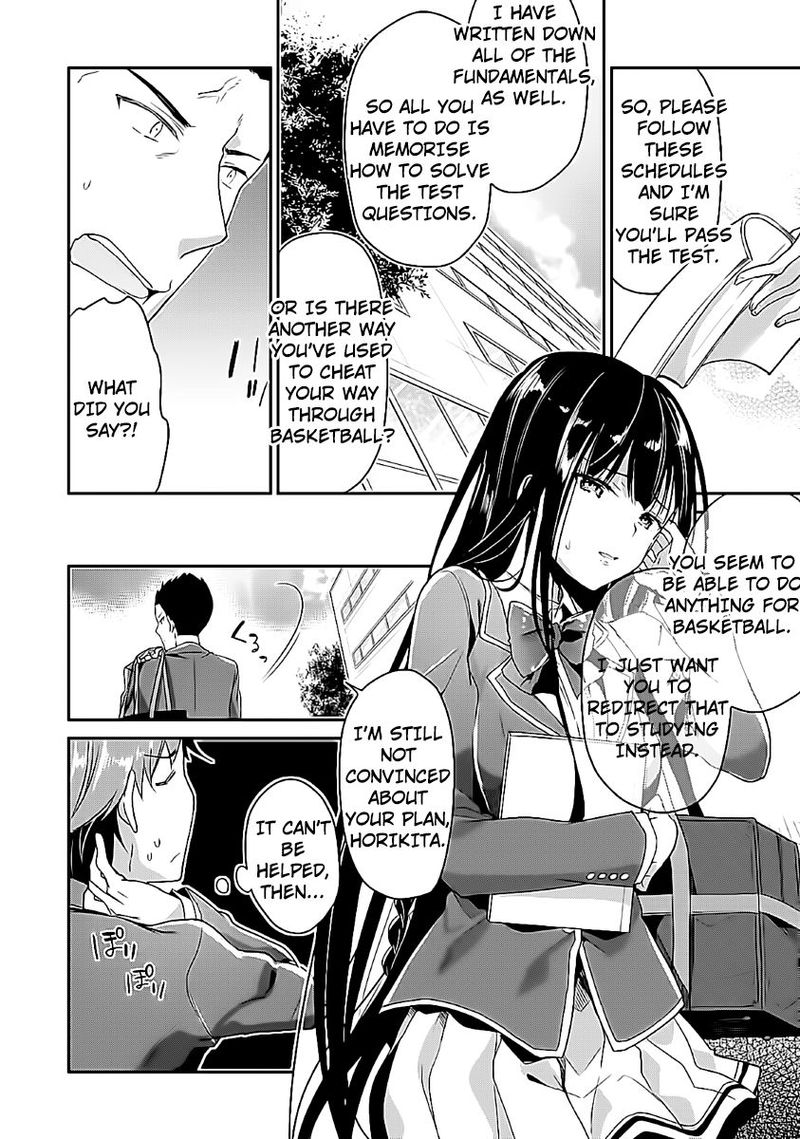
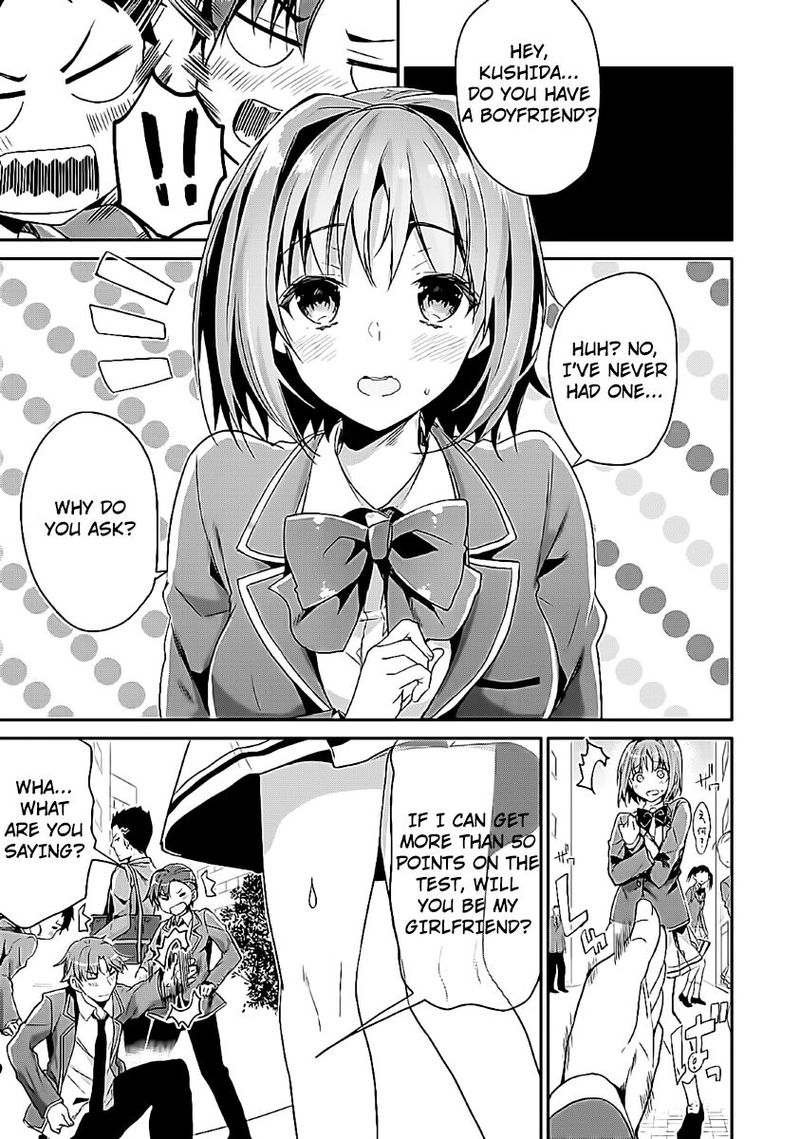
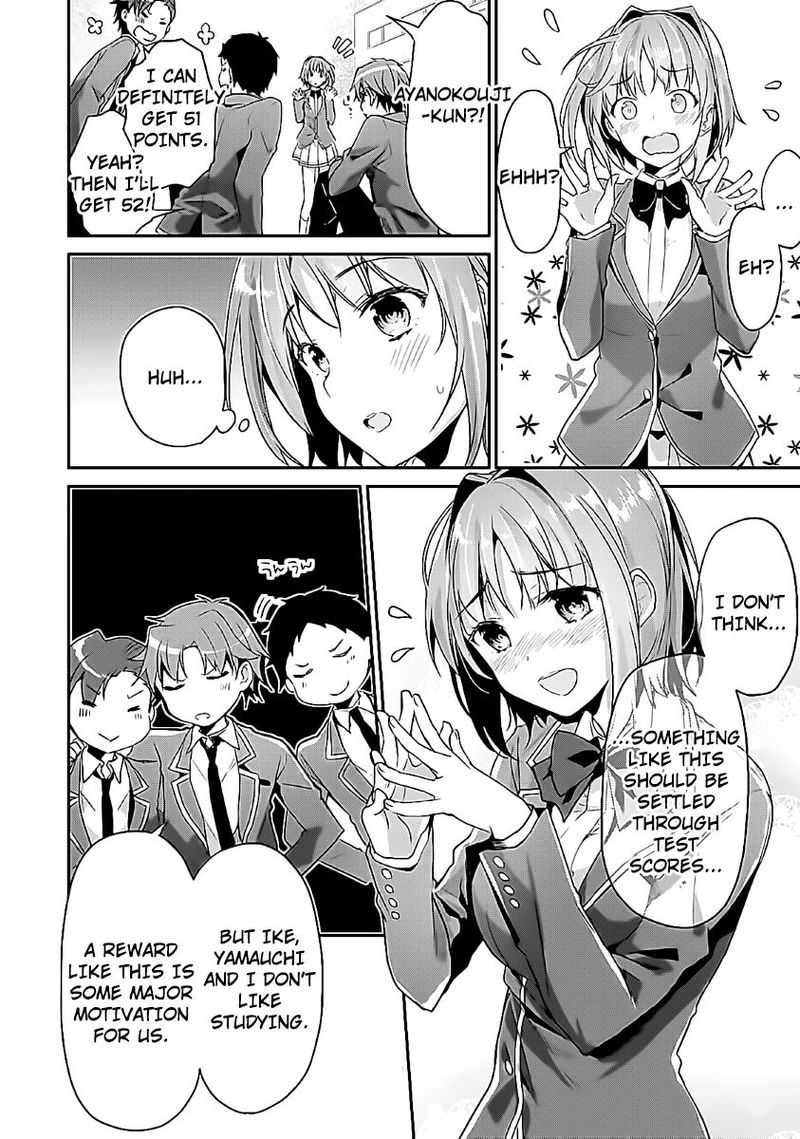
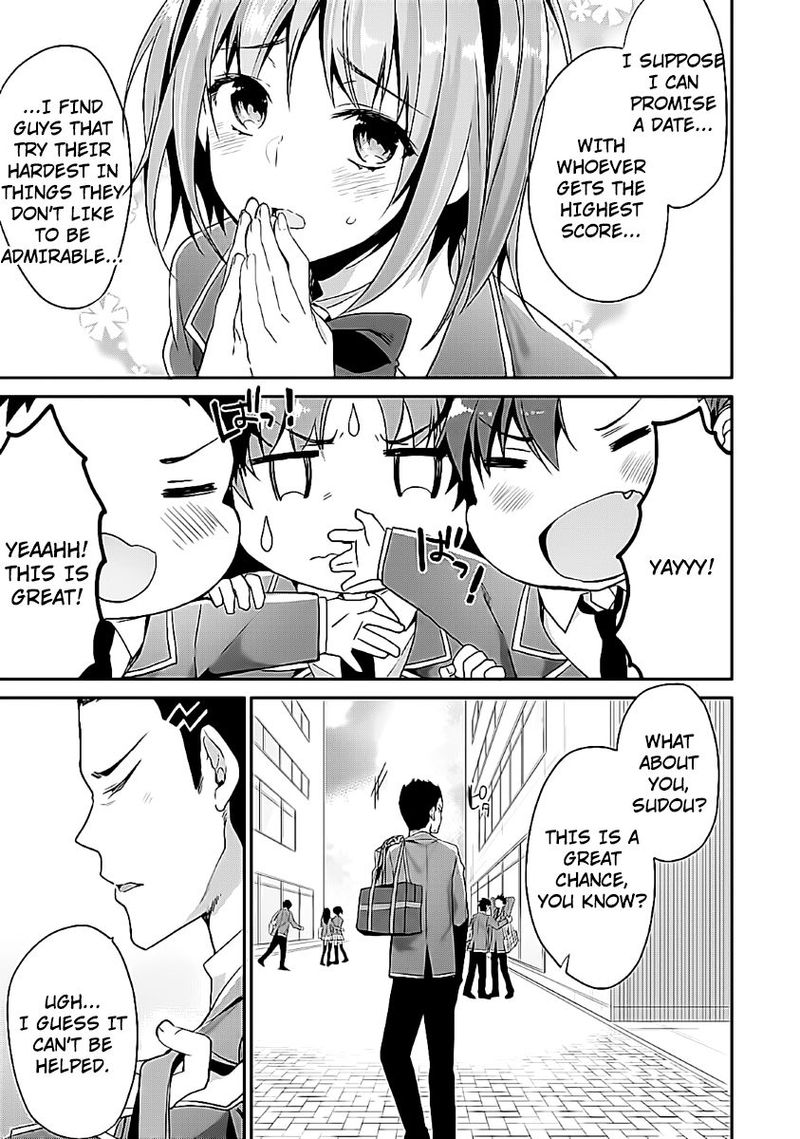
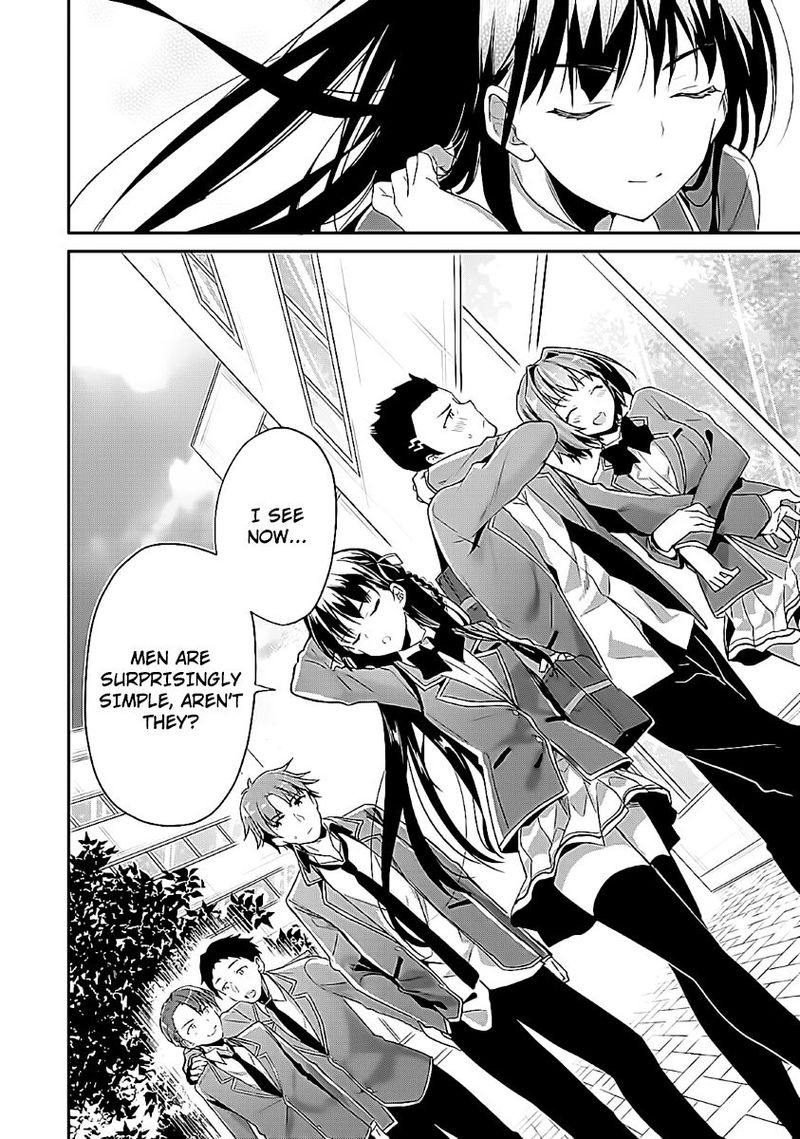
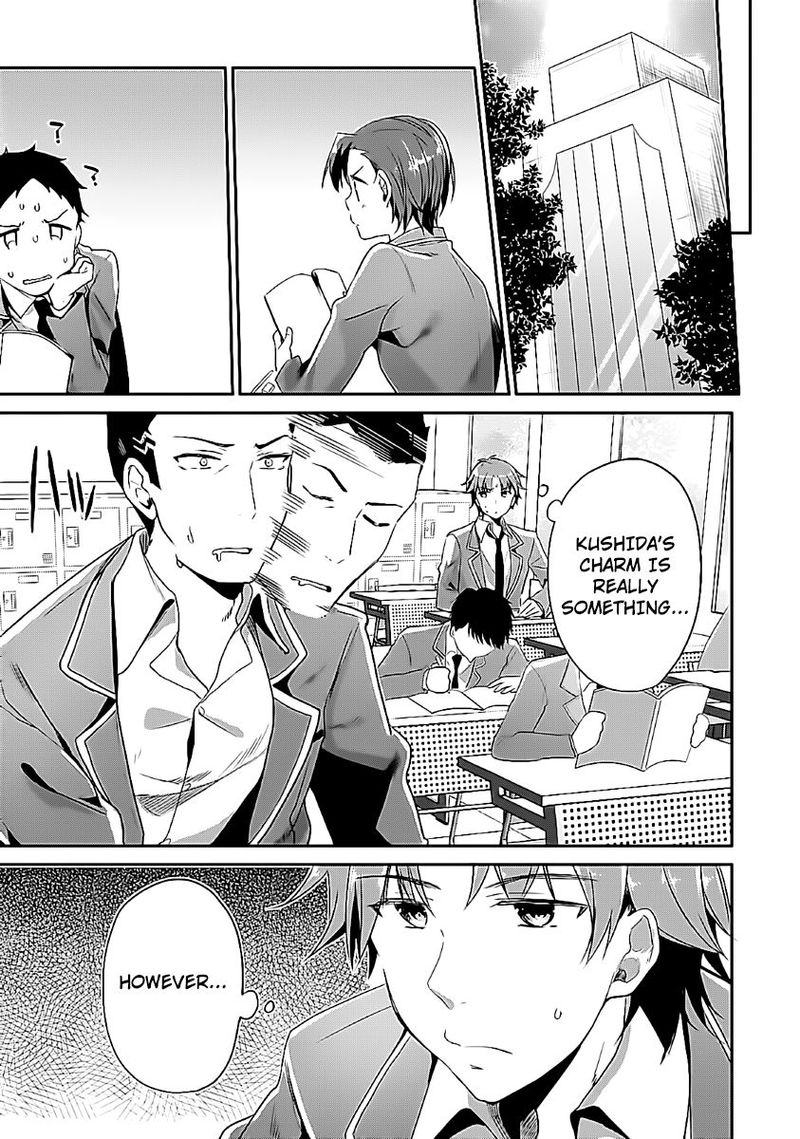
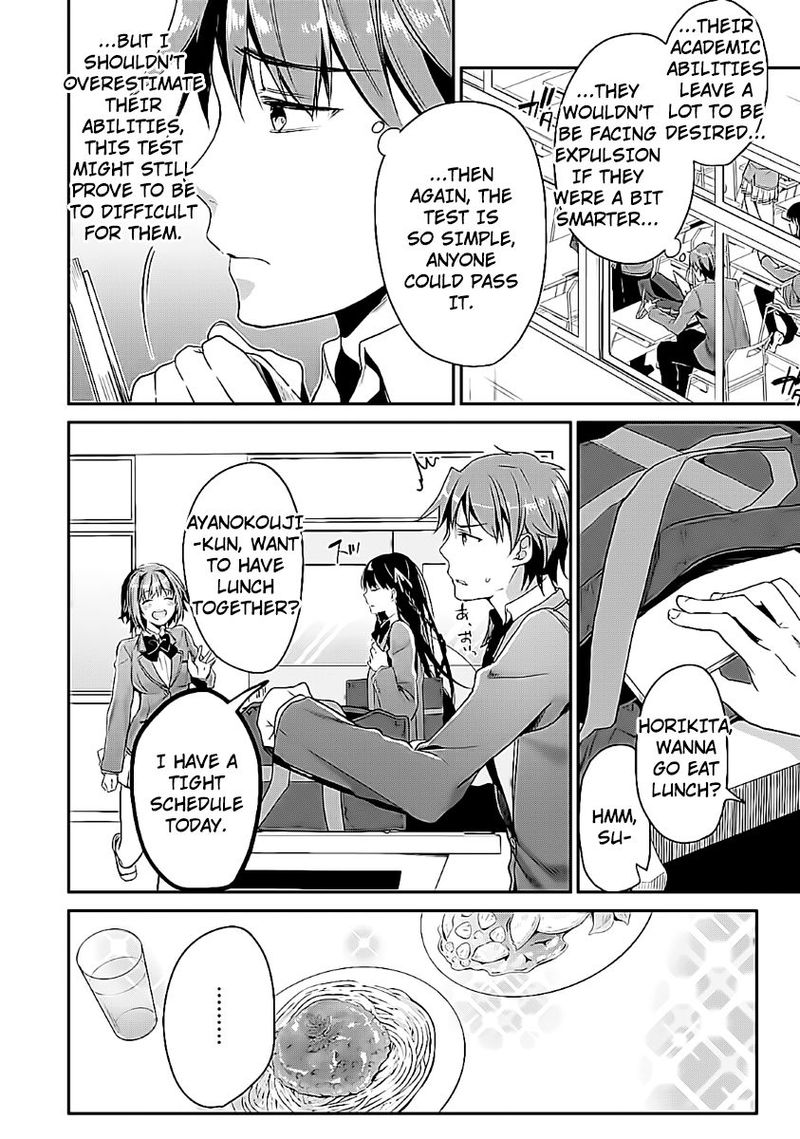
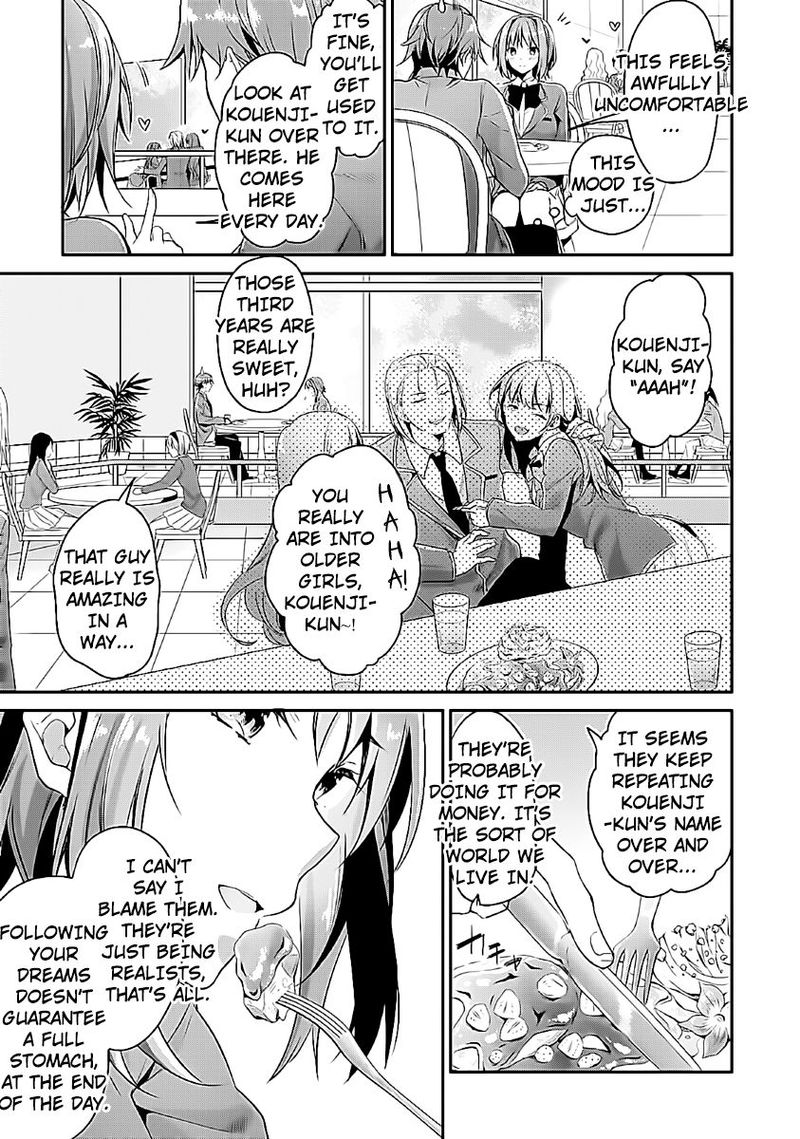
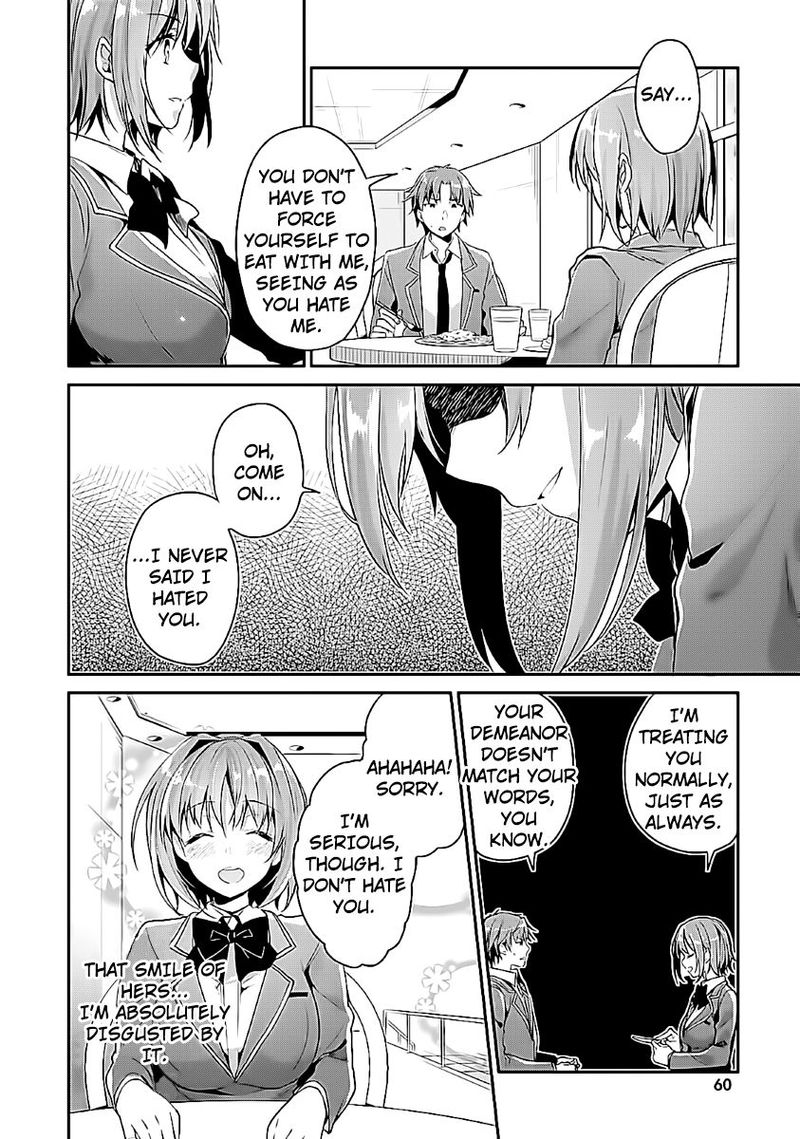
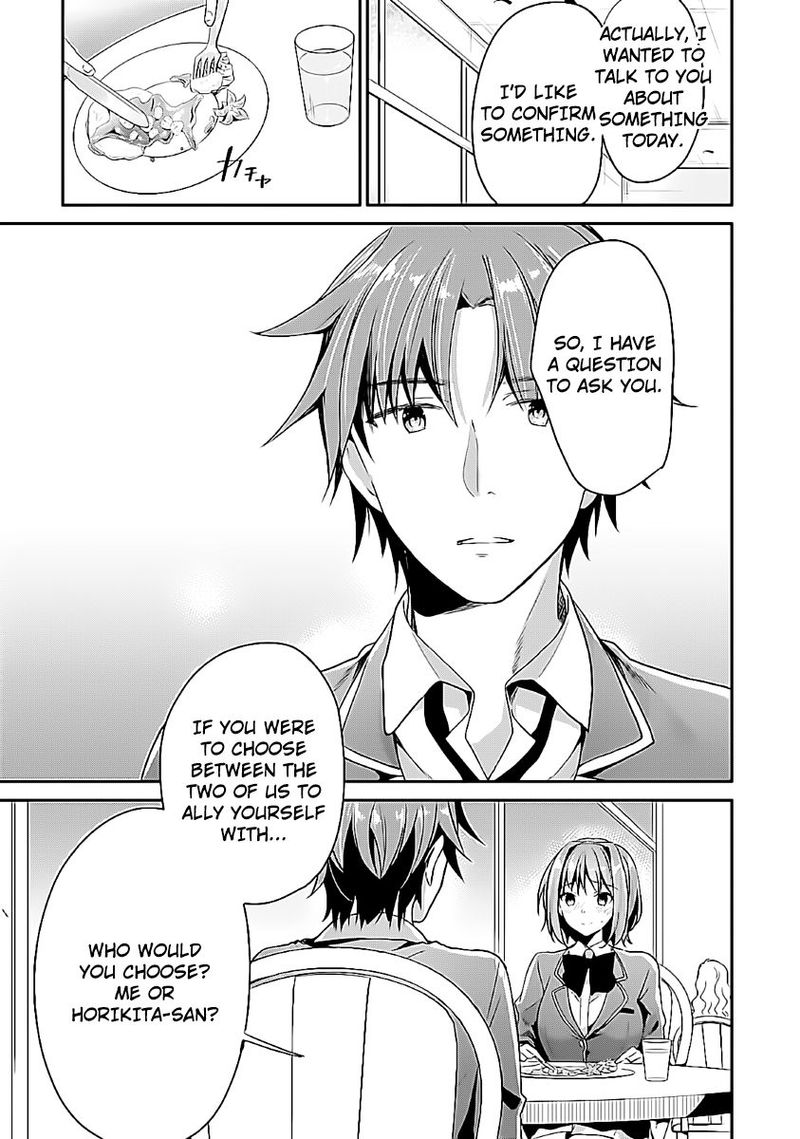
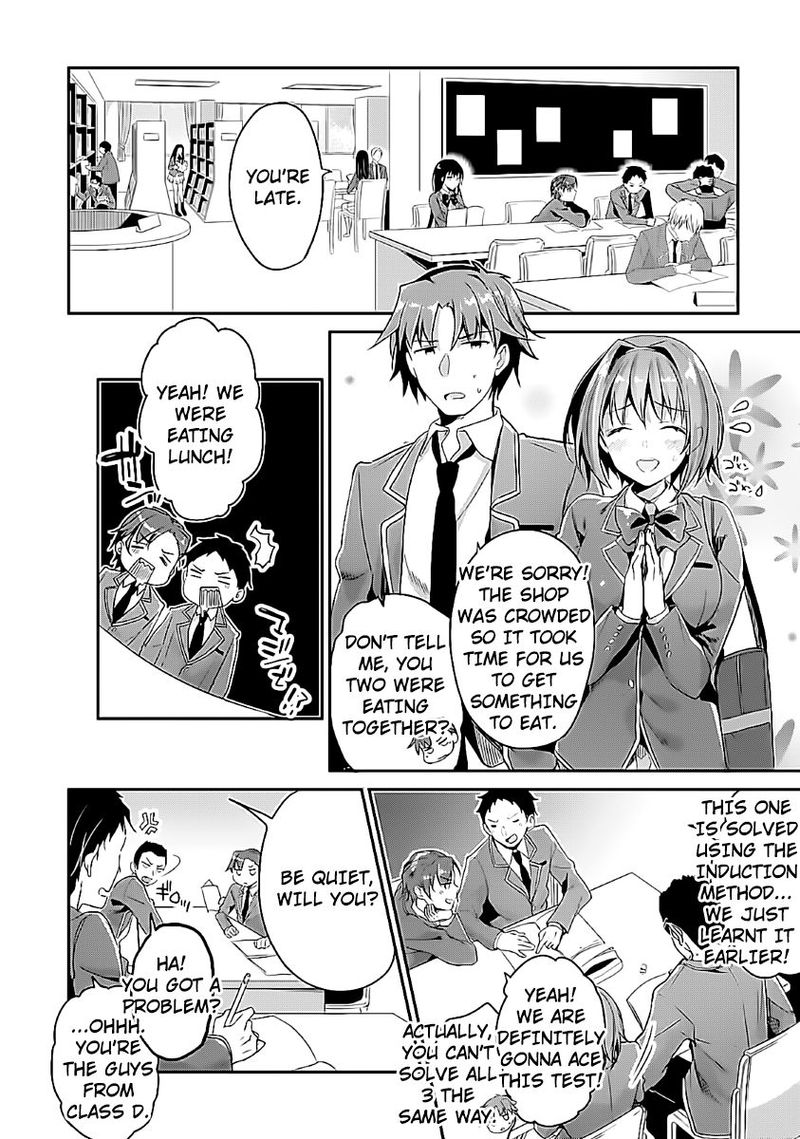
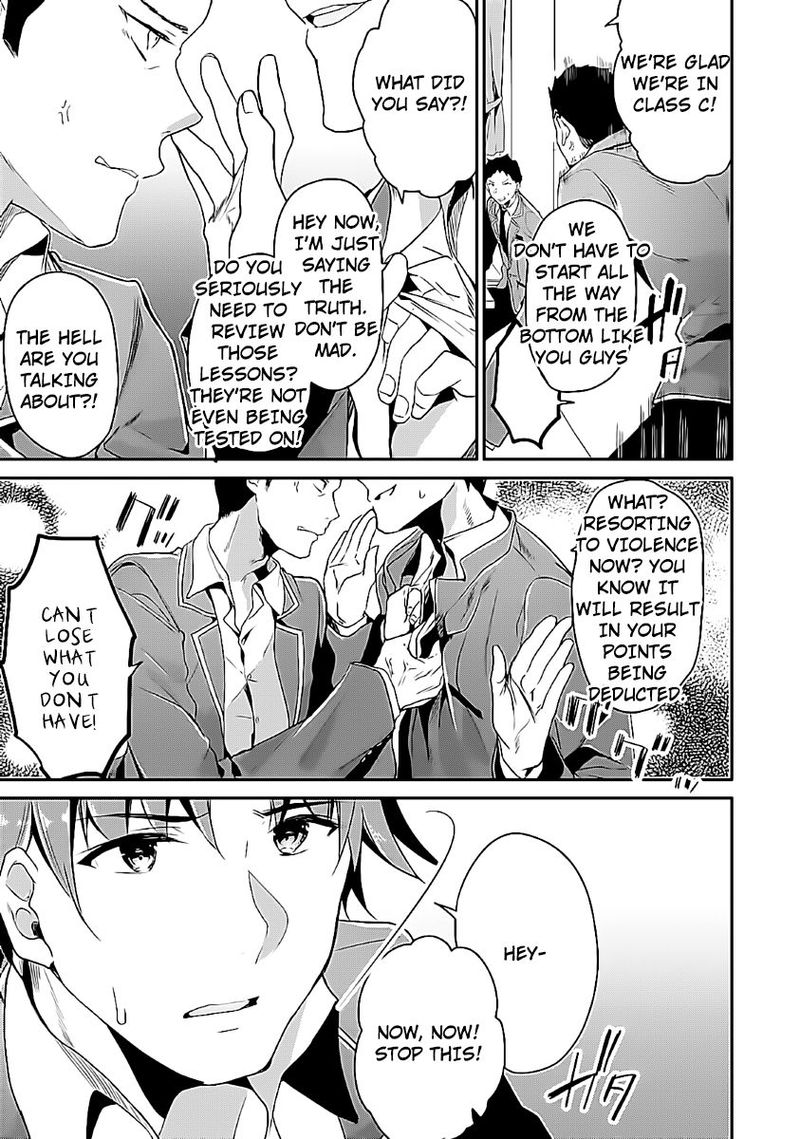
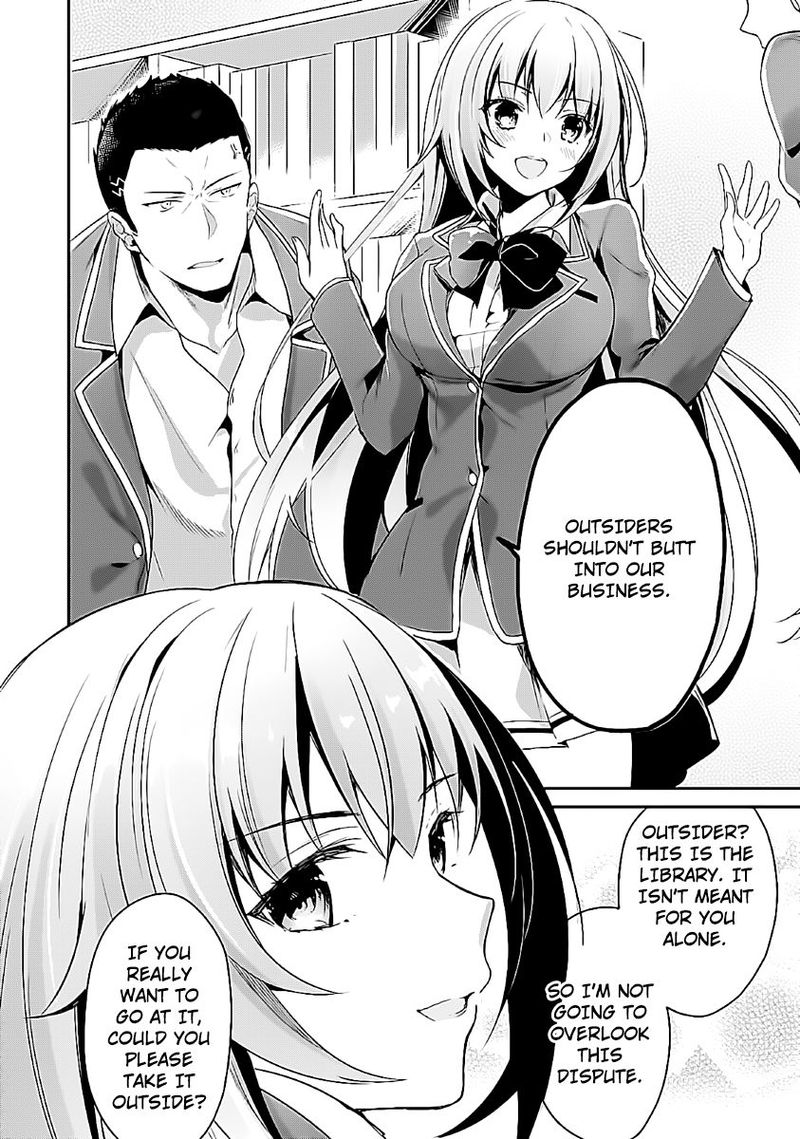
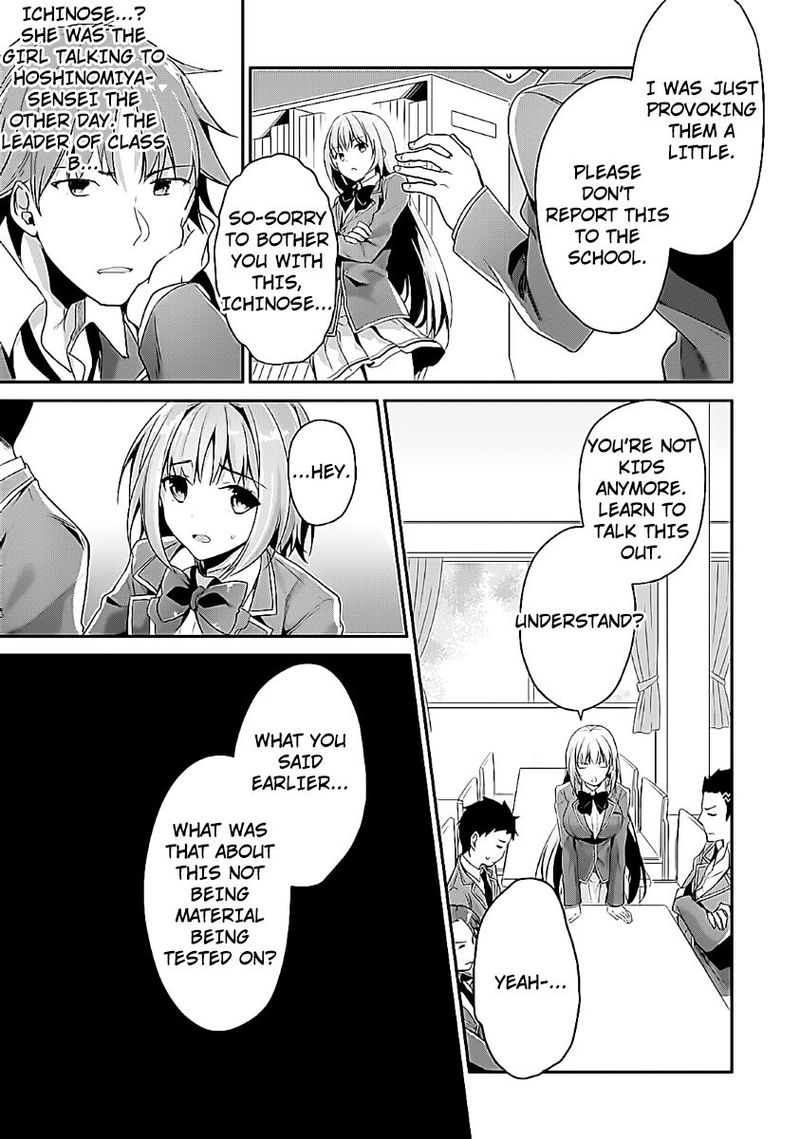
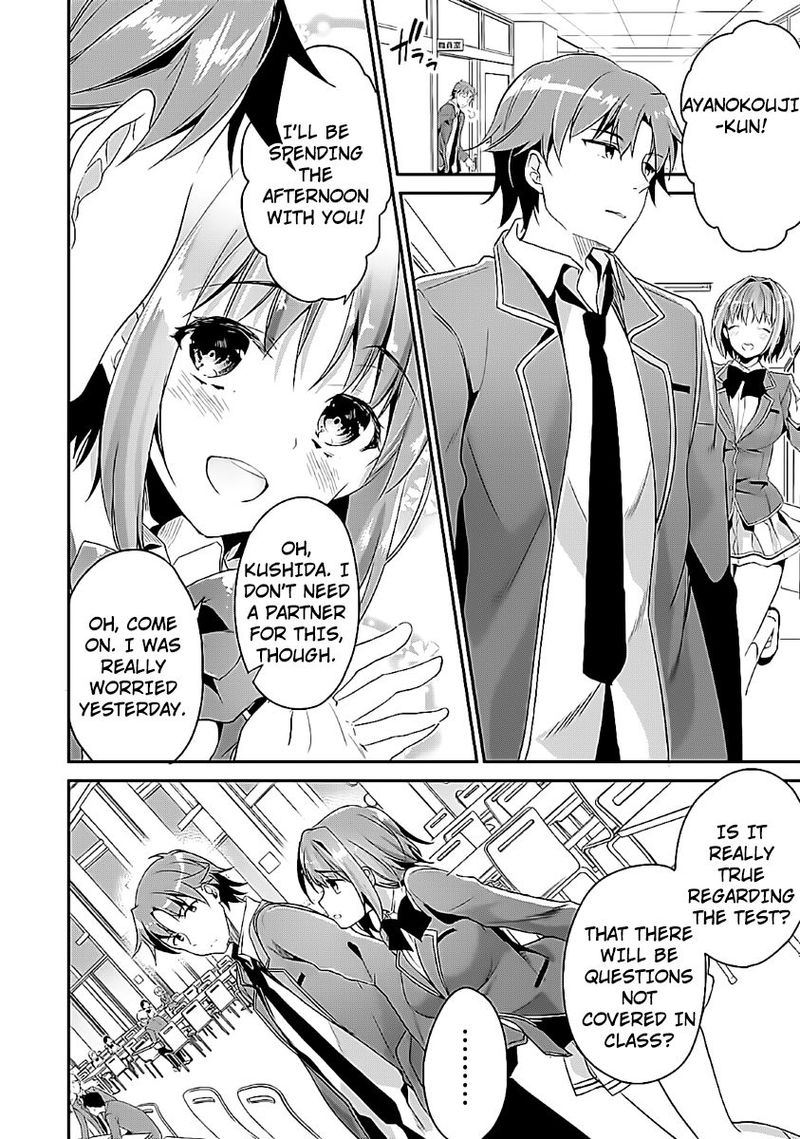
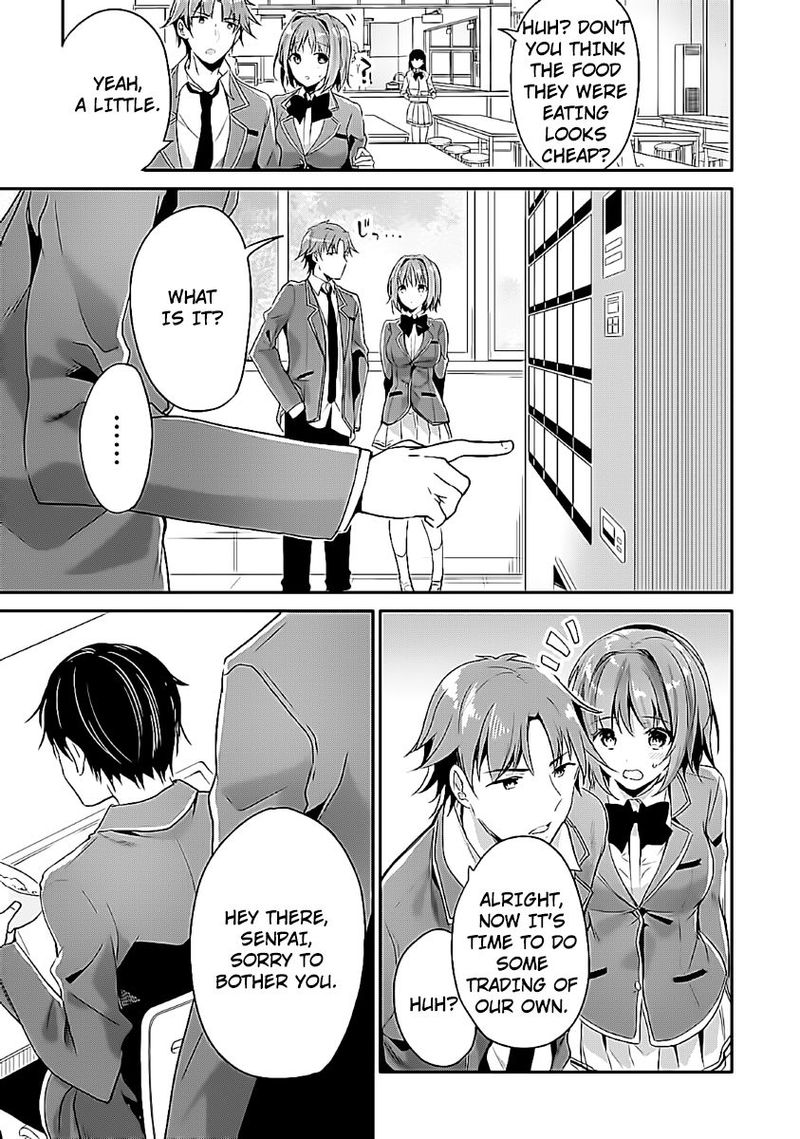
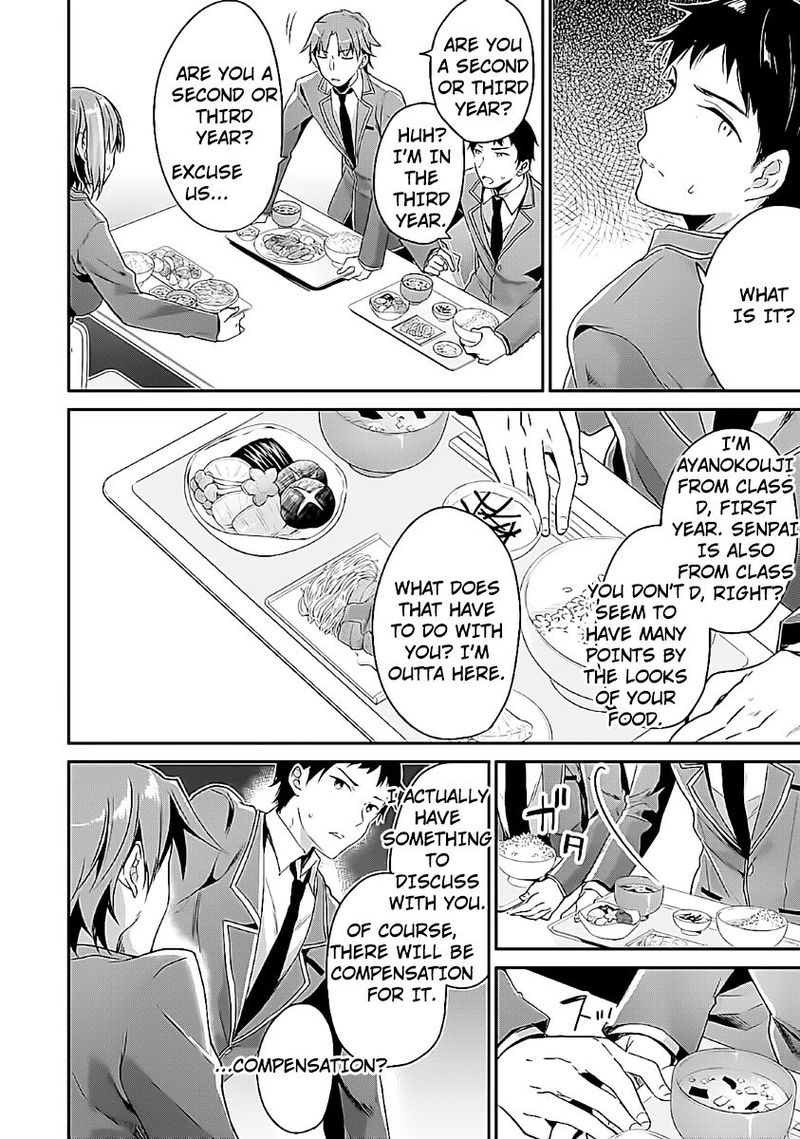
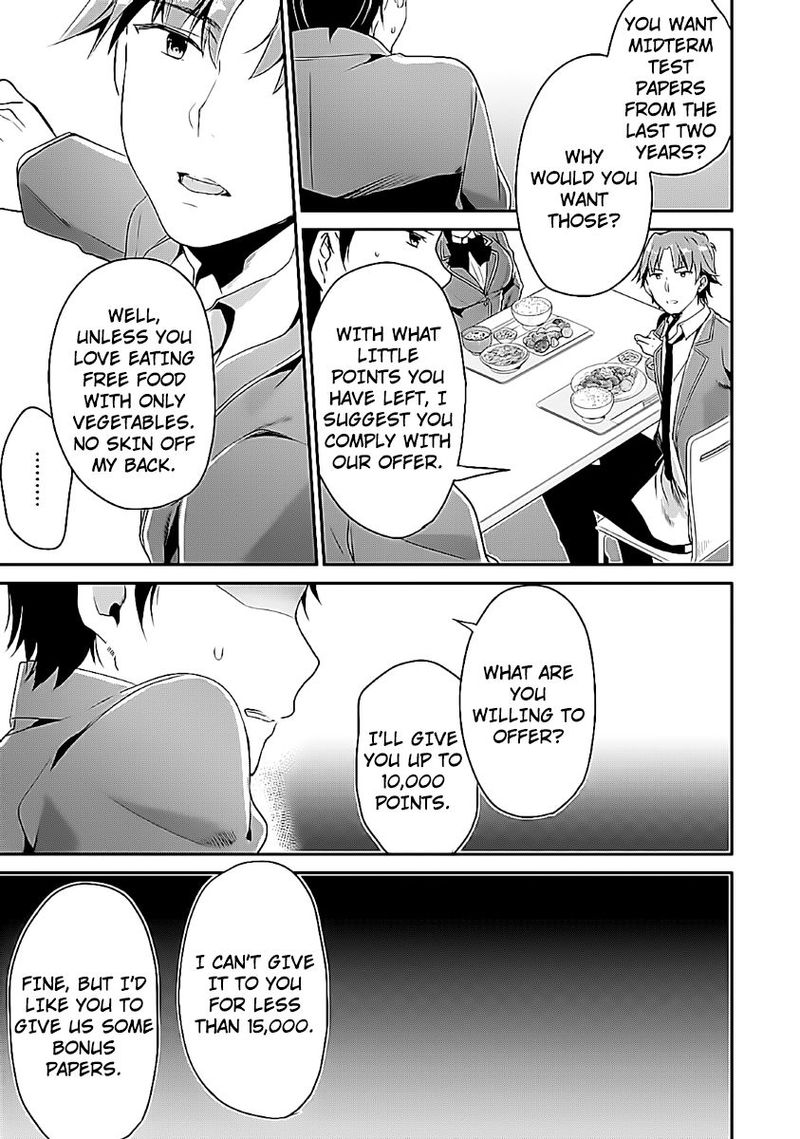
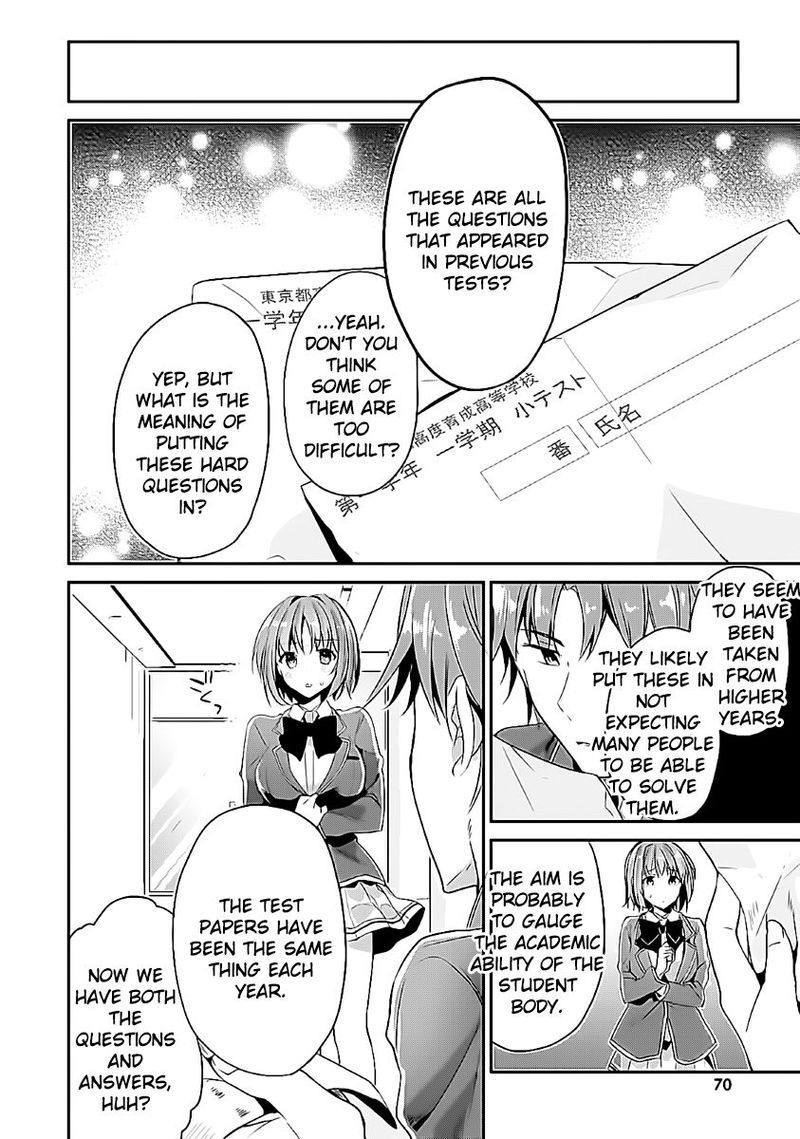
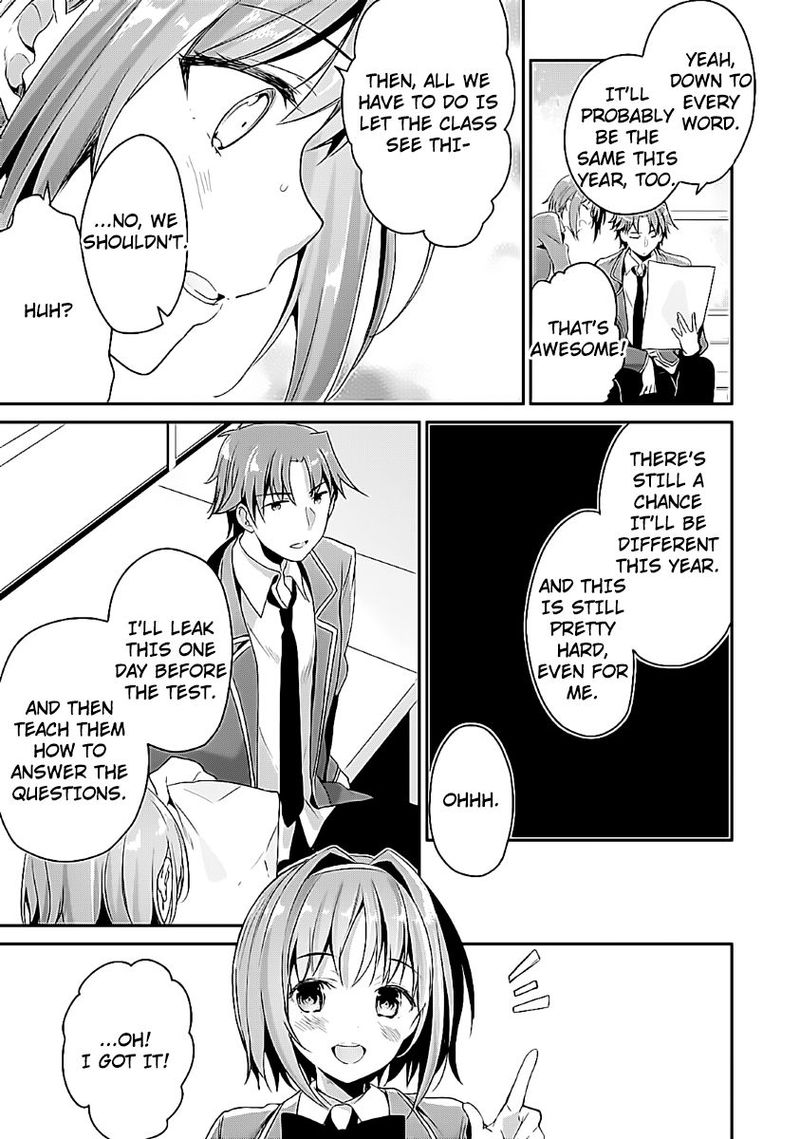
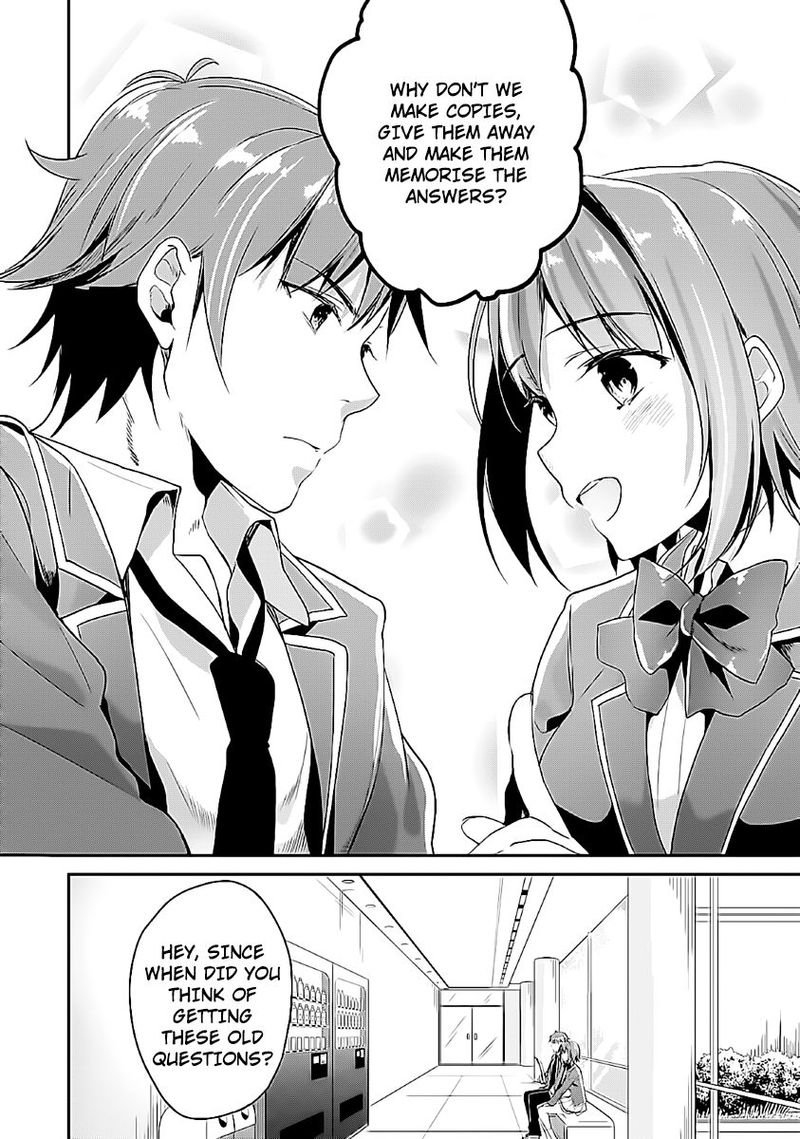
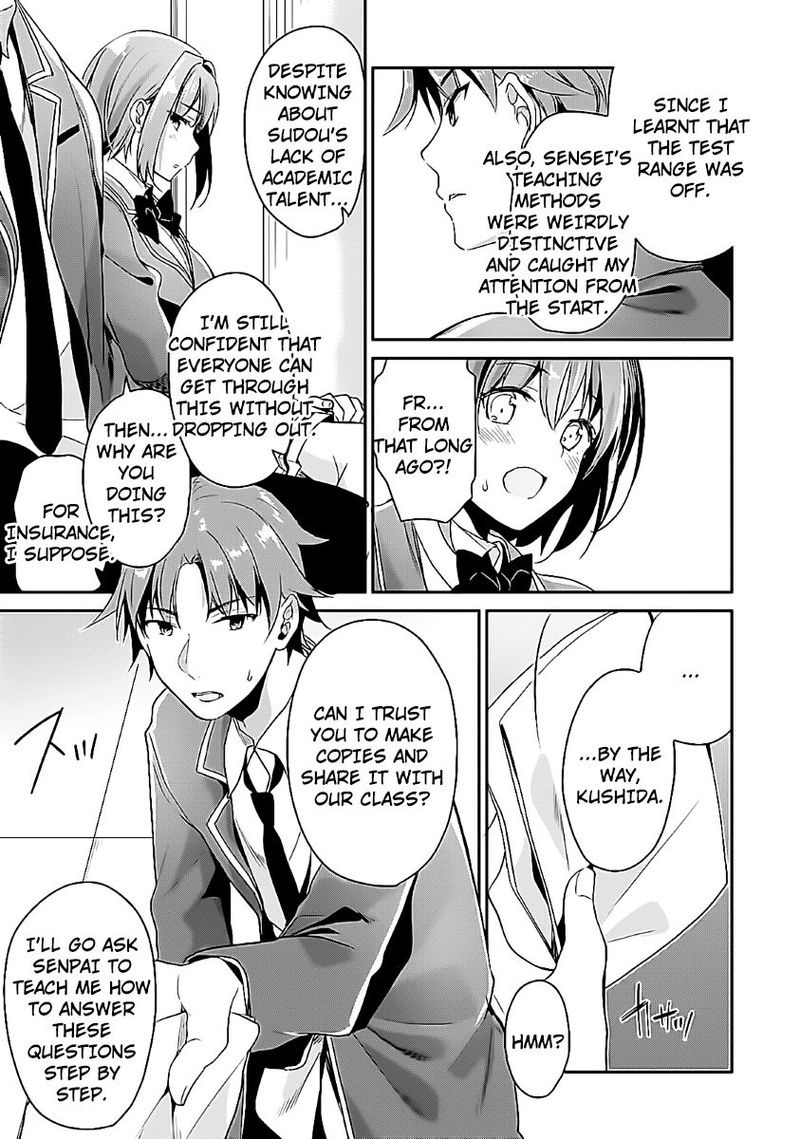
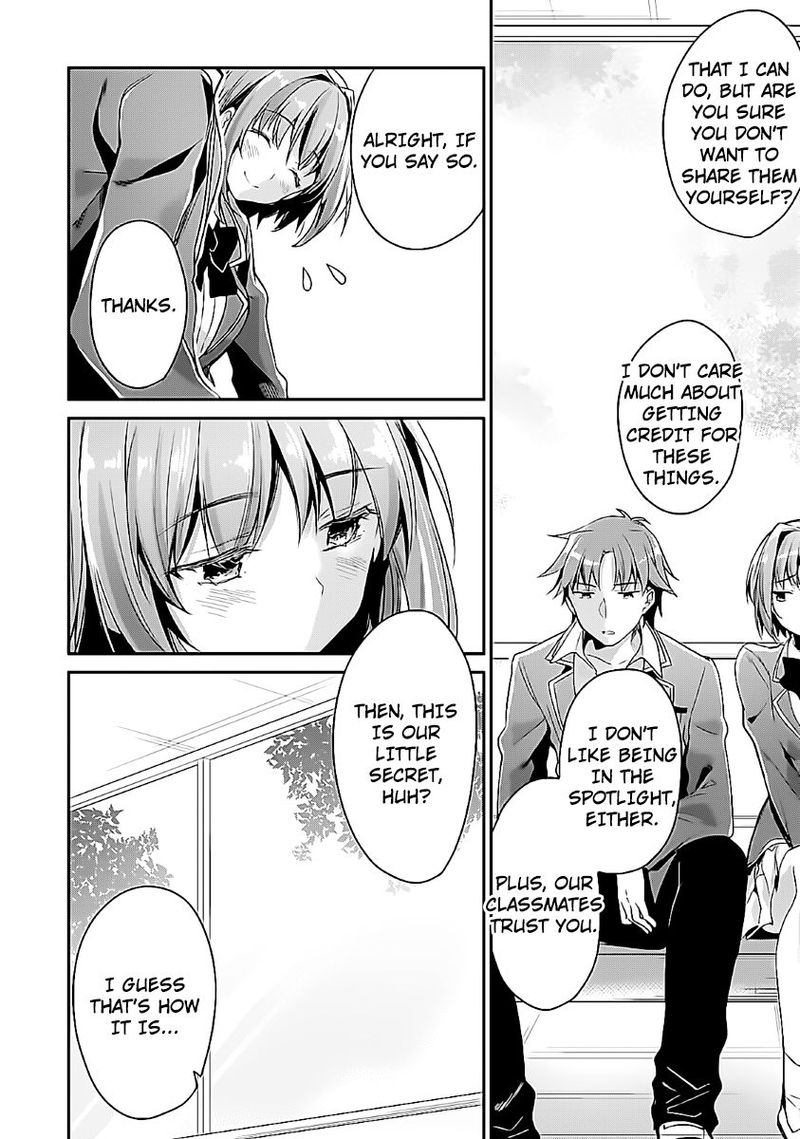
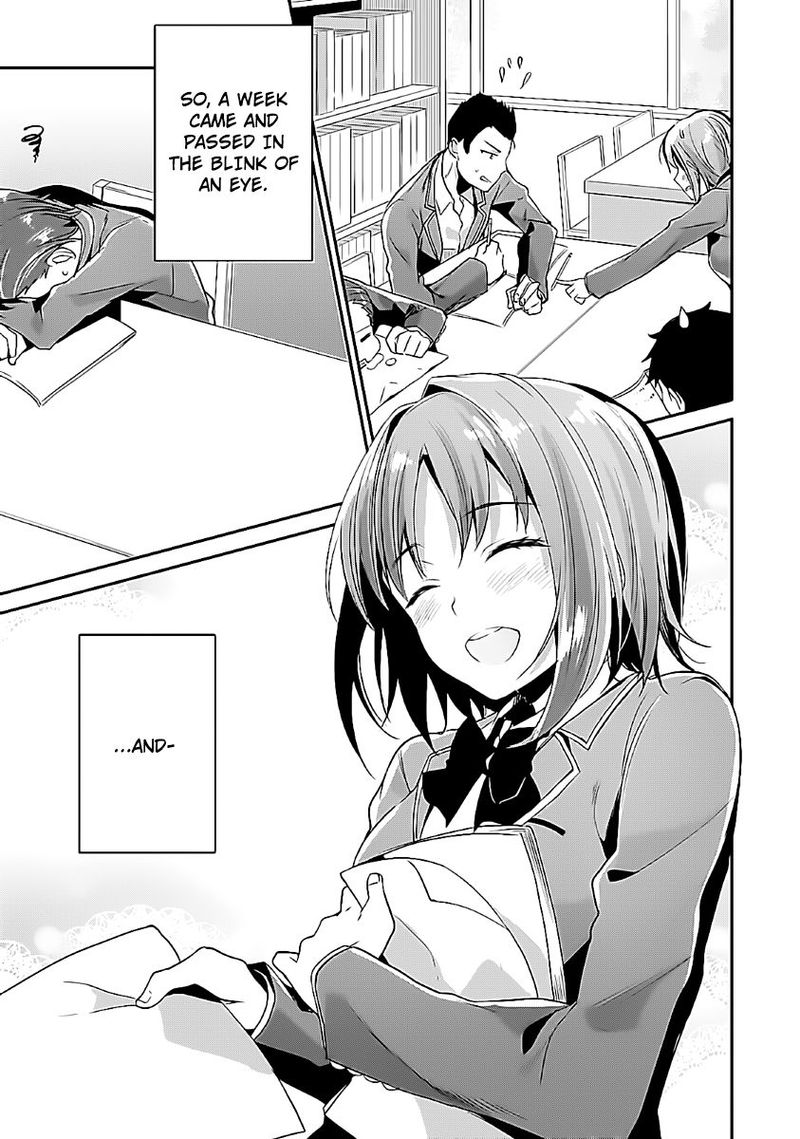
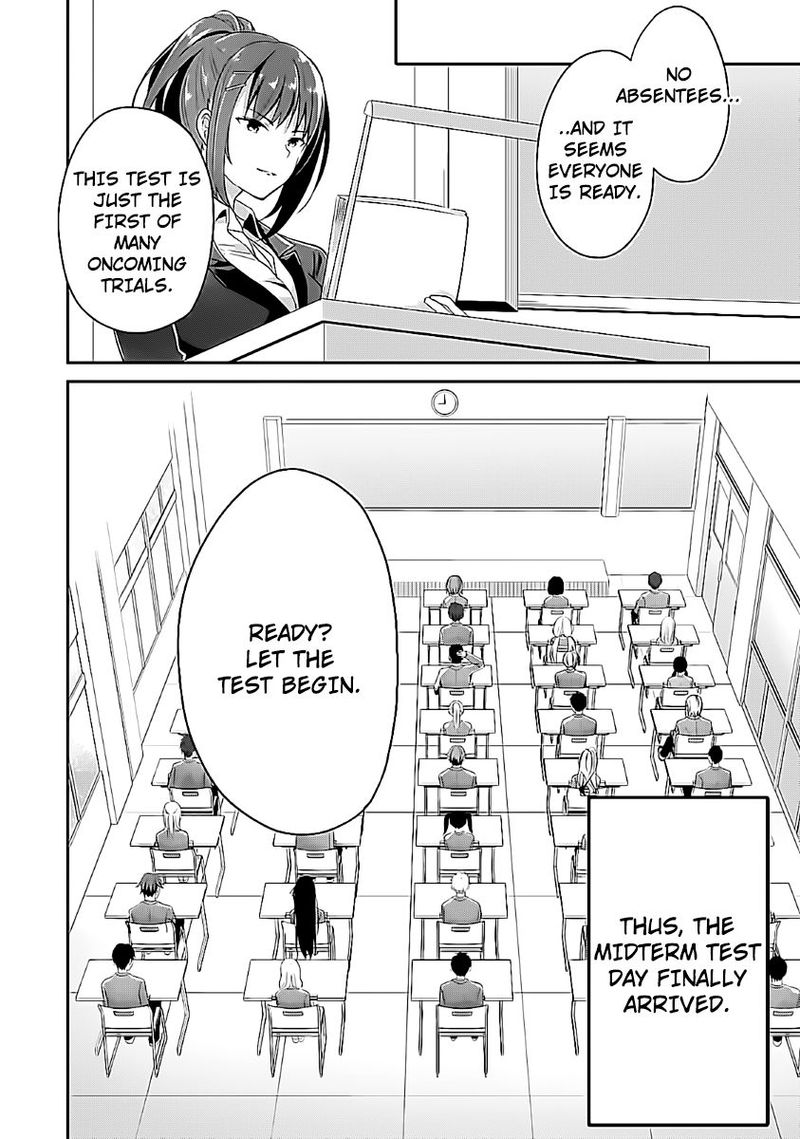
Chapter 7 Summary
The rain hammered the concrete courtyard of the Tokyo Metropolitan Advanced Nurturing High School, each drop echoing against the glass doors of the classroom where Class D huddled together. The atmosphere was thick with anticipation, the lingering scent of wet pavement mixing with the faint aroma of the cafeteria’s leftover curry. It was the day of the Survival Exam, a test that would determine not only grades but the very hierarchy within the school’s rigid system. The students of Class D, still reeling from the previous week’s chaotic group project, now faced a challenge that promised to expose every hidden strength and weakness.
Kiyotaka Ayanokouji sat at the back of the room, his posture unremarkable, his eyes half‑closed as if he were merely observing a passing cloud. Yet beneath that indifferent veneer lay a mind that processed each detail with surgical precision. He watched the clock on the wall tick down, the seconds slipping away like sand through an hourglass. When the instructor—a stern, silver‑haired woman named Ms. Sakuraba—raised her hand, the room fell into a hush that seemed to swallow the rain outside.
“Class D,” she began, her voice calm but edged with authority, “today’s Survival Exam will test your ability to cooperate under pressure, to prioritize resources, and to make decisions that affect the entire group. You will be given a set of tasks. Completion of each task will earn you points. The team with the highest total points will receive a bonus that can be applied to your final grade. Failure to cooperate will result in penalties.”
She placed a thick folder on the desk, its contents hidden from view. The folder was the key to the exam, a repository of clues, maps, and riddles that would guide the students through the day’s challenges. As she turned to leave, a faint smile flickered across her lips, as if she knew that the true test was not the tasks themselves but the dynamics that would unfold among the students.
Suzune Horikita, the class’s de facto leader, rose from her seat with a measured grace. Her dark hair was pulled back into a tight ponytail, her eyes sharp as a hawk’s. She scanned the room, taking note of each face, each posture, each flicker of anxiety. She had spent weeks cultivating a reputation for being cold, calculating, and unapproachable, but beneath that exterior lay a fierce determination to prove herself, to rise above the stigma of being in the lowest-ranked class.
“Listen up,” Horikita said, her voice cutting through the murmurs. “We need a clear plan. First, we’ll assign roles based on strengths. Ayanokouji, you’ll handle the analysis of the clues. Kushida, you’ll manage communication and morale. Kanzaki, you’ll take charge of the physical tasks. The rest of us will support where needed. No one deviates from the plan. Understood?”
Kikyo Kushida, the class’s social butterfly, smiled brightly, her eyes sparkling with a mixture of excitement and mischief. She had always been the one who could smooth over conflicts, who could turn a tense situation into a laughable anecdote. Yet she also possessed a keen intuition about people’s motives, a skill that often went unnoticed because of her bubbly demeanor.
“Got it, Horikita‑sen!” Kushida chirped, clapping her hands together. “I’ll keep everyone’s spirits up. And if anyone needs a pep talk, I’m your girl.”
Ryuuji Kanzaki, the athletic powerhouse of Class D, flexed his fingers, his muscles rippling under his school uniform. He had earned a reputation for being a lone wolf, preferring to solve problems through sheer force rather than collaboration. But today, he understood that his strength could be a vital asset if channeled correctly.
“Fine,” Kanzaki grunted. “Just tell me what to lift and I’ll do it.”
The group fell into a rhythm of rapid preparation. Ayanokouji slipped out of his seat, his movements almost invisible, and approached the folder. He opened it with a practiced flick, revealing a series of cryptic notes, a map of the school’s underground tunnels, and a list of items that needed to be retrieved: a red keycard, a sealed envelope, and a small wooden box. Each item was tied to a specific location within the sprawling campus, some accessible only through the labyrinthine maintenance corridors.
Horikita leaned over his shoulder, her eyes narrowing as she read the first clue: “The heart of the beast beats beneath the iron dragon.” She frowned, turning the phrase over in her mind. “Iron dragon… could that be the statue in the courtyard? The one that looks like a dragon made of steel?”
Kushida nodded, her mind already racing ahead. “If that’s the case, the heart must be the ventilation shaft behind it. We’ll need a ladder to reach it.”
Kanzaki raised an eyebrow. “We have a ladder?”
Horikita tapped her fingers against the desk, a faint smile playing at the corners of her mouth. “We’ll improvise. There’s a storage room on the third floor. I’ll send a couple of people to fetch it.”
Ayanokouji’s gaze lingered on the second clue: “The whispering winds carry the scent of jasmine, but only the brave will follow.” He turned to Kushida, his voice barely above a whisper. “Kushida, you have a way with people. Use your connections to find out where the jasmine scent is strongest. It might be the greenhouse.”
Kushida’s eyes lit up. “I know the greenhouse! It’s where the biology club keeps their experiments. I can talk to the club president, maybe get us a shortcut.”
The plan was set. Within minutes, the class split into three groups. Horikita, Ayanokouji, and a few others headed for the storage room to retrieve the ladder. Kushida, accompanied by a couple of quieter students, made their way toward the greenhouse. Kanzaki, with his usual confidence, took charge of the physical obstacles, ready to climb, lift, and push through any barrier.
The first task proved more challenging than anyone anticipated. The storage room was locked, its door secured with a biometric scanner that required a fingerprint. Horikita’s hand hovered over the scanner, her expression a mask of concentration. She tried her own fingerprint, but the scanner emitted a cold, metallic beep and denied access. She turned to Ayanokouji, who had been watching the scene with an unreadable expression.
“Do you have any ideas?” Horikita asked, her voice low.
Ayanokouji’s eyes flicked to the small metal plaque beside the scanner. He pressed his thumb lightly against it, and the scanner emitted a soft chime. “It’s calibrated for a specific blood type,” he murmured. “We need a match.”
Horikita’s mind raced. She remembered a rumor about a student in Class C who had a rare blood type, but that was a long shot. She glanced at the group, then at the quiet student standing near the door—Miyabi, a shy girl who rarely spoke. “Miyabi, can you try?” she asked.
Miyabi’s eyes widened, but she stepped forward, placing her hand on the scanner. The device whirred, then clicked open. The door swung inward, revealing a cramped space filled with cleaning supplies, spare chairs, and a sturdy metal ladder leaning against the wall.
“Good job,” Horikita said, a rare note of gratitude in her tone. “Let’s move quickly.”
Meanwhile, Kushida and her team slipped through the greenhouse’s glass doors, the scent of damp earth and blooming flowers enveloping them. The greenhouse was a riot of colors, rows of exotic plants, and the soft hum of insects. At its center stood a glass case containing a delicate orchid that emitted a faint jasmine fragrance. The biology club’s president, a lanky boy named Haru, was tending to the plants.
“Hey, Haru,” Kushida called, her voice bright. “We need a little help. The class is in a Survival Exam, and we have to retrieve something from the greenhouse. Could you point us to the nearest exit?”
Haru glanced up, his eyes narrowing as he recognized the seriousness in her tone. “Sure, but you’ll need to get past the security gate. It’s locked with a code. I think the code is the same as the one for the lab’s main door—something about the school’s founding year.”
Kushida’s mind raced. “Do you know the year?”
Haru scratched his head. “It’s 1995, right? The school was established then.”
Kushida nodded, her smile widening. “Thanks, Haru. We’ll be quick.”
She turned to her companions. “The code is 1995. Let’s head to the security gate.”
The gate was a heavy steel door with a keypad. Kushida entered the numbers, and the lock clicked open. Beyond the gate lay a narrow hallway that led to a small storage closet. Inside, they found a sealed envelope marked with a red wax seal. The envelope felt heavy, as if it contained something of great importance.
Back in the courtyard, Kanzaki and his group approached the iron dragon statue. The massive metal sculpture loomed over the students, its wings spread wide, its eyes glinting in the rain. The base of the statue was a solid slab of steel, but a faint seam ran along its side, hinting at a hidden compartment.
“Looks like we need to pry this open,” Kanzaki said, flexing his forearms. He lifted a nearby metal pipe, using it as a lever. With a grunt, he applied pressure to the seam. The metal groaned, then gave way, revealing a narrow opening that led to a cramped tunnel.
Inside the tunnel, the air was cold and stale. Kanzaki’s flashlight illuminated a set of stairs that descended into darkness. He called out, “Anyone down here?”
Ayanokouji’s voice echoed from the other end of the courtyard. “I’m coming.”
The two met at the bottom of the stairs, where a small wooden box lay on a stone pedestal. The box was intricately carved, its surface etched with symbols that seemed to shift when viewed from different angles. Ayanokouji examined it closely, his fingers tracing the patterns.
“This is the third item,” he said softly. “It’s likely the key to the final challenge.”
Kanzaki lifted the box, his muscles straining under its weight. “Let’s get it back up.”
The group reconvened at the courtyard, each carrying their respective items: the ladder, the sealed envelope, and the wooden box. Horikita stood at the center, her eyes scanning the items, her mind already calculating the points they would earn.
“Now,” she said, “we need to present these to Ms. Sakuraba. But there’s a twist. The exam isn’t over yet. We have to solve the final puzzle to unlock the bonus points.”
She placed the items on the table, arranging them in a specific order: the ladder first, then the envelope, and finally the wooden box. The three items formed a triangle, each point representing a different aspect of the exam—physical, intellectual, and emotional.
Ayanokouji stepped forward, his voice calm. “The clues we found all point to a common theme: balance. The ladder represents ascent, the envelope holds secrets, and the box contains the unknown. To unlock the bonus, we must align these elements with the school’s motto: ‘Unity through Diversity.’”
Horikita frowned, trying to piece together the meaning. “So we need to… combine them?”
Kushida’s eyes lit up. “What if we place the ladder against the wall, the envelope on the floor, and the box on the ladder’s top? That would create a vertical line, symbolizing a path from the ground up, with the envelope as the foundation and the box as the pinnacle.”
Kanzaki nodded. “It makes sense. It shows progression.”
They arranged the items as suggested. As the final piece—the wooden box—settled atop the ladder, a soft chime resonated through the courtyard. A hidden compartment in the floor beneath the ladder opened, revealing a small, glowing crystal. The crystal pulsed with a gentle light, casting a warm hue over the students’ faces.
Ms. Sakuraba appeared from the shadows, her silver hair glistening with droplets of rain. “Well done, Class D,” she said, her voice carrying a hint of approval. “You have demonstrated cooperation, strategic thinking, and the ability to adapt under pressure. This crystal represents the bonus points you have earned. Use it wisely.”
The crystal floated into Horikita’s hands, its light reflecting in her eyes. She felt a surge of confidence, a rare feeling of being recognized for her leadership. For the first time, she allowed herself a small smile.
Ayanokouji, however, remained stoic, his expression unchanged. Yet inside, a faint ripple of satisfaction passed through him. He had observed the dynamics, guided the group subtly, and ensured that each member’s strengths were utilized. The exam had been a test of more than just physical endurance; it was a test of the hidden bonds that tied the class together.
As the rain began to subside, the students gathered under the shelter of the courtyard’s overhang, the crystal’s glow illuminating their faces. Kushida turned to the group, her voice light but earnest.
“Looks like we actually pulled this off. Not bad for a class that’s always at the bottom of the rankings.”
Kanzaki chuckled, flexing his arms. “Yeah, who would’ve thought we could work together?”
Horikita, still holding the crystal, glanced at each of her classmates. “We still have a long way to go, but today we proved that we can rise above our label. Let’s keep this momentum.”
Ayanokouji slipped his hand into his pocket, feeling the faint outline of a small, worn notebook. He opened it, flipping to a page where he had scribbled a single line: “Balance is the key.” He closed the notebook, his eyes meeting Horikita’s for a brief moment. In that glance, an unspoken understanding passed between them—a recognition that the true battle was not against other classes, but against the expectations that the school’s system imposed upon them.
The day’s events would soon become the subject of heated discussion among the students. Rumors spread through the hallways, whispers of the “Survival Exam” and the “bonus crystal” reaching the ears of Class A and Class B. Online forums buzzed with speculation, fans searching for a Chapter 7 summary, dissecting each moment for hidden meanings. Some posted scans of the exam’s clues, while others debated the significance of the crystal in the context of the school’s philosophy. A handful of students even tried to read Classroom Of The Elite chapter 7 online, hoping to catch a glimpse of the next twist.
In the weeks that followed, the impact of the exam rippled through the school’s hierarchy. The points earned gave Class D a modest boost in the ranking, enough to secure a better classroom and a slightly larger budget for supplies. More importantly, the experience forged a fragile but genuine camaraderie among its members. Horikita found herself relying more on Kushida’s social insight, while Kanzaki began to appreciate the value of strategic planning over brute force. Ayanokouji, ever the enigma, continued to observe, his mind cataloguing each interaction, each shift in the group’s dynamics.
Yet beneath the surface, a deeper plot twist lingered. The crystal, while a symbol of the class’s success, also held a secret that only Ayanokouji seemed to sense. Late at night, when the dormitory lights dimmed and the corridors fell silent, he would sit by the window, the crystal’s glow casting shadows on the floor. He traced the faint etchings on its surface, noticing a pattern that resembled the same symbols he had seen on the wooden box earlier. It was as if the exam’s designers had embedded a larger puzzle within the seemingly simple tasks.
Ayanokouji’s thoughts drifted to the phrase he had seen on the envelope: “The whispering winds carry the scent of jasmine, but only the brave will follow.” He wondered if the jasmine scent was more than a literal reference to the greenhouse. Perhaps it was a metaphor for a hidden truth, a scent that could guide those willing to seek it. He recalled the red keycard he had glimpsed in the storage room, a key that had been left untouched. The keycard, the envelope, the wooden box—each piece seemed to be a fragment of a larger mechanism.
One evening, as the rain returned, this time in a gentle drizzle, Ayanokouji slipped out of his dormitory and made his way to the maintenance tunnels beneath the school. The tunnels were dimly lit, the walls lined with pipes that hissed softly. He followed the map he had memorized from the exam’s clues, his steps silent on the cold concrete. At the end of a narrow passage, he found a small, locked door marked with the same emblem that adorned the wooden box.
He inserted the red keycard he had retrieved earlier, the lock clicking open with a soft whirr. Inside, a cramped room held a single pedestal, upon which rested a thick, leather‑bound book. The book’s cover bore the school’s crest, but the title was hidden beneath a layer of dust. Ayanokouji brushed it away, revealing the words: “The True Test.”
He opened the book, its pages filled with handwritten notes, diagrams, and cryptic symbols. The entries described a series of experiments conducted by the school’s
